Wahweap RV, Lake Powell Marina, Page Arizona
Do not gaze at wine when it is red, when it sparkles in the cup, when it goes down smoothly! In the end it bites like a snake and poisons like a viper. ~ Proverbs 23:31-32
We took a drive and conquered a huge mountain today! It was an hour, very scenic drive to an area called Lees Ferry.
The drive views were spectacular, as we drove the same route (at least for a while) that we’ll be taking when we move in a few days. That being the case, I didn’t take as many road pictures as I would have. Gotta save something for moving day. 😊

We began with a clean windshield – Blaine washed it before we left – but then we drove through hoards of gnats, and, well, there were too many for me to “fix” in my pictures. : (
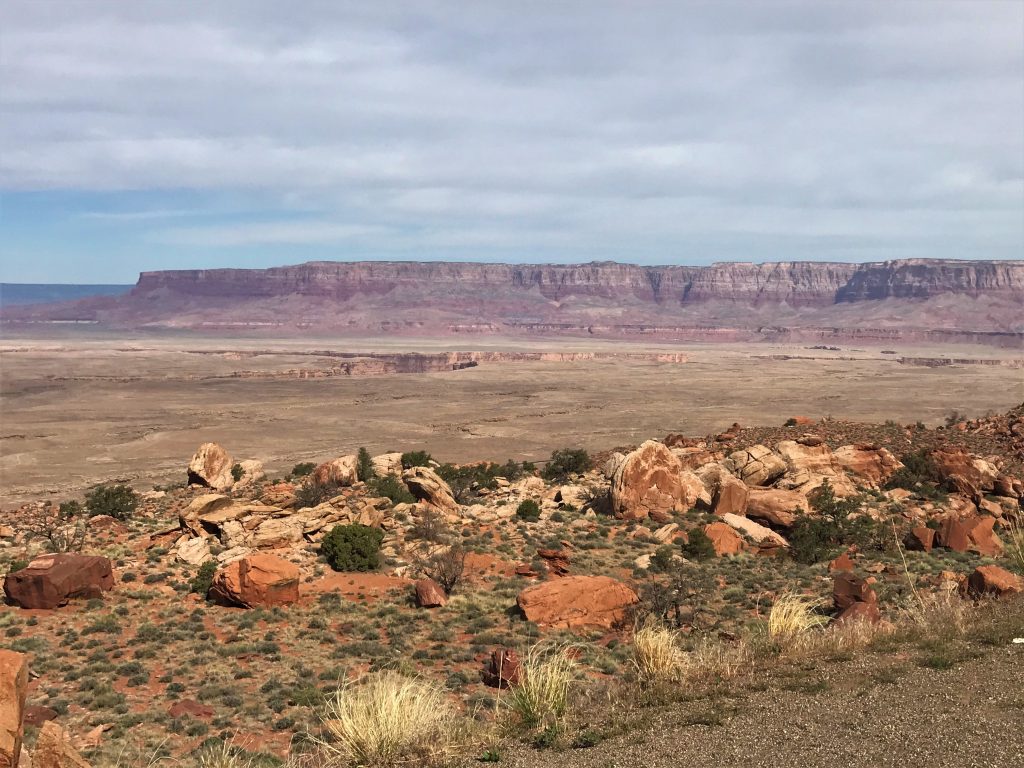
No gray spots. : )

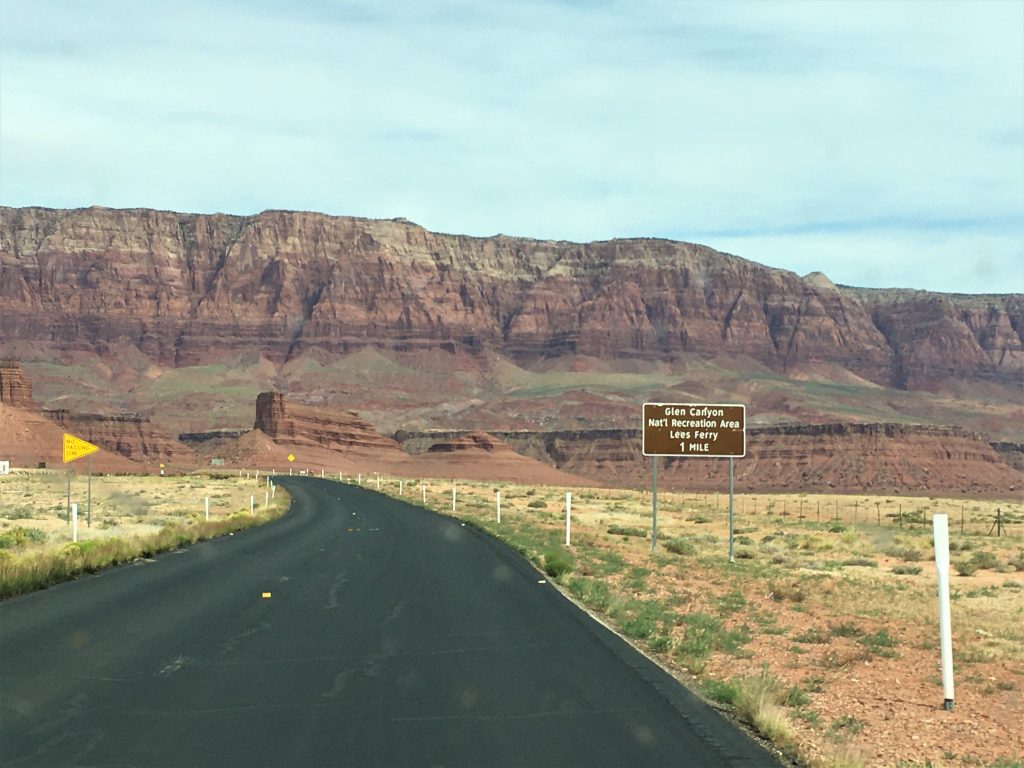
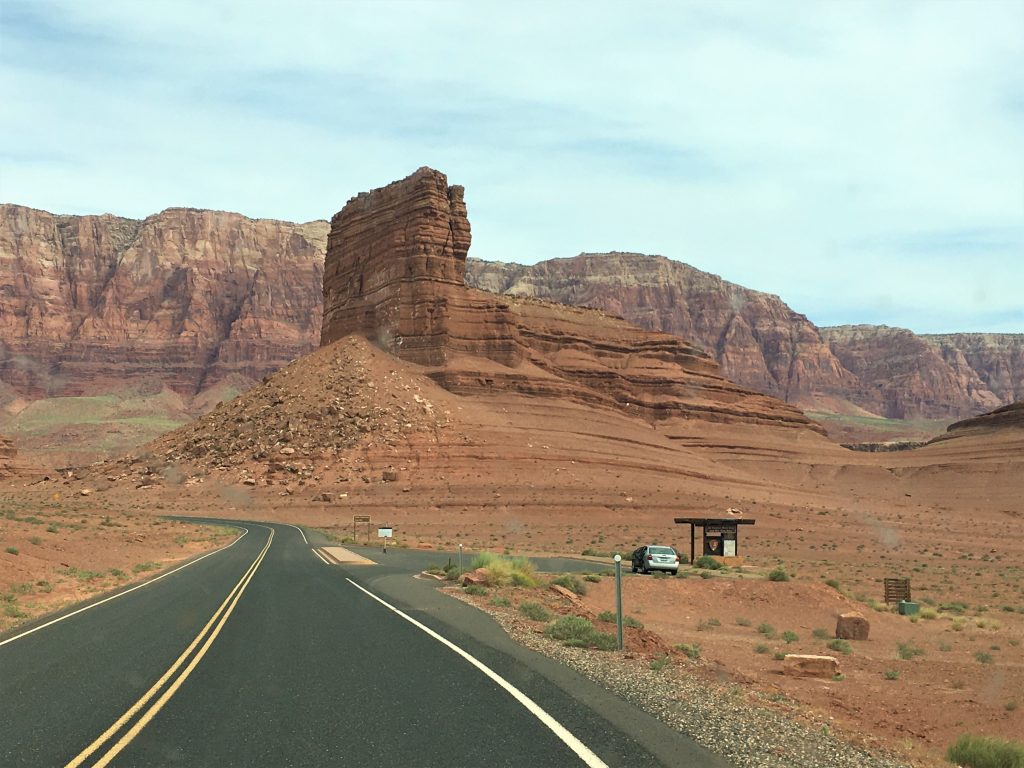
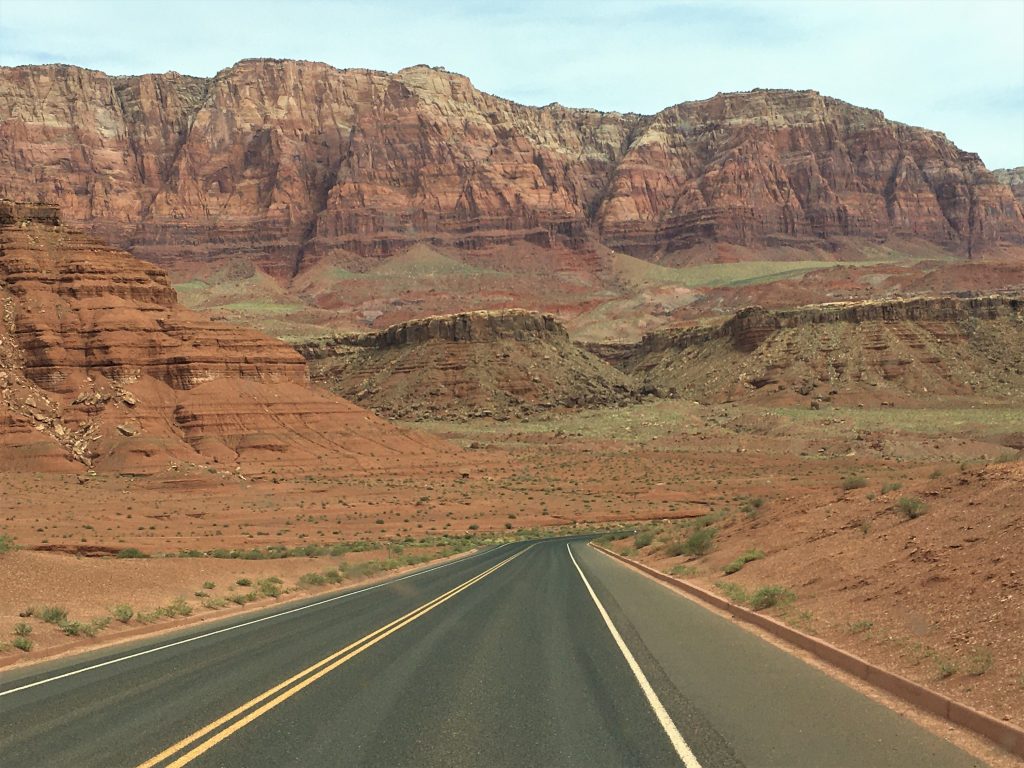

Upon arrival, we discovered that there were some information boards around containing history of the area, but we didn’t take the time to read them. We needed to get started before the heat of the day became crippling.
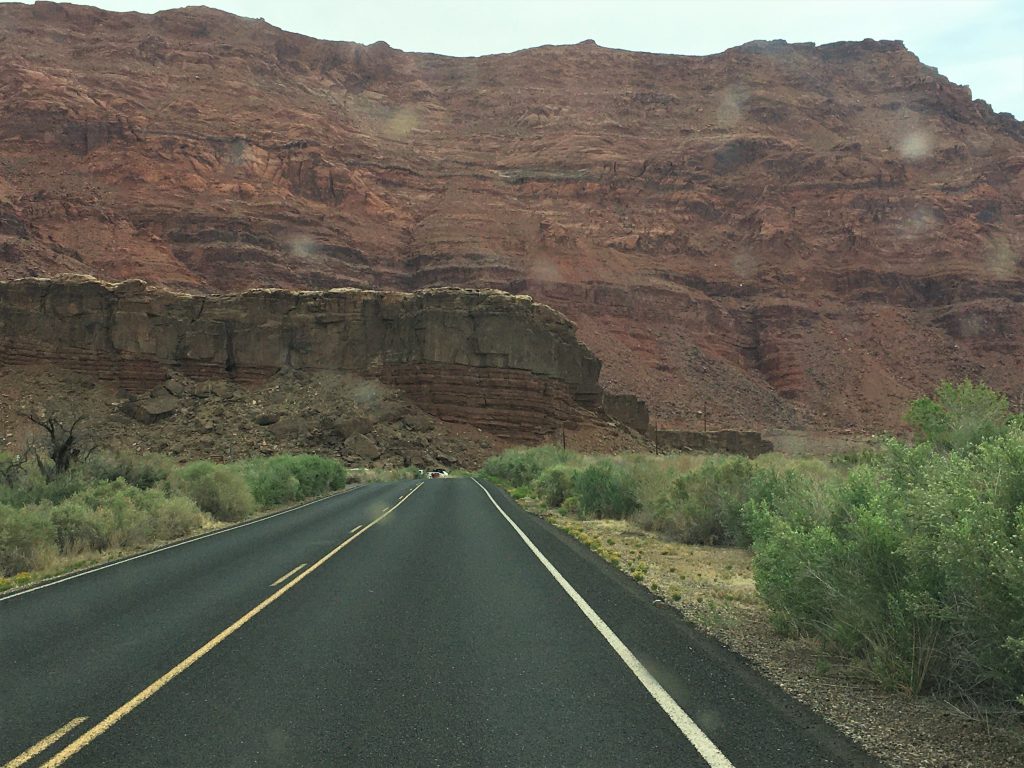
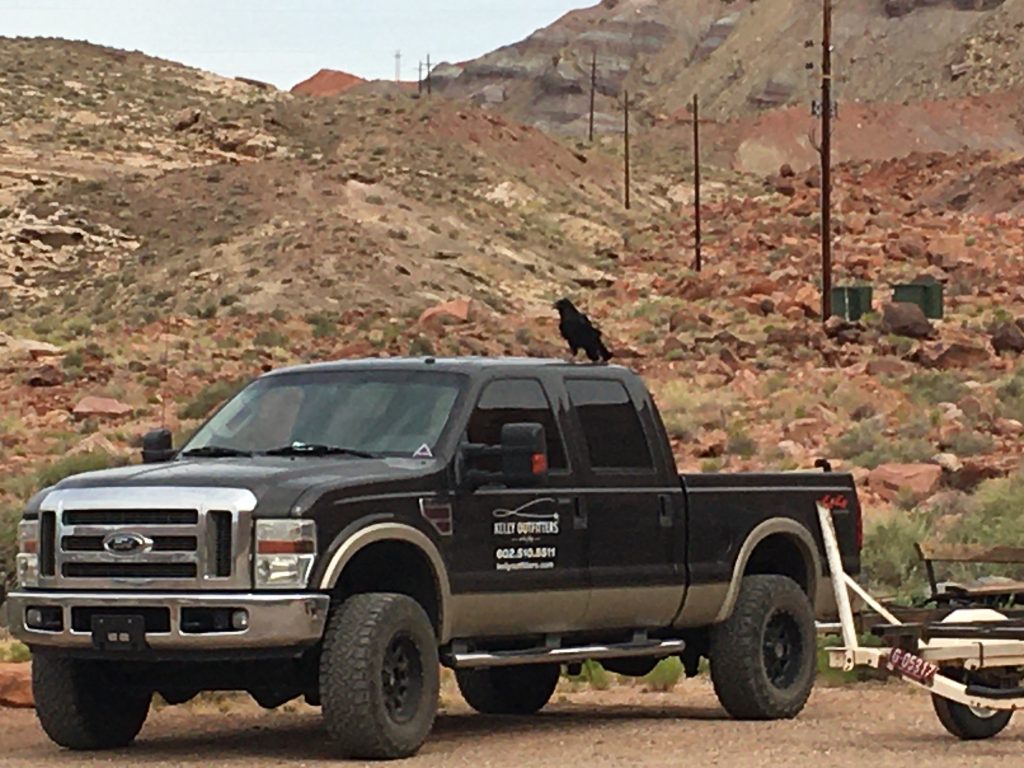
Bet they’re used to finding unattended food around here. : )
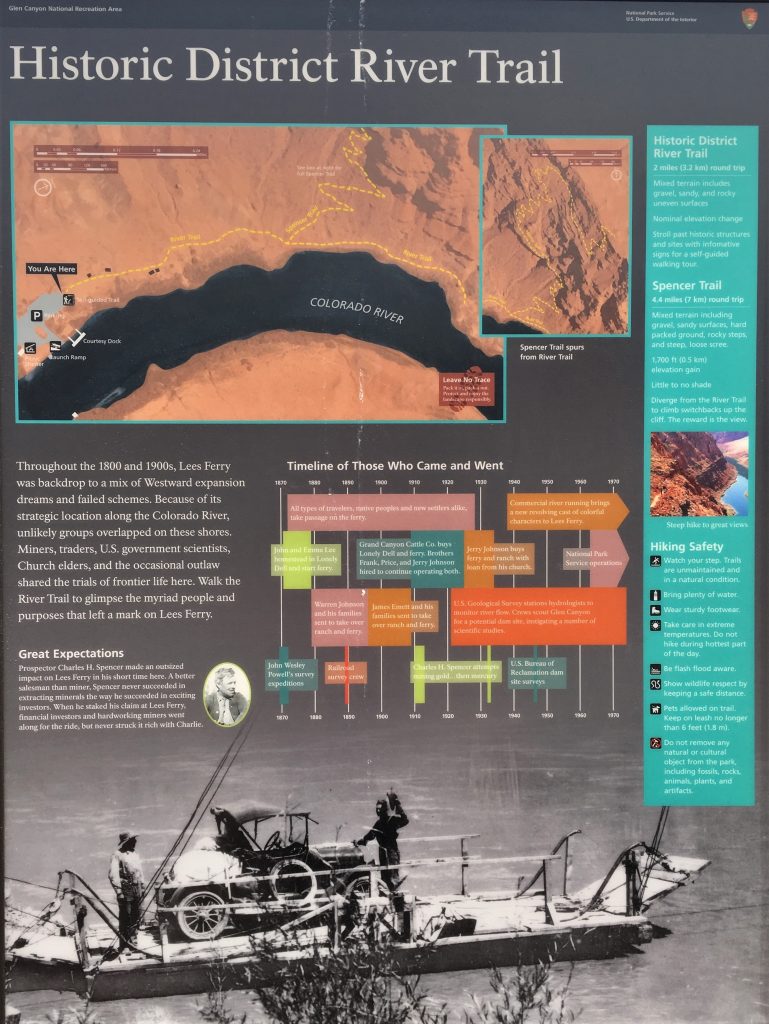
Spencer trail is just under 2 miles (most of it up the side of the mountain) with an elevation gain of 1,641-feet. Needless to say, there were a large number of switchbacks. And because it went up the side of the mountain, instead of around it, it allowed us constant views of the Colorado River and Vermillion Cliffs National Monument, which were, in an inadequate word, spectacular. And the Jeep never left our line of sight until we reached the top (4,711’ above sea level) and walked to the other side. First time that’s ever happened! 😊
This is what the Lake Powell Visitor Guide had to say about Vermillion Cliffs:
There are only 50 ways to leave your lover, but Vermillion ways to enjoy the spectacular beauty around Page, Arizona.
Mother Nature spent eons working her magic on the colorful sandstone of Vermillion Cliffs National Monument, etching myriad configurations – fantastic in appearance and implausible in their variety. An aura of mystery surrounds the remote wilderness and its scenery has become famous worldwide.
One visitor described it as “the most magical spot on Earth.” You probably won’t find a game of Quiddich there, but the enjoyment of nature’s wonders is limited only by your imagination.
The elevations in the area range from 3,100’ to a breathtaking 6,500’ above sea level. Vermillion Cliffs is a rugged 3,000-foot-tall sand escarpment, among the world’s rarest geological features. It also boasts a plethora of wildlife, from desert sheep to pronghorns to nearly two dozen raptor species – including the endangered California Condors which have been reintroduced to the area. The rare birds were brought back to the region in 1996, marking the first condors to fly through the Arizona skies since 1924.
Anyone who’s spent any time reading our blog, should know by now that we don’t believe in giving credit to the mystical “Mother Nature”, except when it comes to butter commercials. (Those of you the right age will surely remember that “It’s not nice to fool Mother Nature!” 😊) It’s all attributed to God’s creativity and power. But ya gotta love the way the author of this Visitor Guide writes! At least, I do. No credit is listed in the magazine.
We took a ton of pictures of our hike today, but an epic journey deserves massive amounts of documentation; so enjoy the breathtaking hike – -both physically and esthetically – – even if only from your favorite lounging spot.
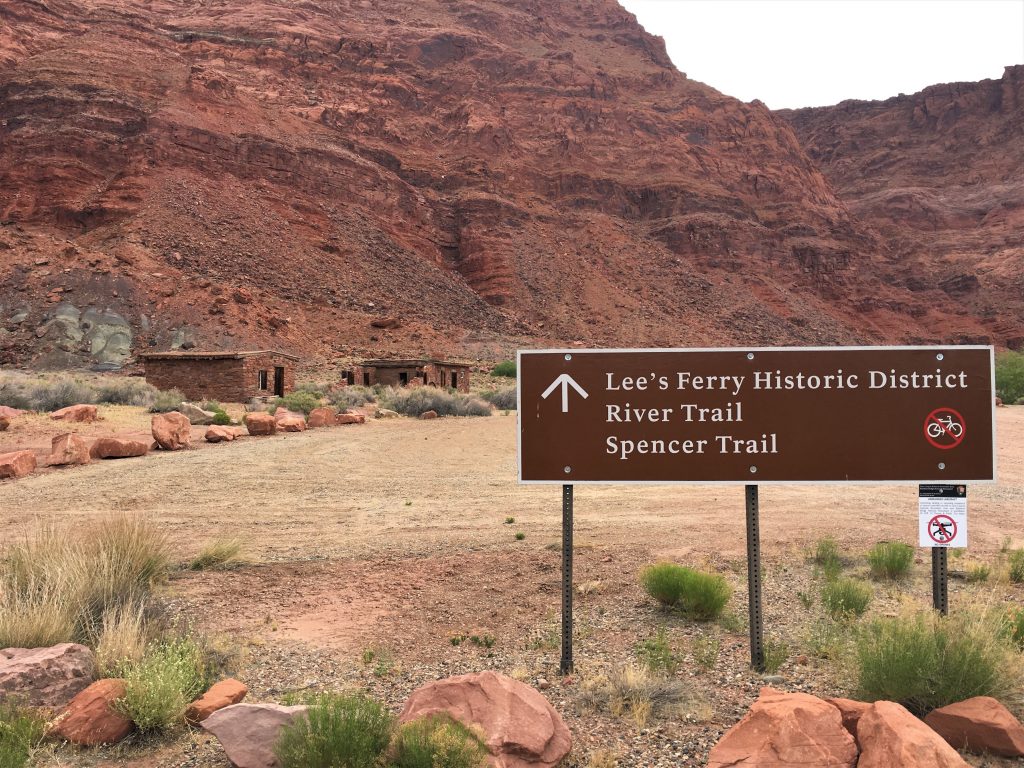
There are old buildings and information boards along here, but we’ll wait.
We need to get started before it gets too hot.
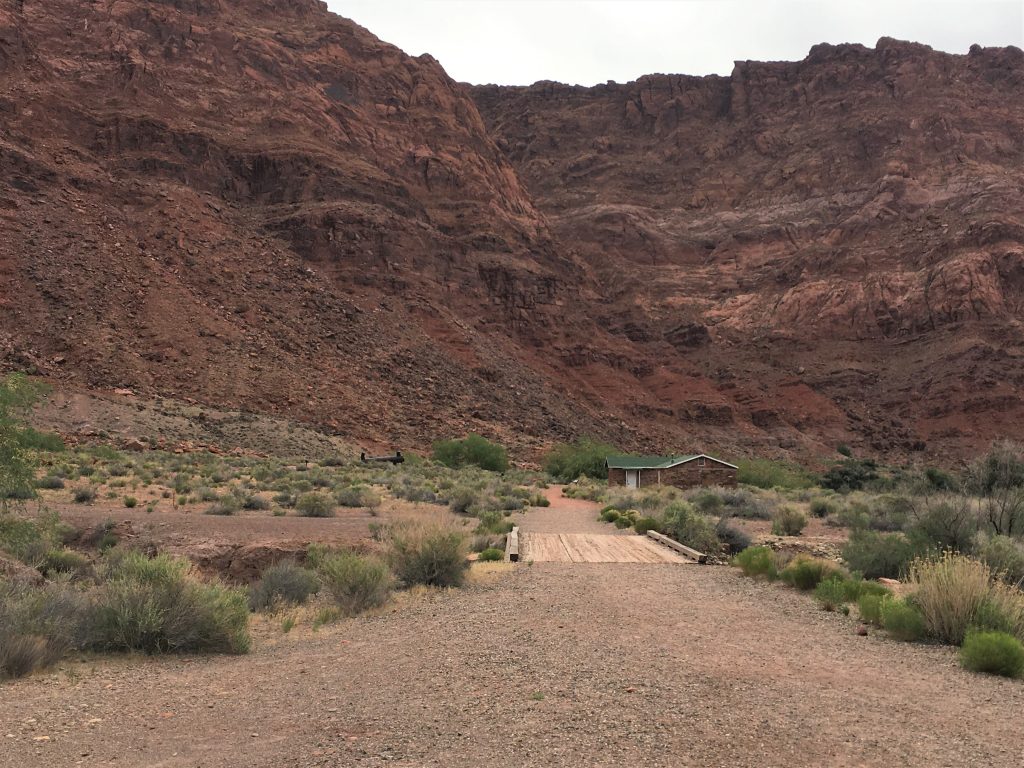
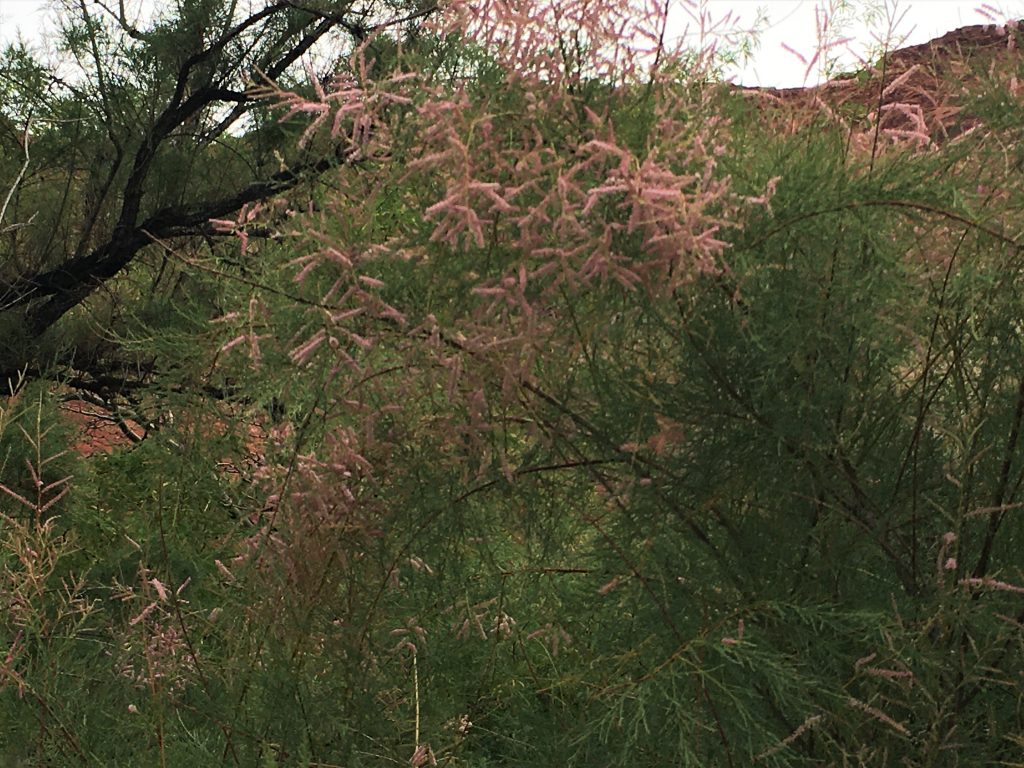
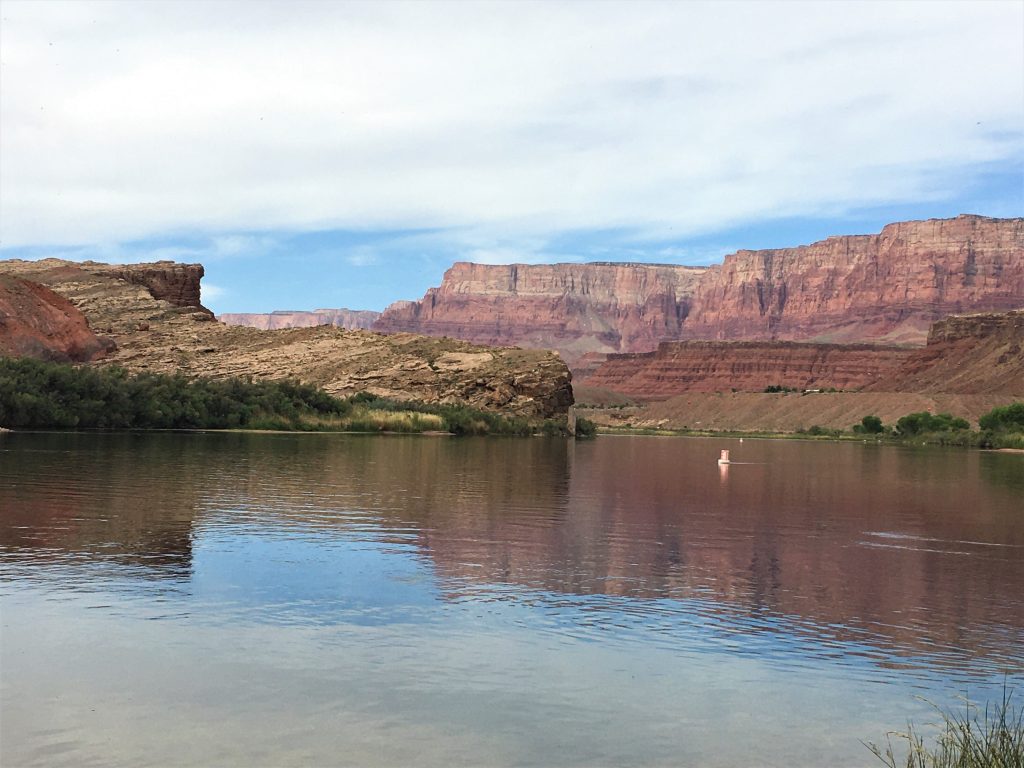
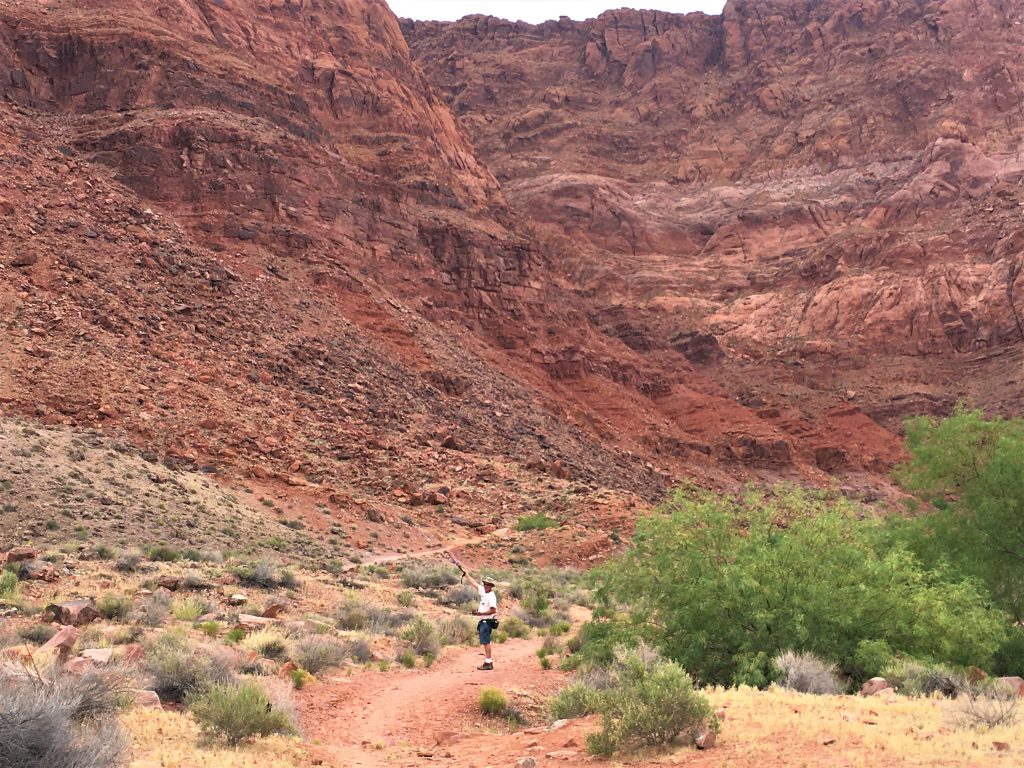
And headed waaaay up there!
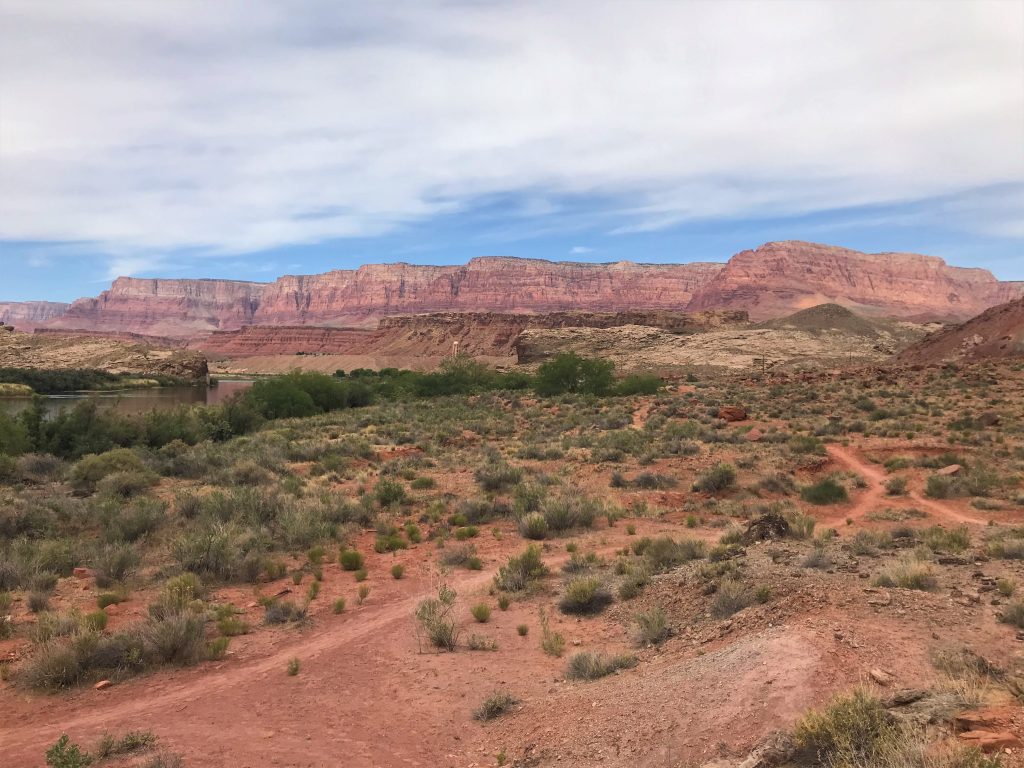
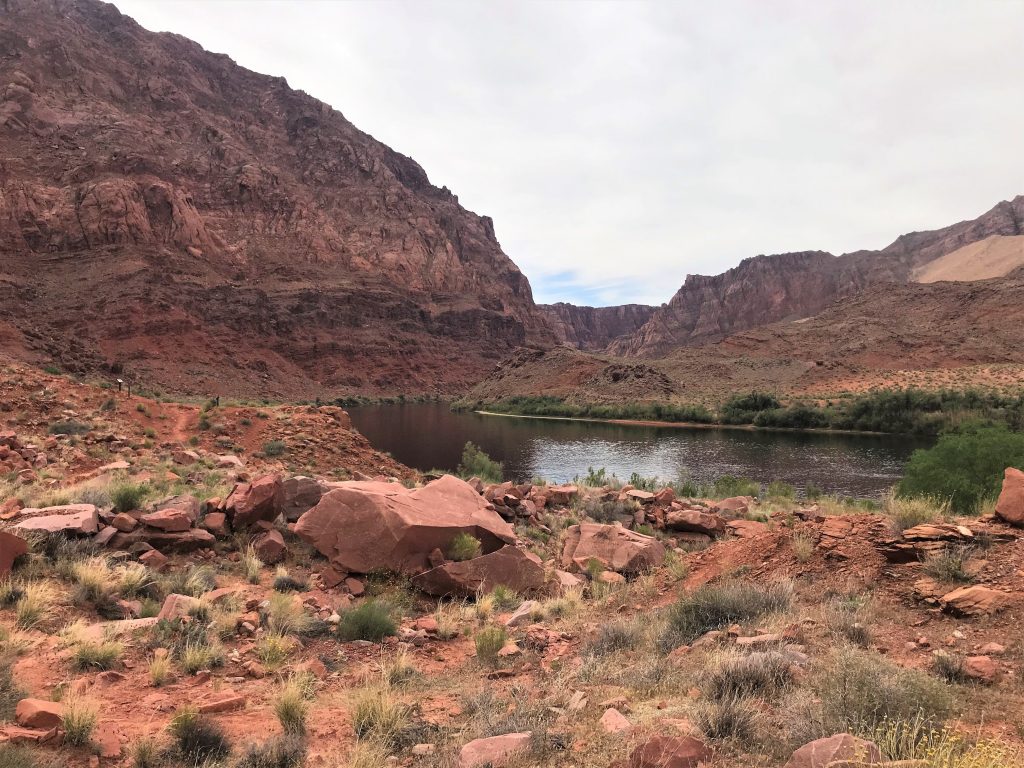
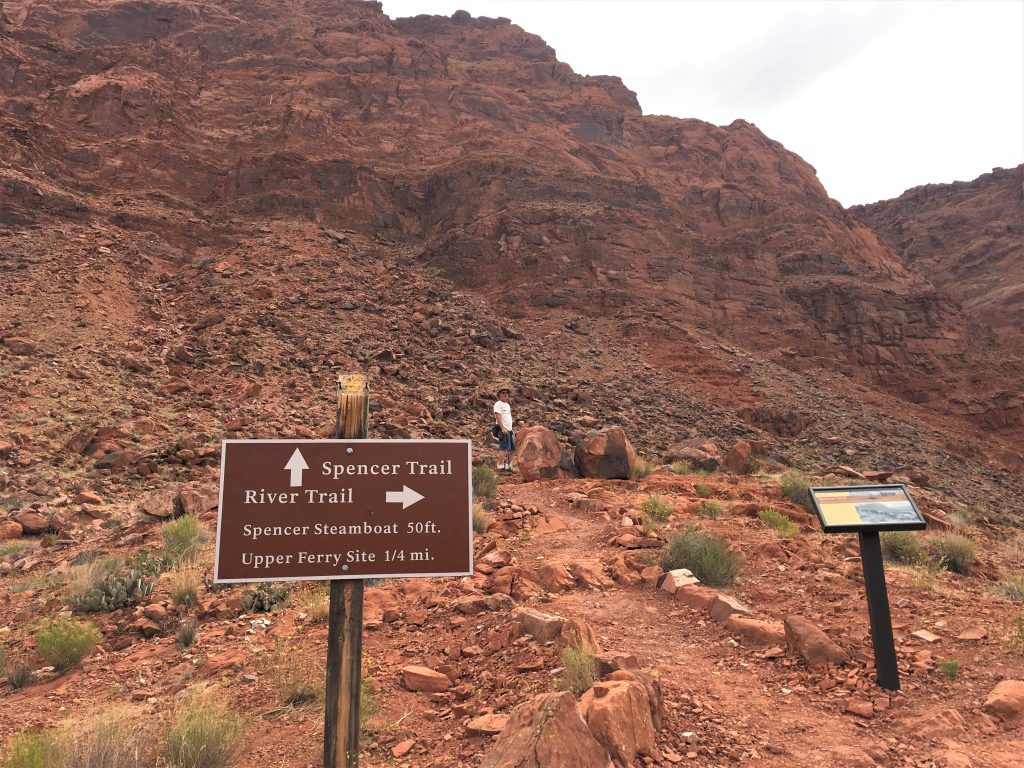
There are still some information boards to check out, but we’ll catch them on the way back.
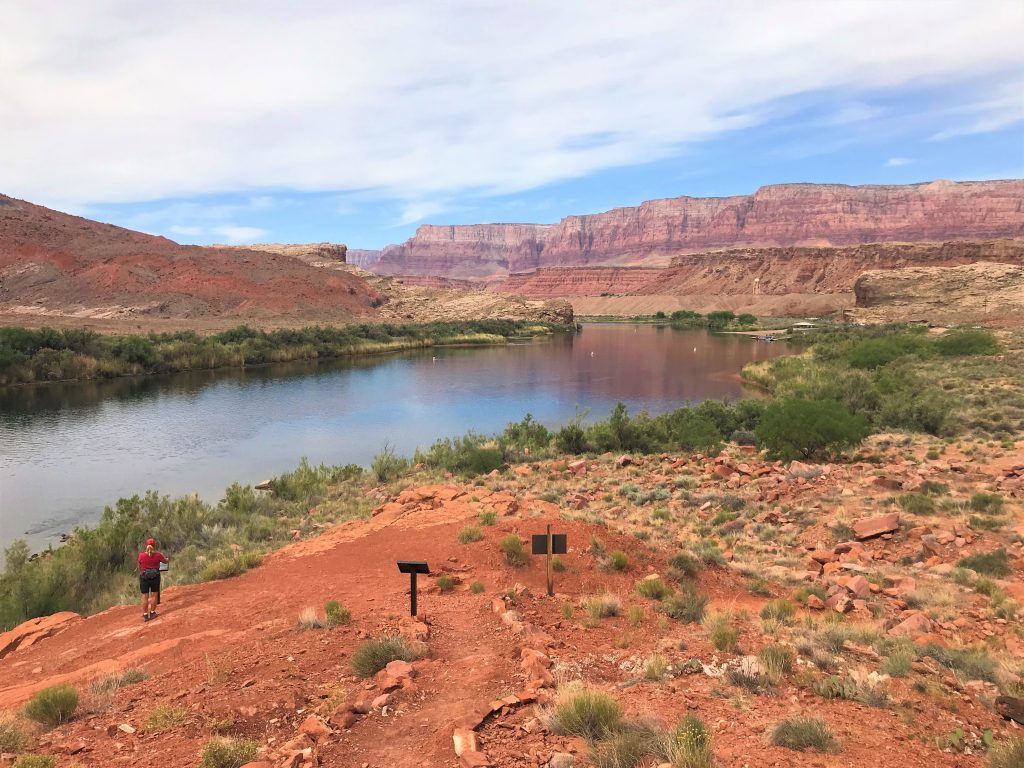
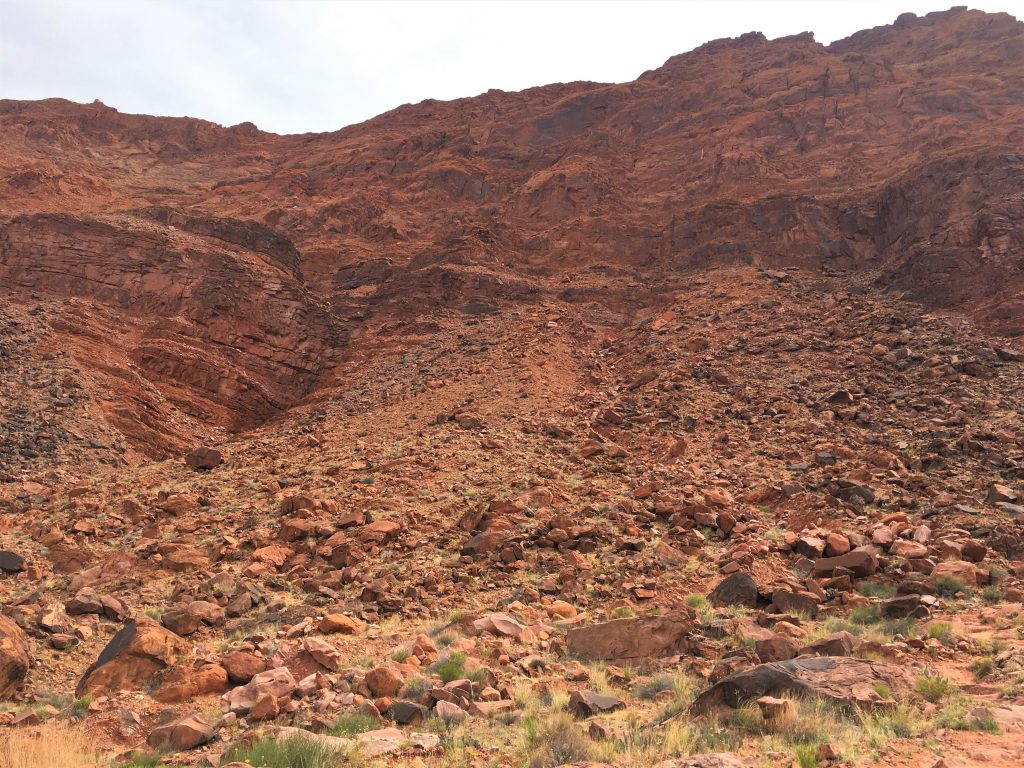
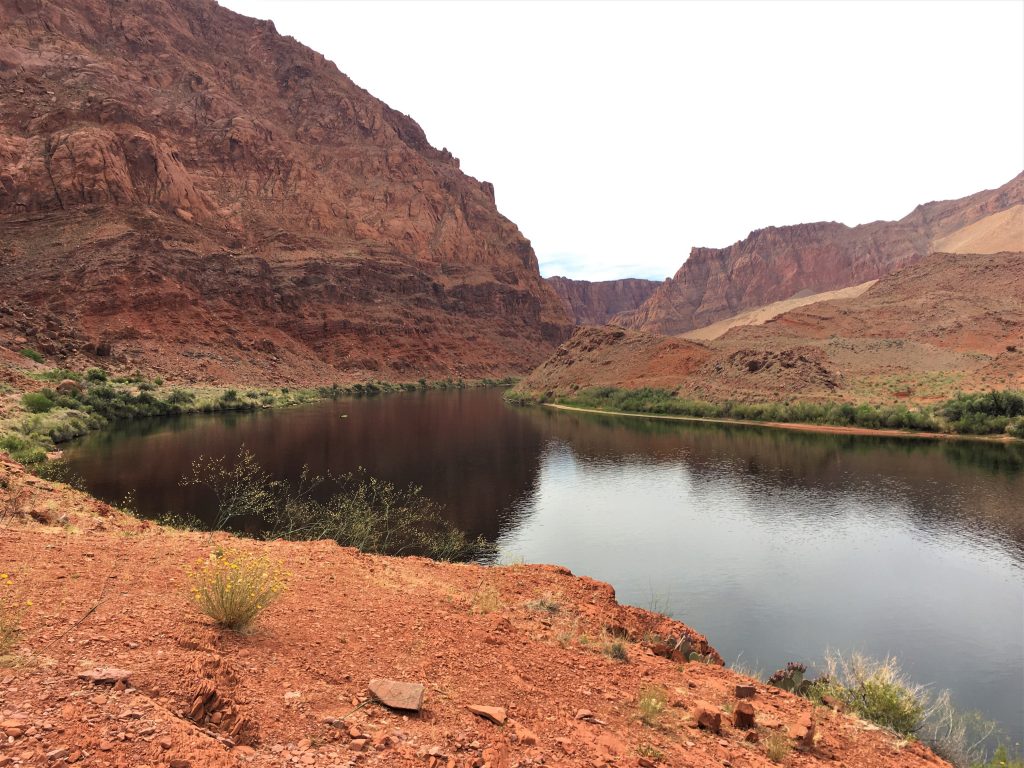
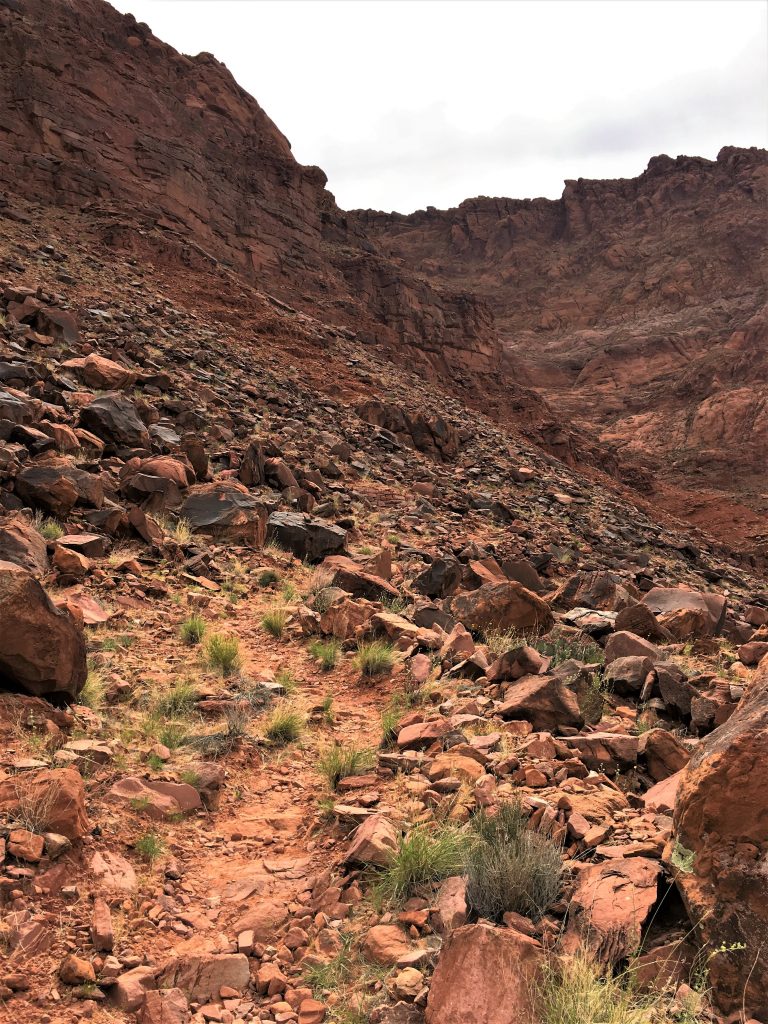
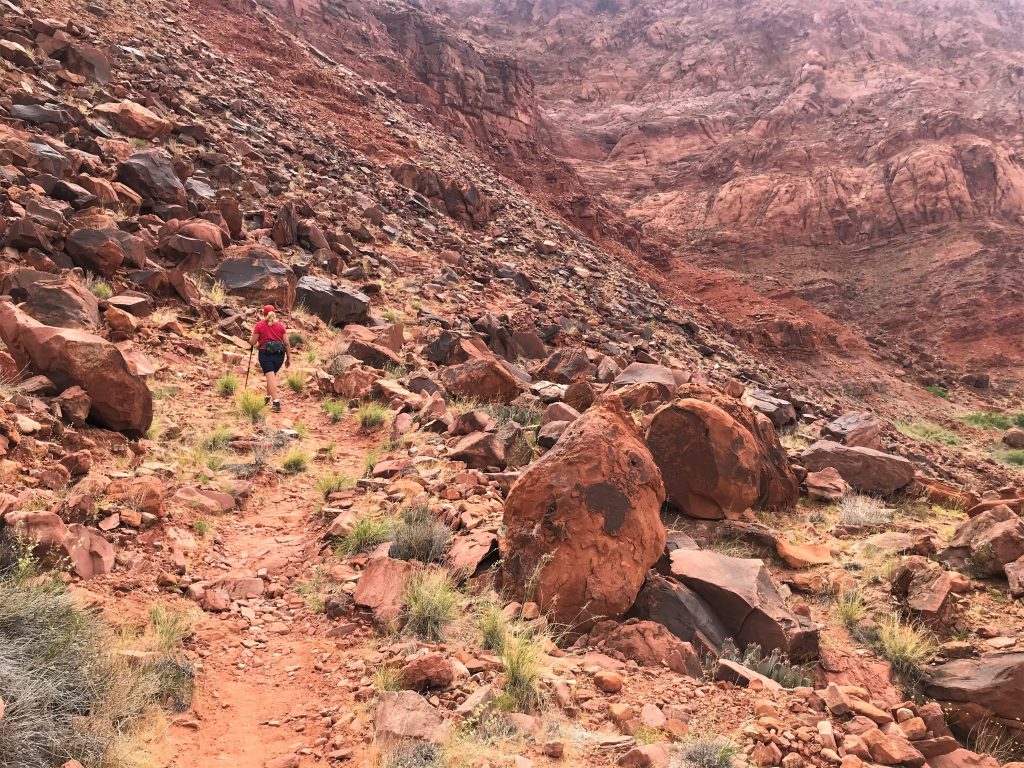
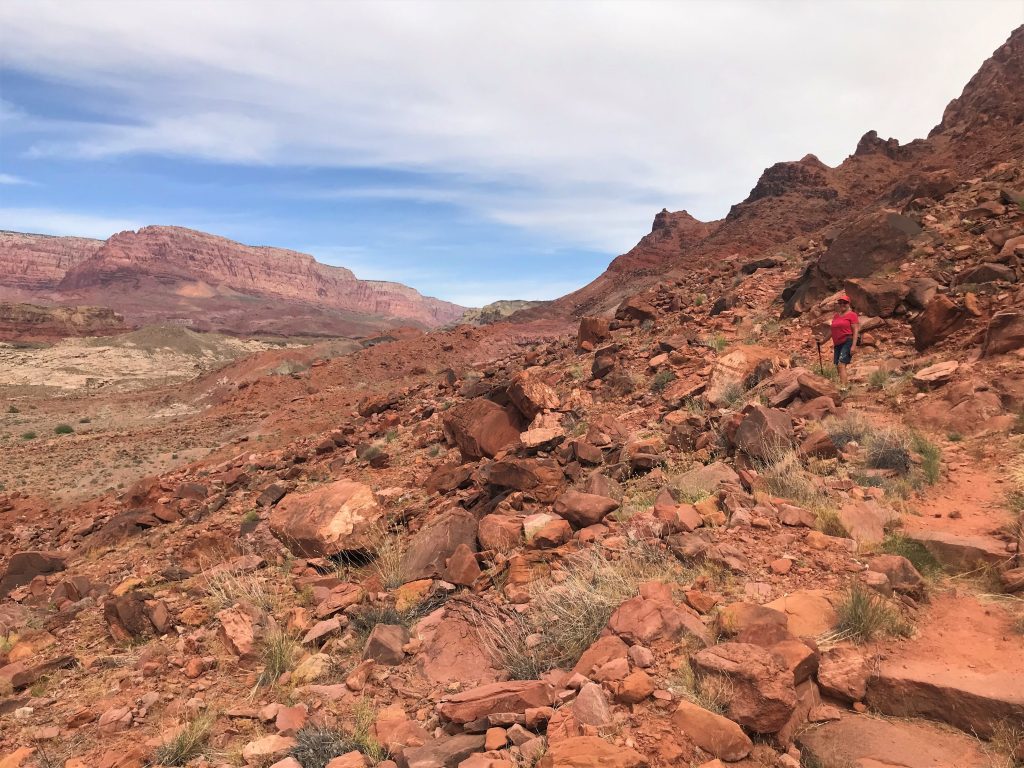
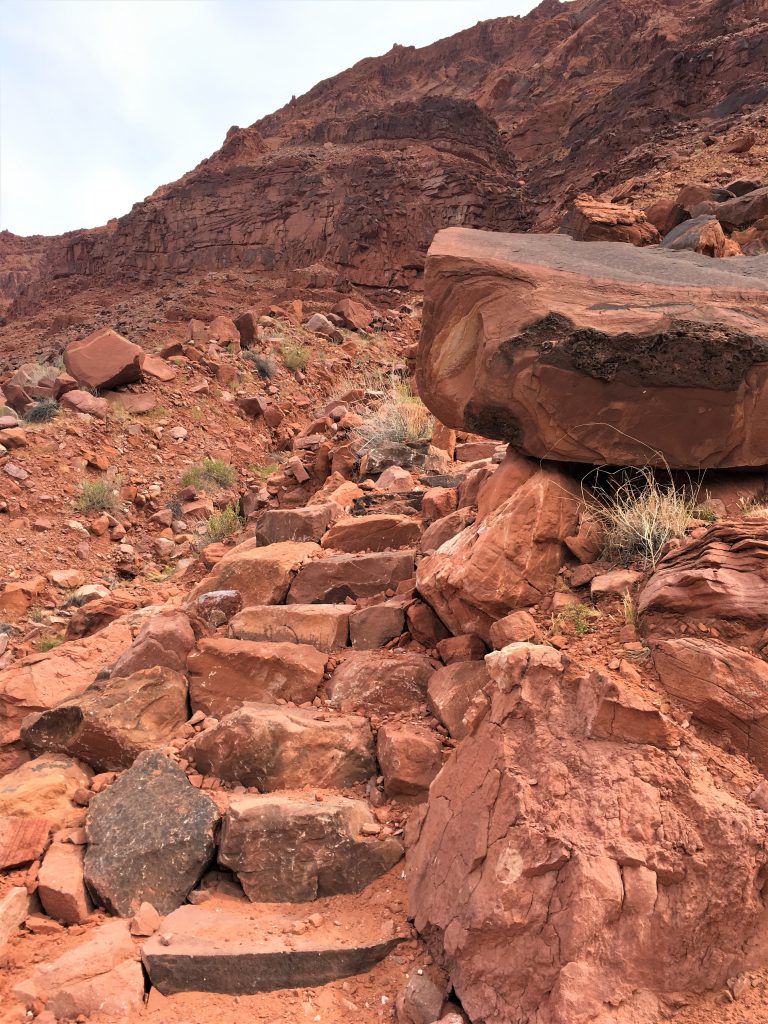
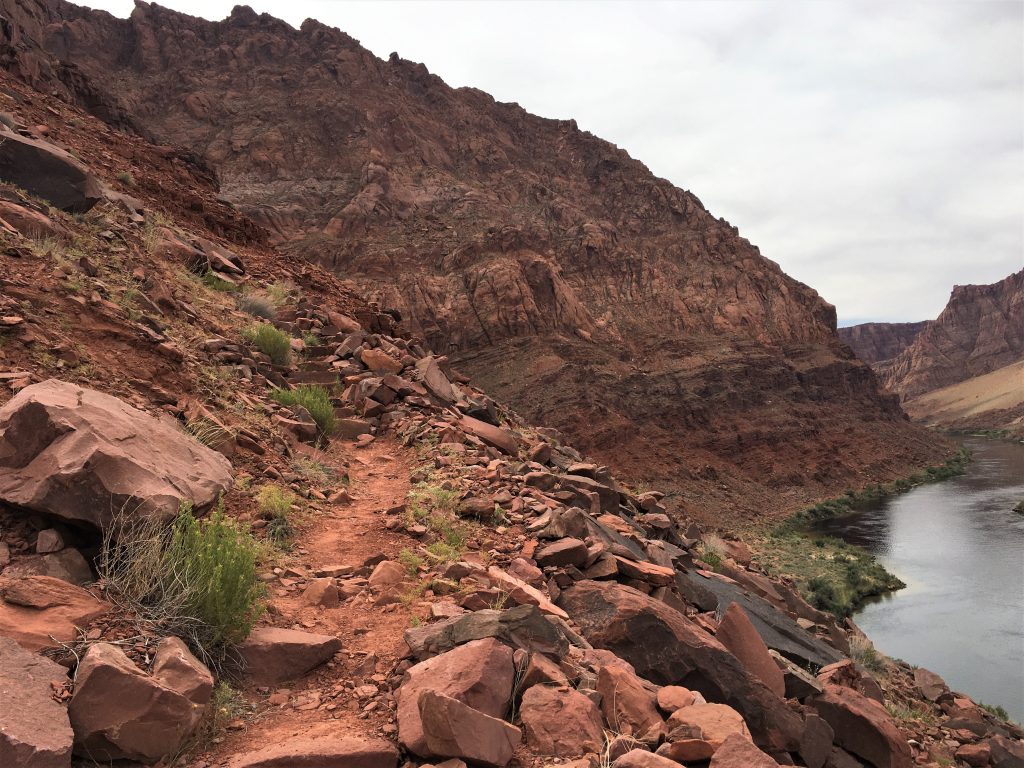
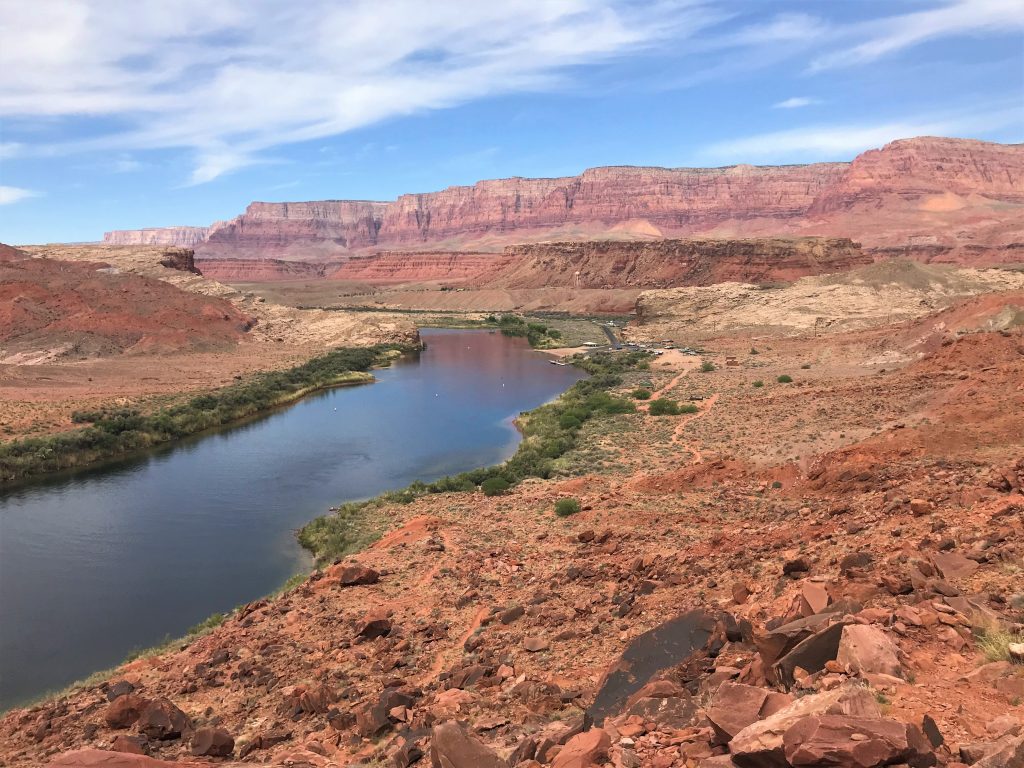
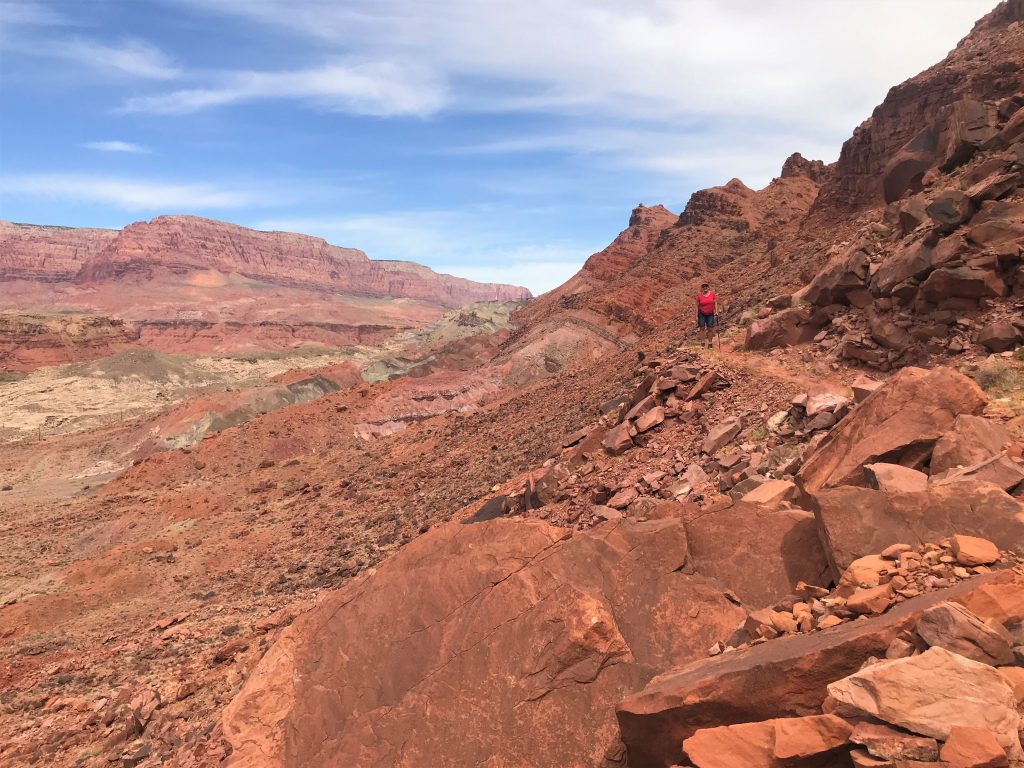
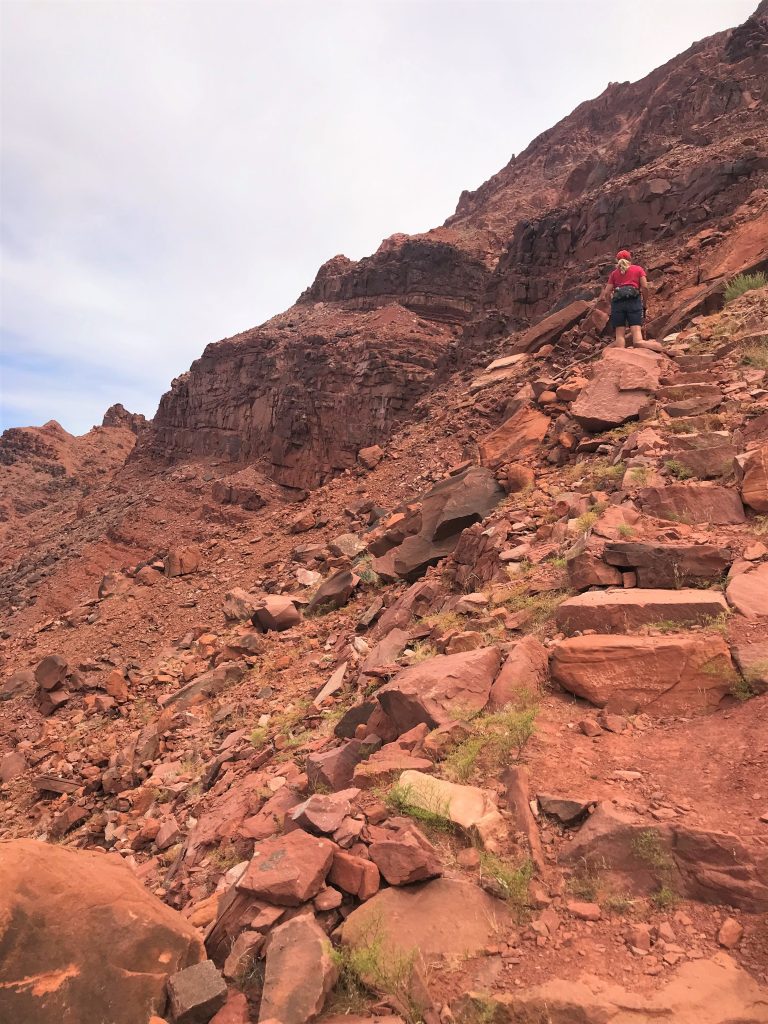
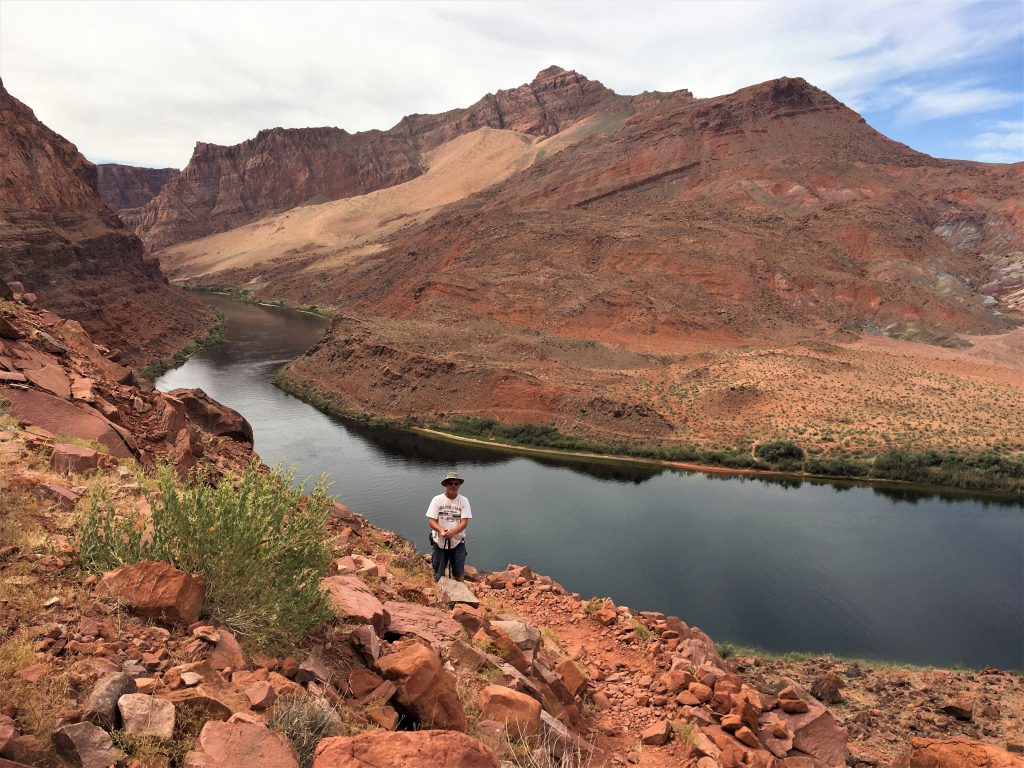
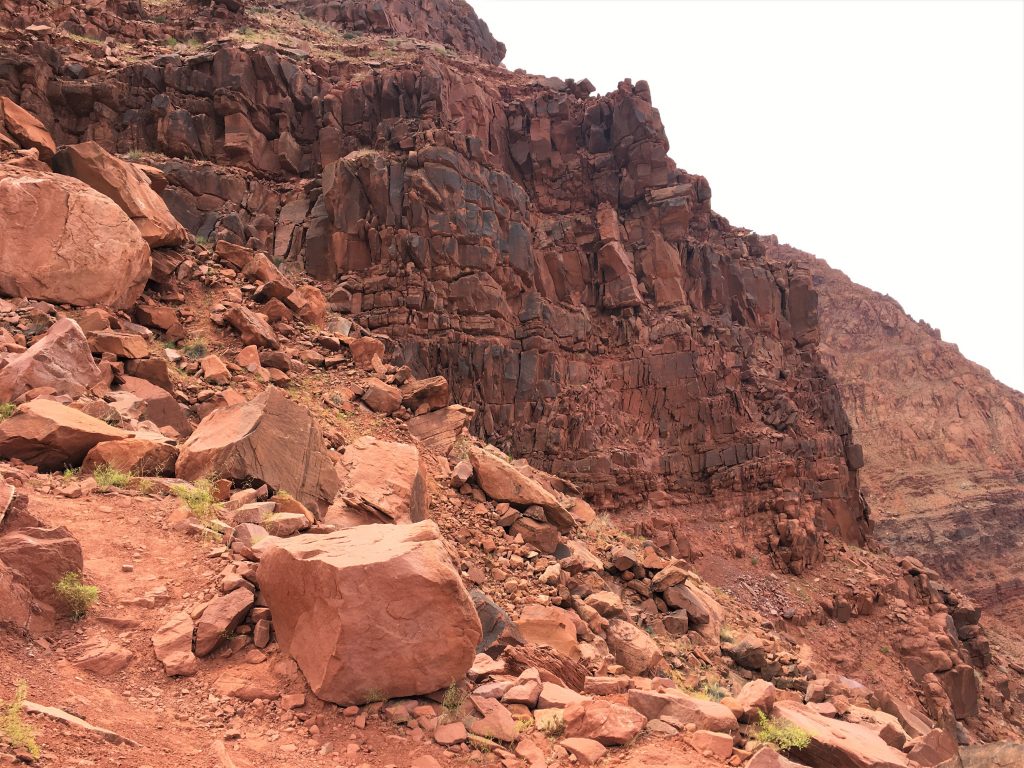
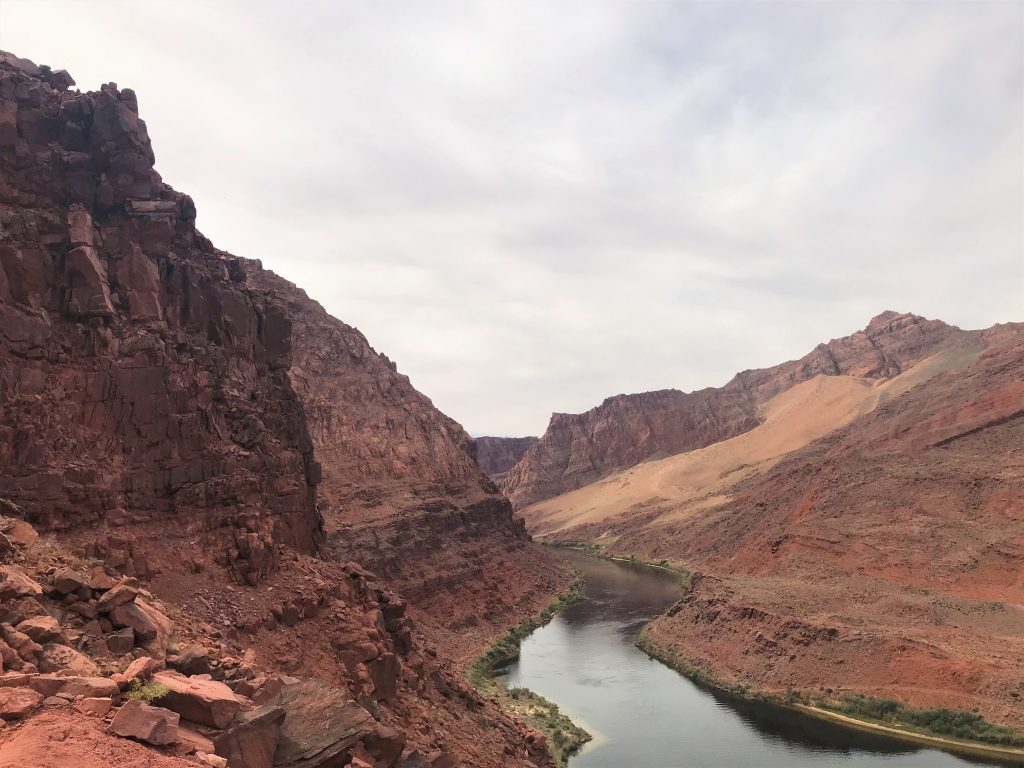
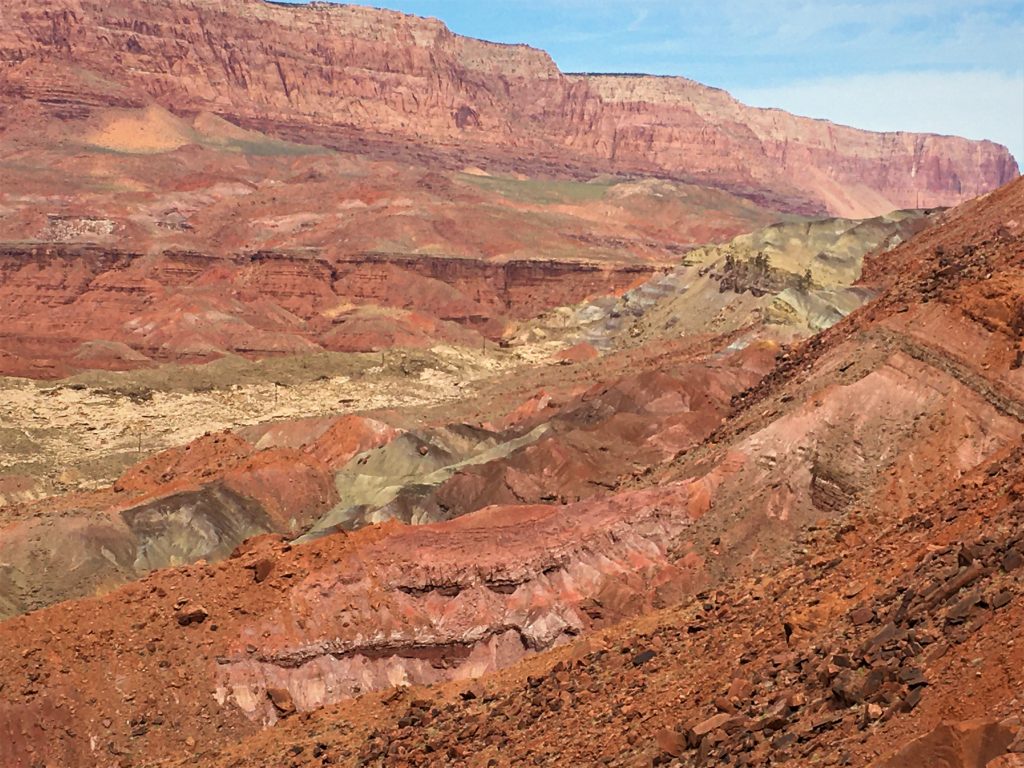
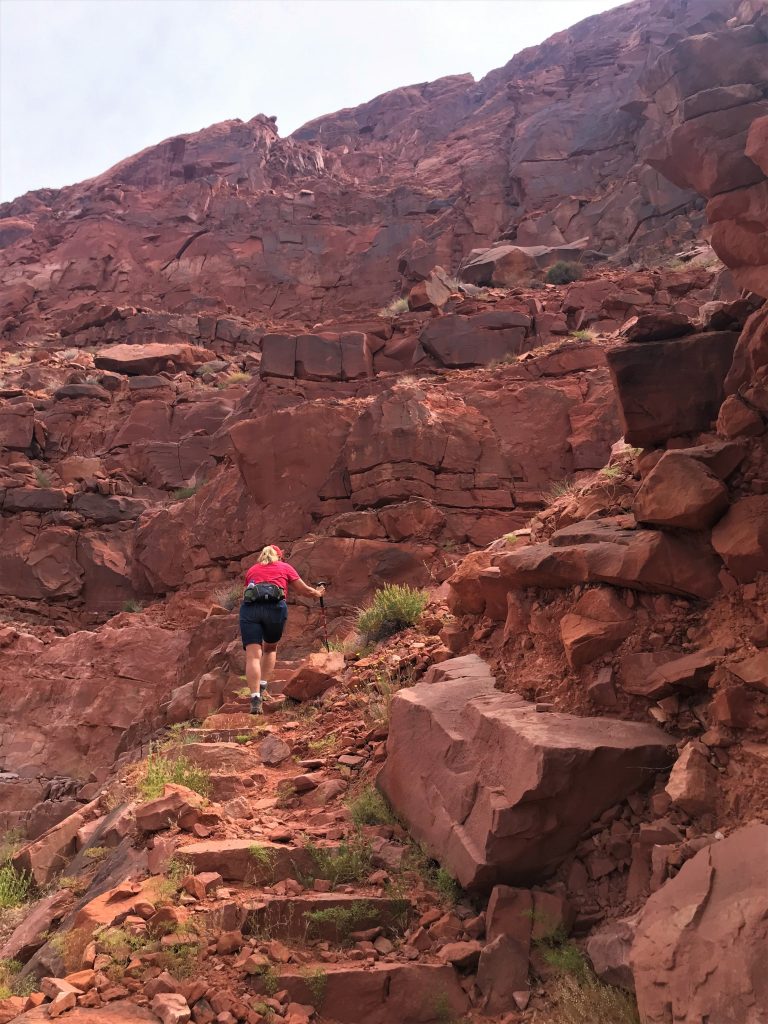
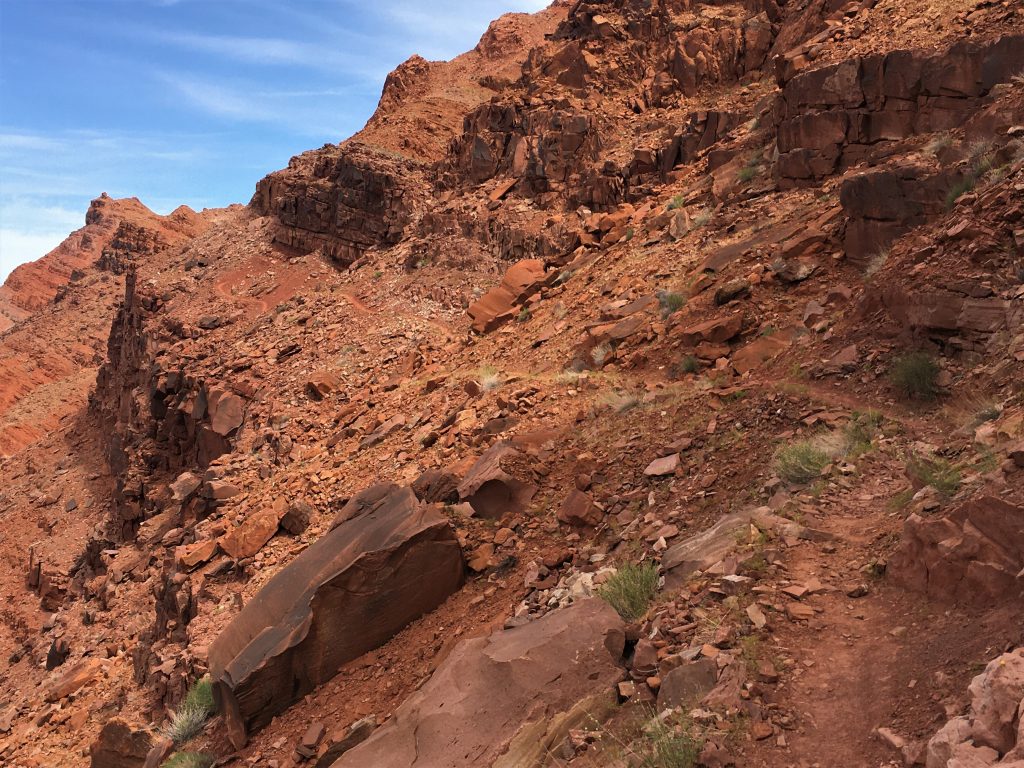
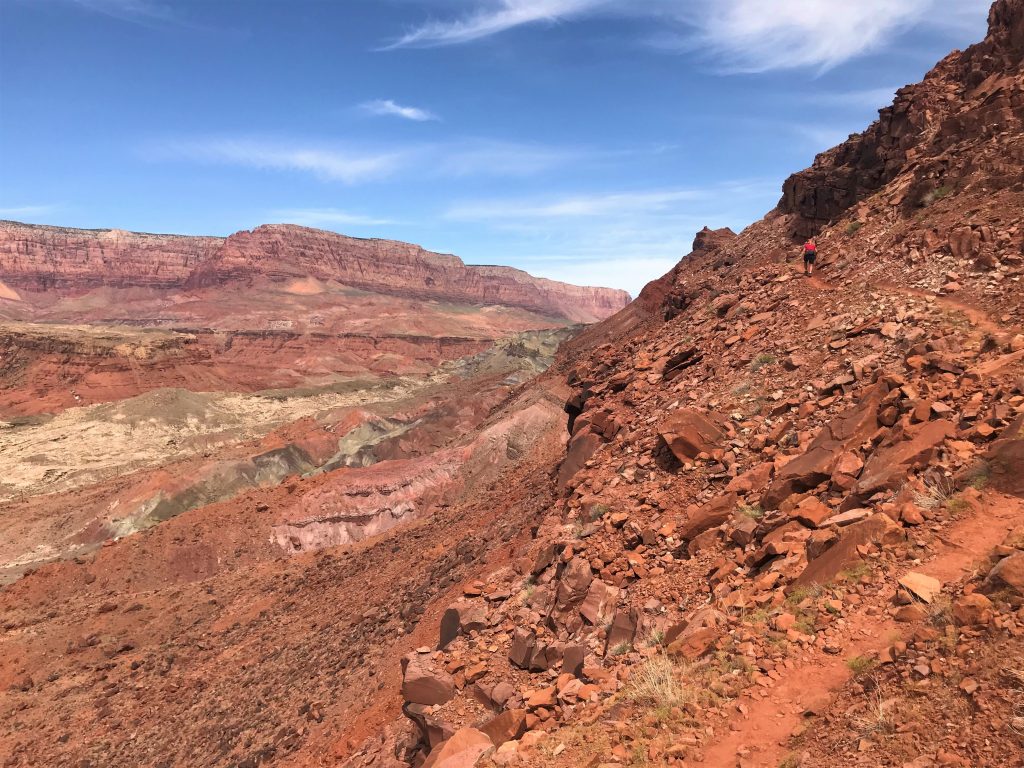
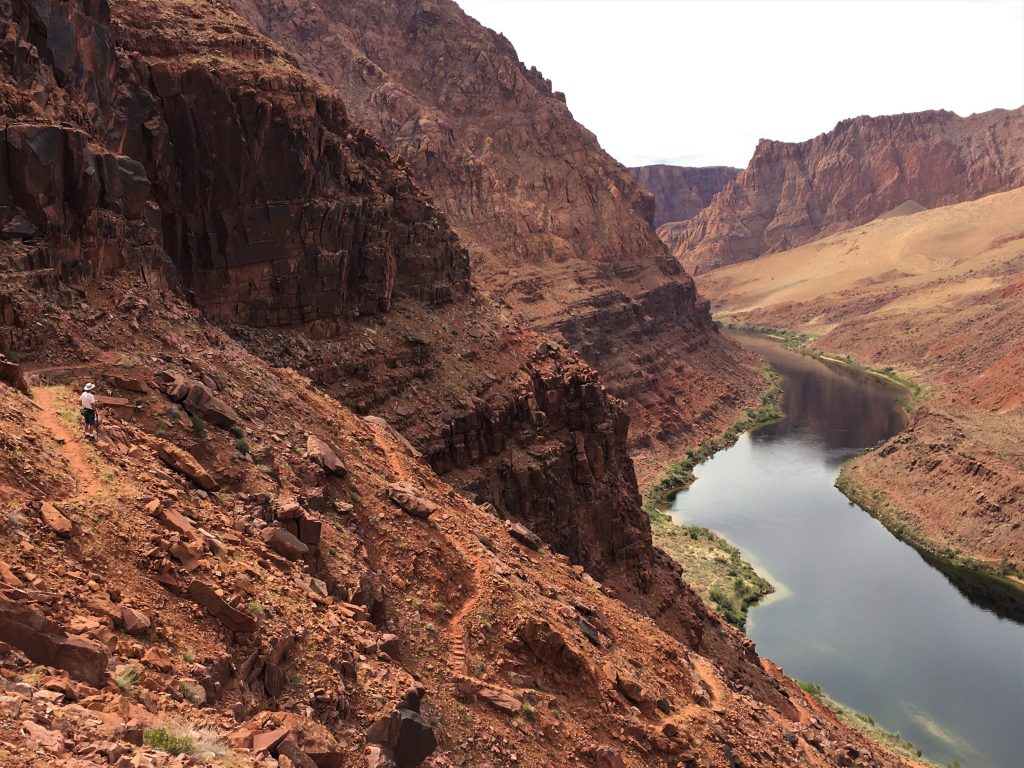
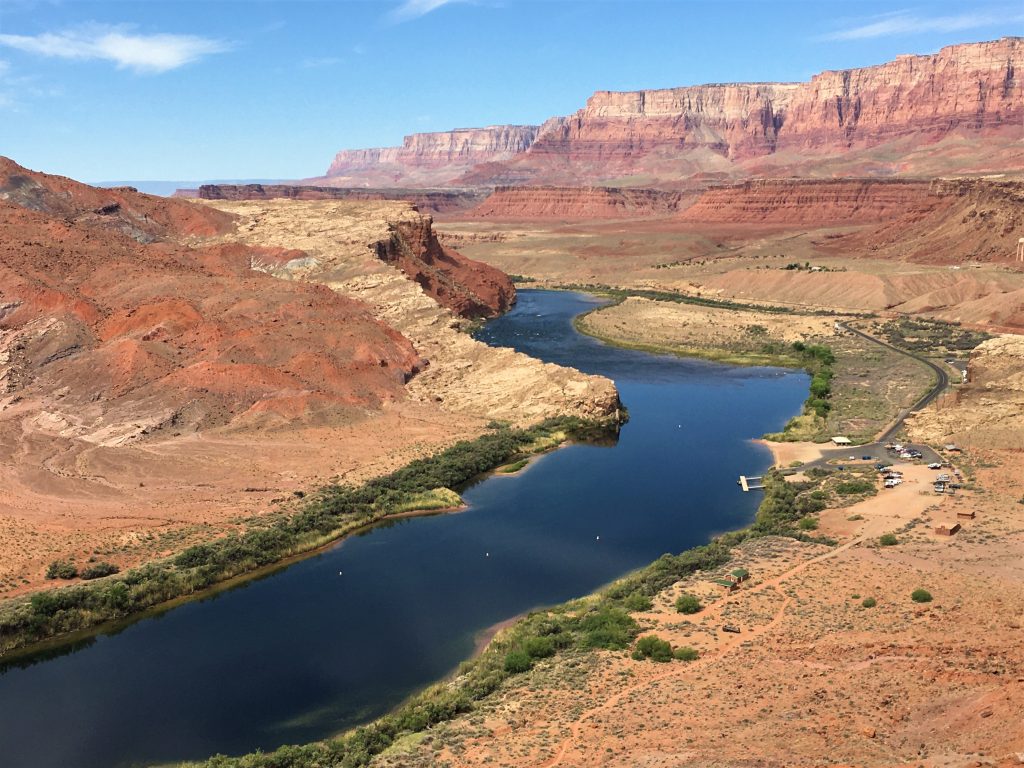

Still doesn’t convey the awesomeness!
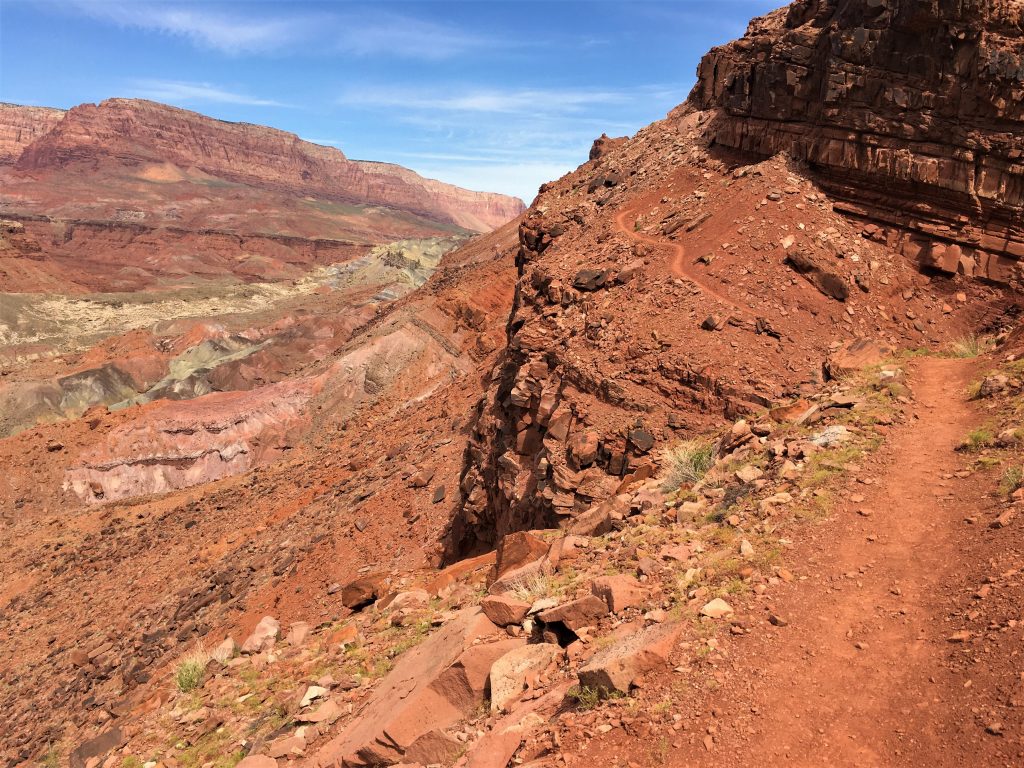
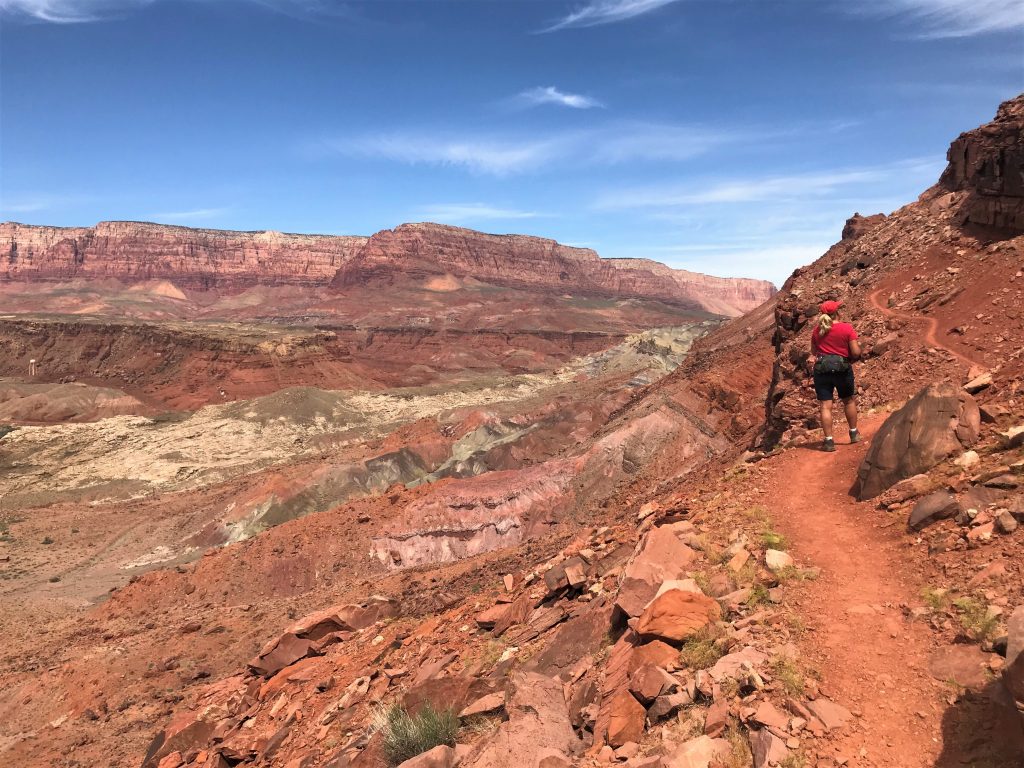
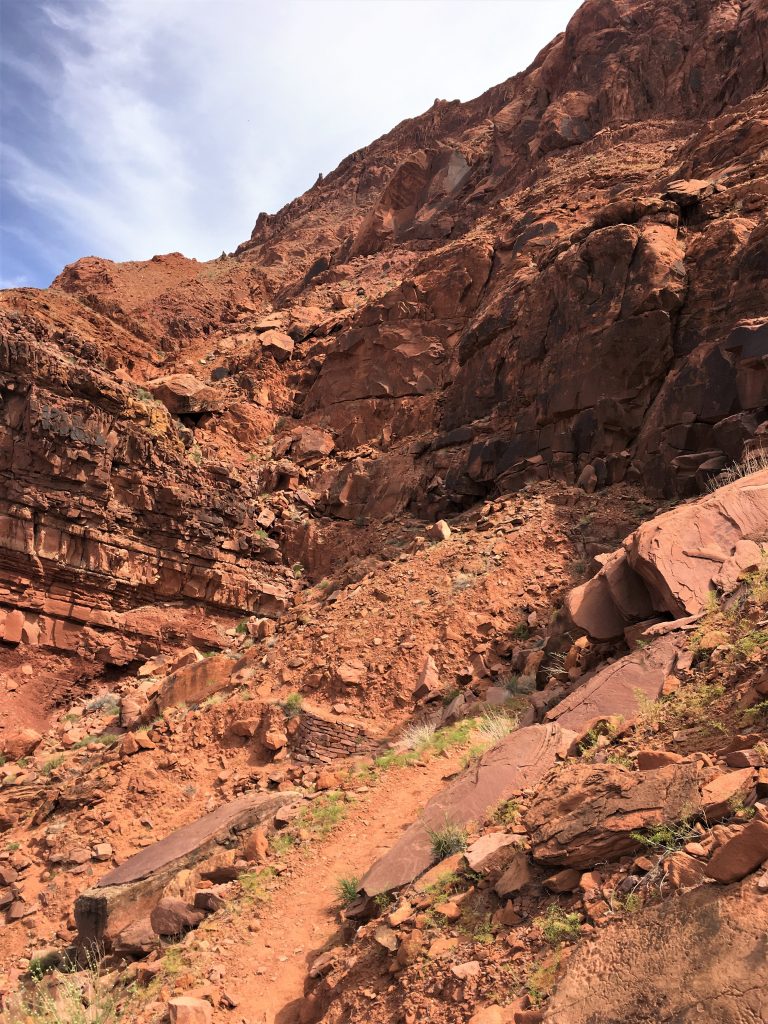
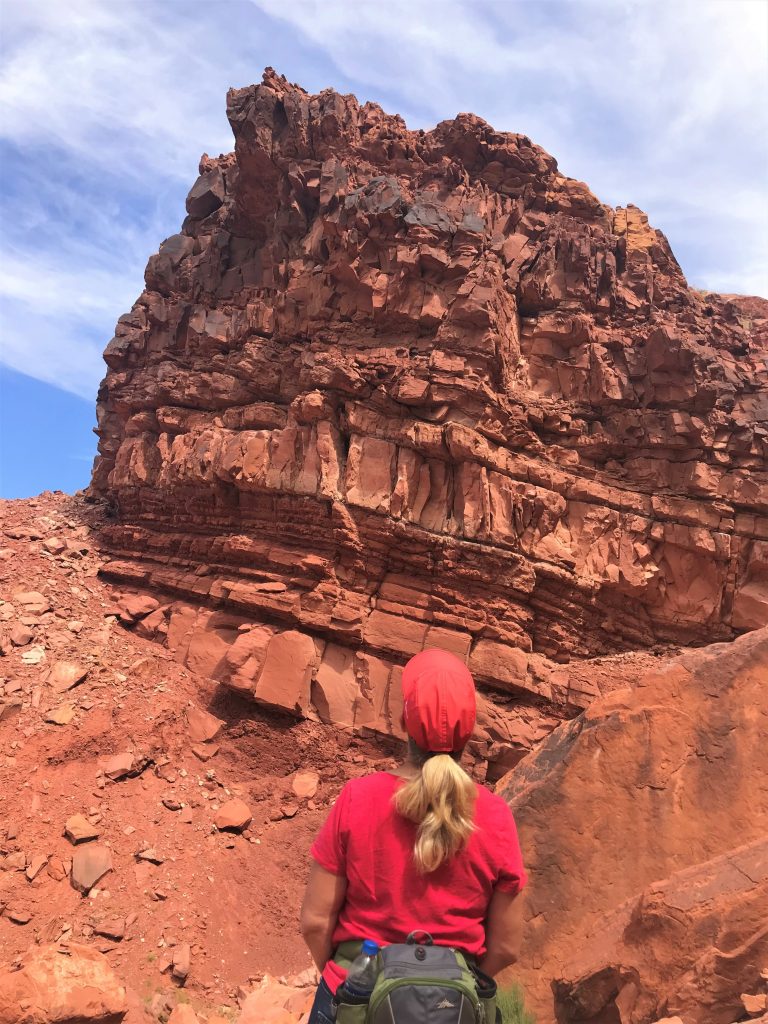
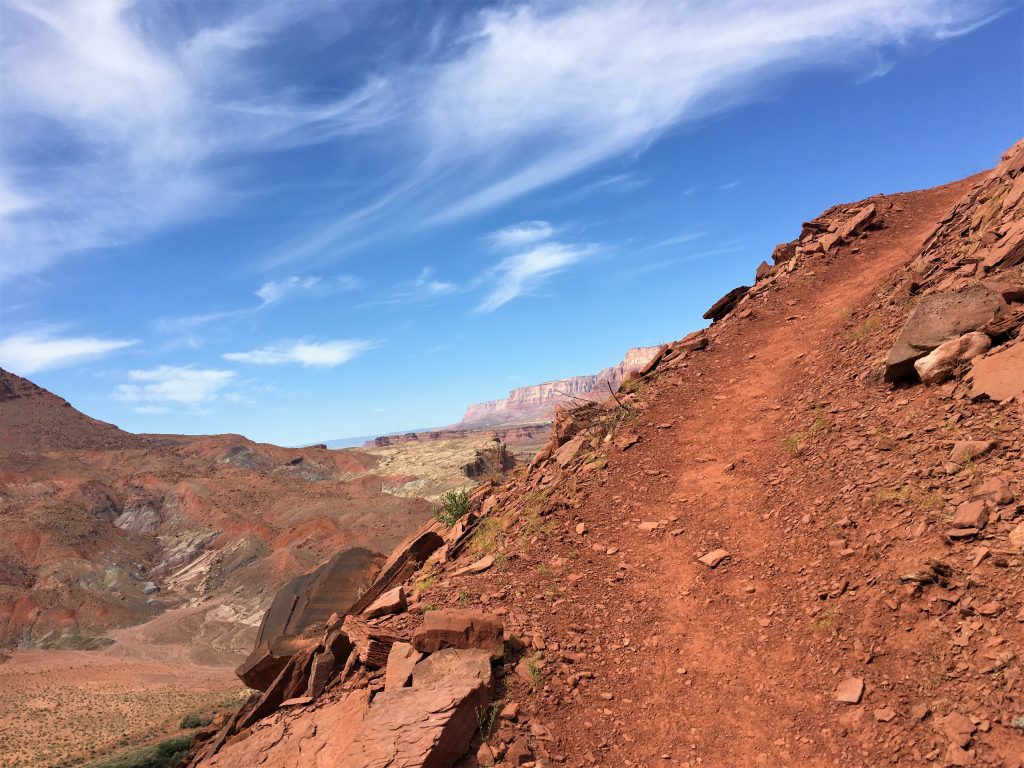
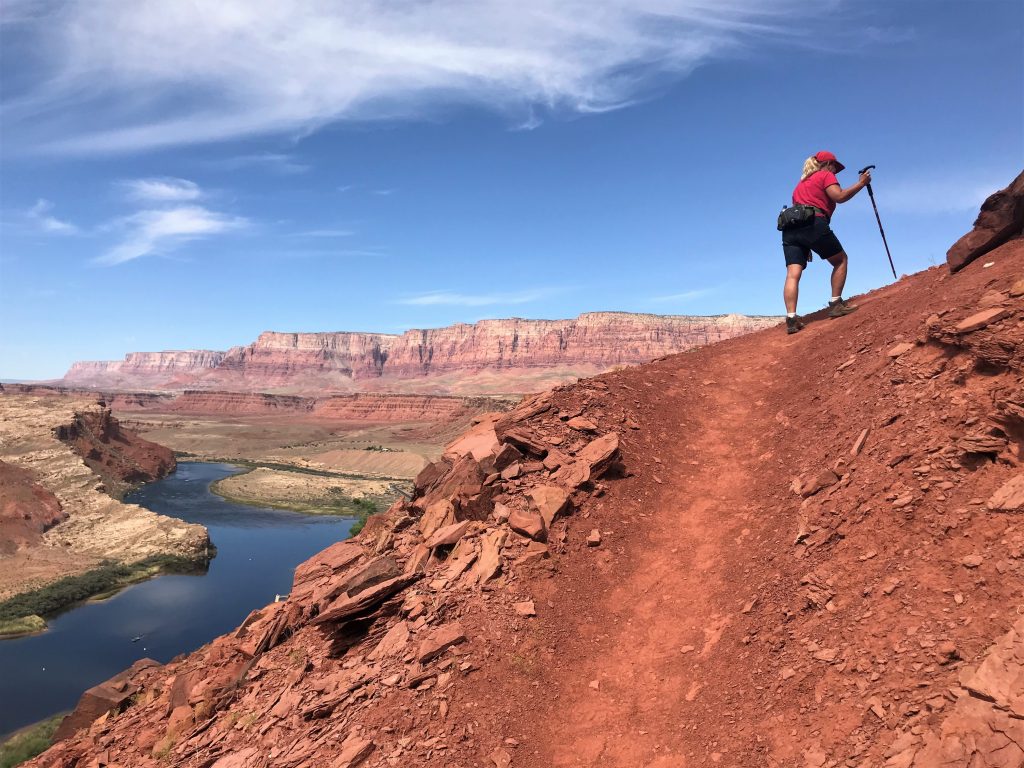
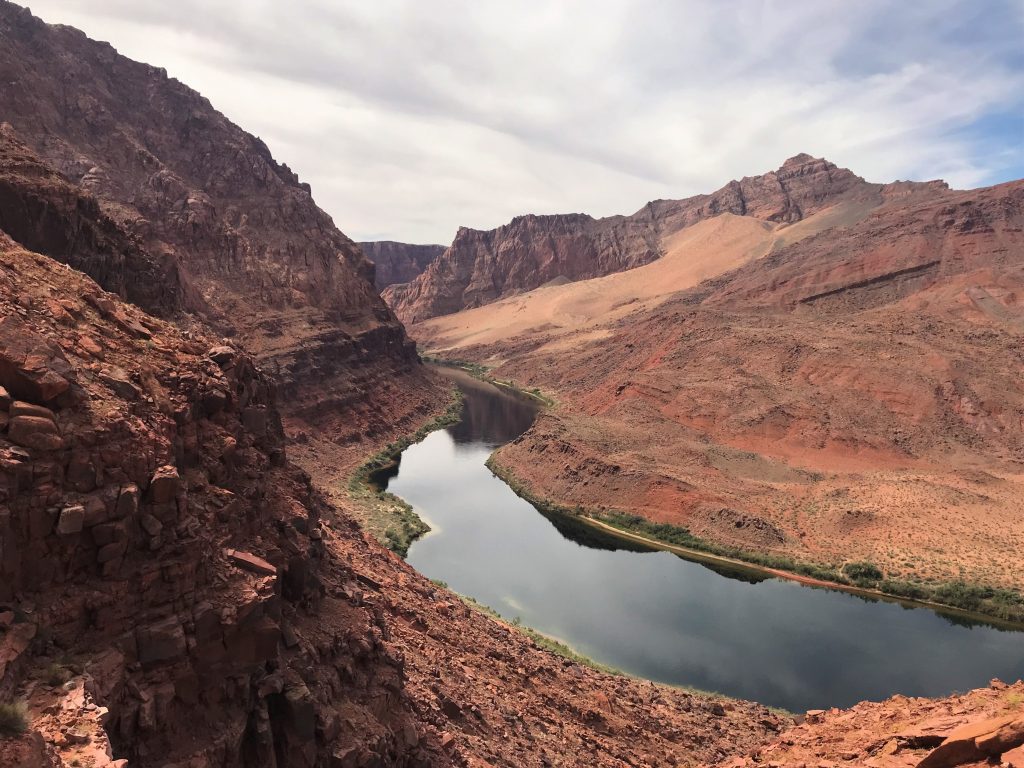

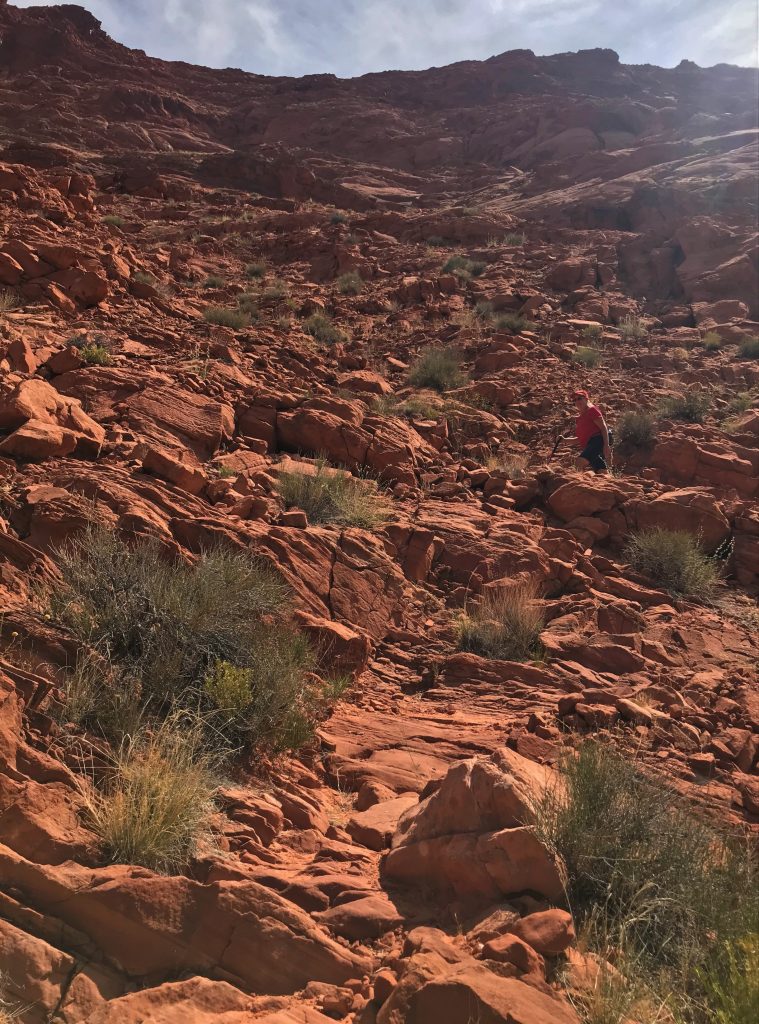
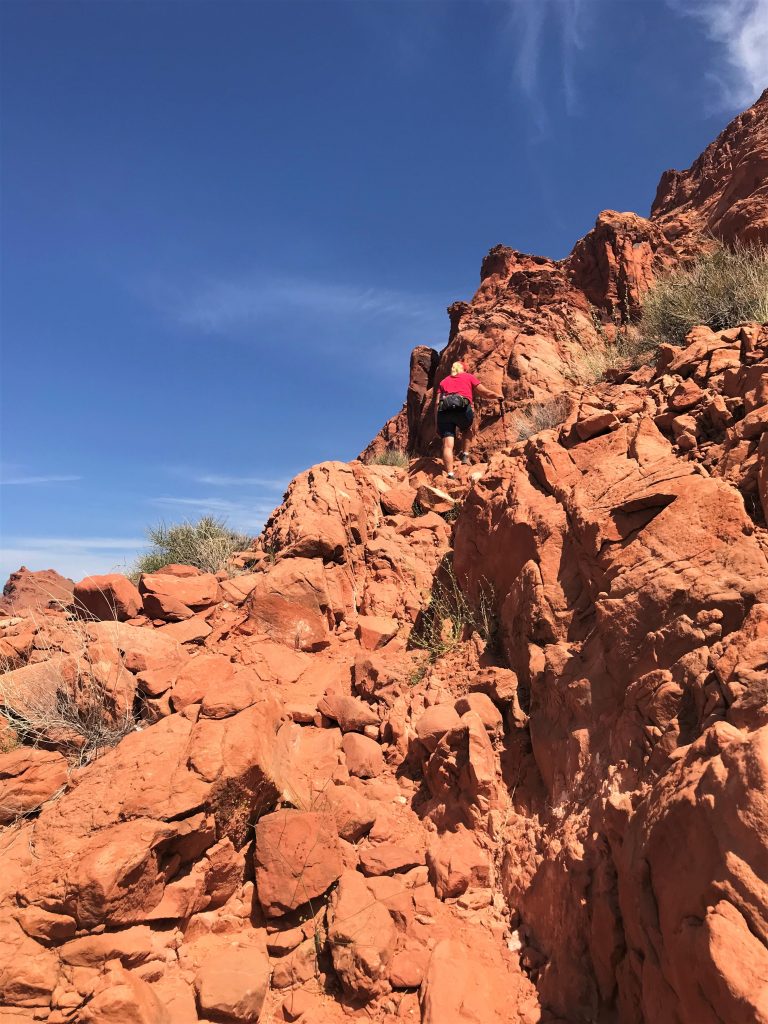
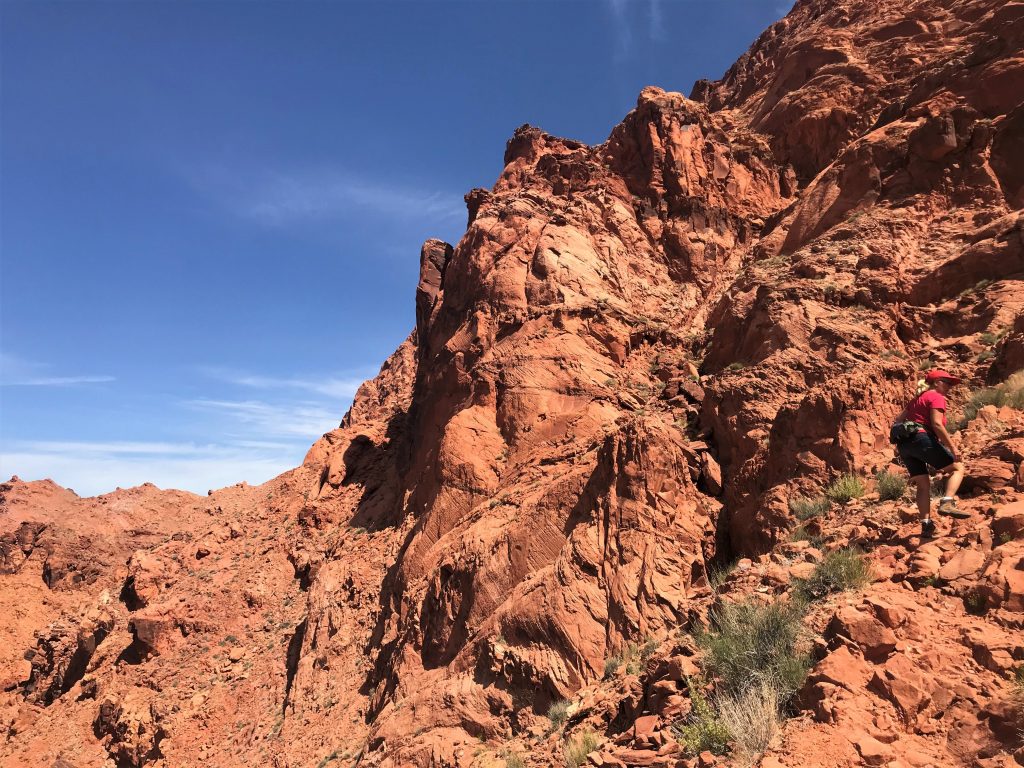
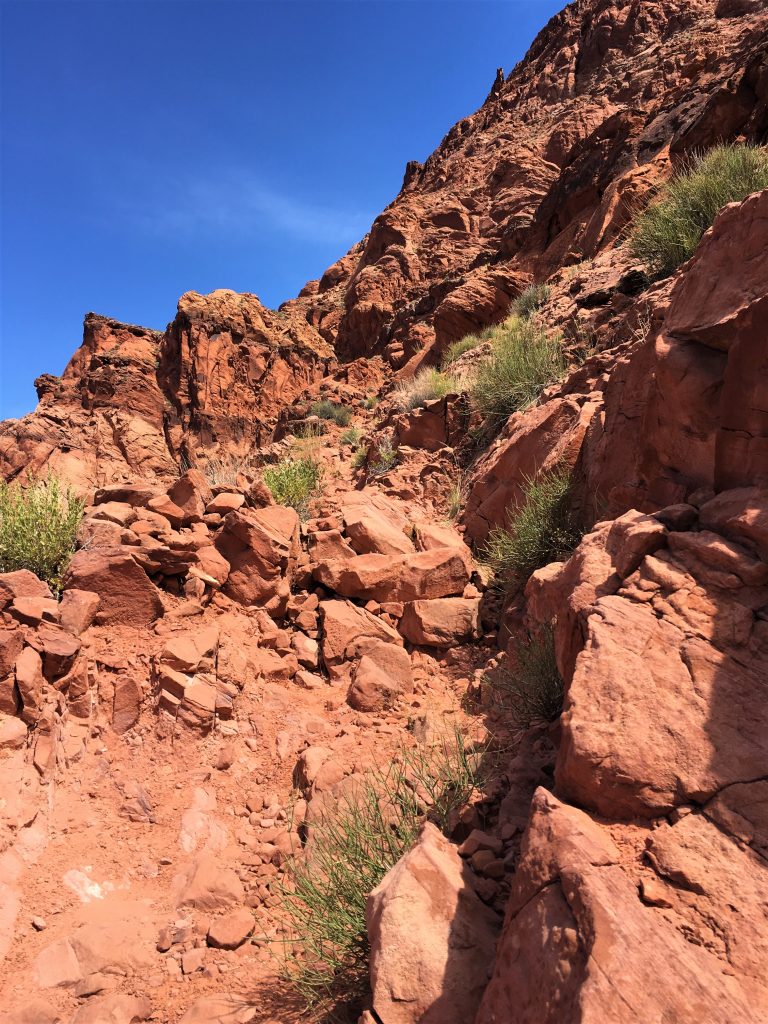
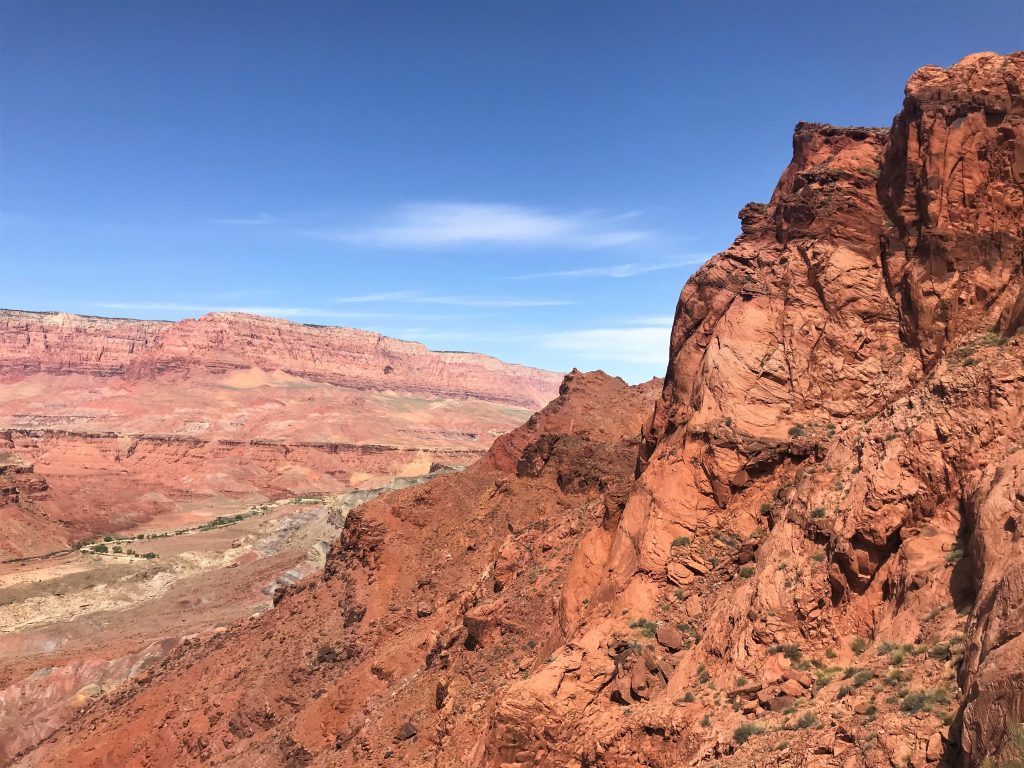
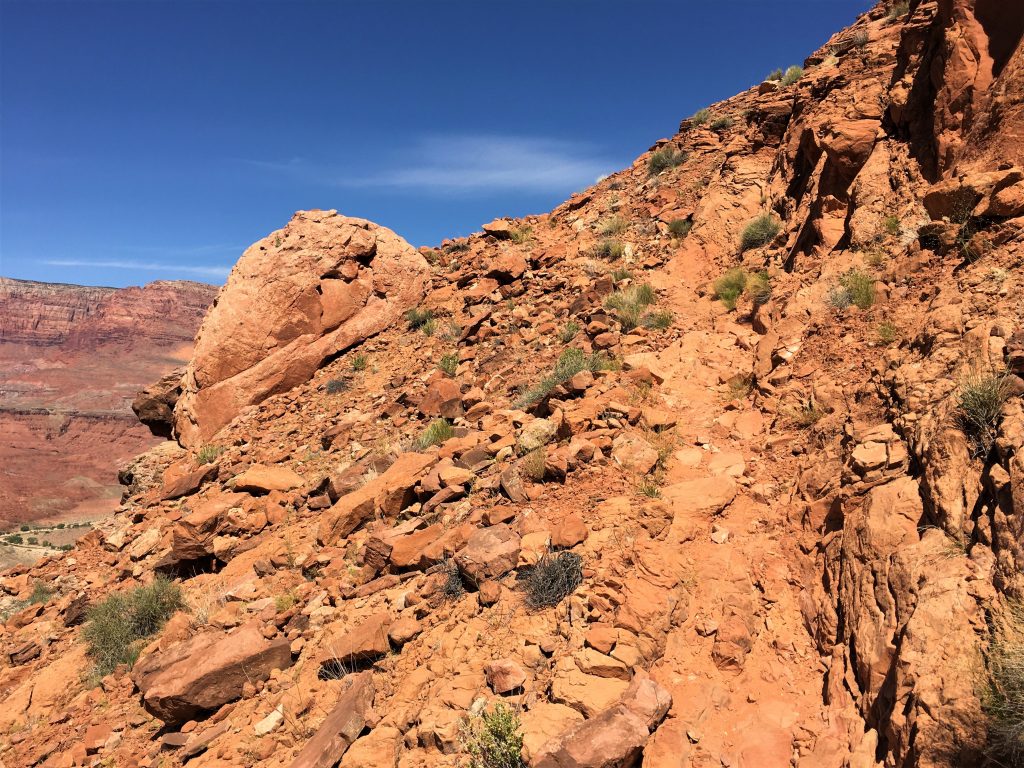
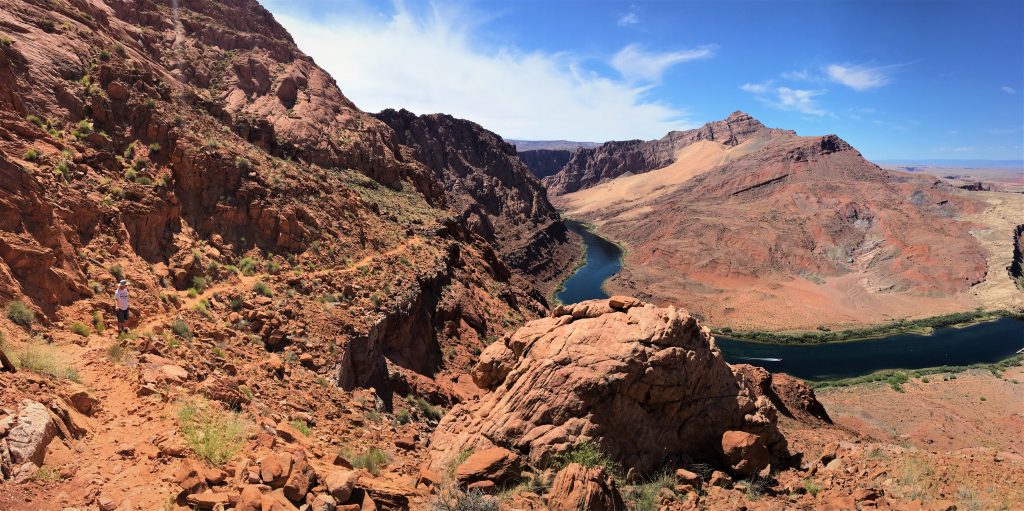
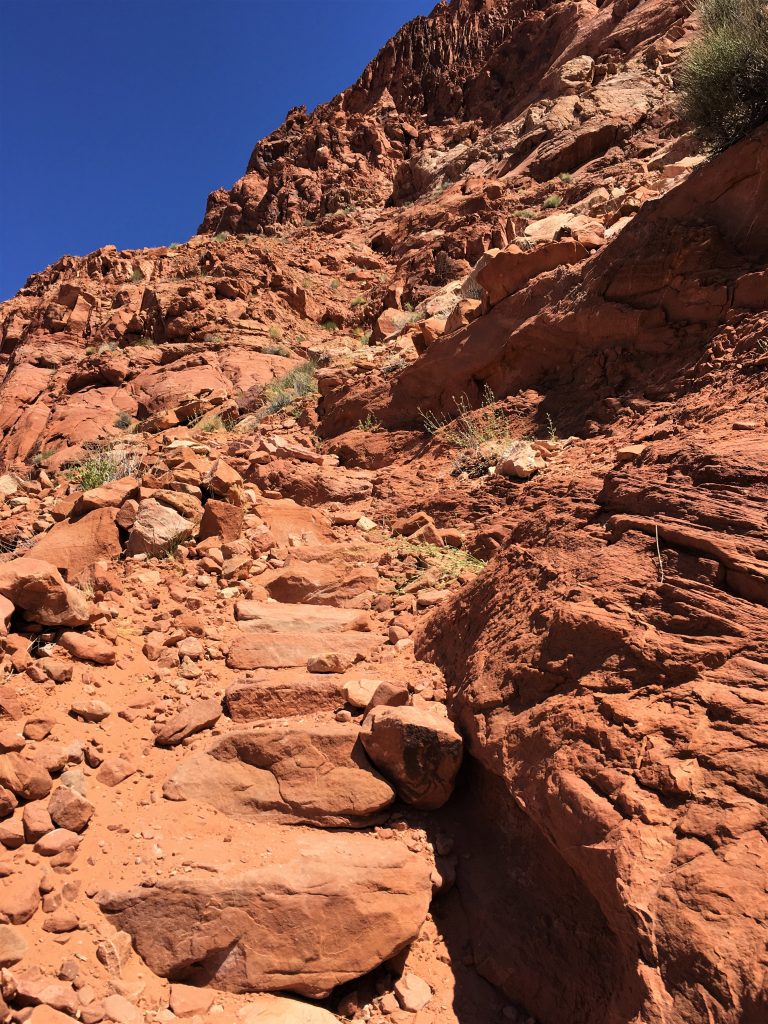
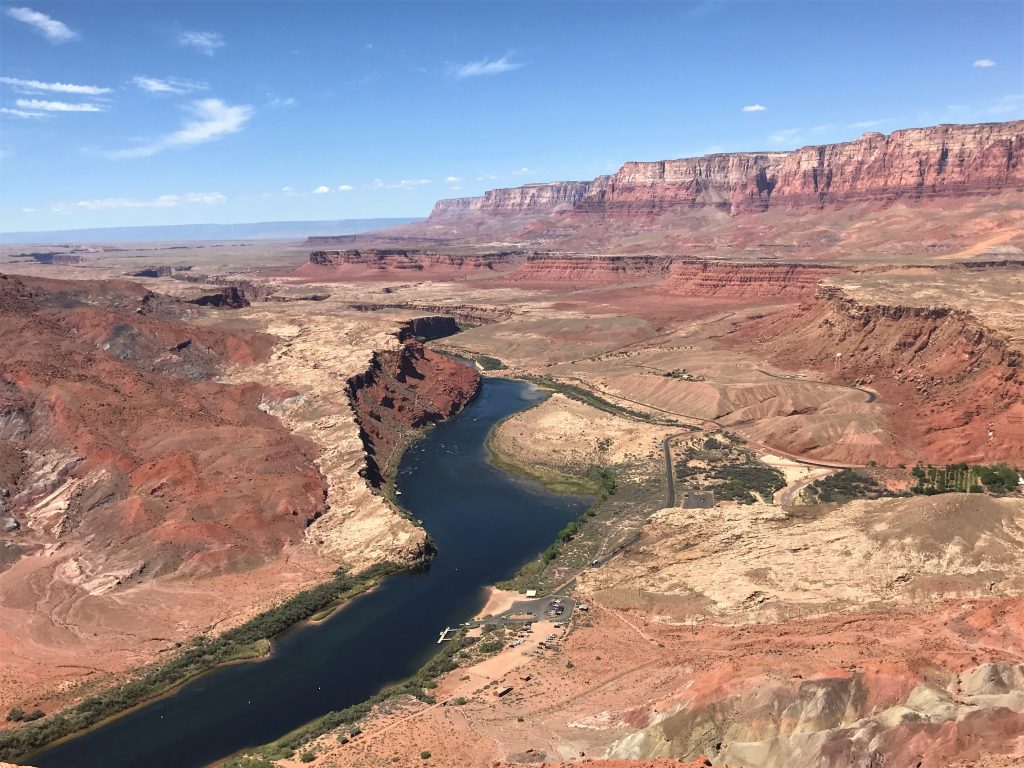

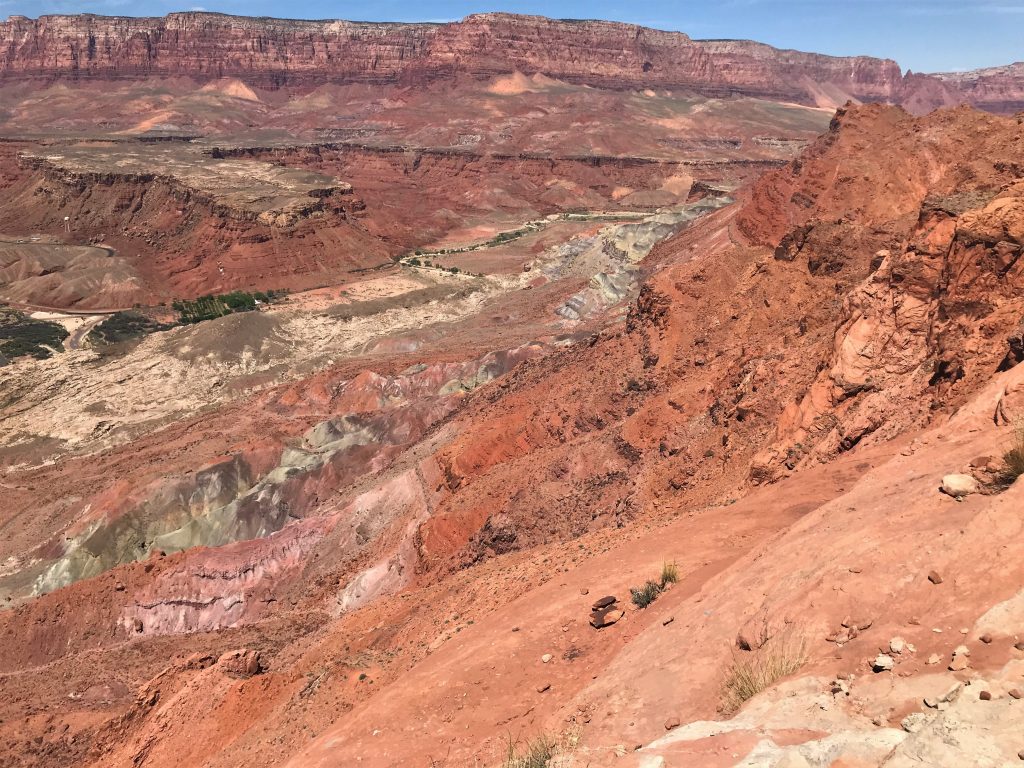
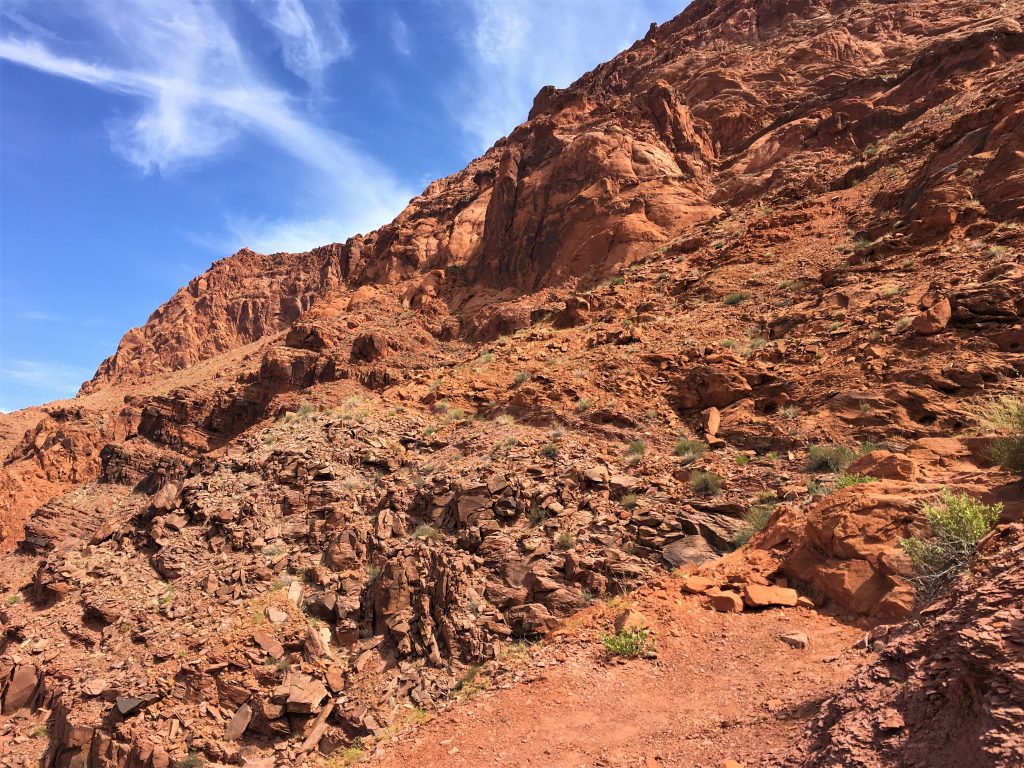
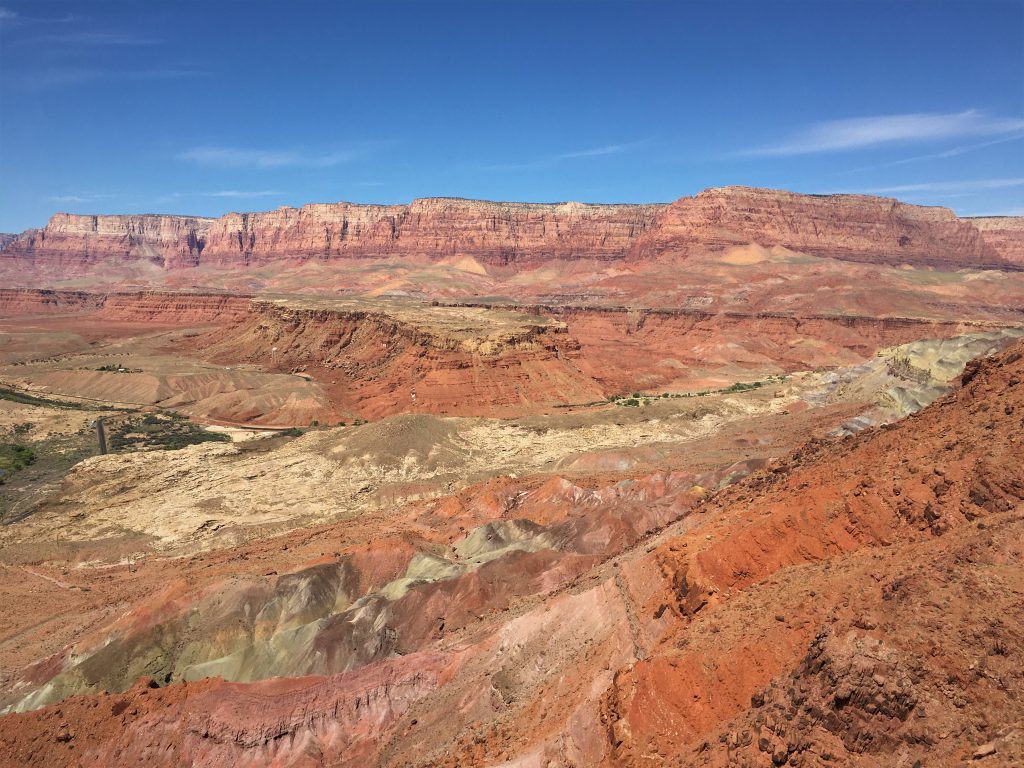
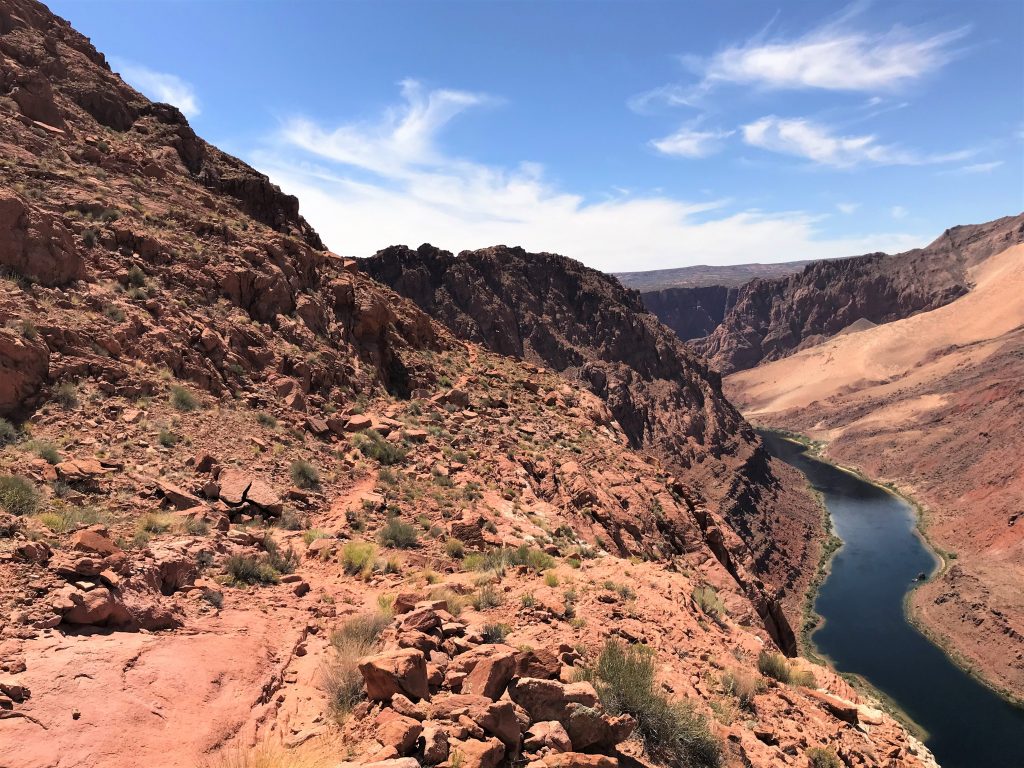
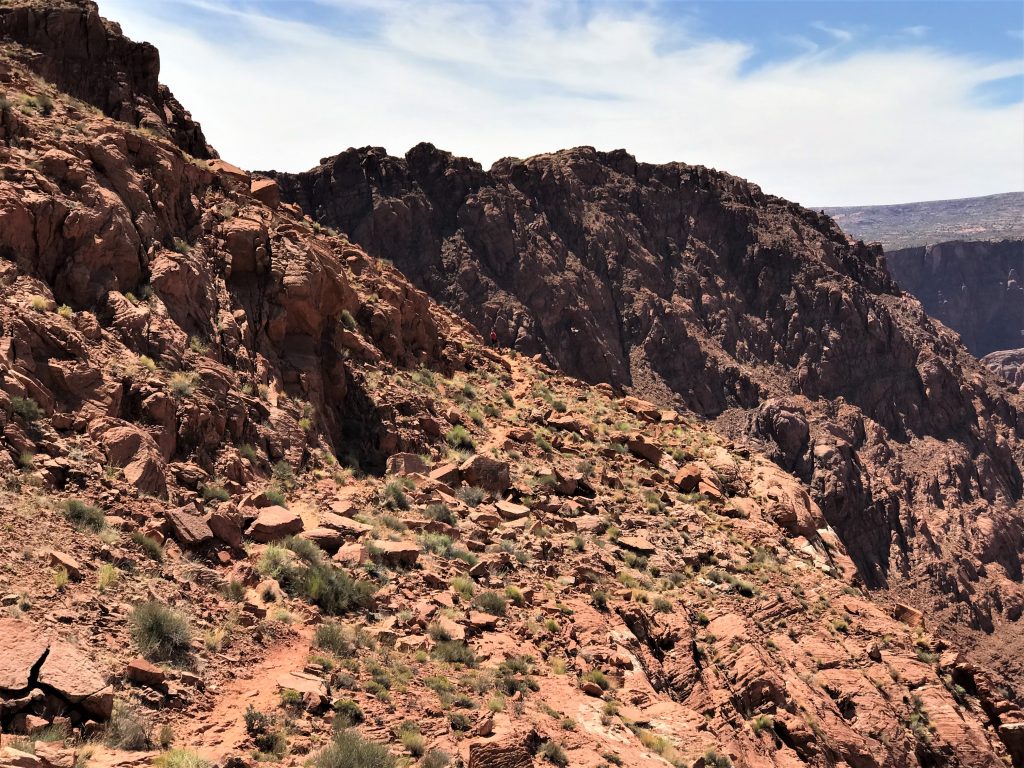
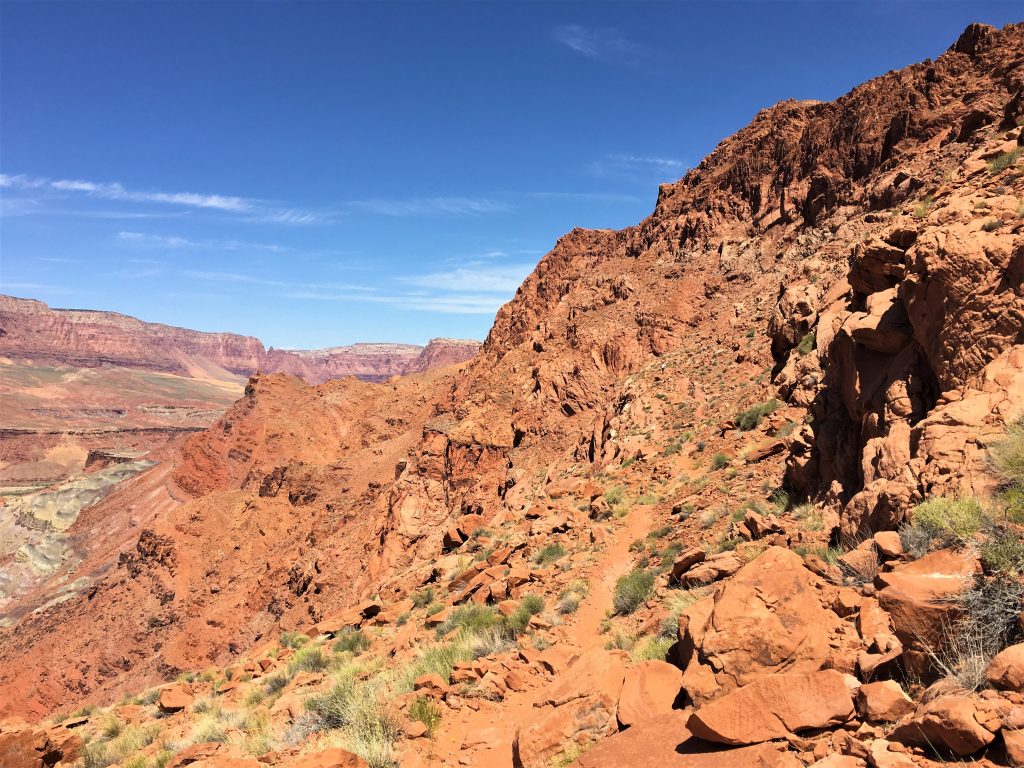

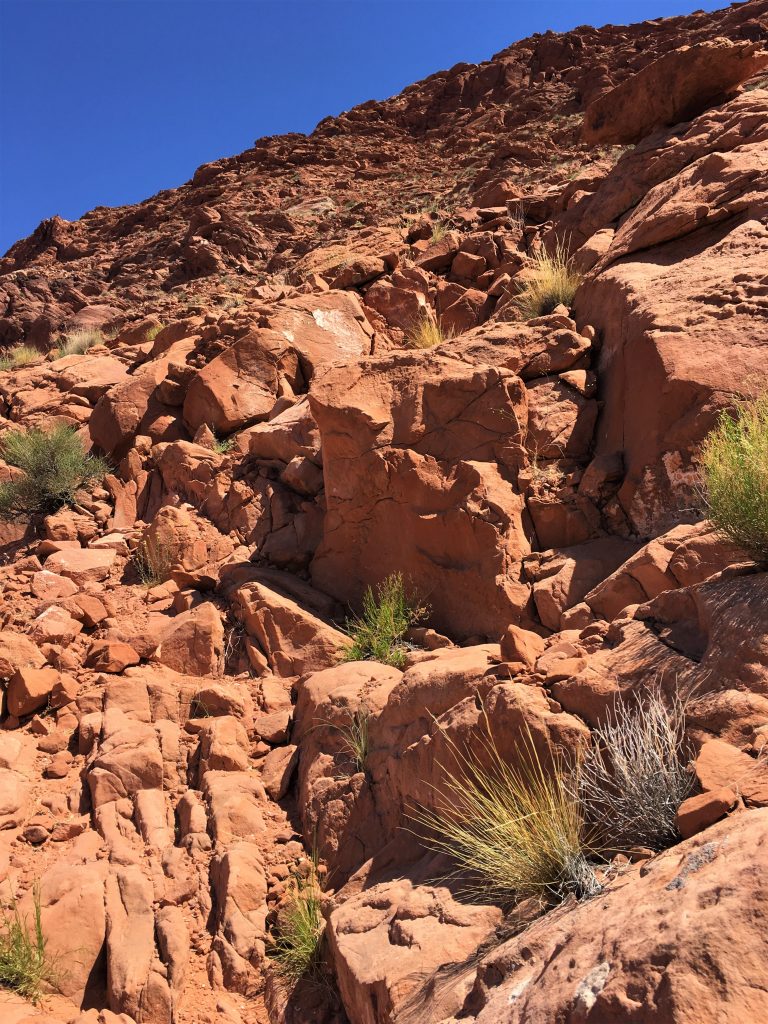
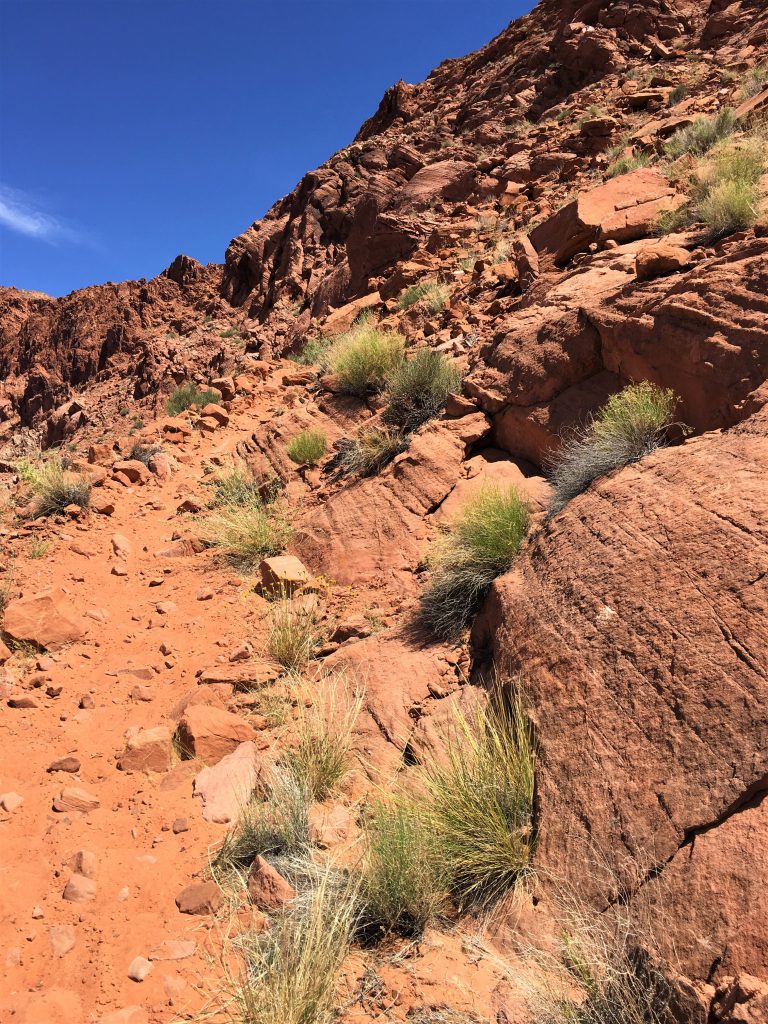

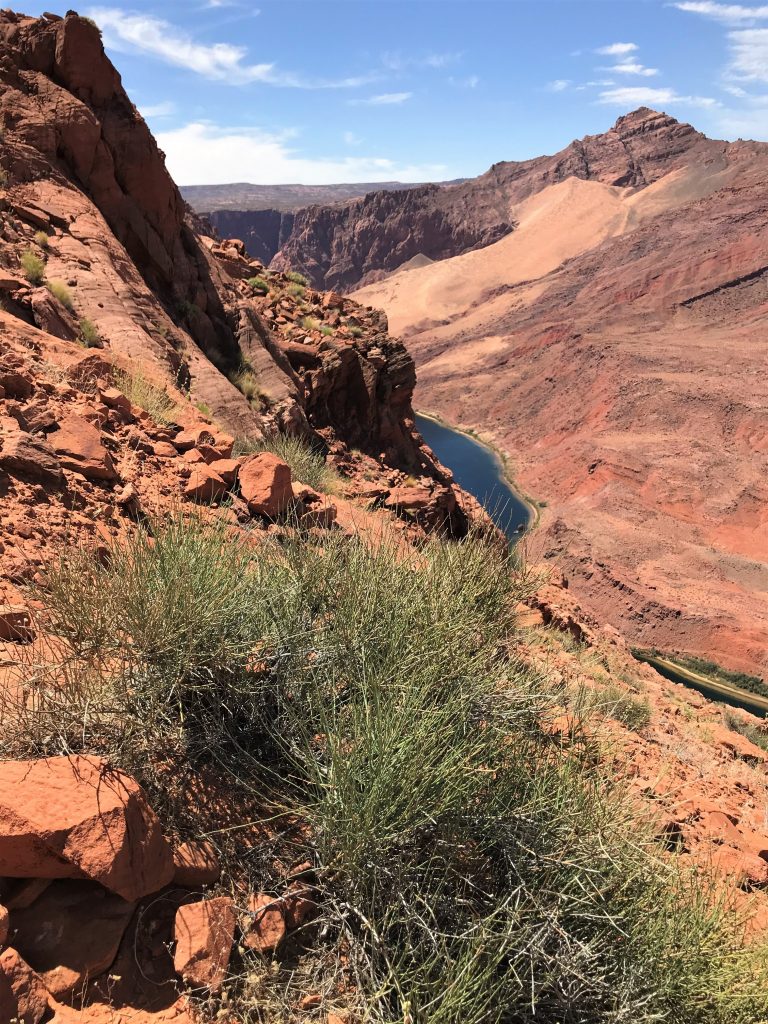
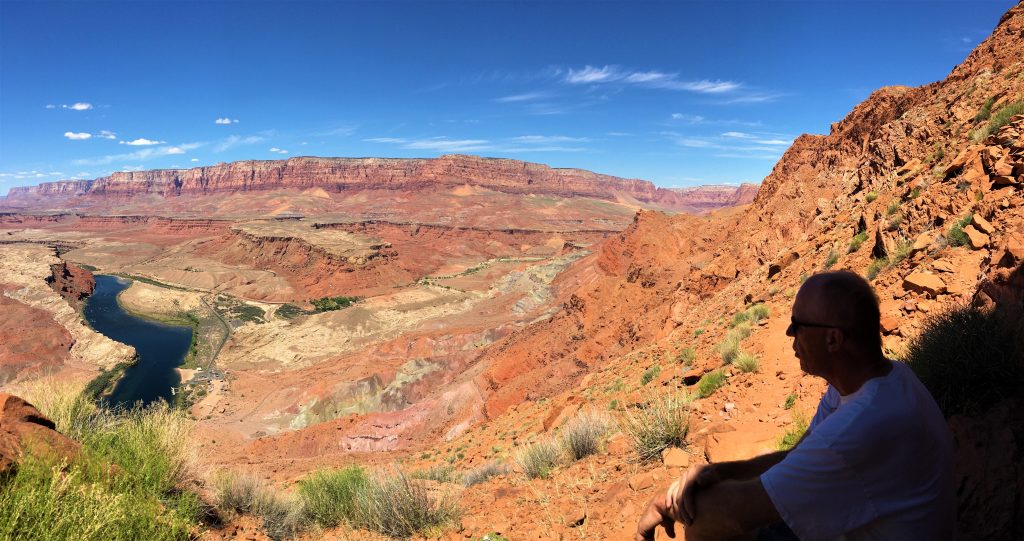

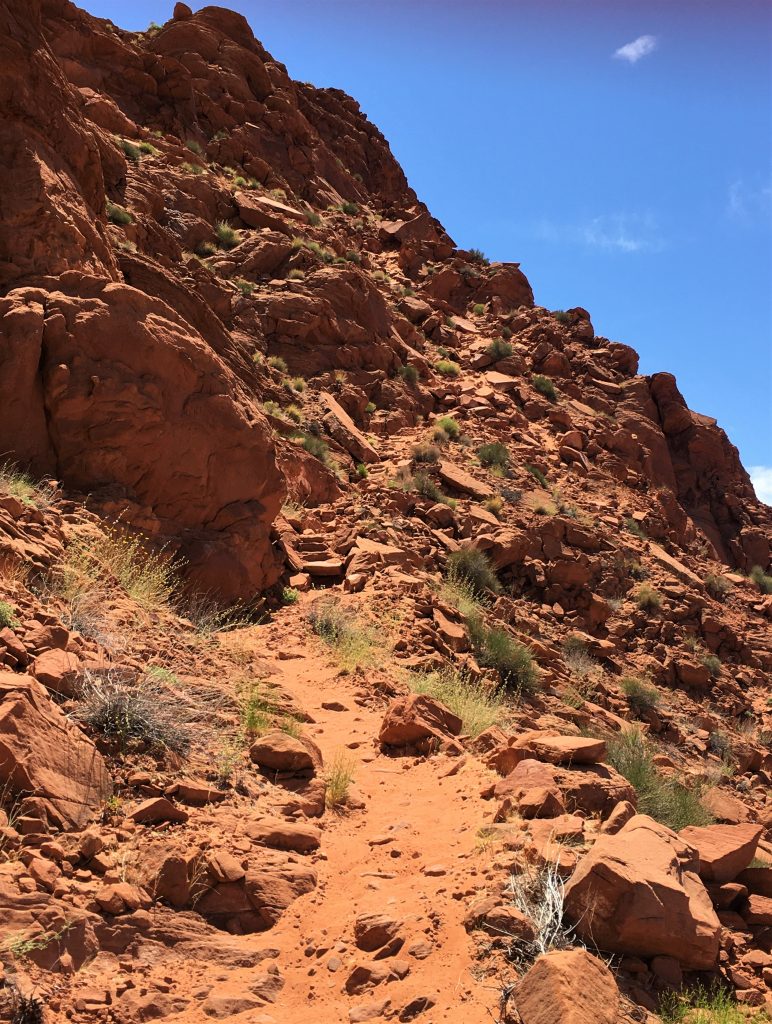
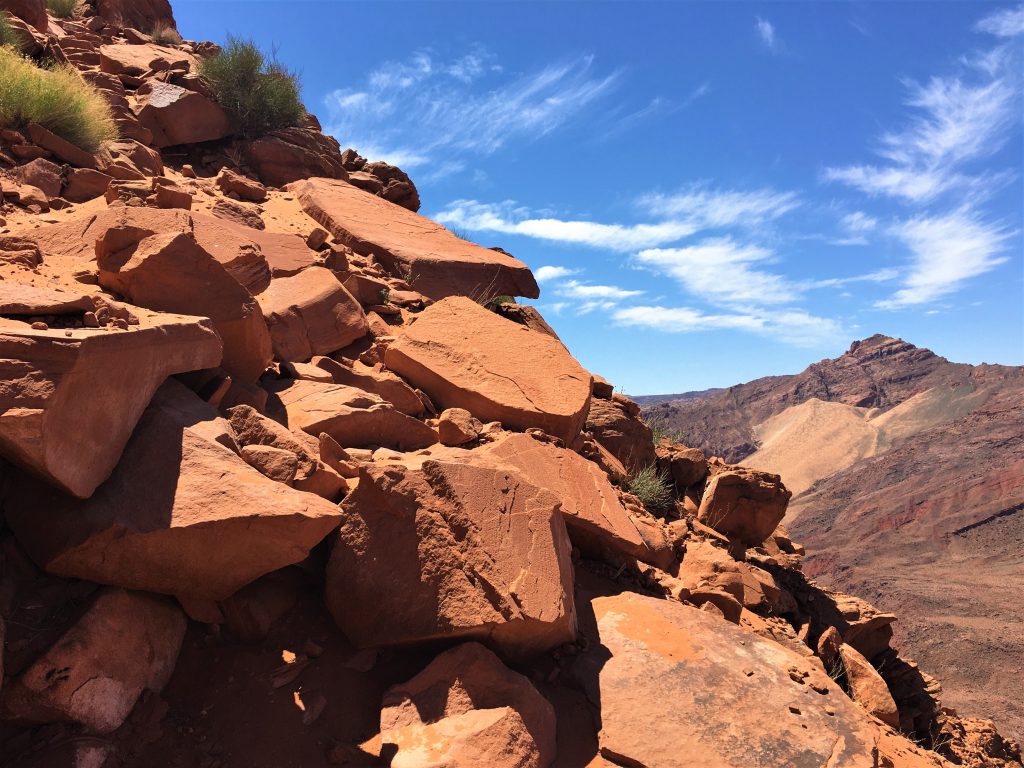
Yes. This is the trail. . .
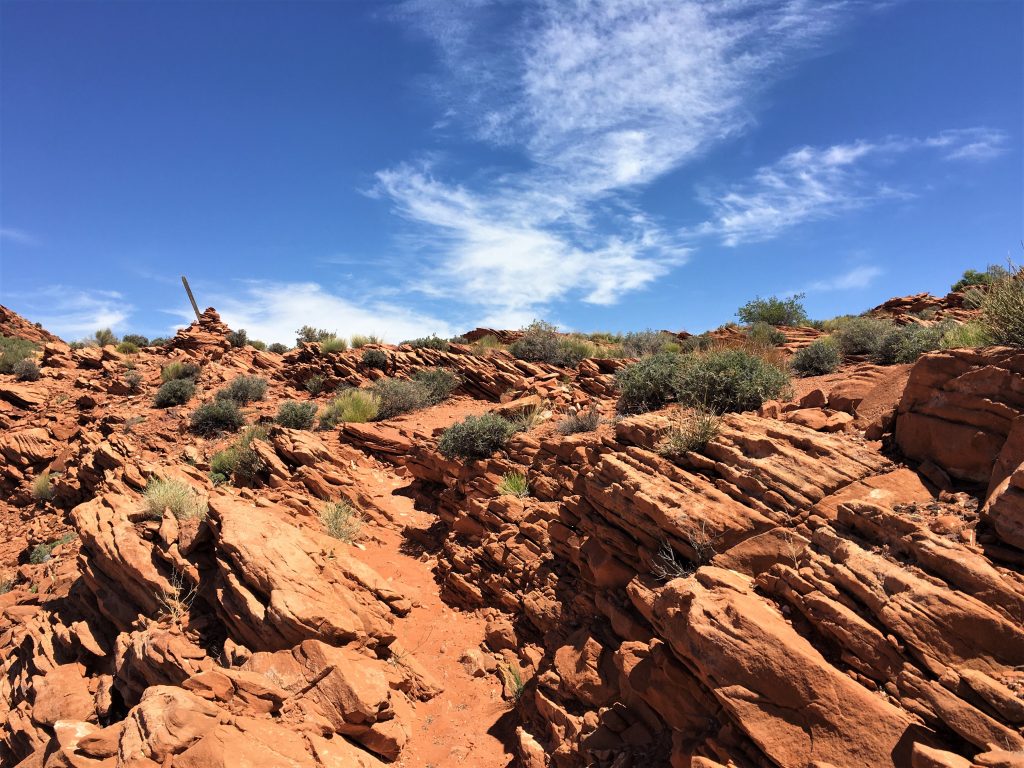
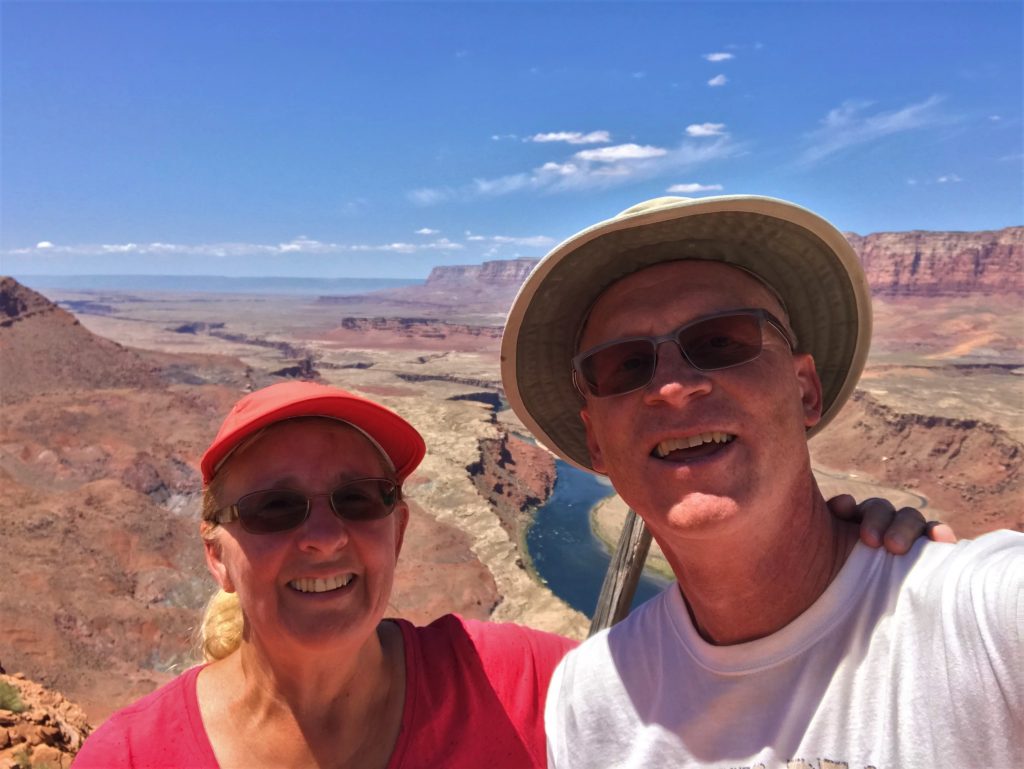
Time to look around the top!

But they’d moved on by the time I walked over. : (
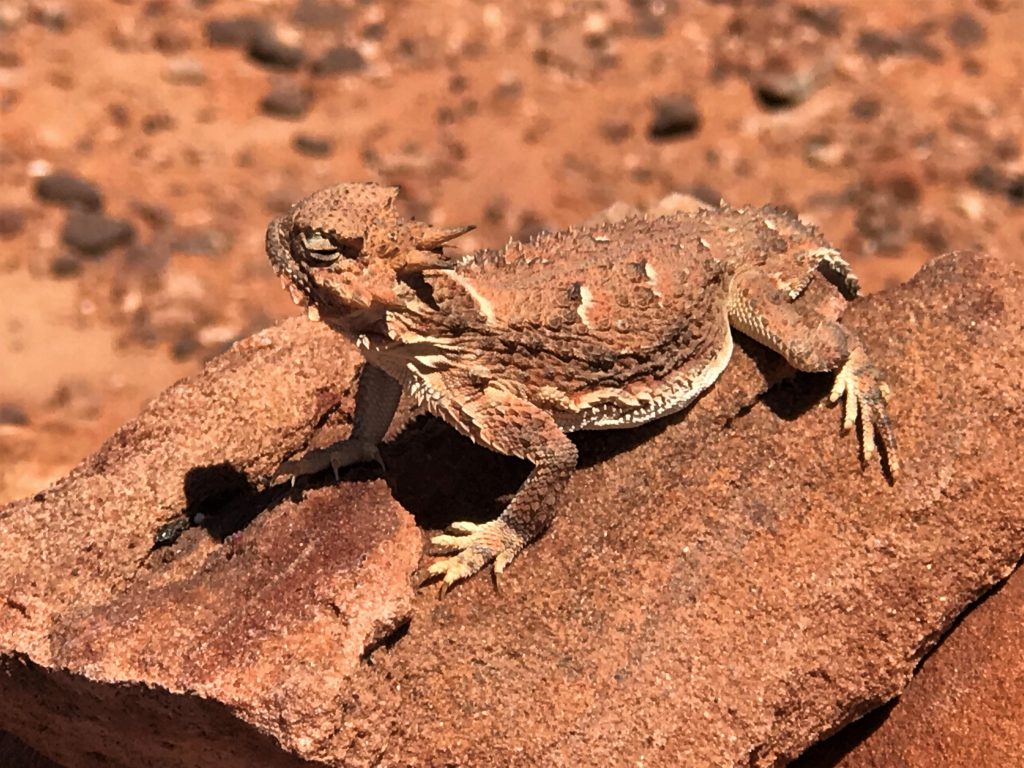
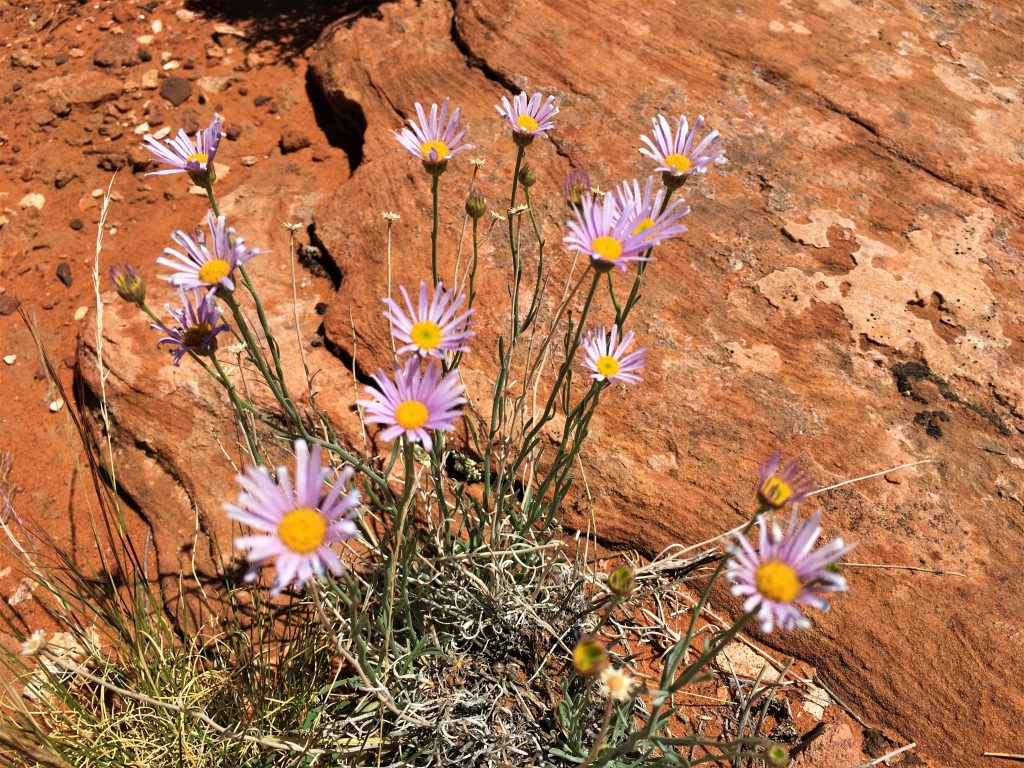
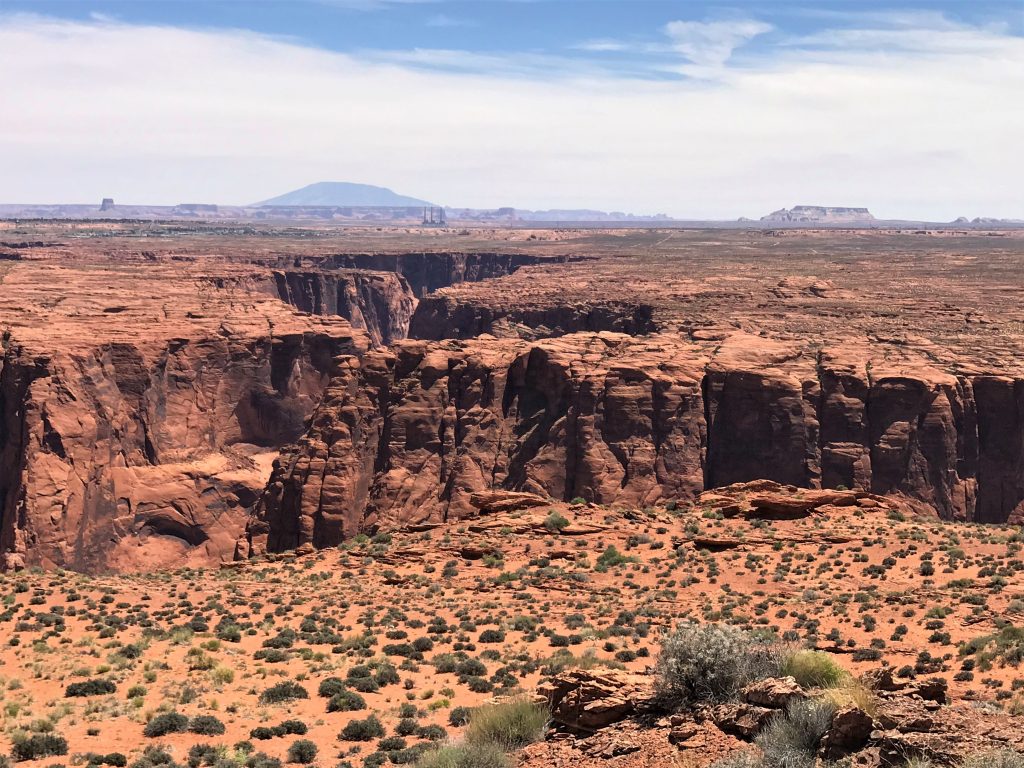
That bump in the background is Navajo Mountain.
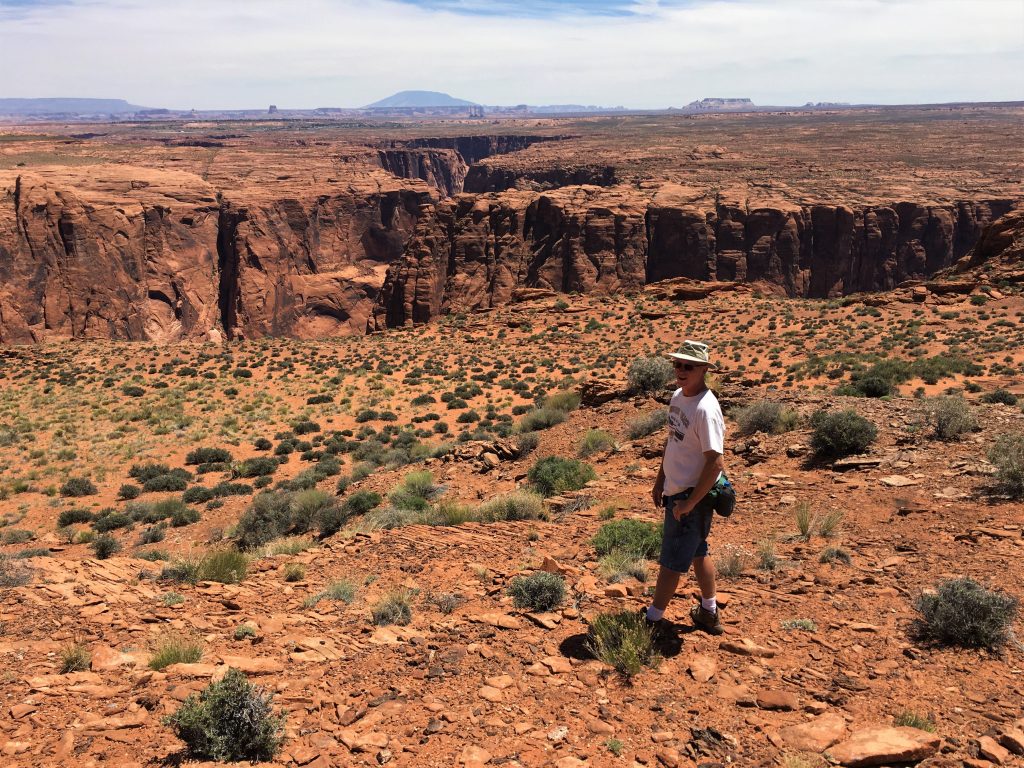
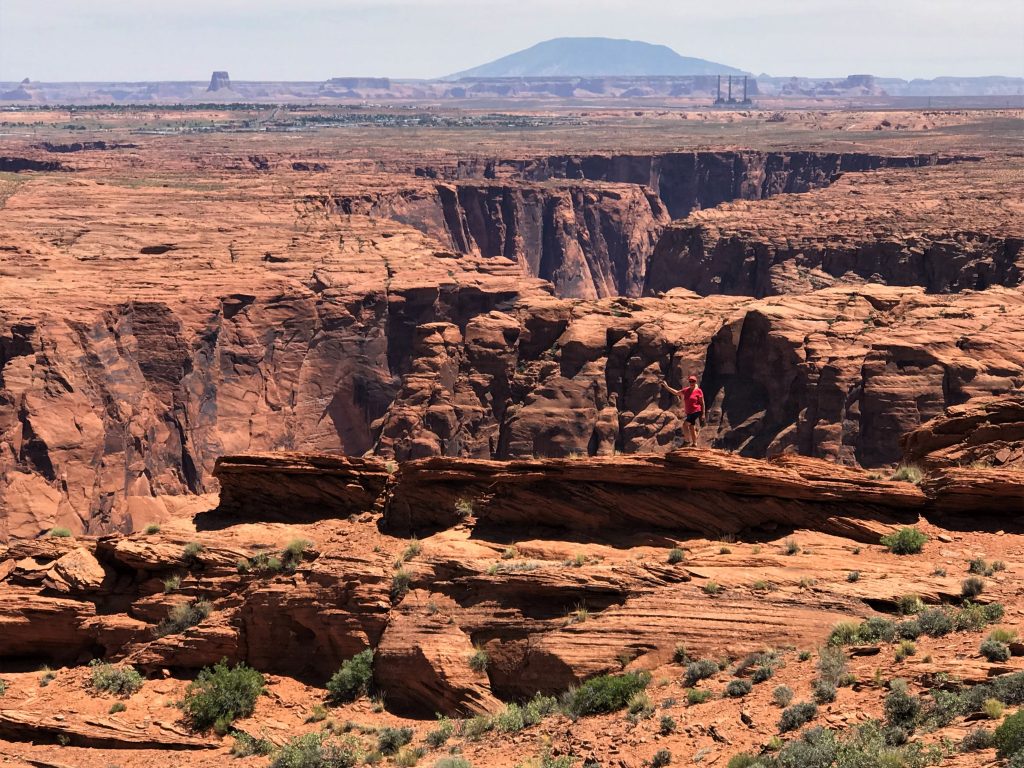
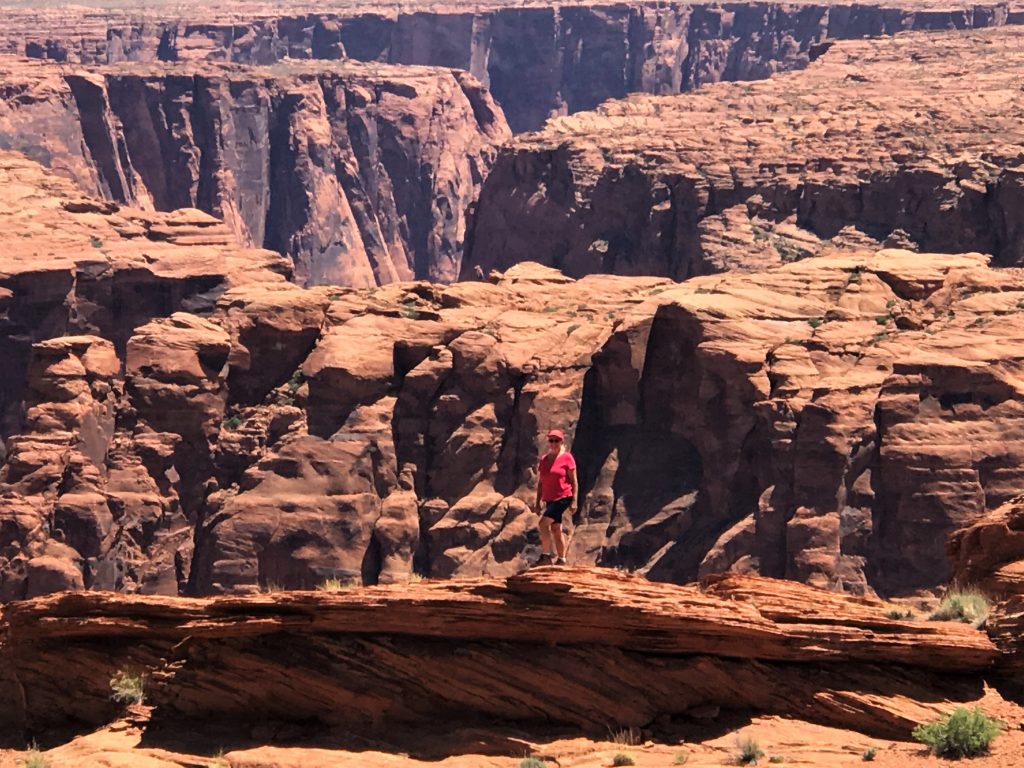
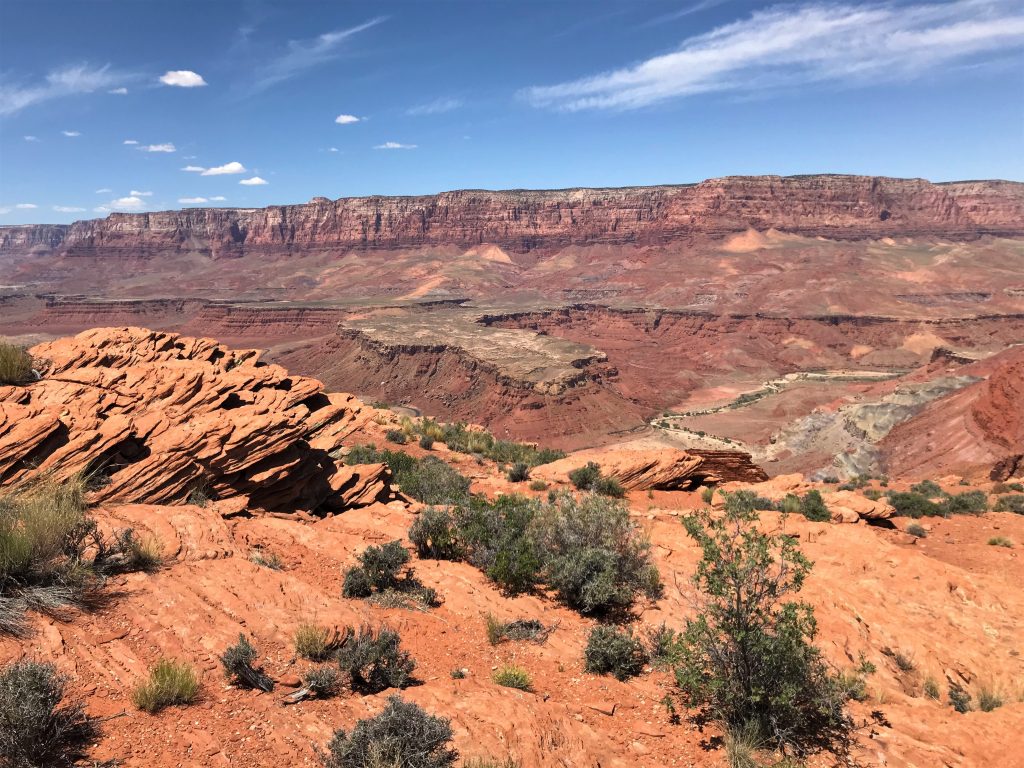
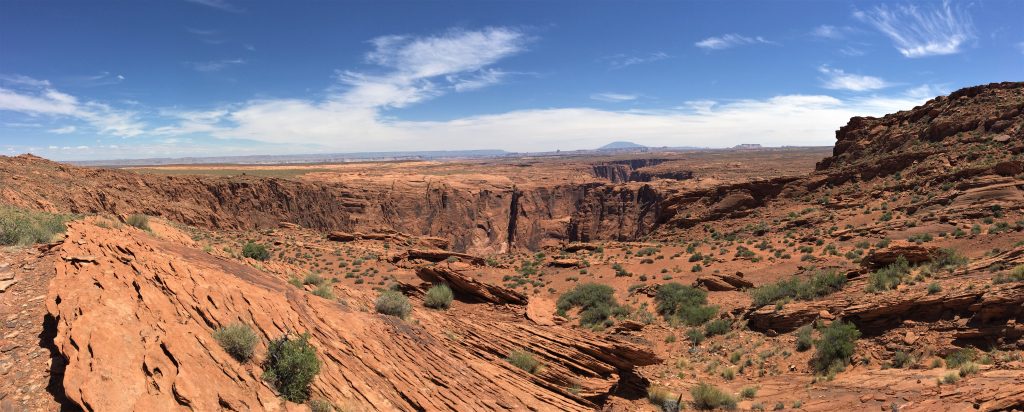
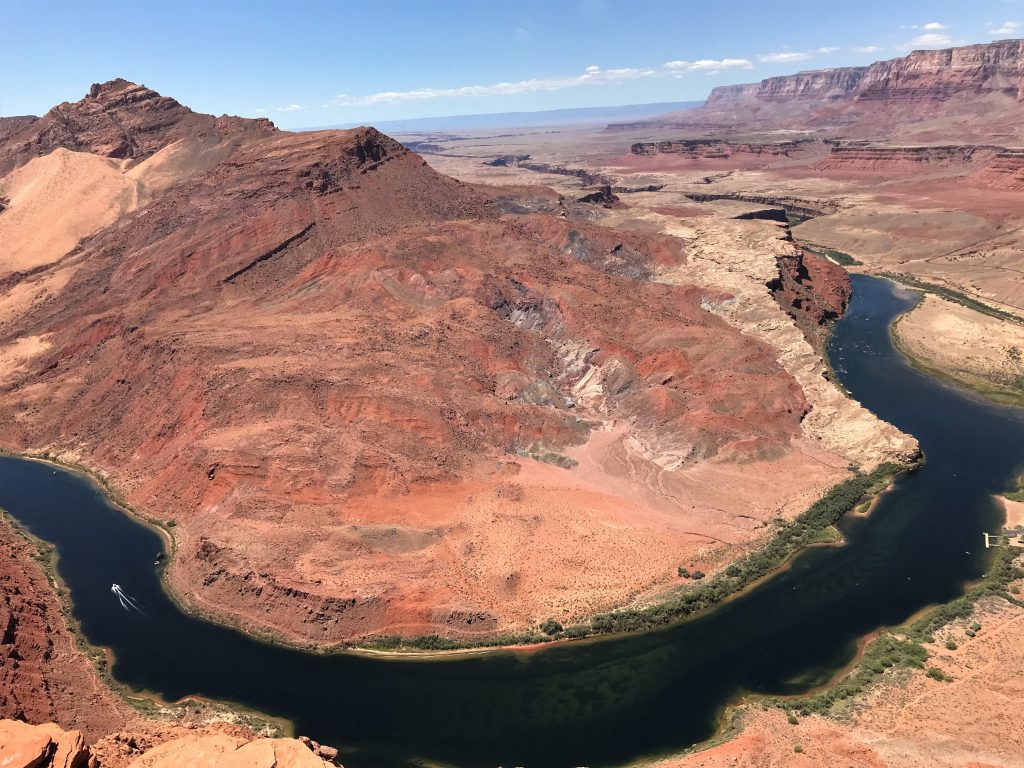
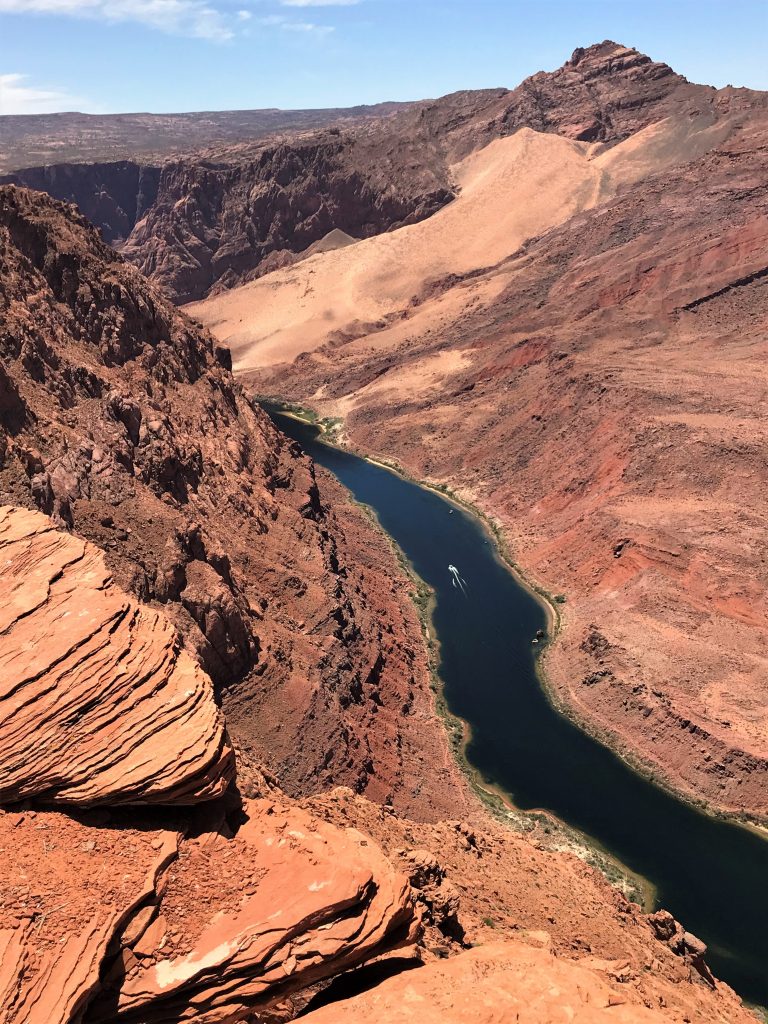
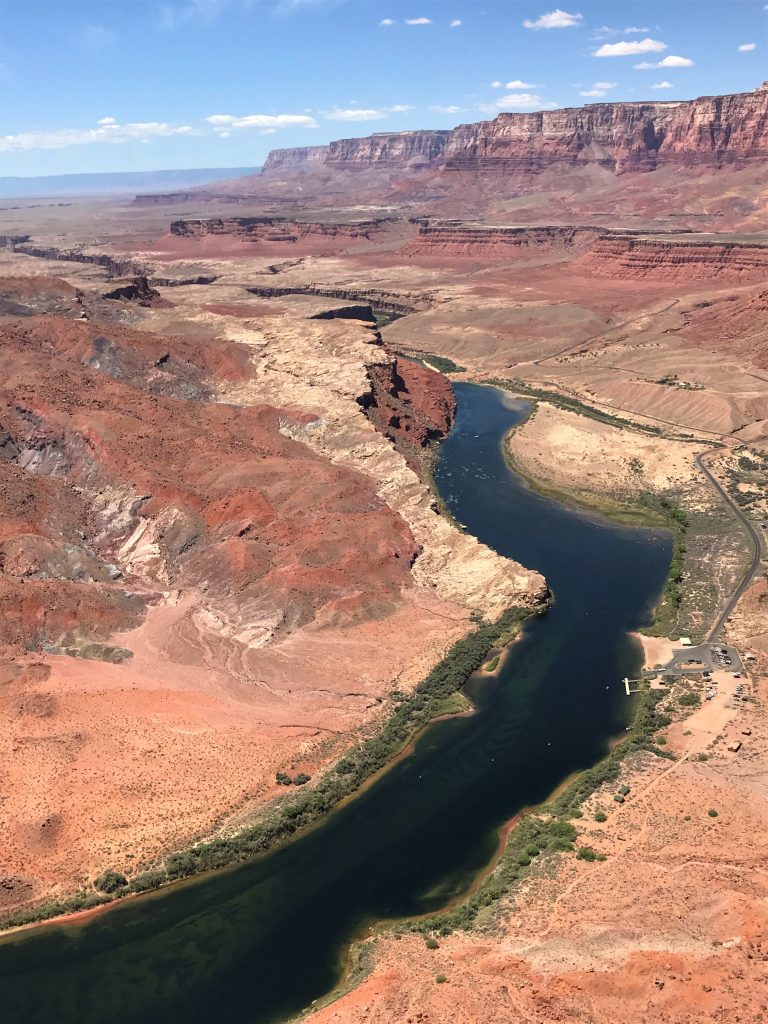
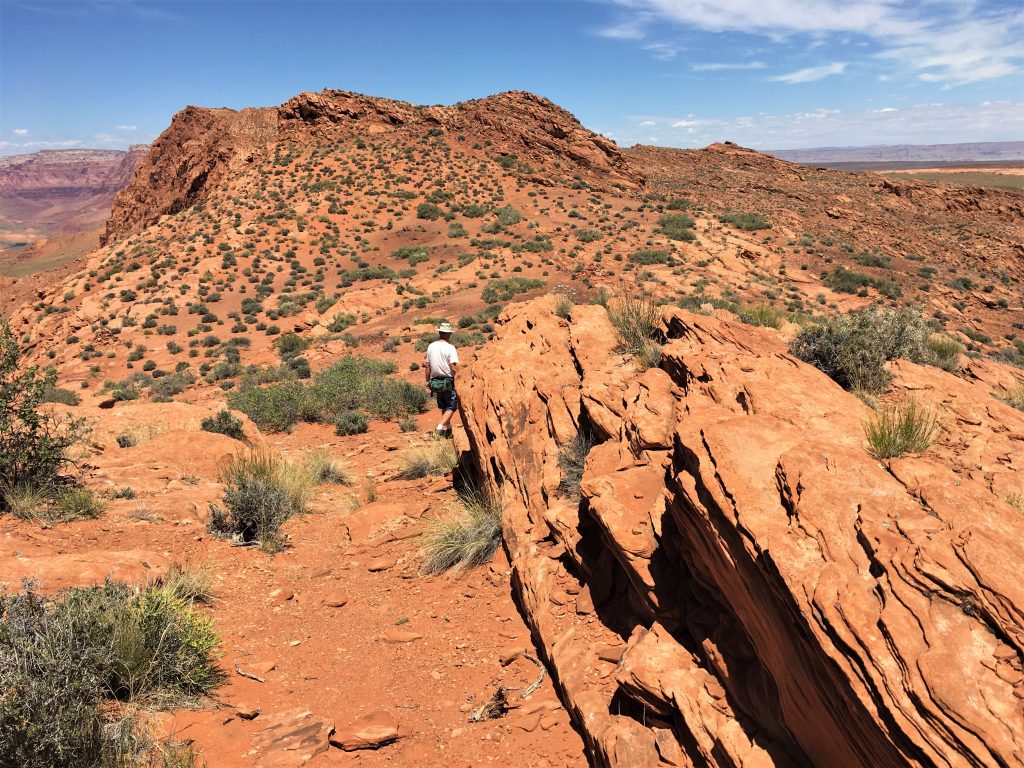
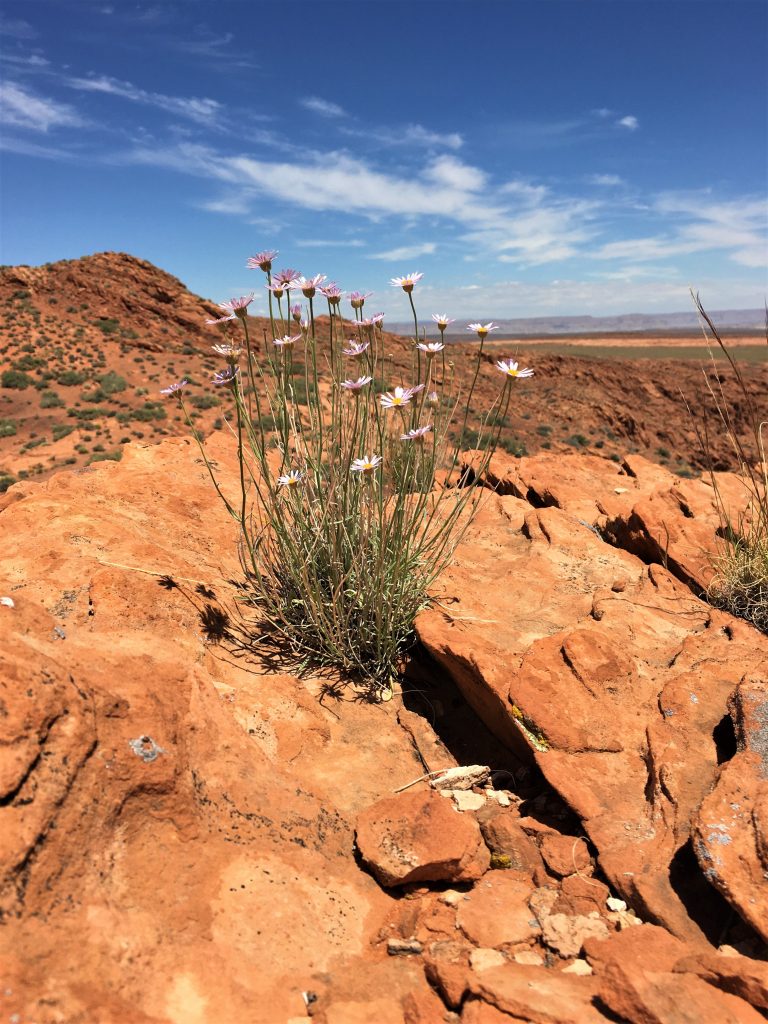
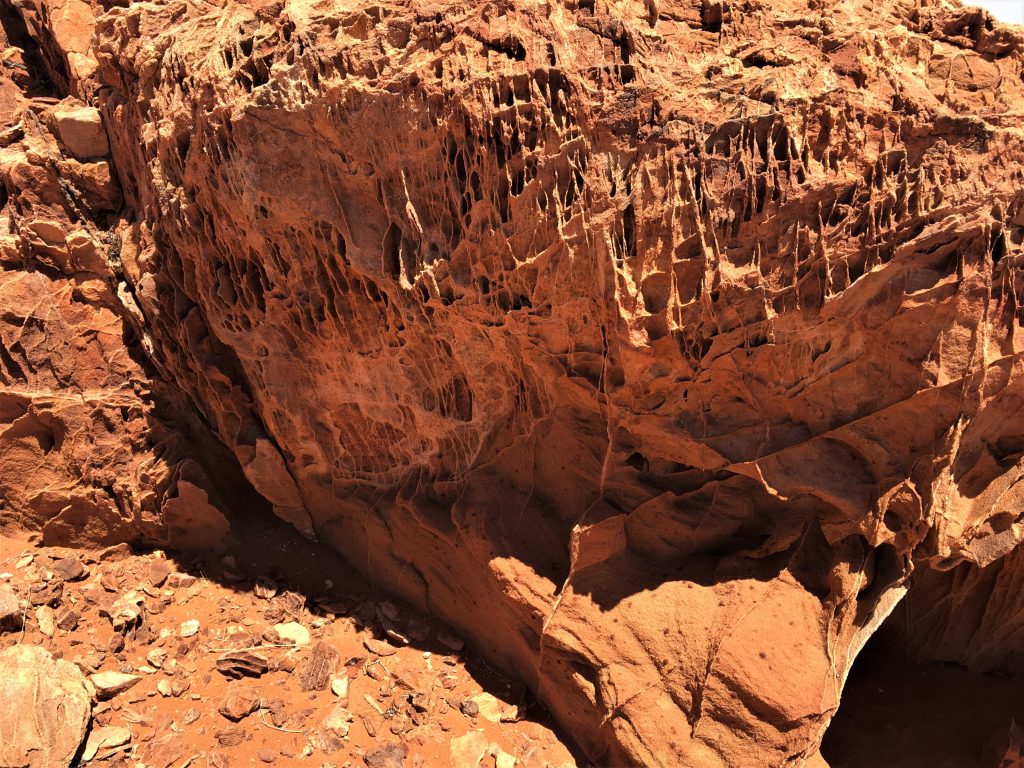
It’s not!
But it sure looks like the rock is dripping up instead of down.
At least to us.
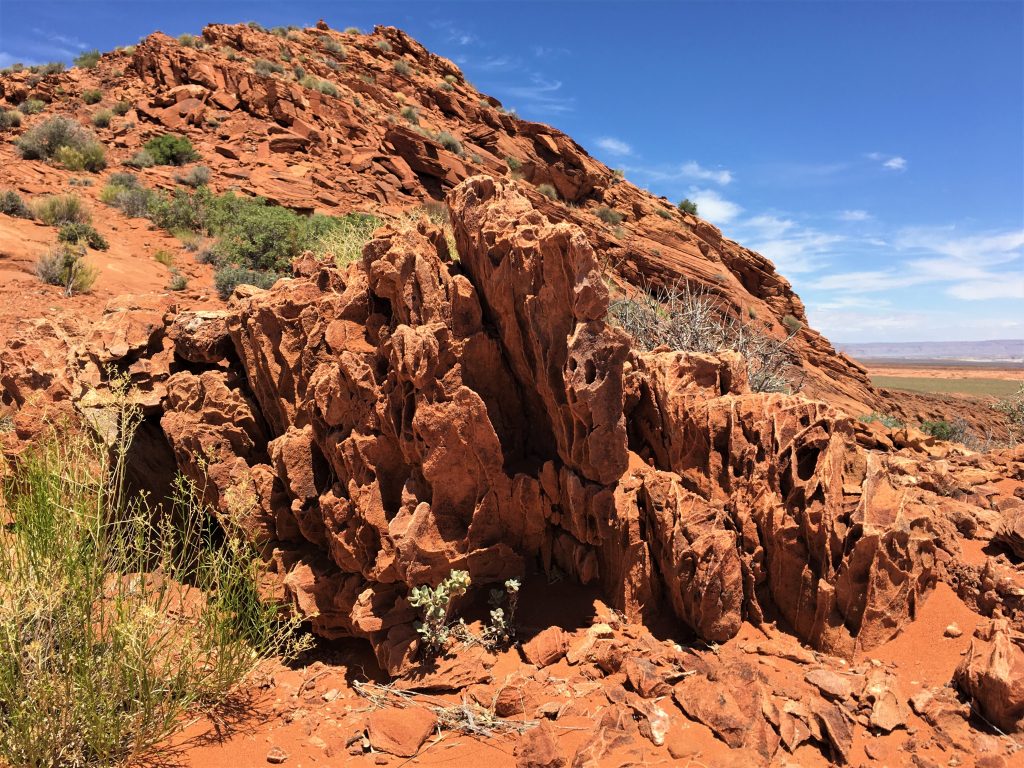
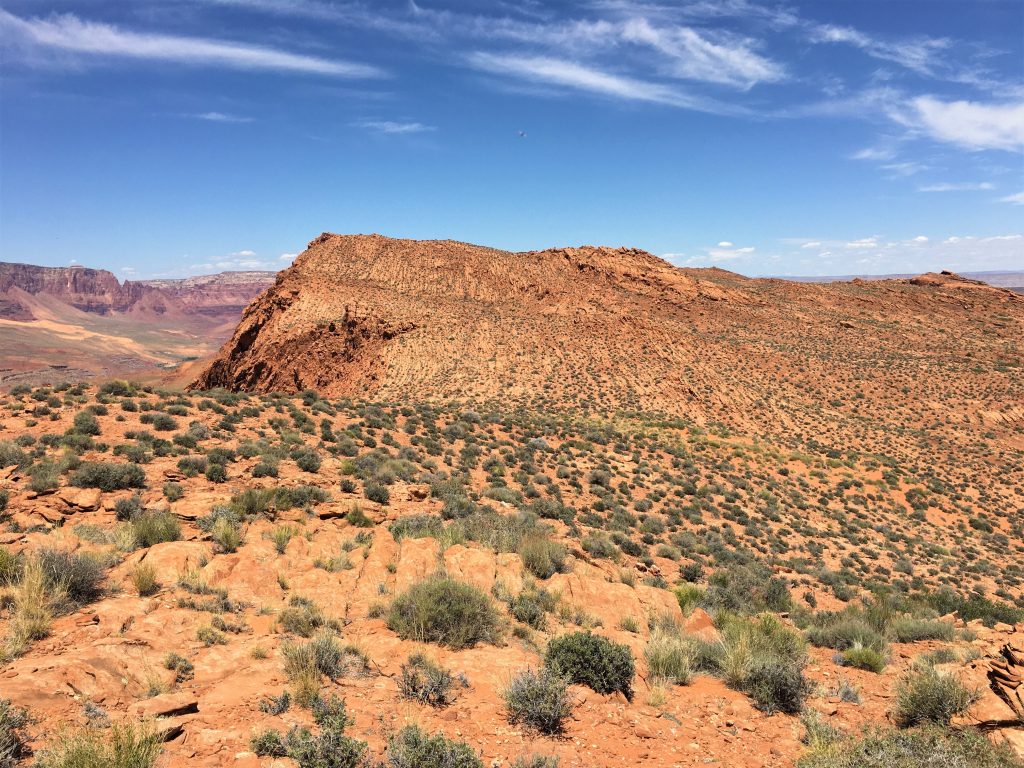
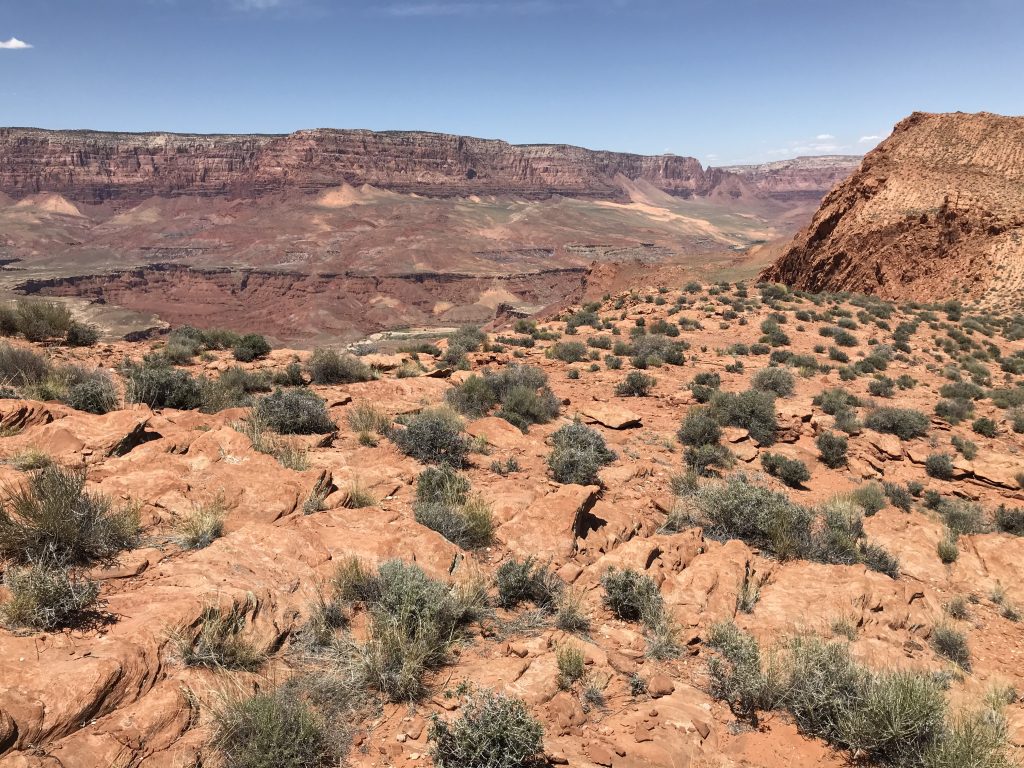
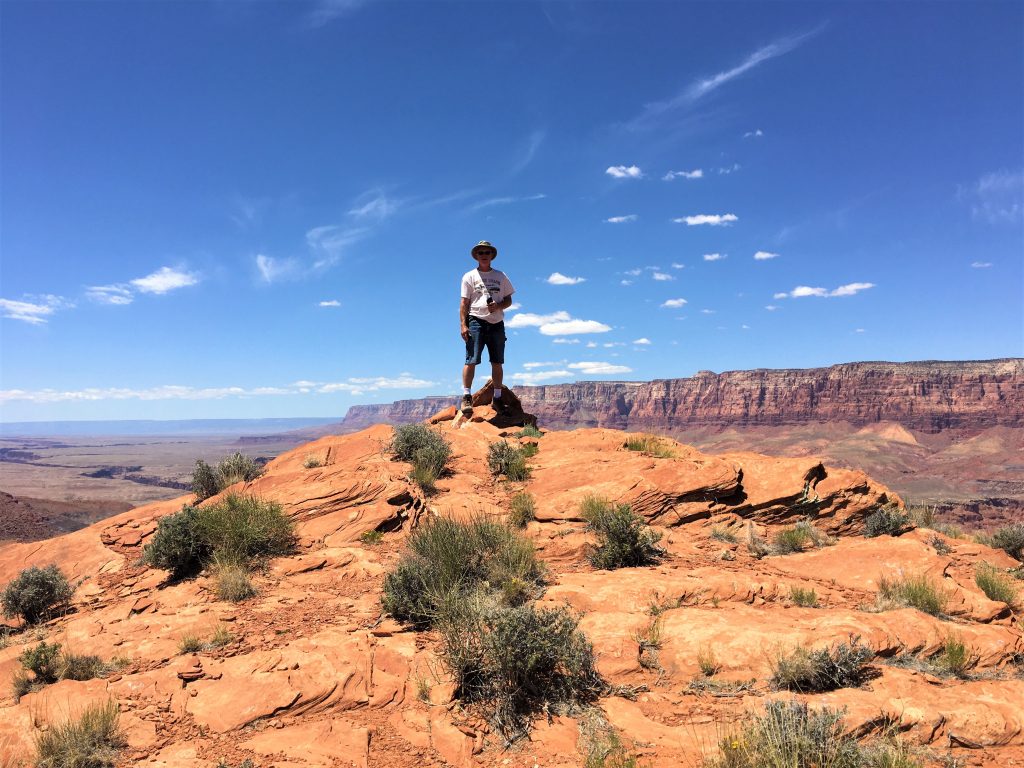
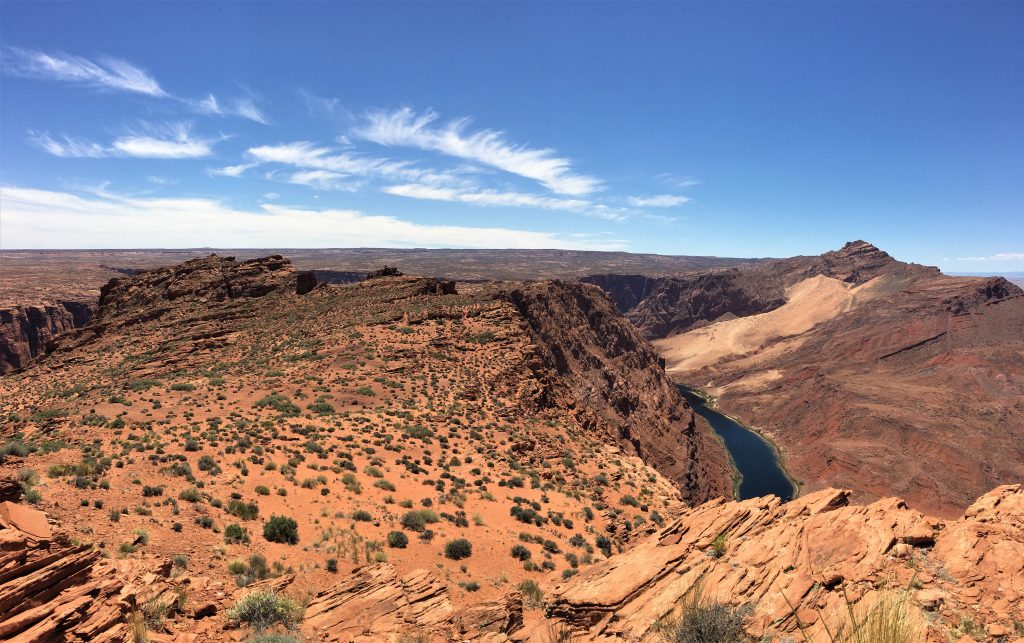
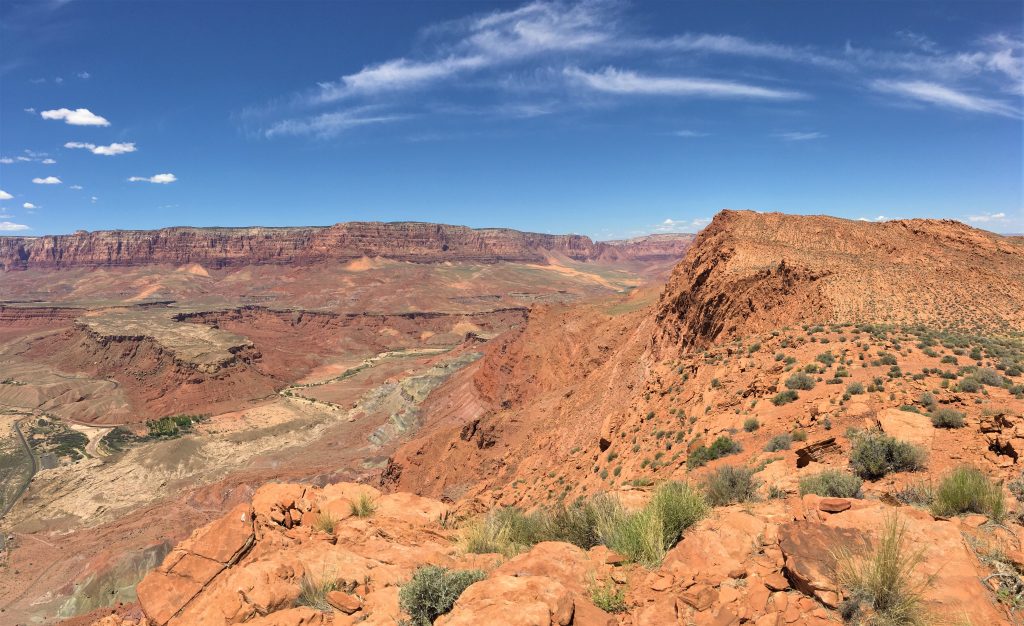
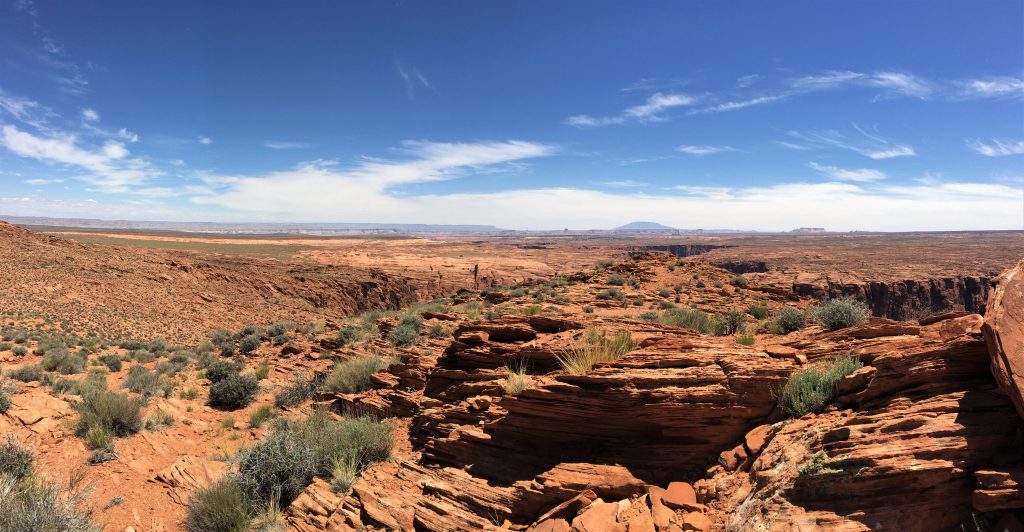
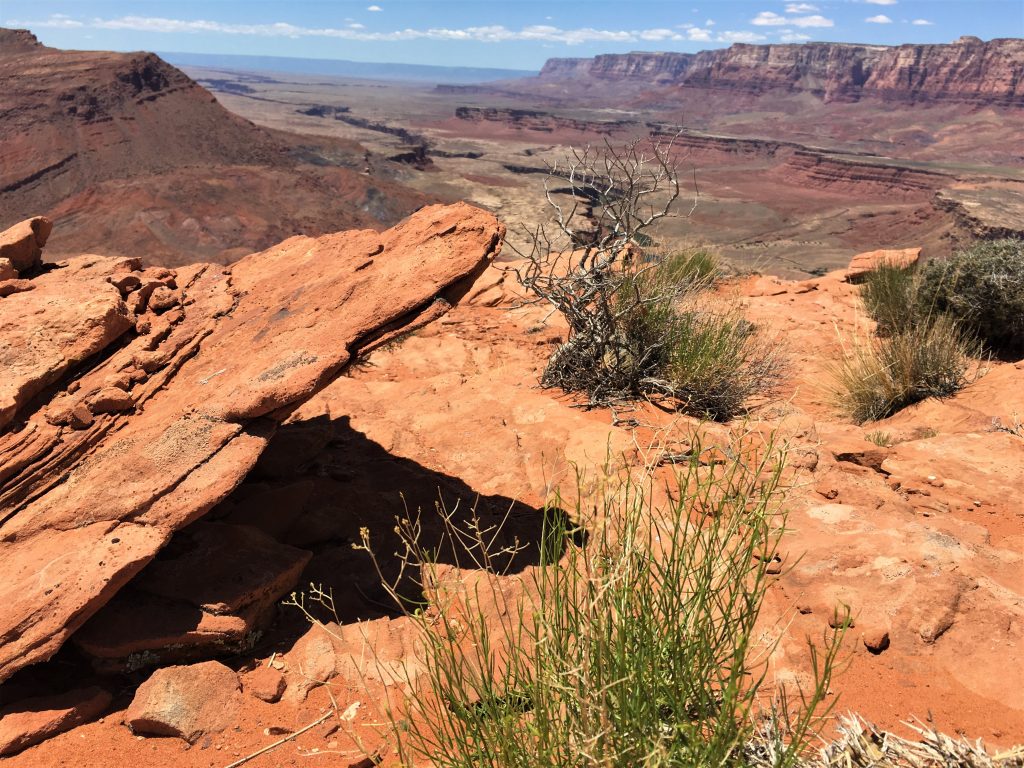
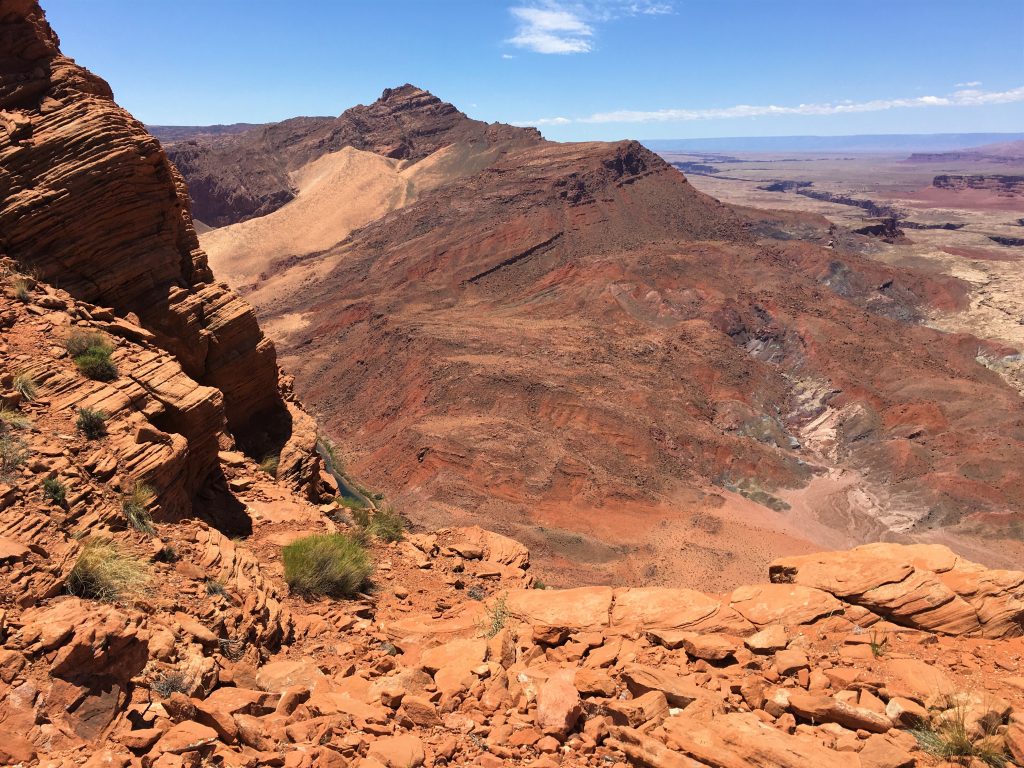

Oftentimes, going back down a steep hill is more difficult than going up!
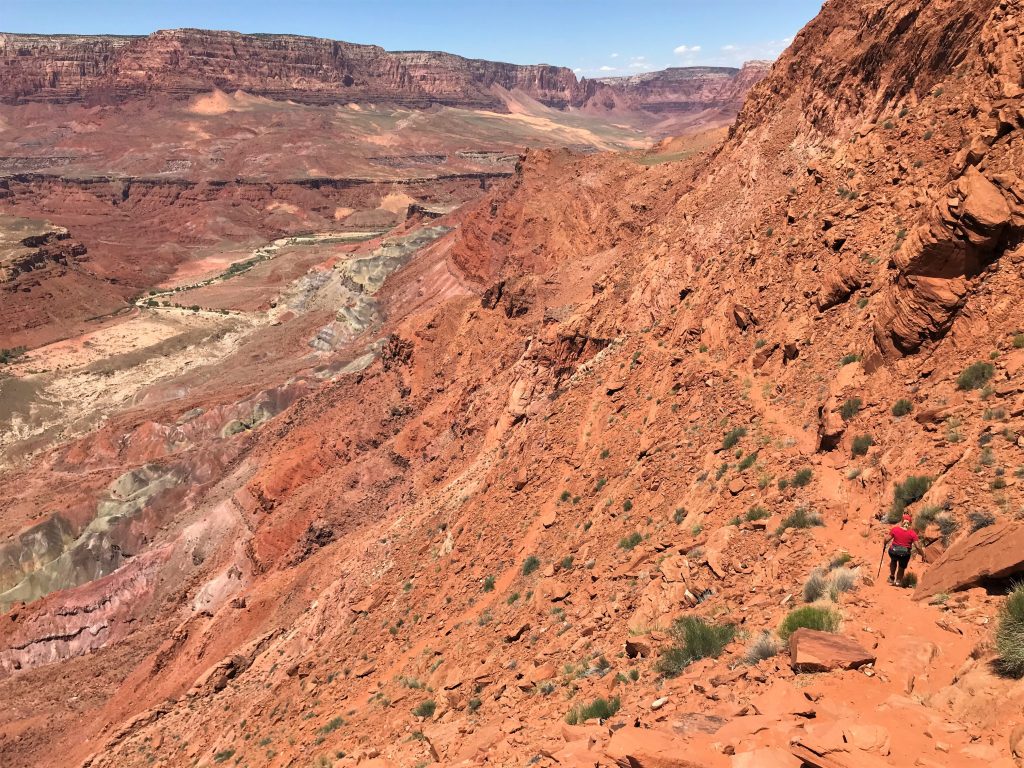
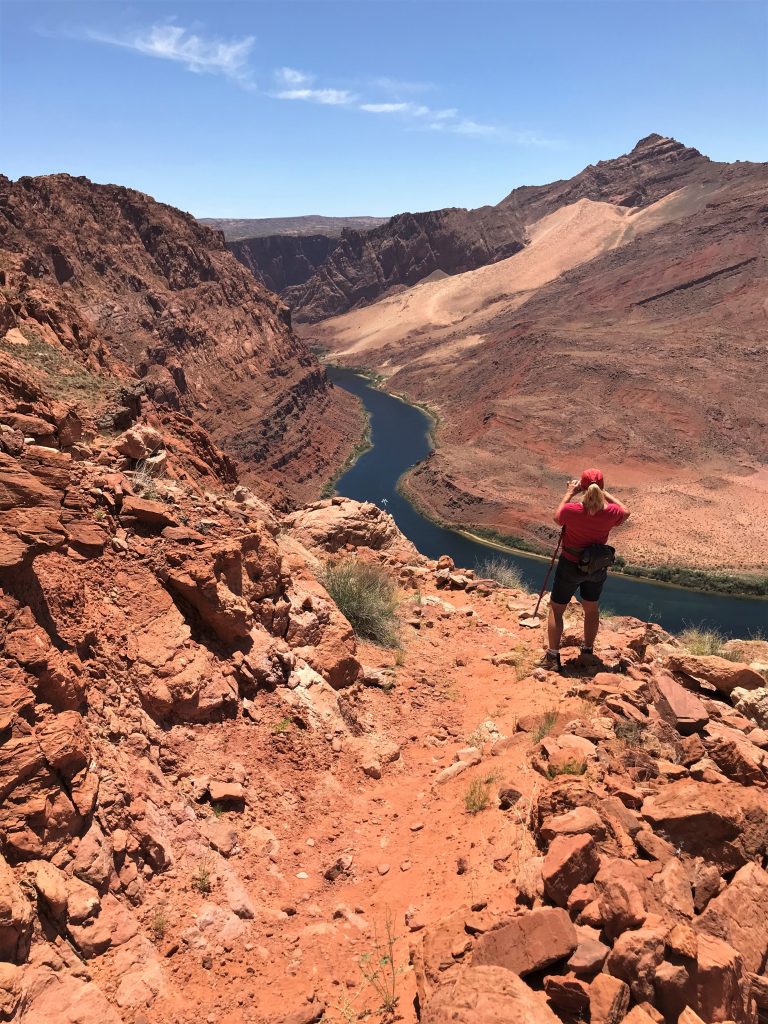
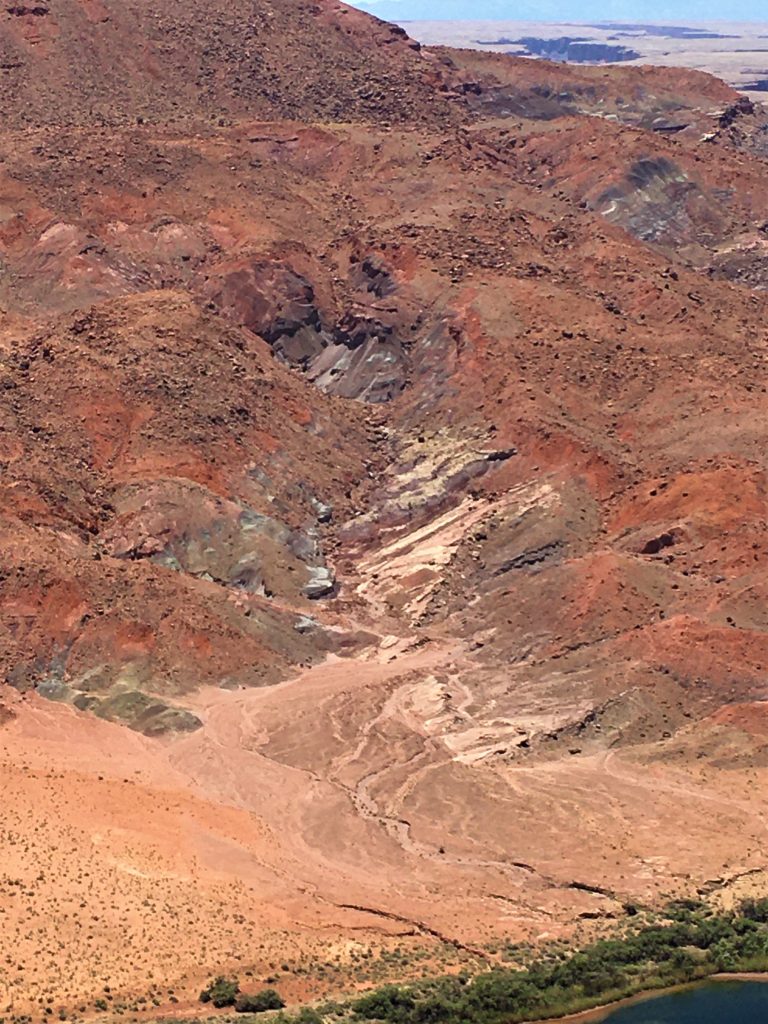
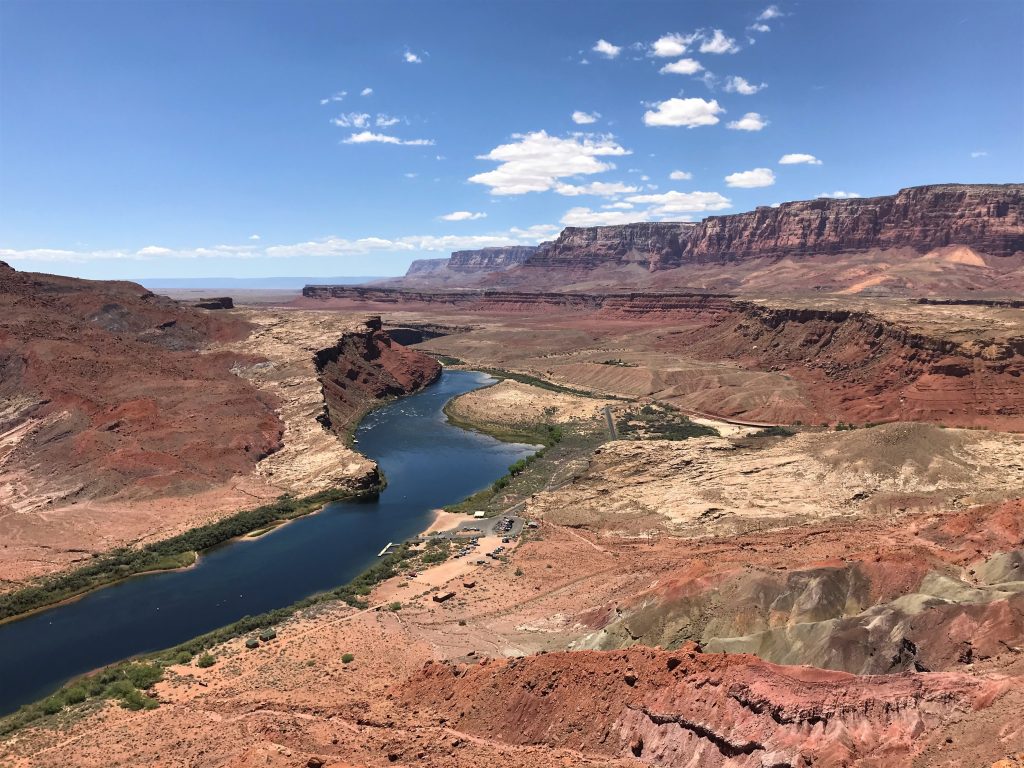
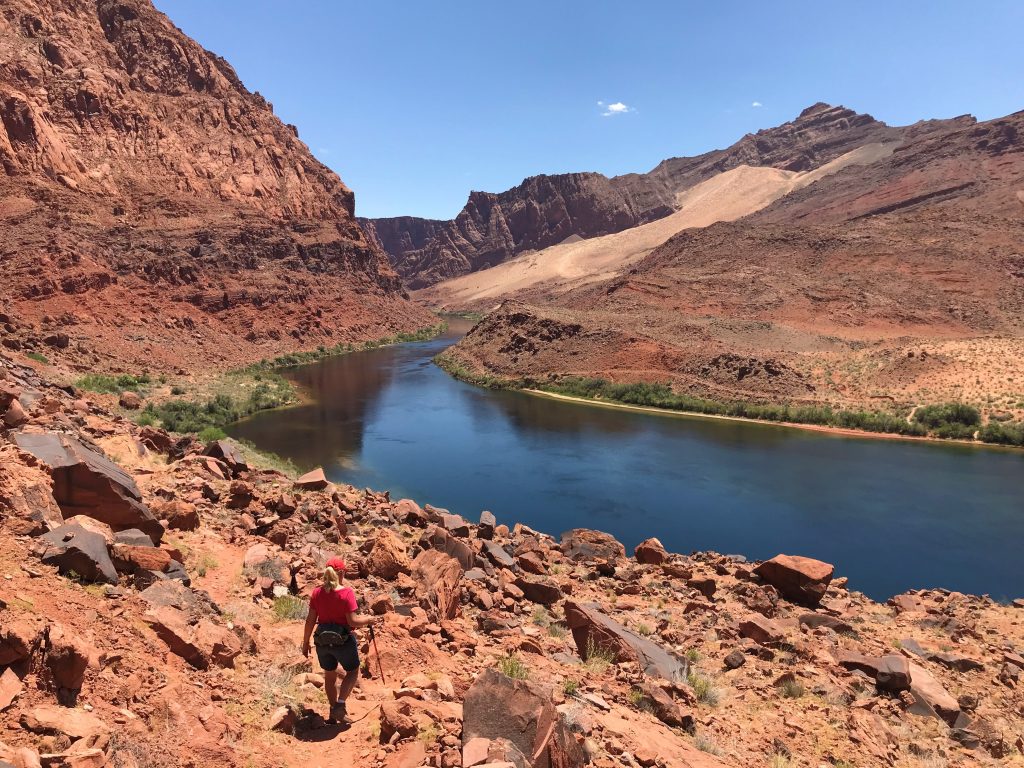
Even though the sun was blazing hot and we were worn out from our trek, I had made a silent vow to you, my faithful readers, to get you some history of this place. It’s also for us because this is a journal of our travels. So here you are. At great physical expense to me. The history of Lees Ferry – at least some of it anyway.
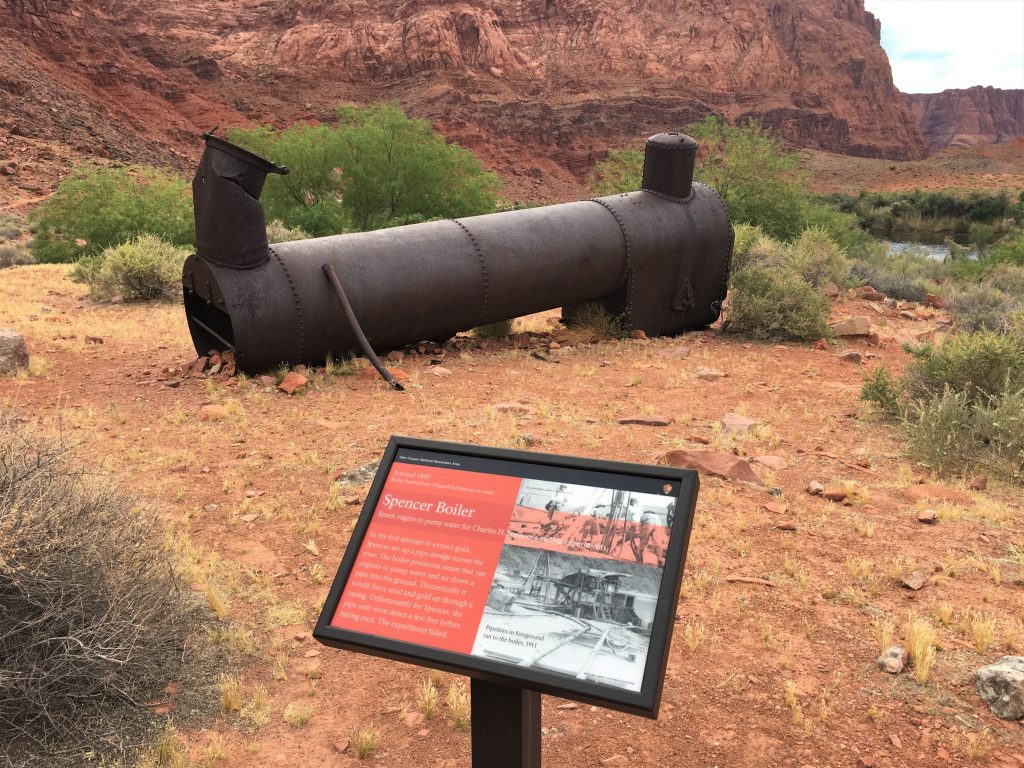
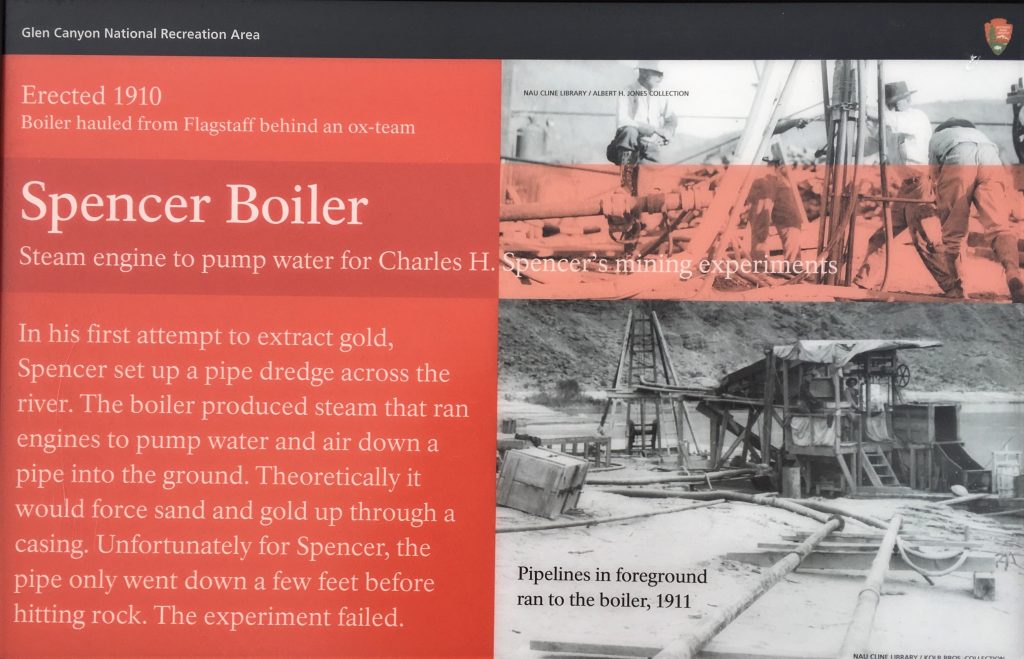
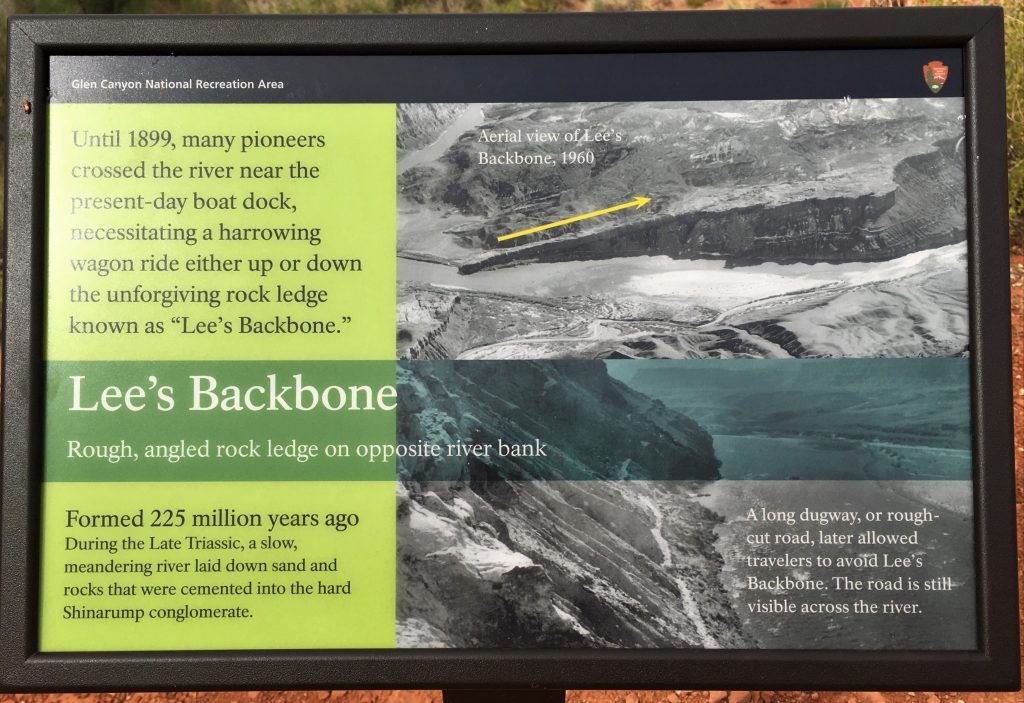
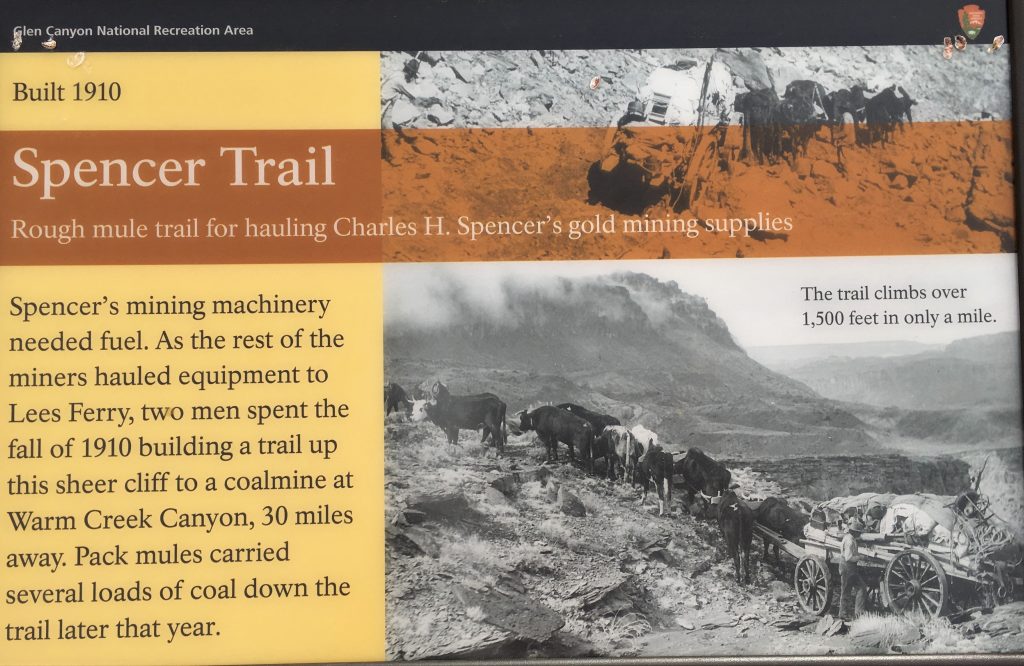
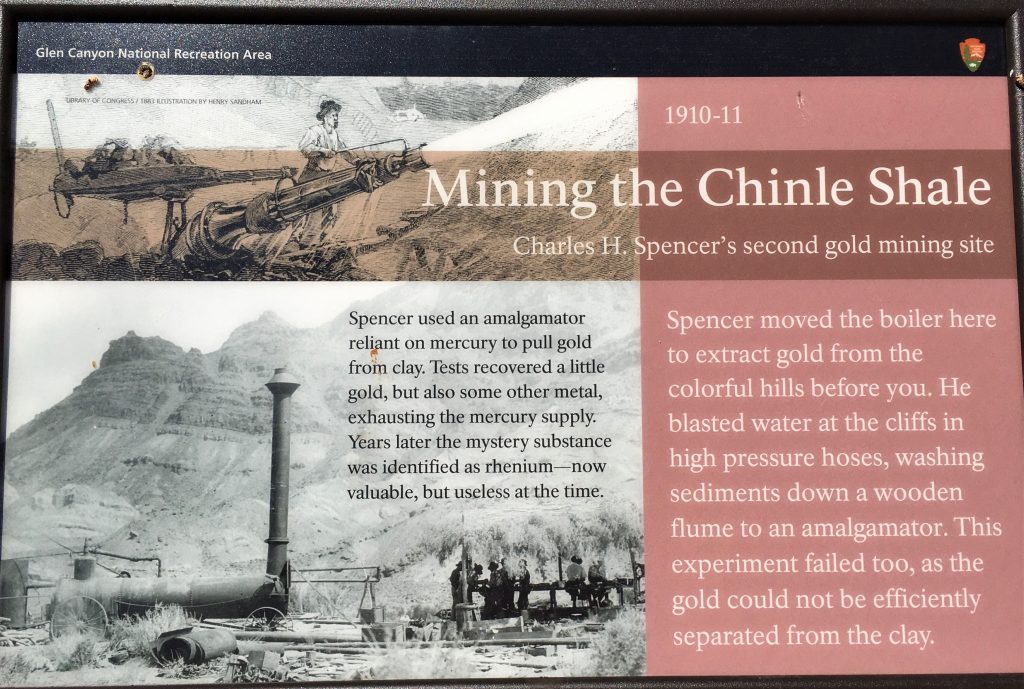
Rhenium is used with platinum as catalysts in the production of lead-free, high-octane gasoline. The metal is used in alloys for jet engines and in tungsten and molybdenum based alloys. It is widely used as filaments for mass spectrographs. Rhenium is also used as an electrical contact material.
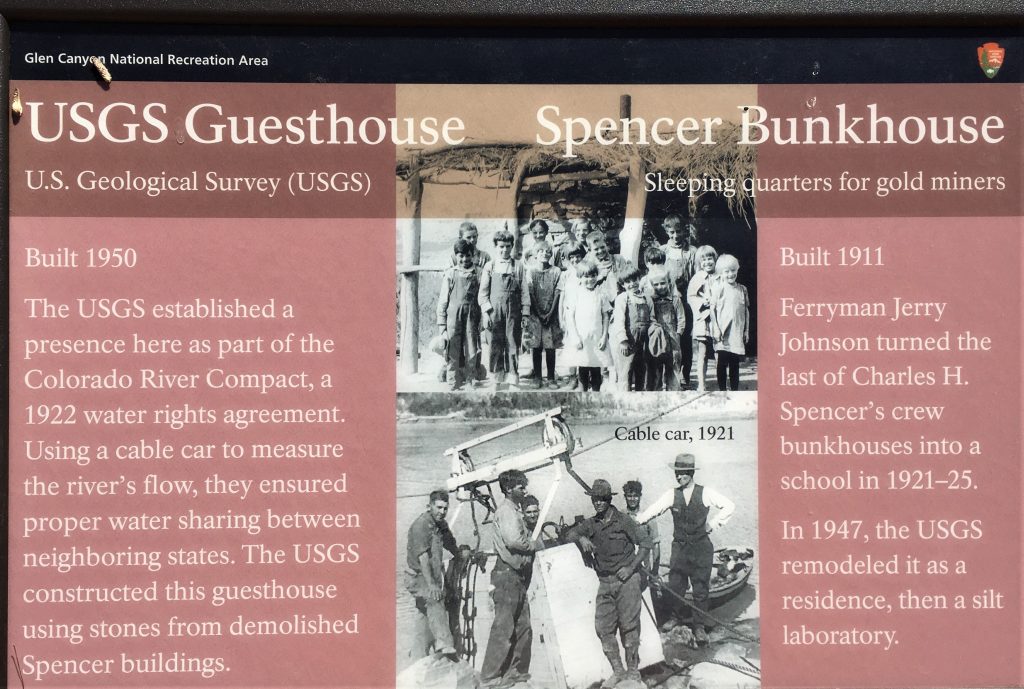
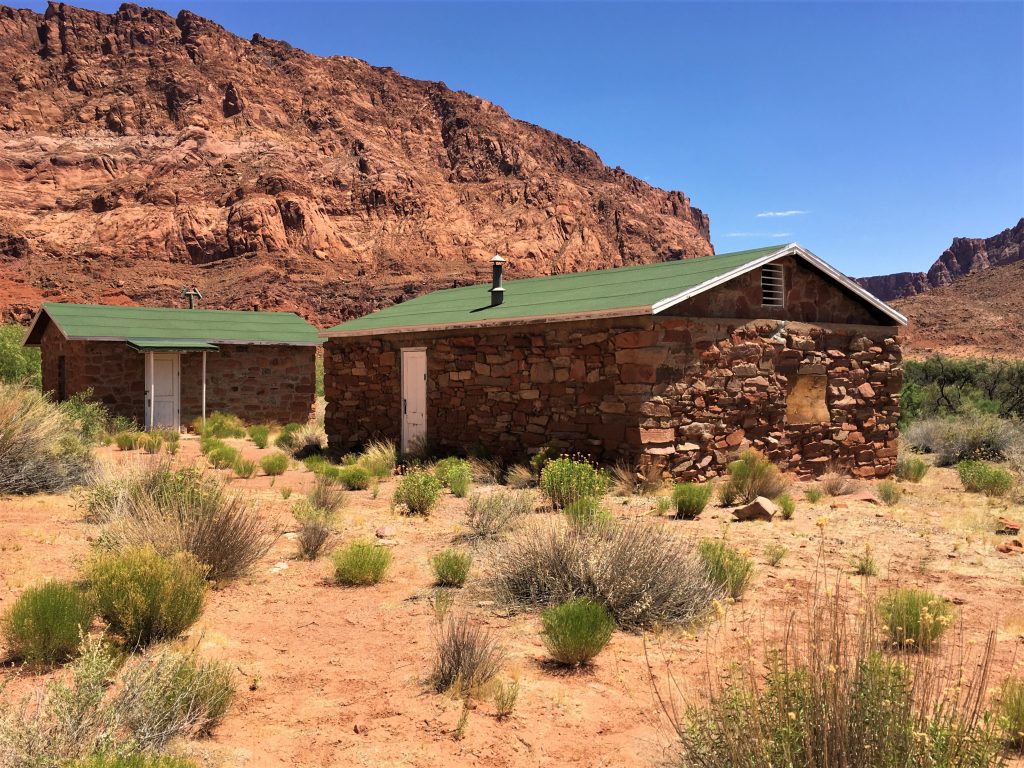
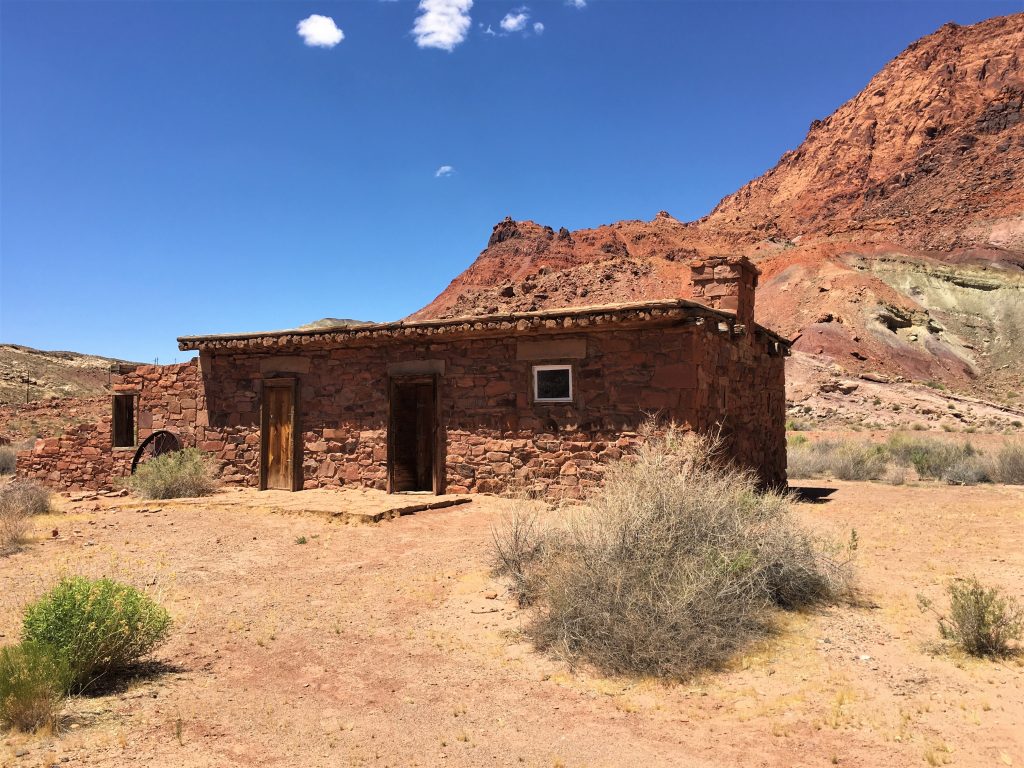
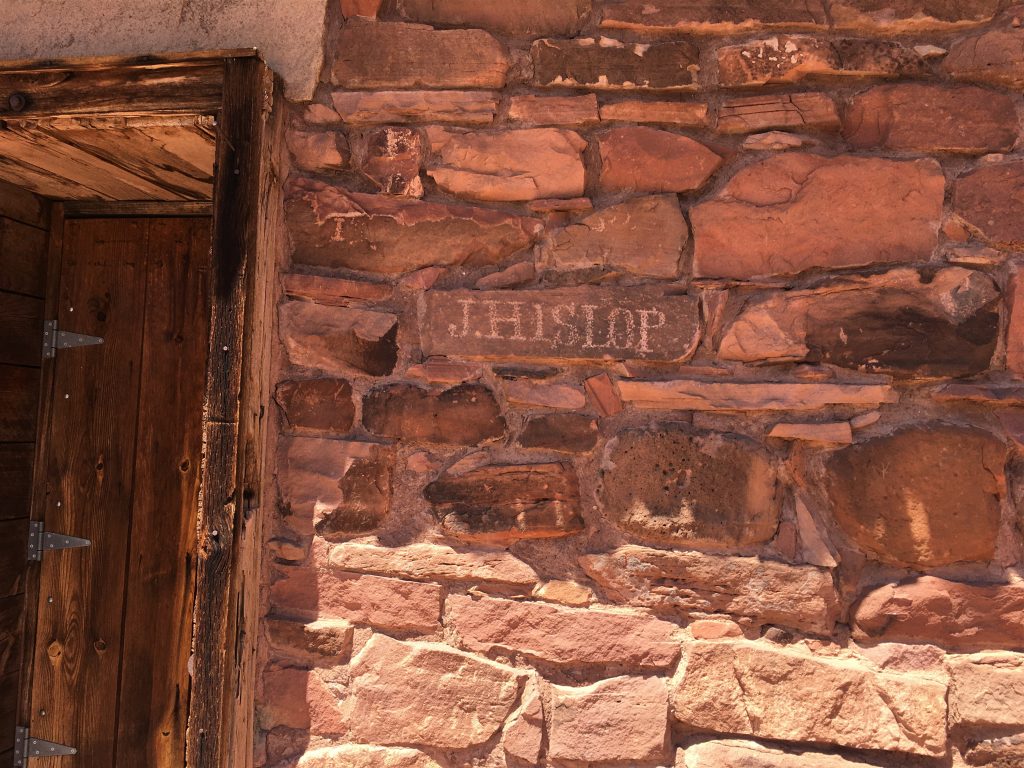
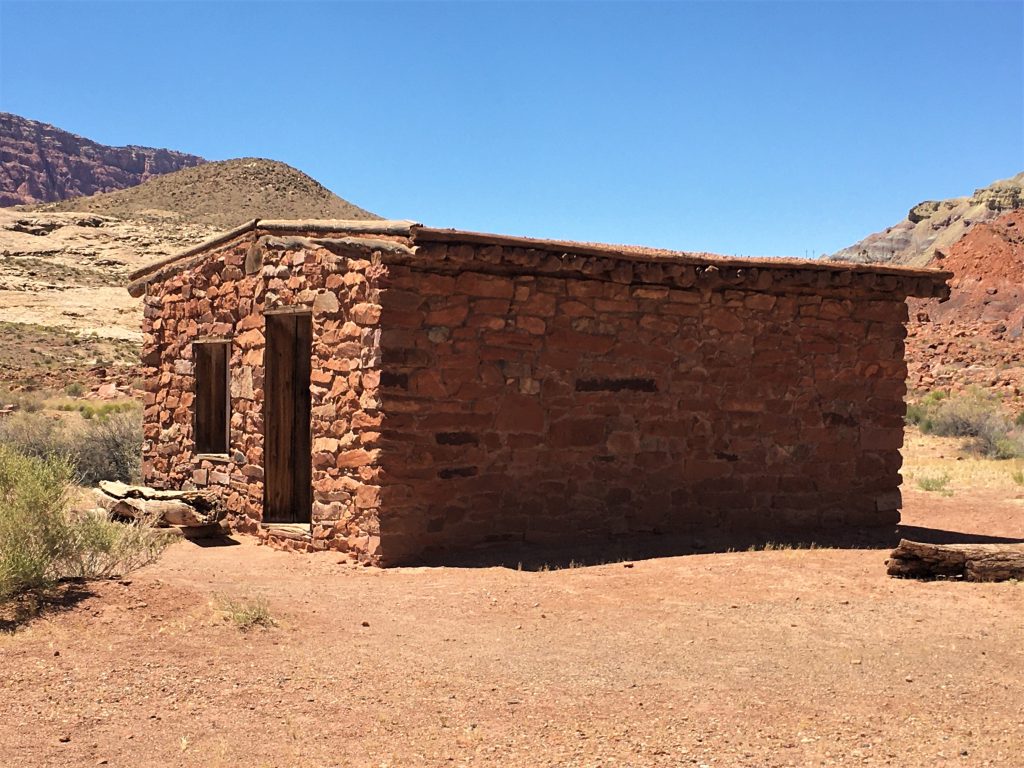
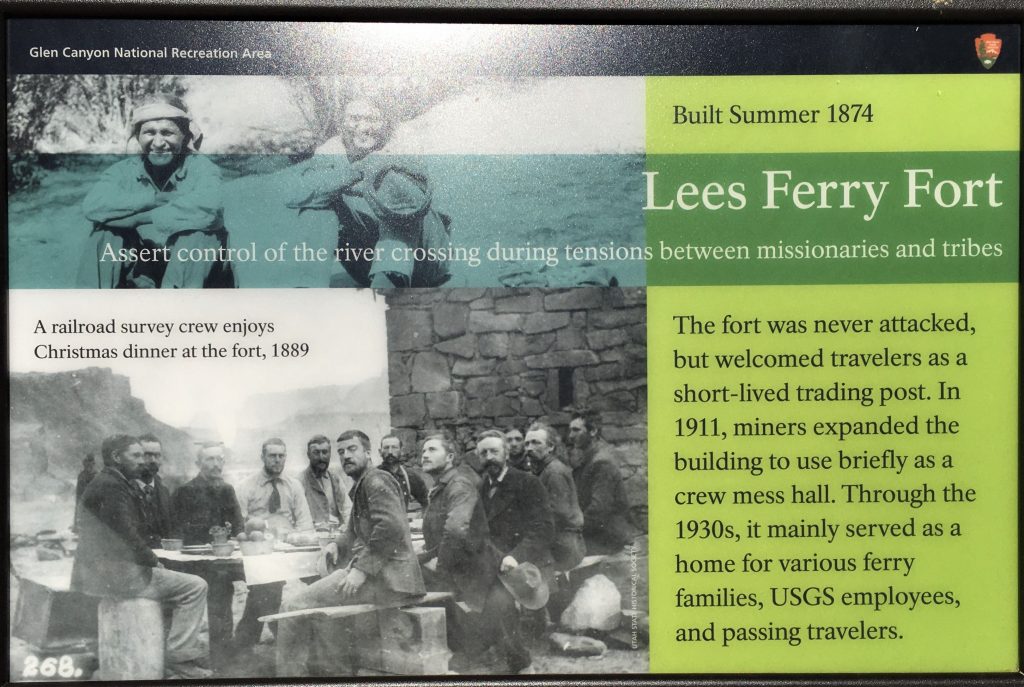
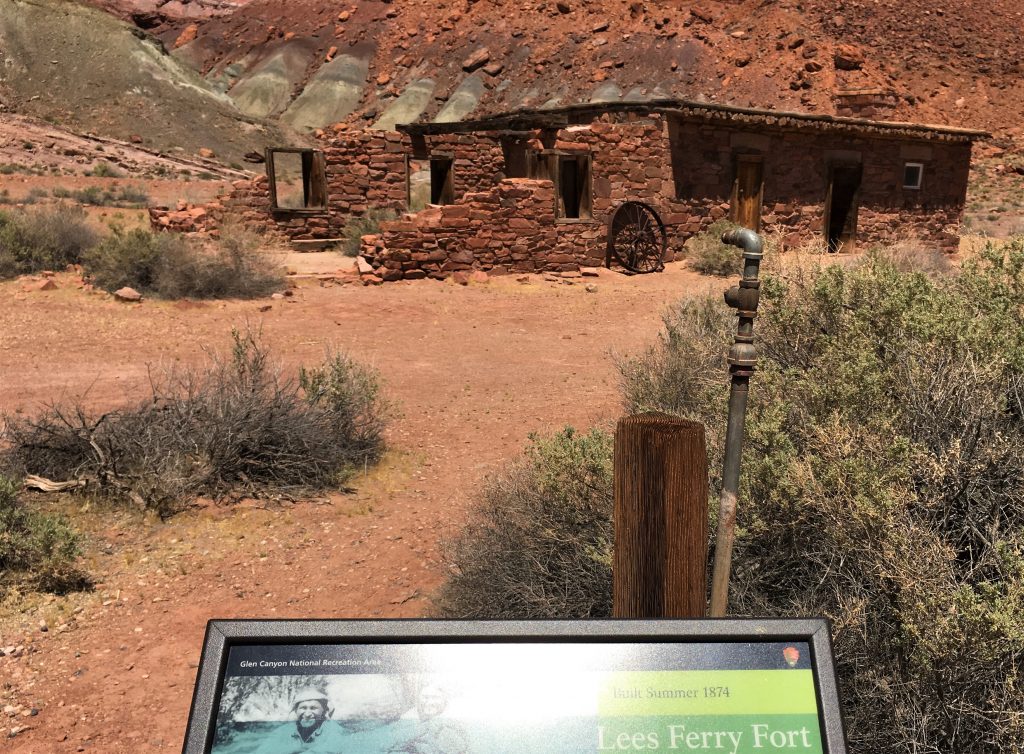
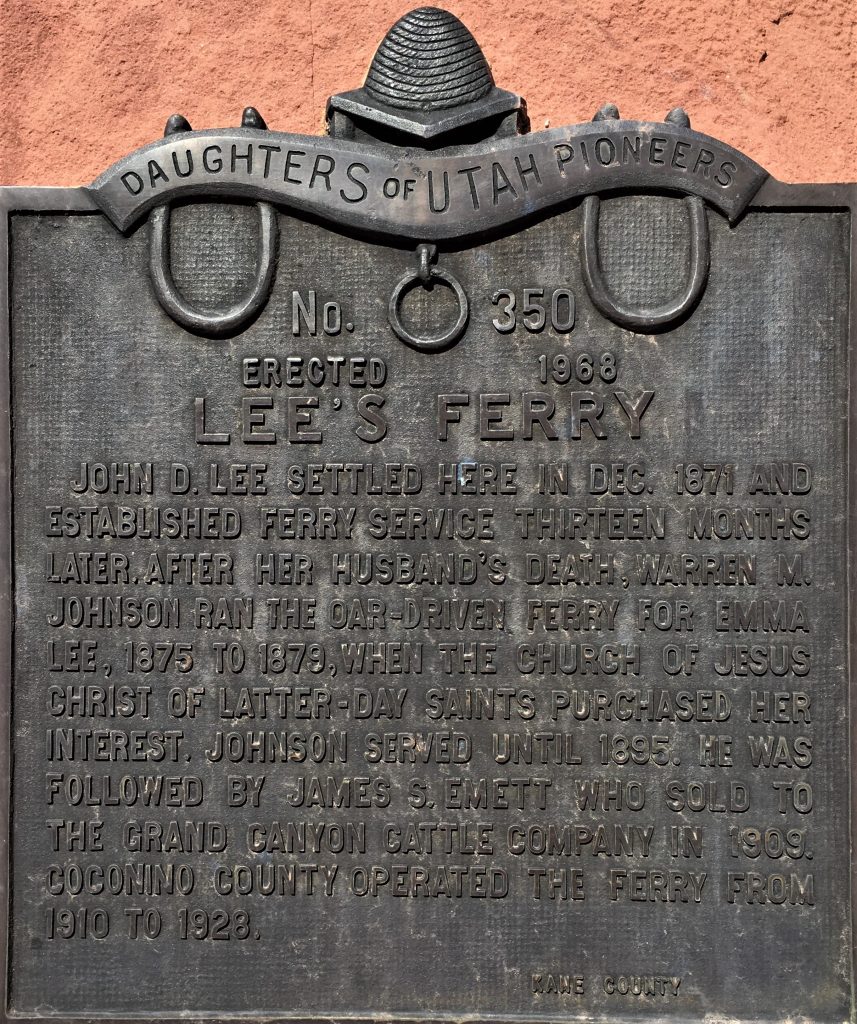
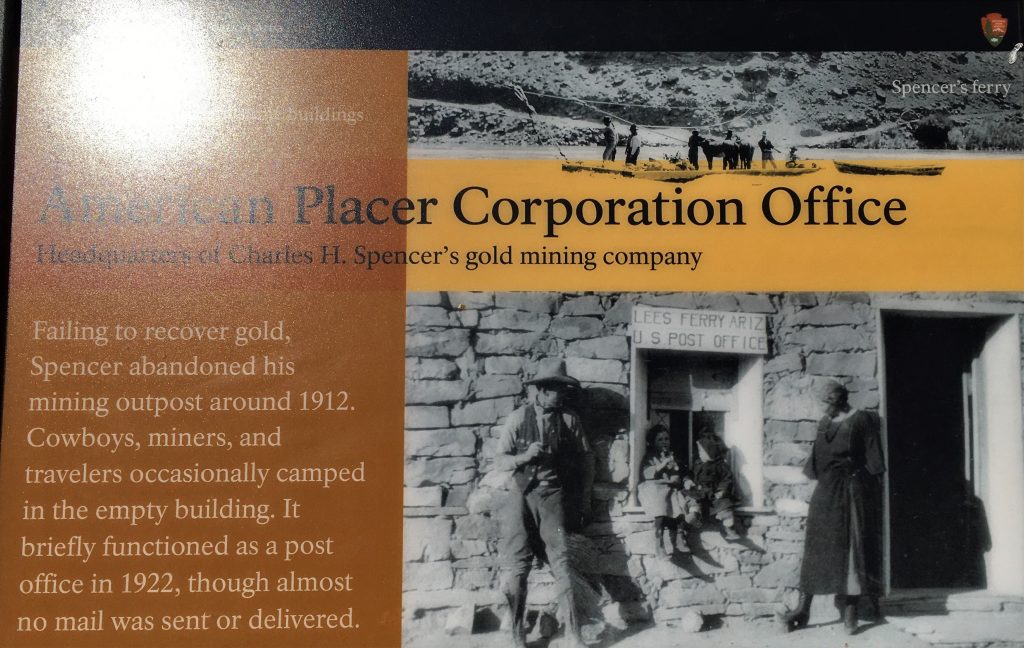
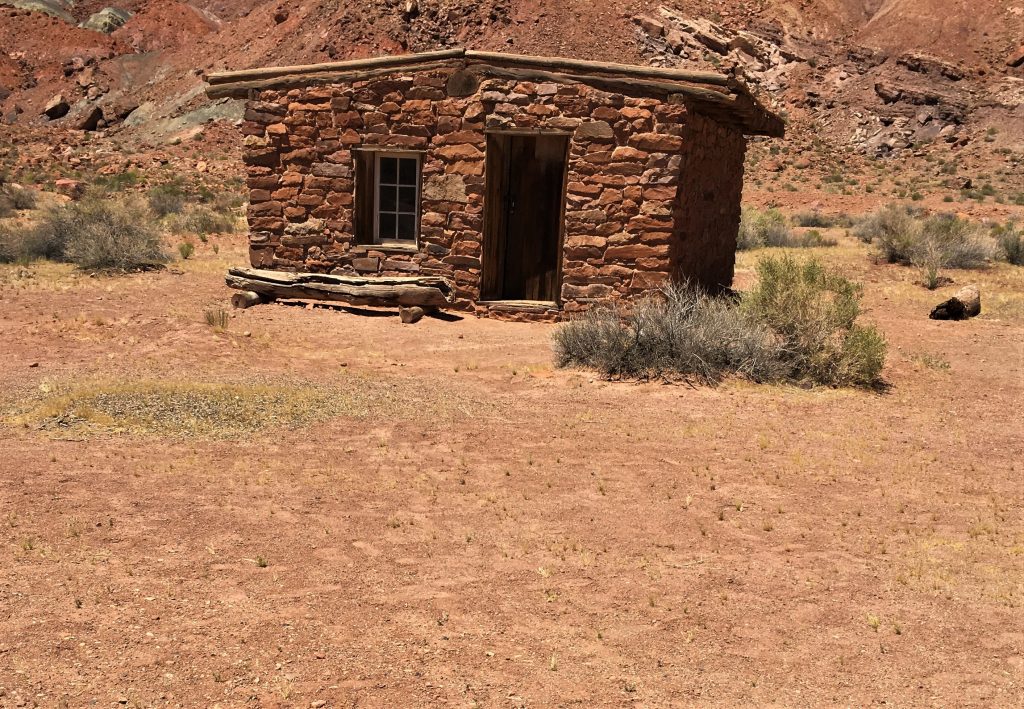
Once we’d rested a bit in the air-conditioned Jeep, we moved on to some other things.
We walked over to an area where we could actually touch the Colorado River. It was pretty chilly, but not bad. At least not along the shore.
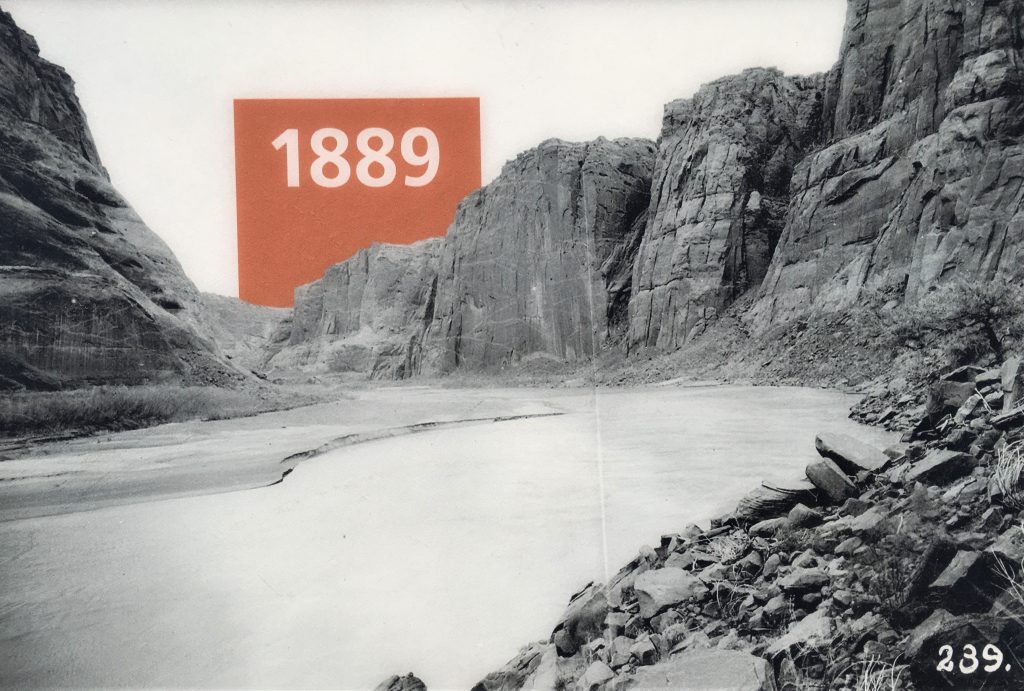
These show how very 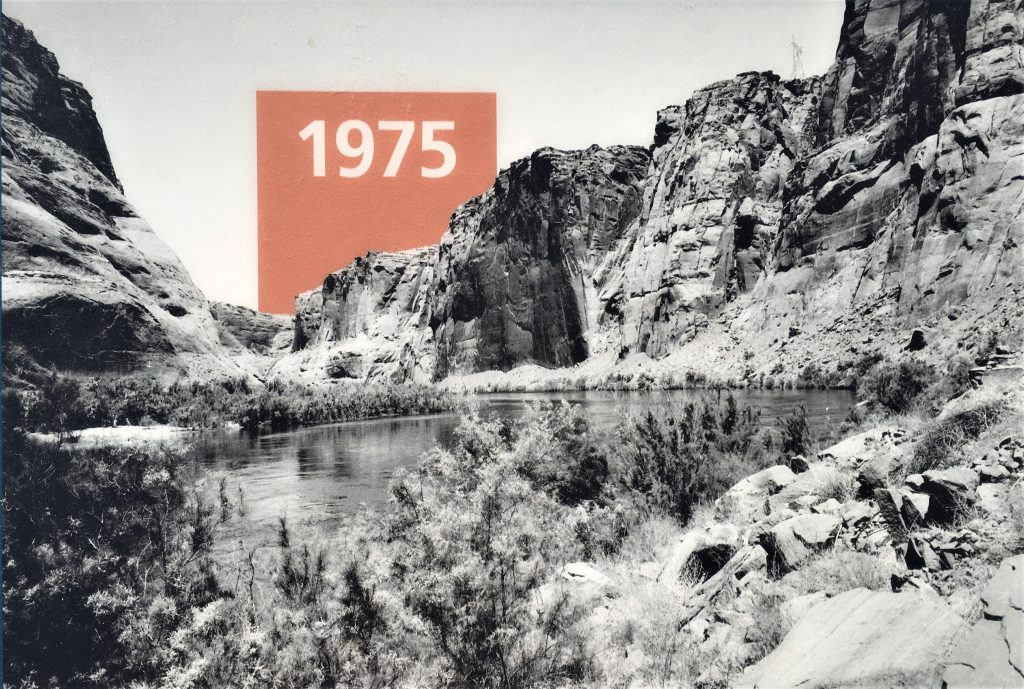
little things have changed 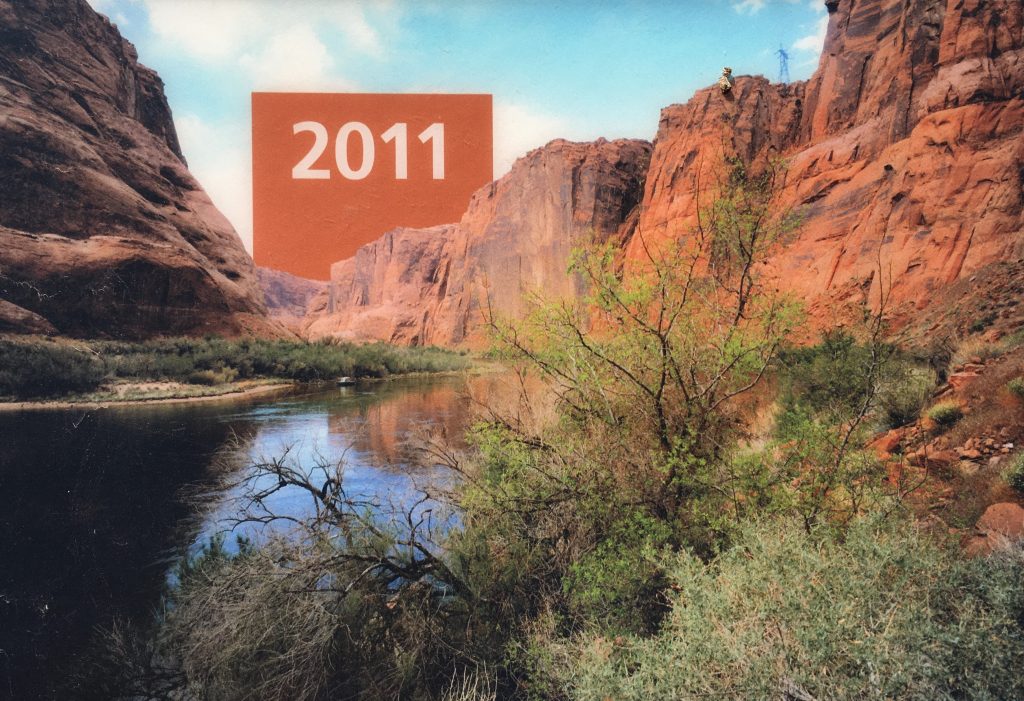
in 122 years.
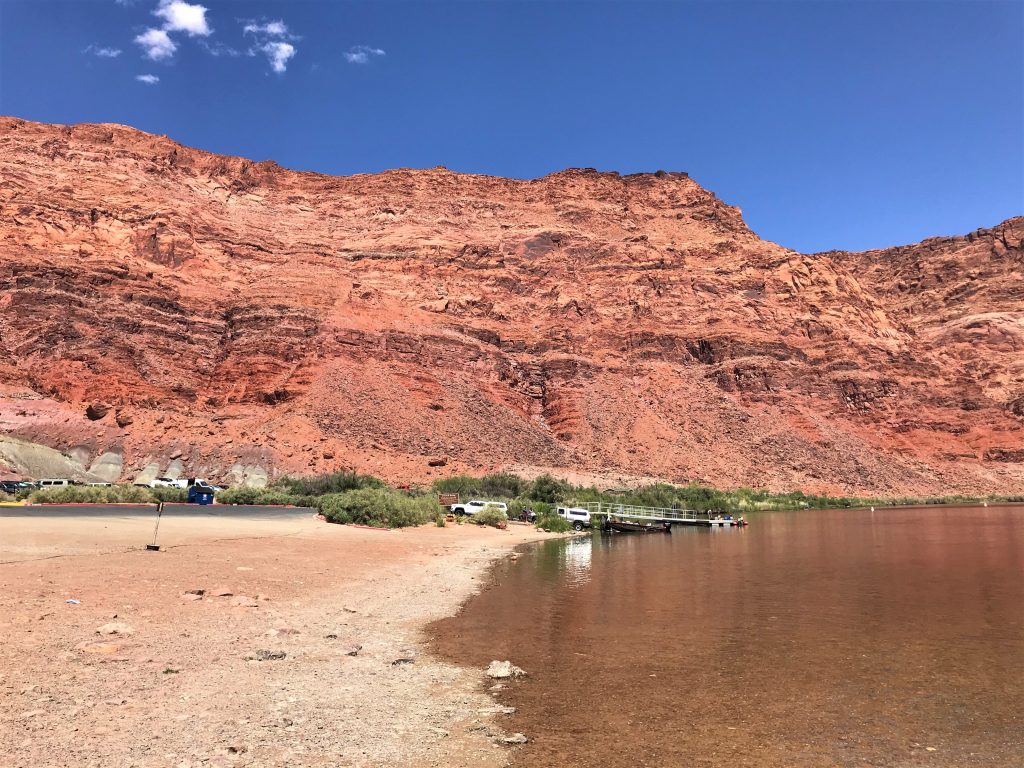

Nearby, there was an old ranch, so we stopped to check it out. It actually has a thriving orchard! Too bad we were too early to take advantage of it. ☹ Still, there was some interesting history to be found here.
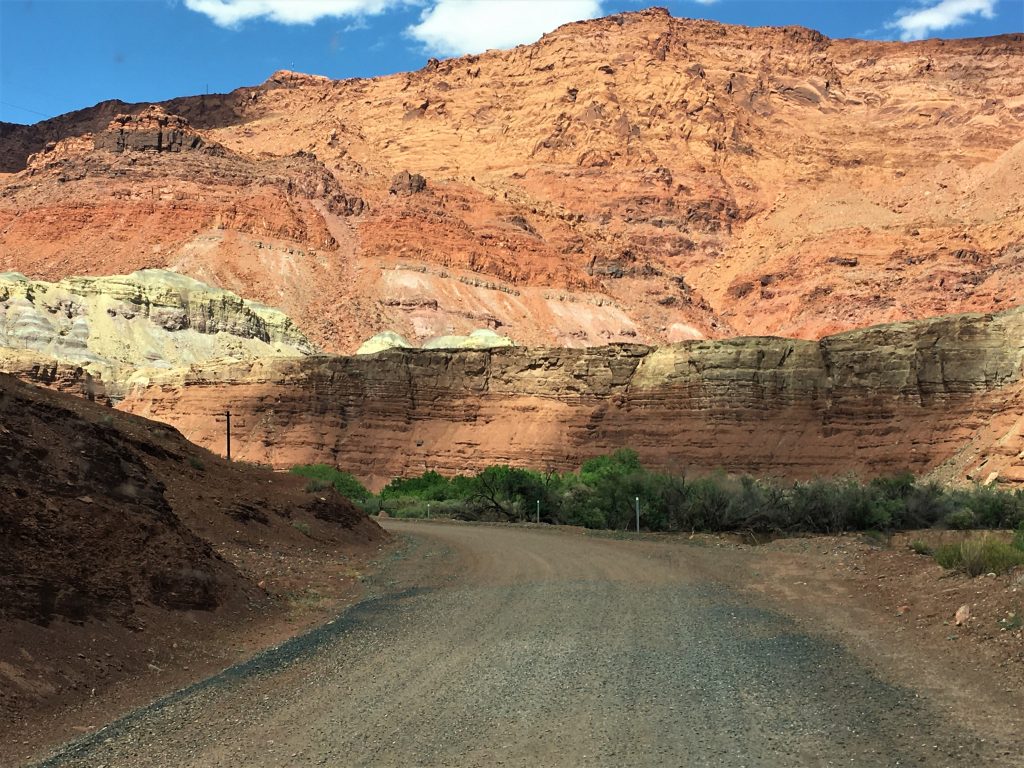
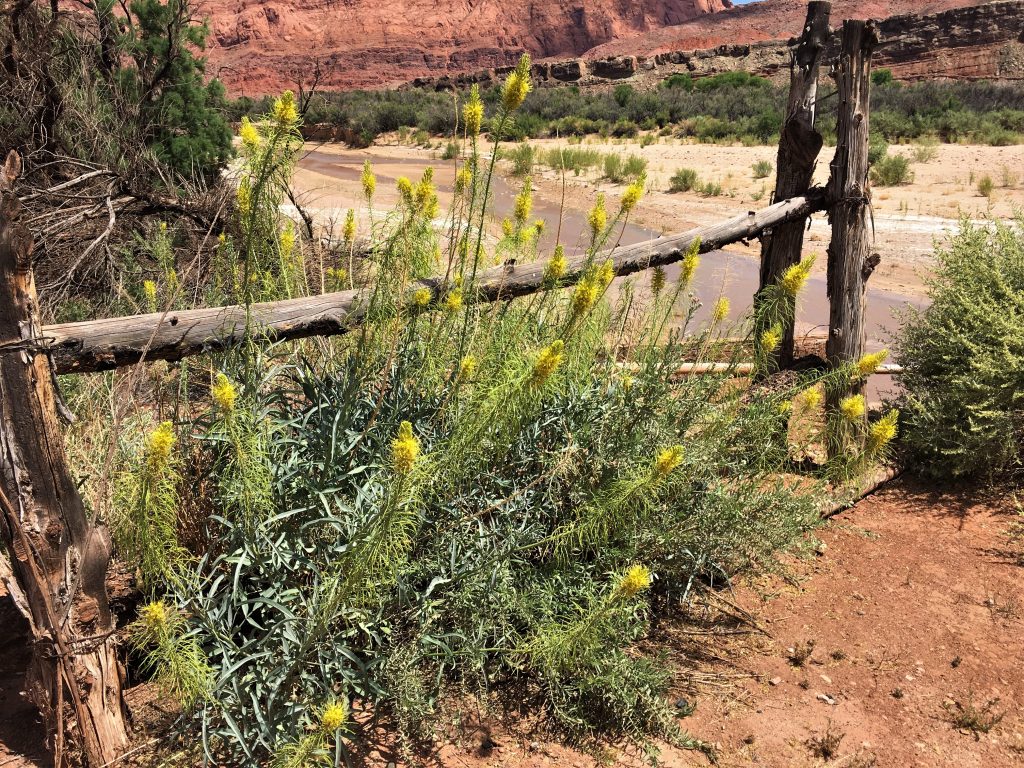
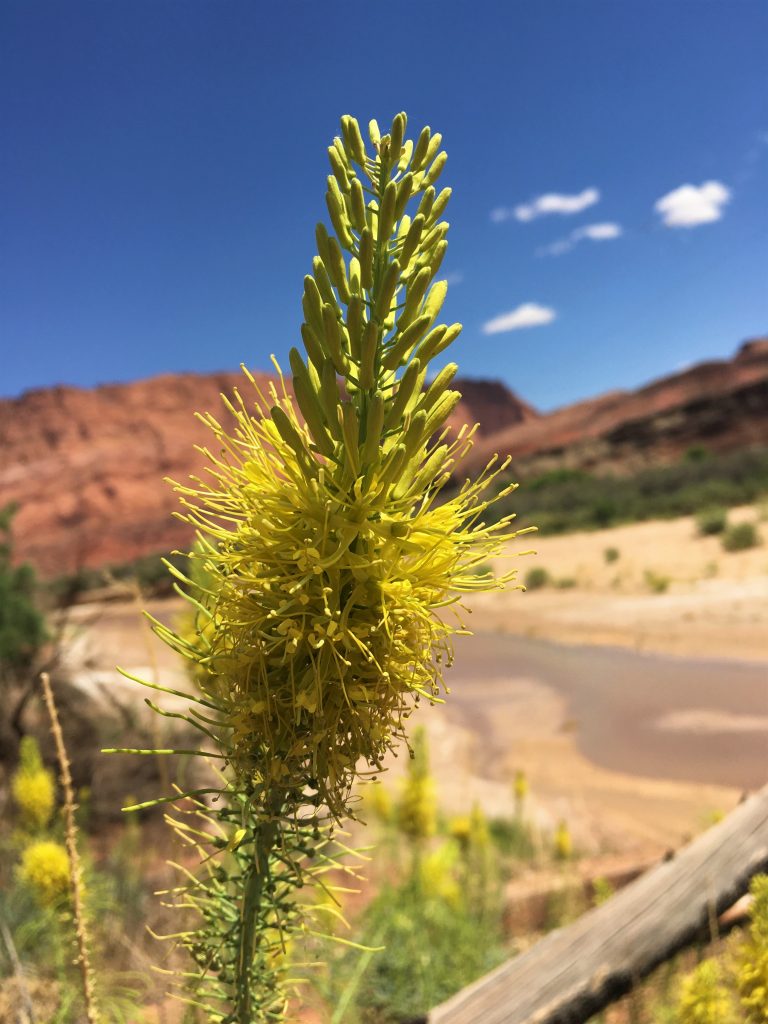
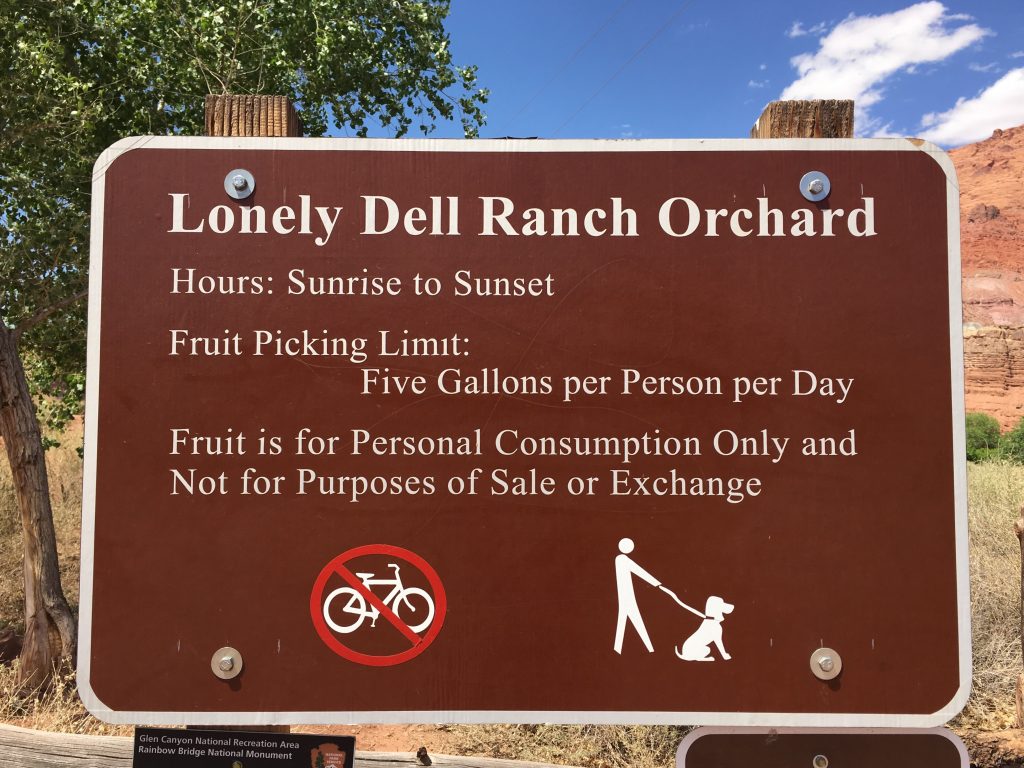
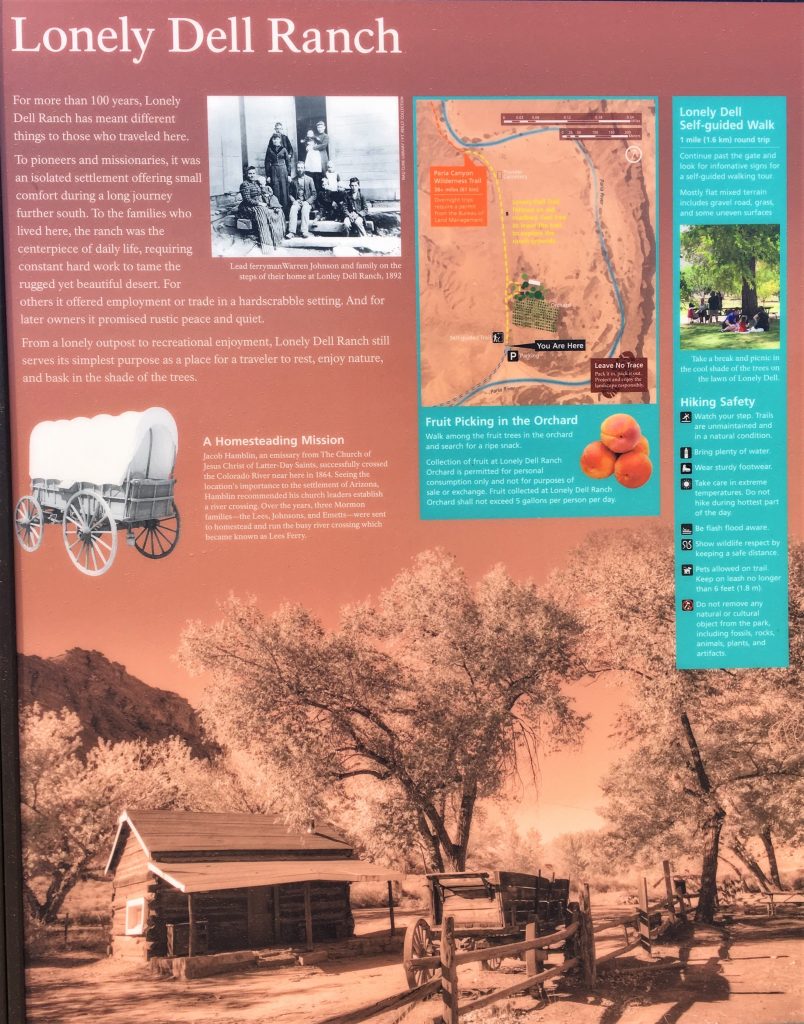

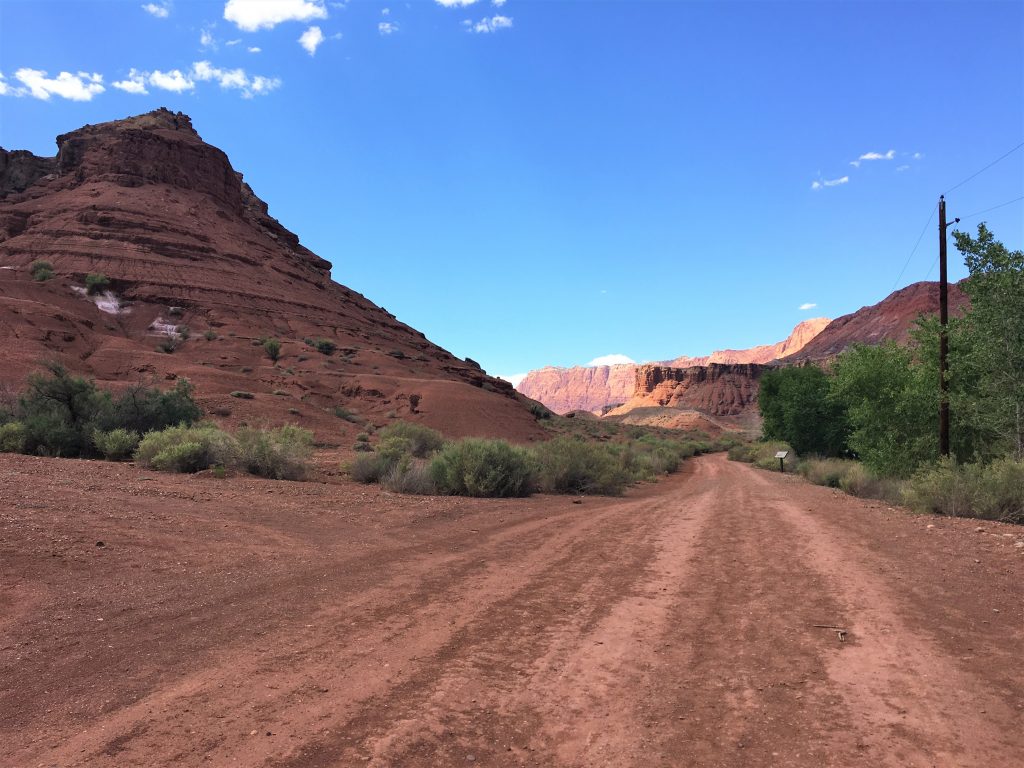

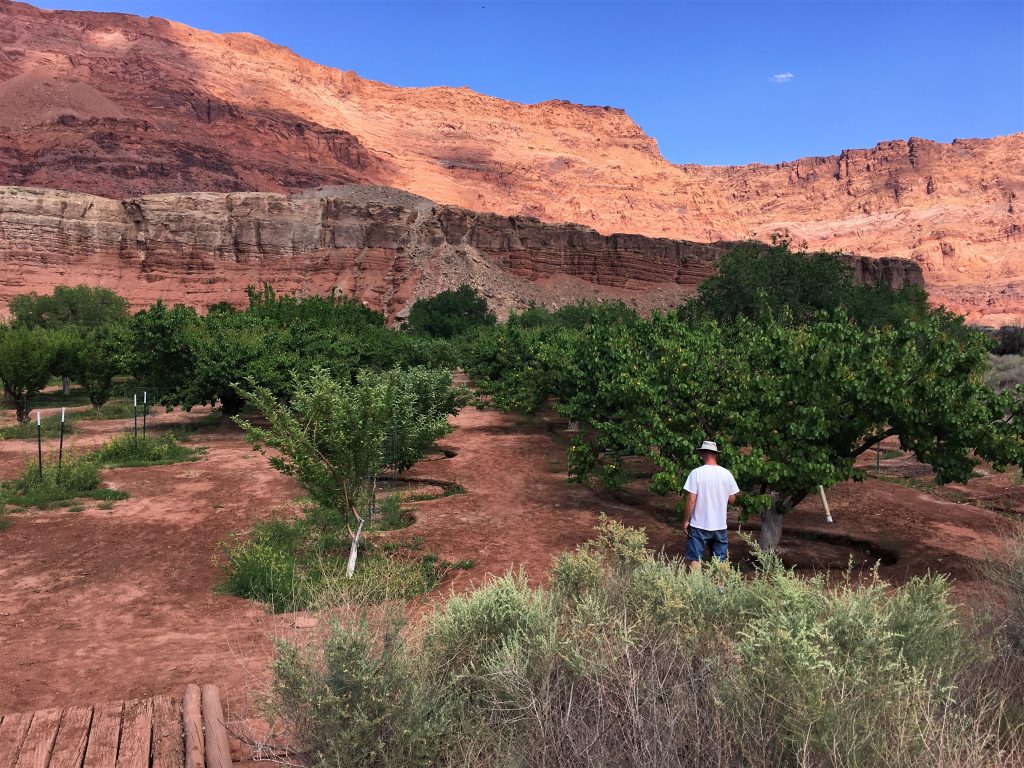
We could actually see this from the Spencer Trail.

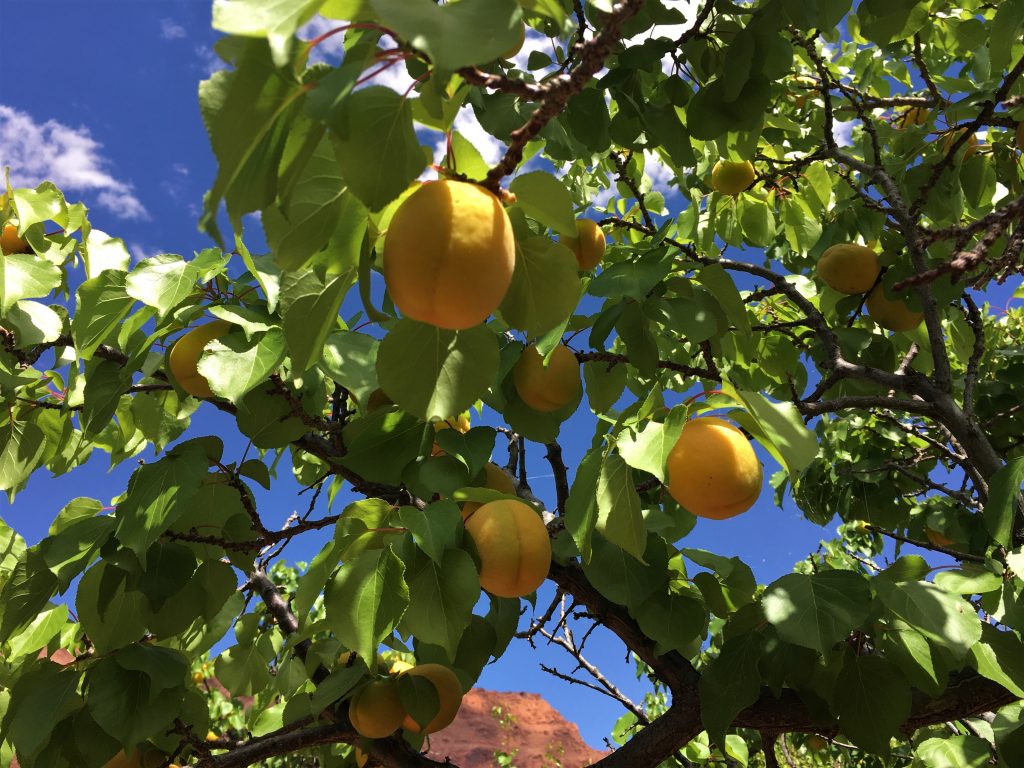
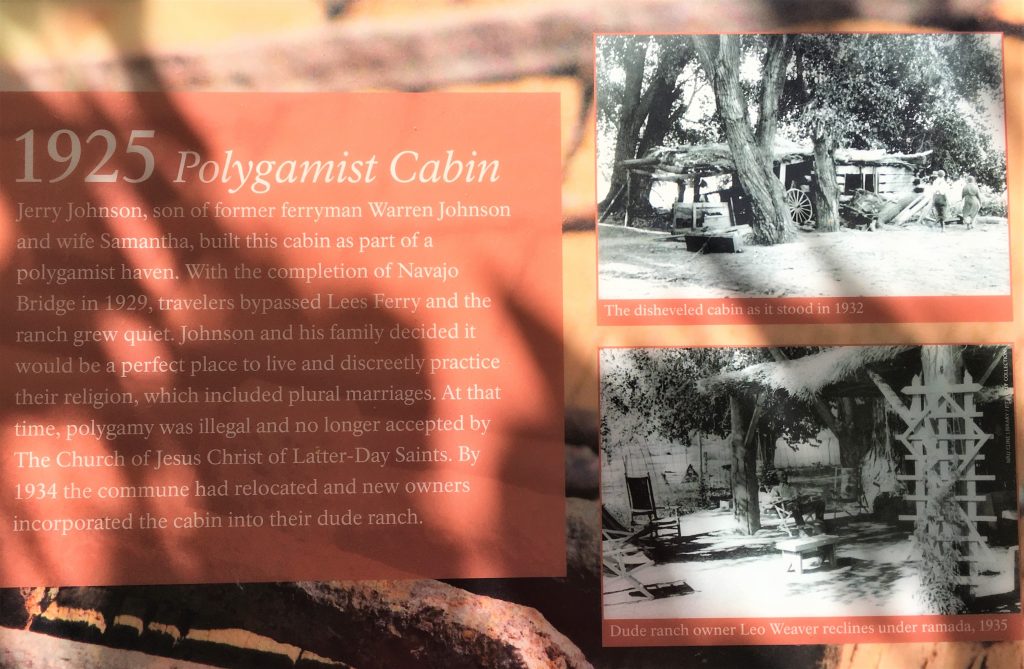

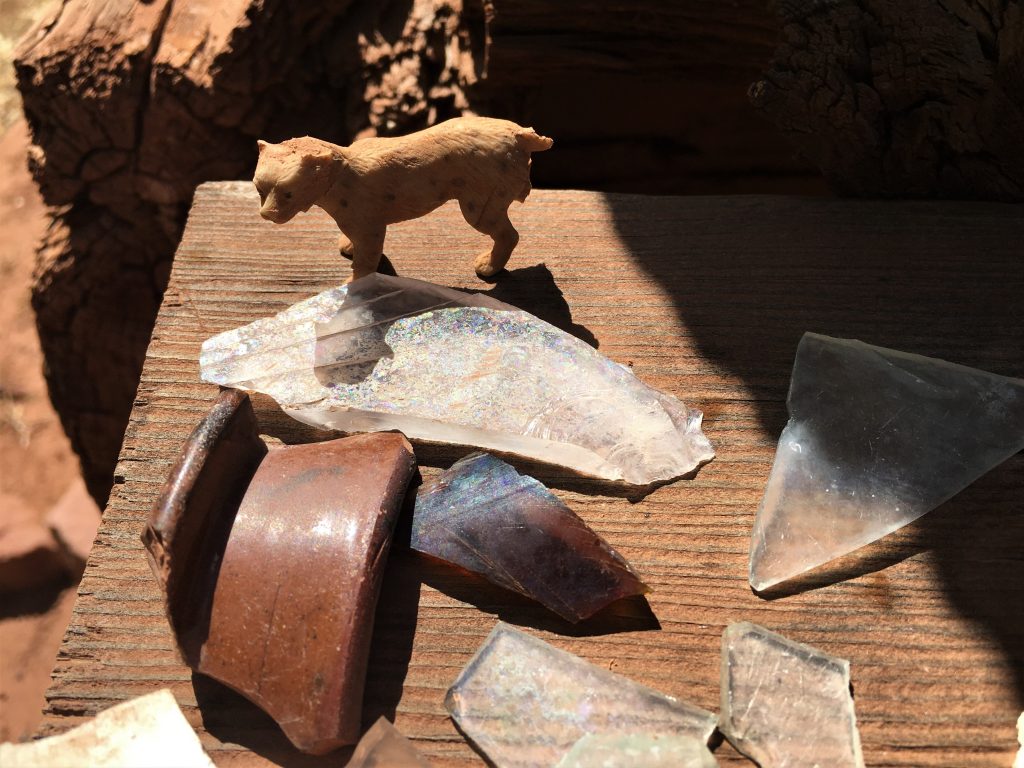
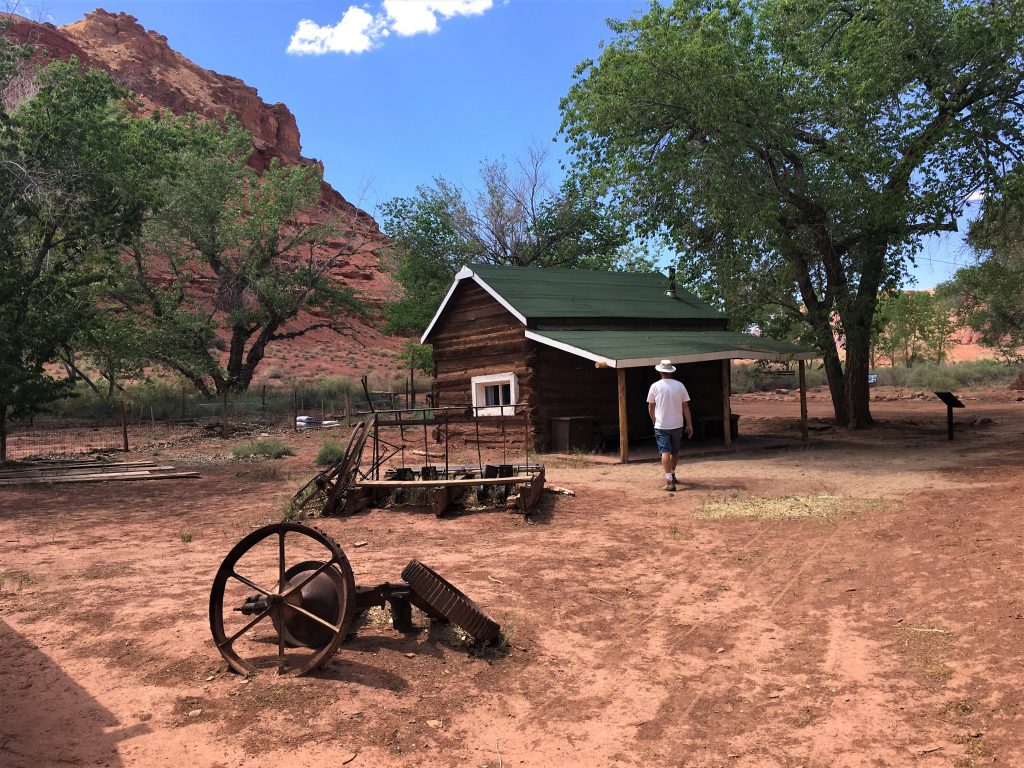
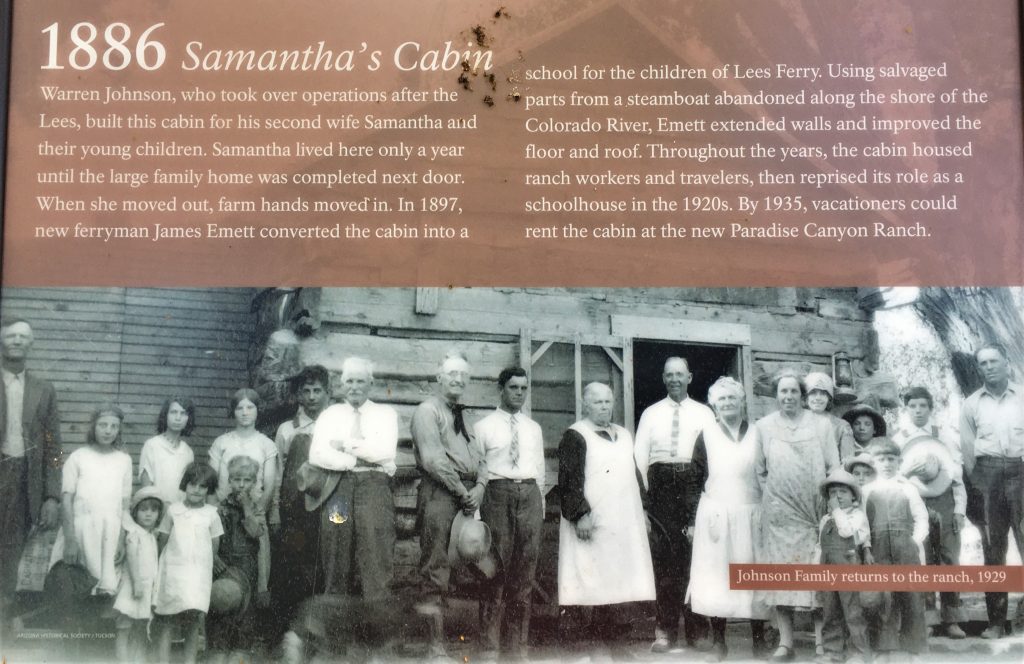
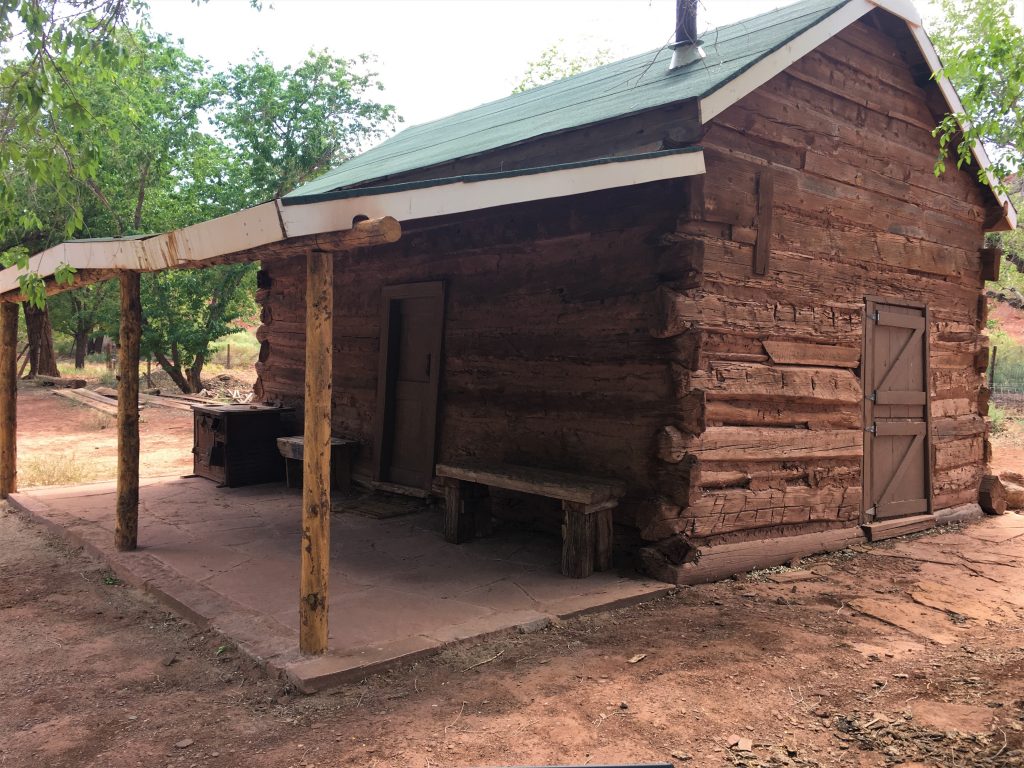
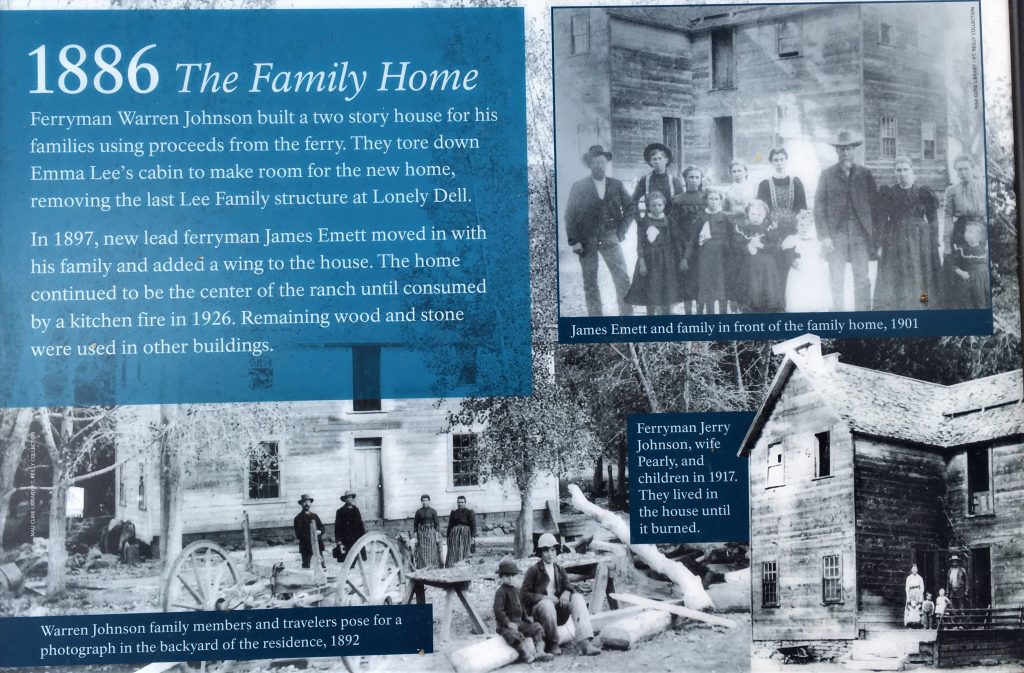

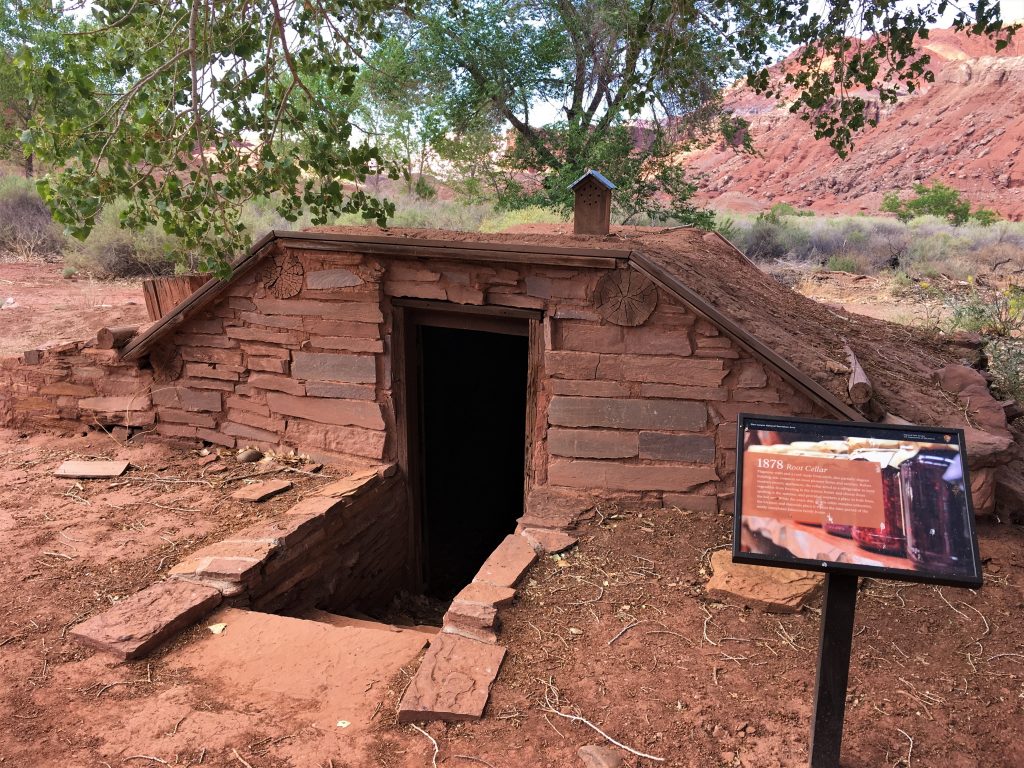
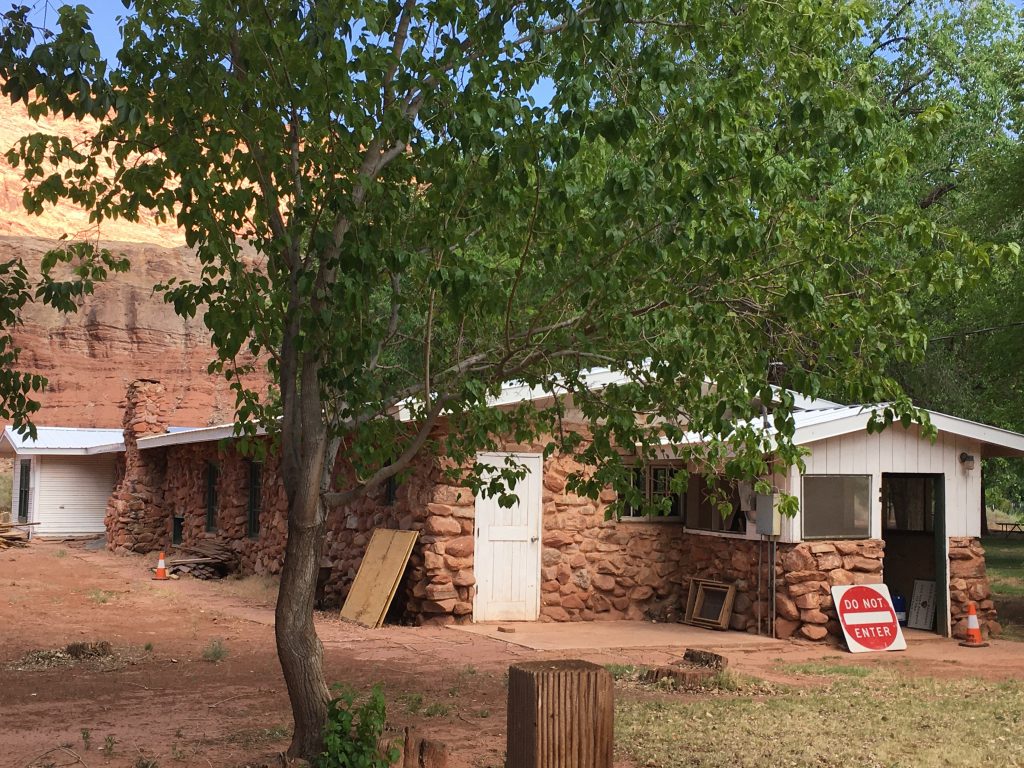

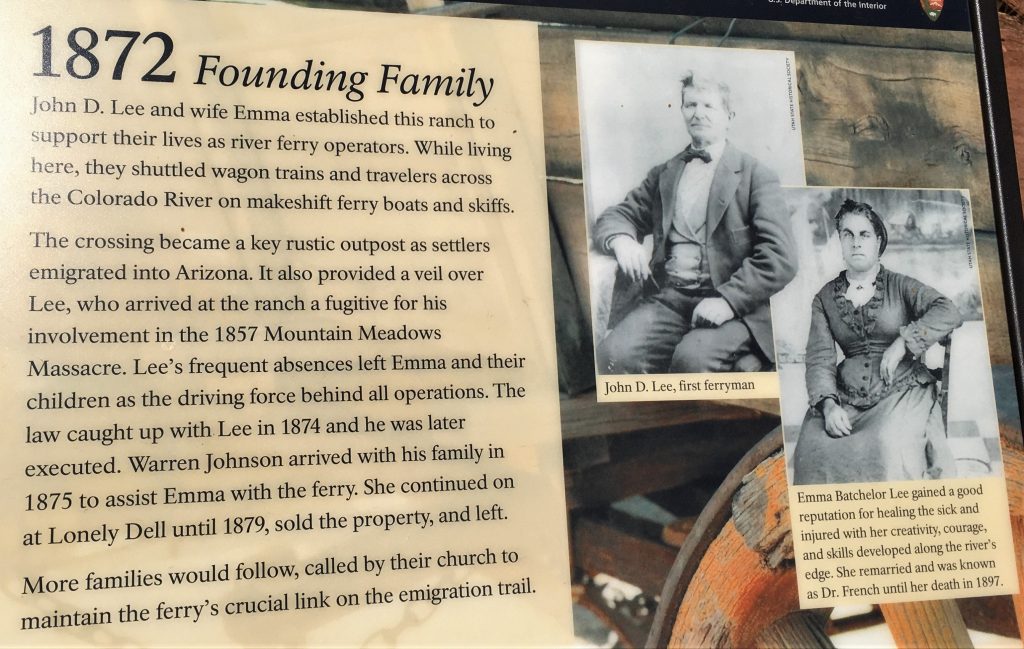
It sort of contradicts what you’ll read later (if you so choose) about this man. See what you think.
Then it was time to leave Lee’s Ferry and go in search of Cliff Dwellers. A few roadside stops along the way . . . .
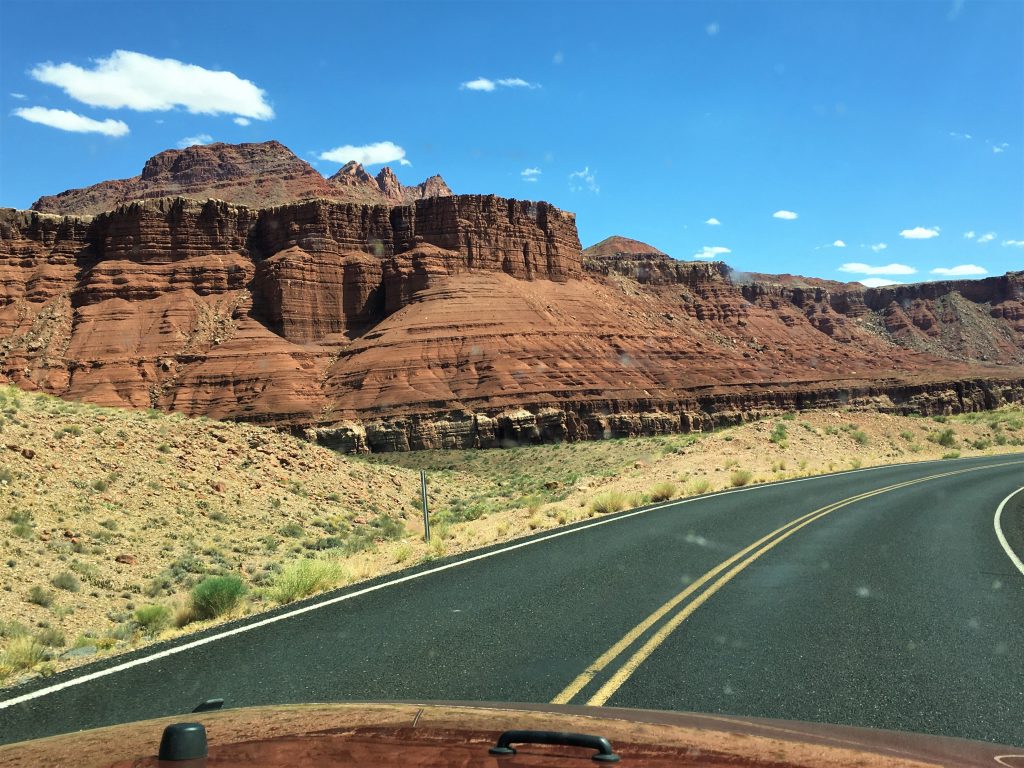


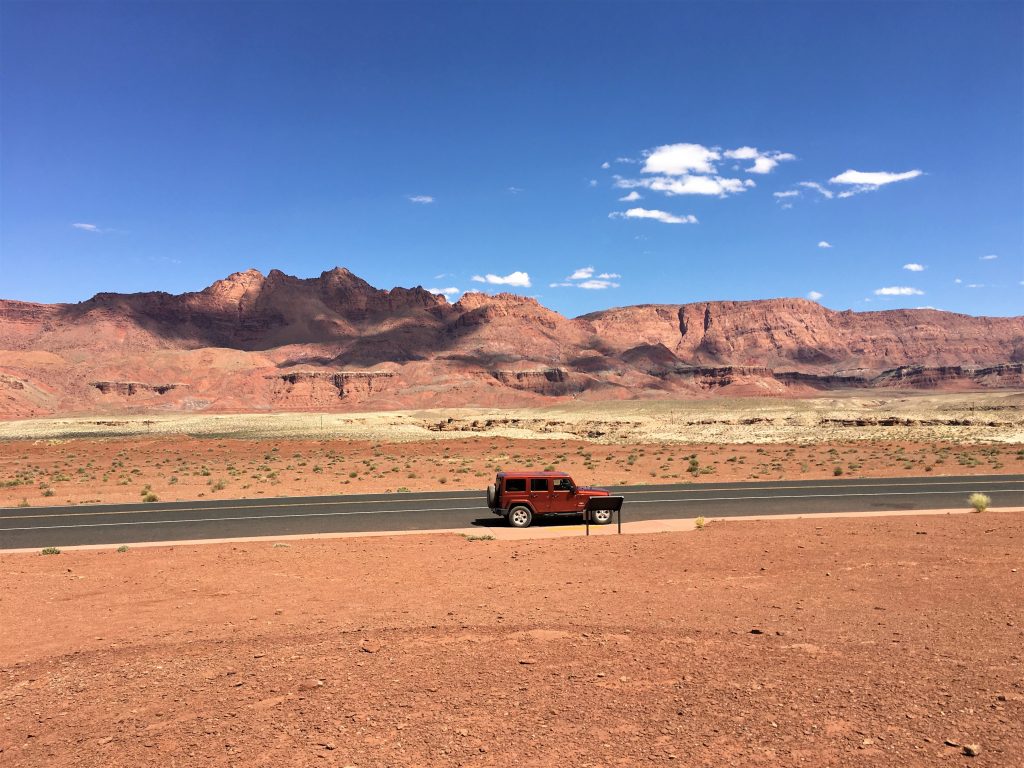
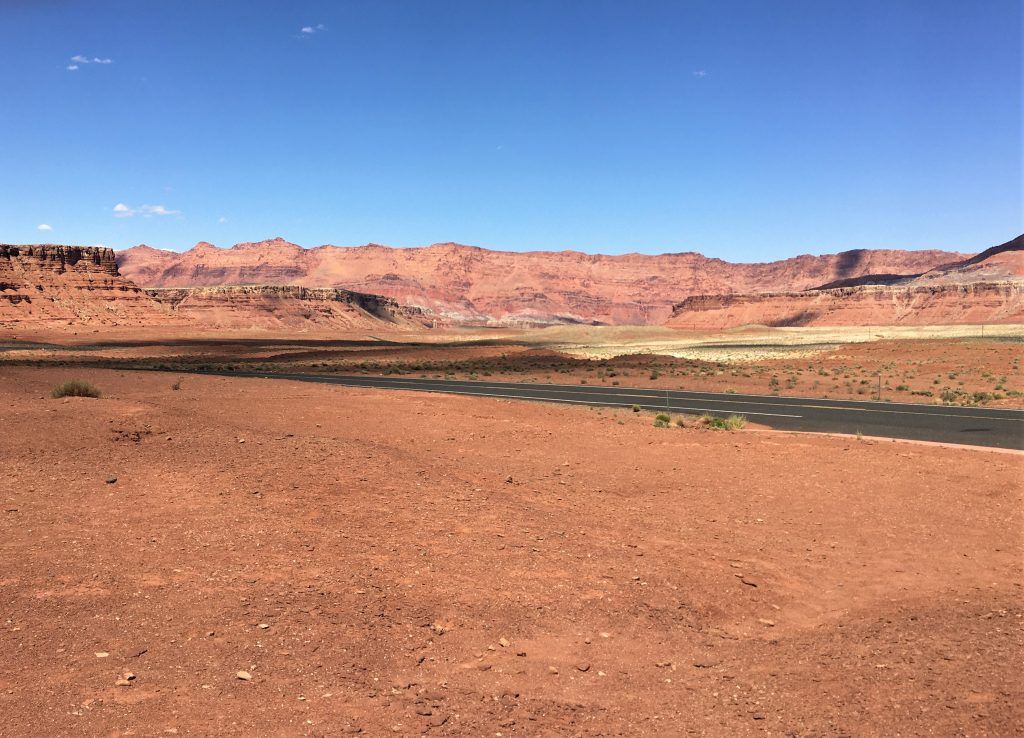
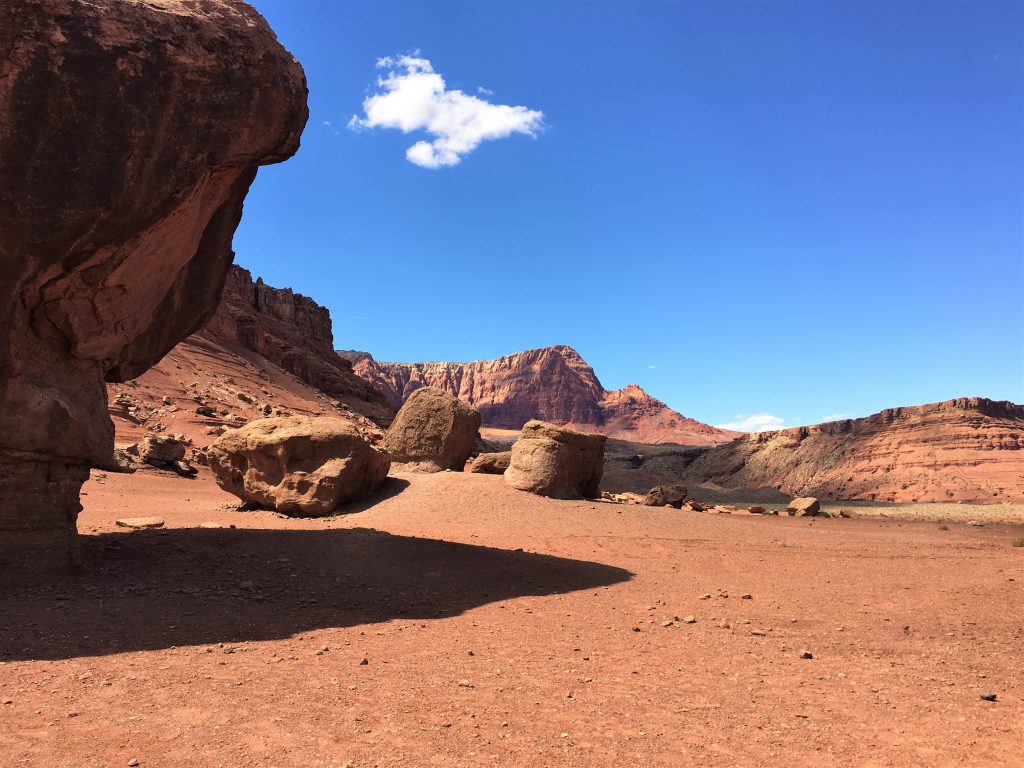
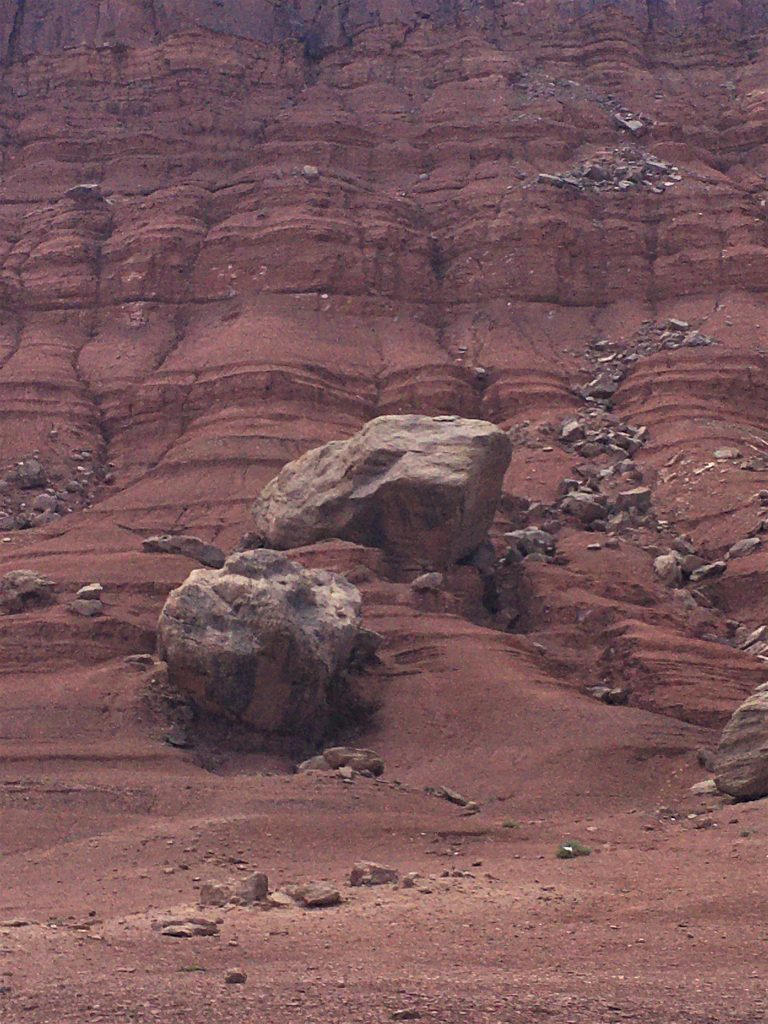
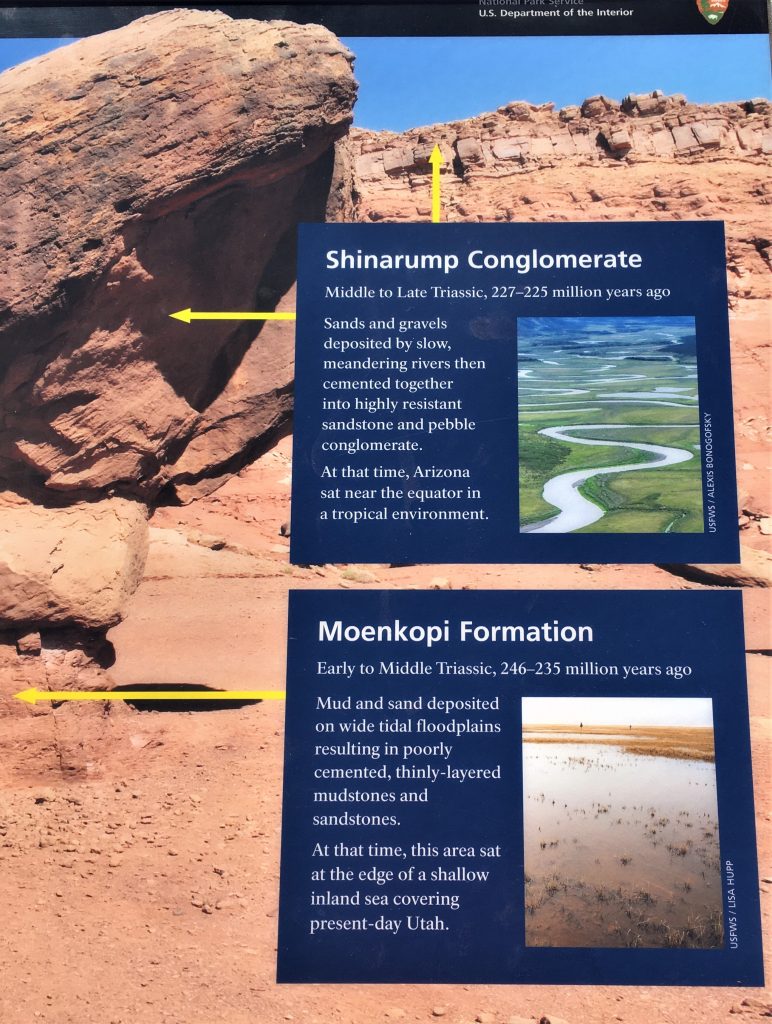
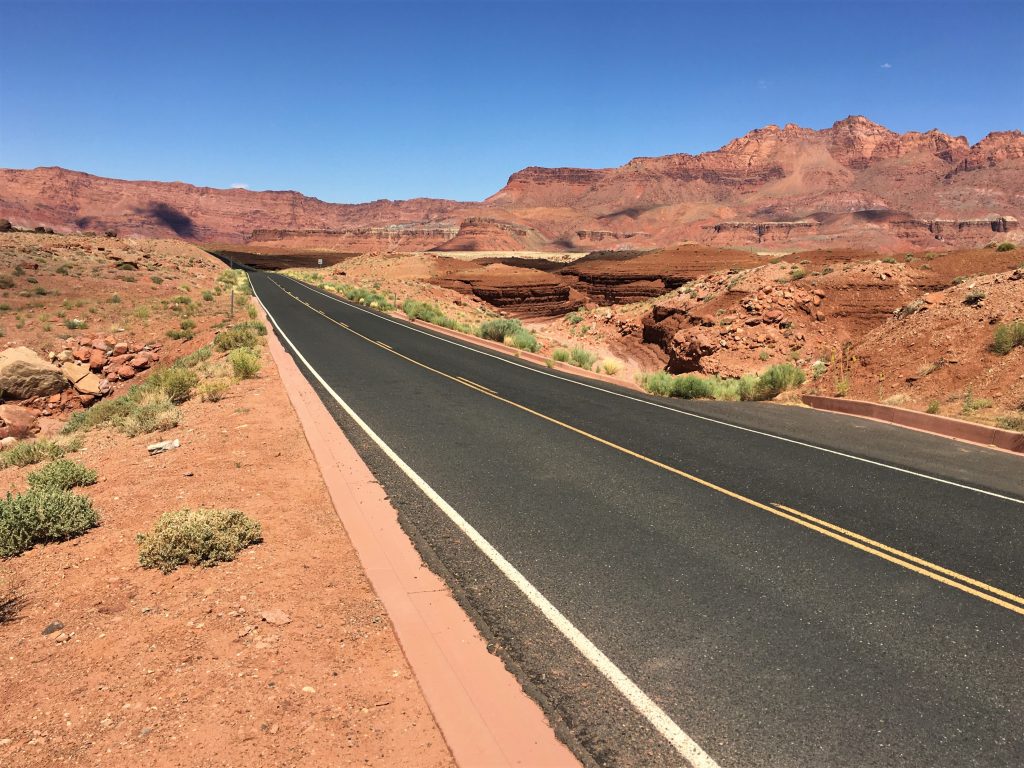
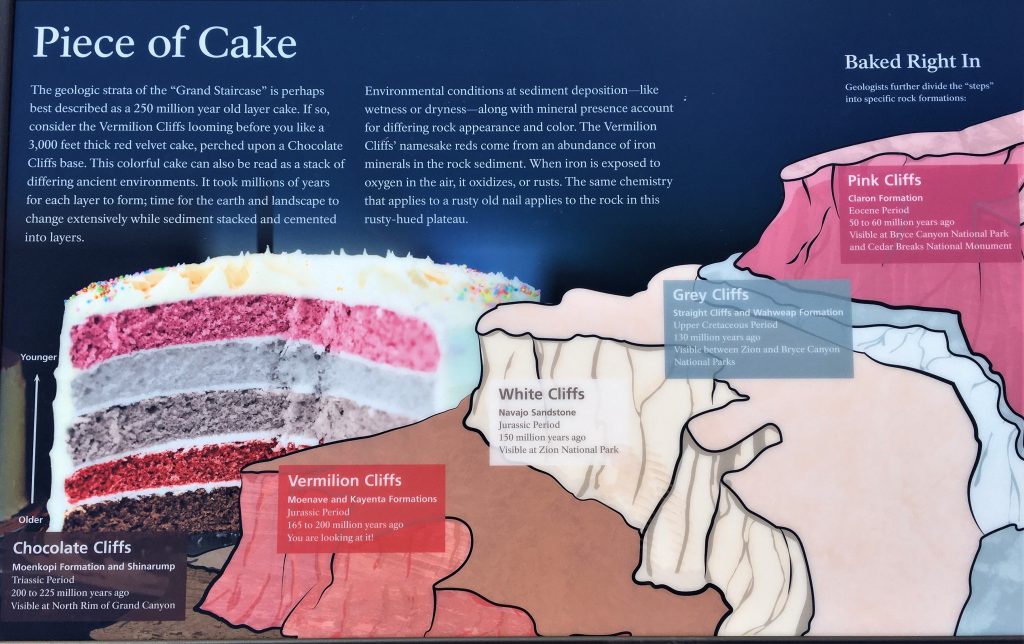
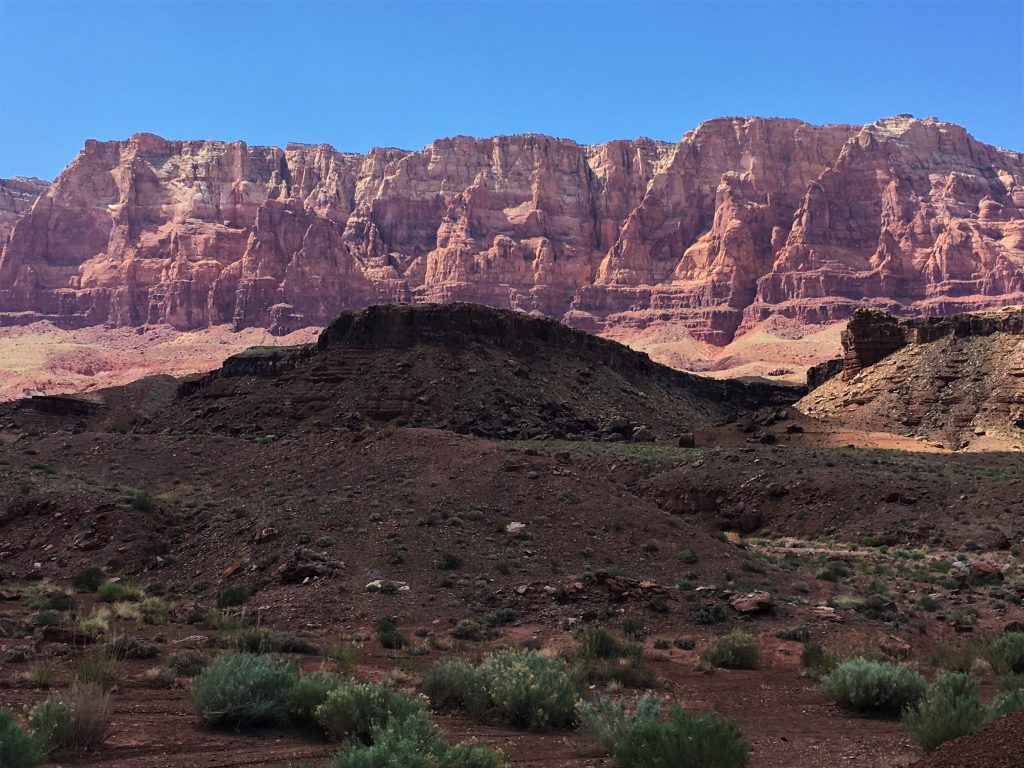
. . . . and then we were there.
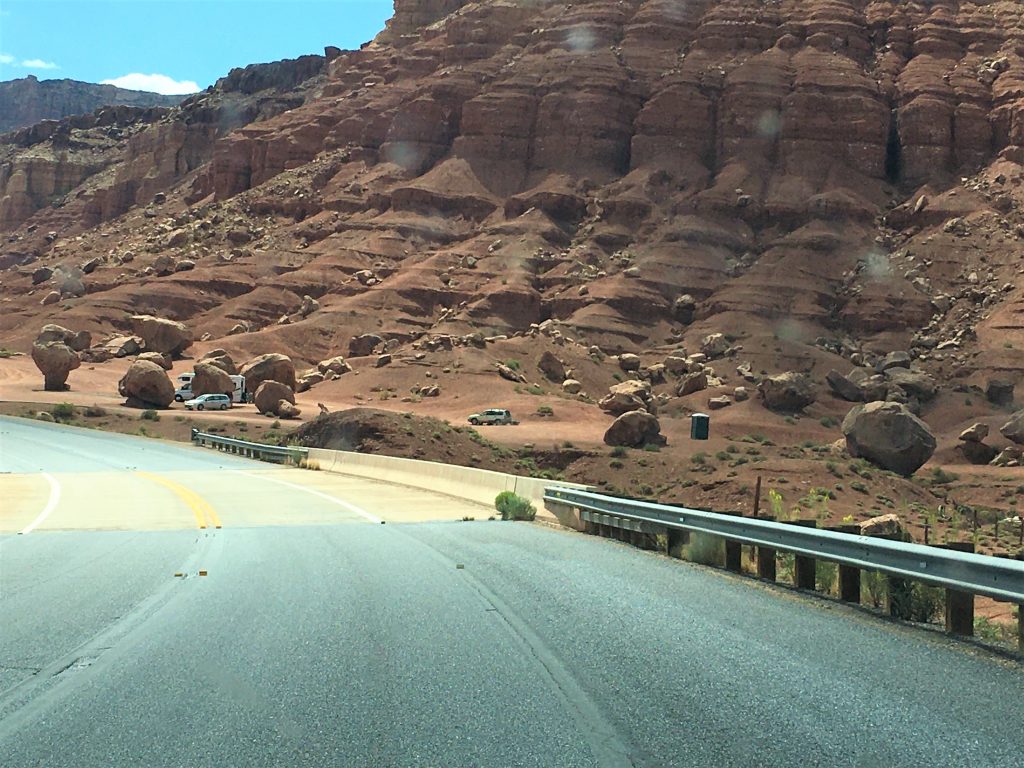
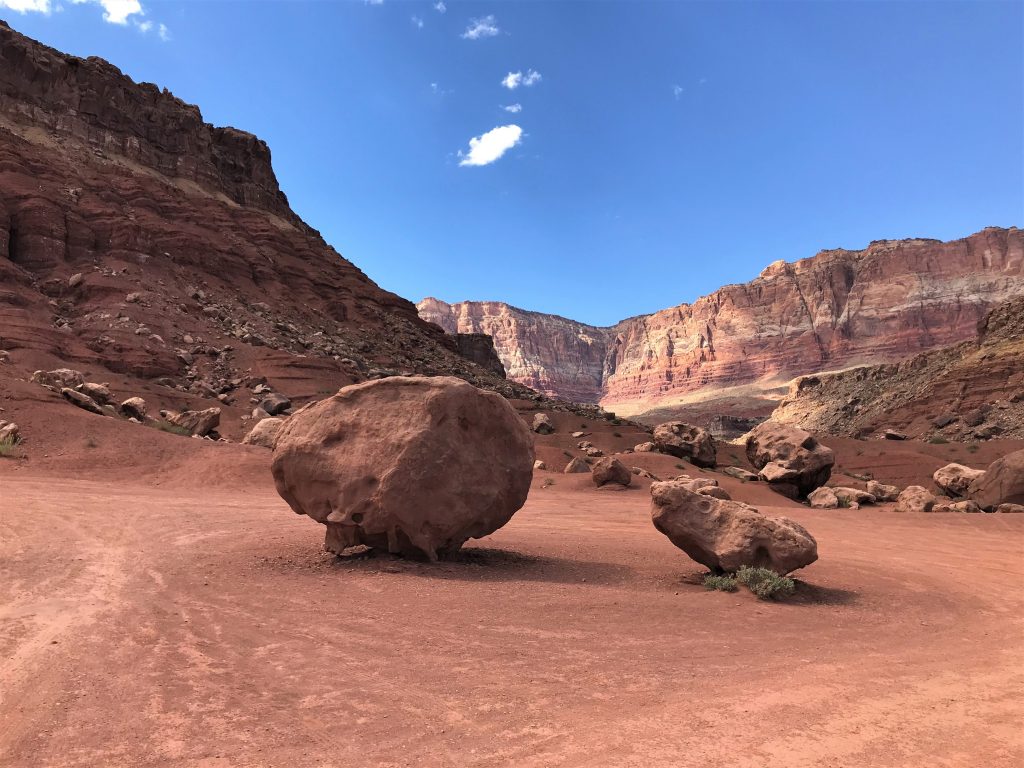
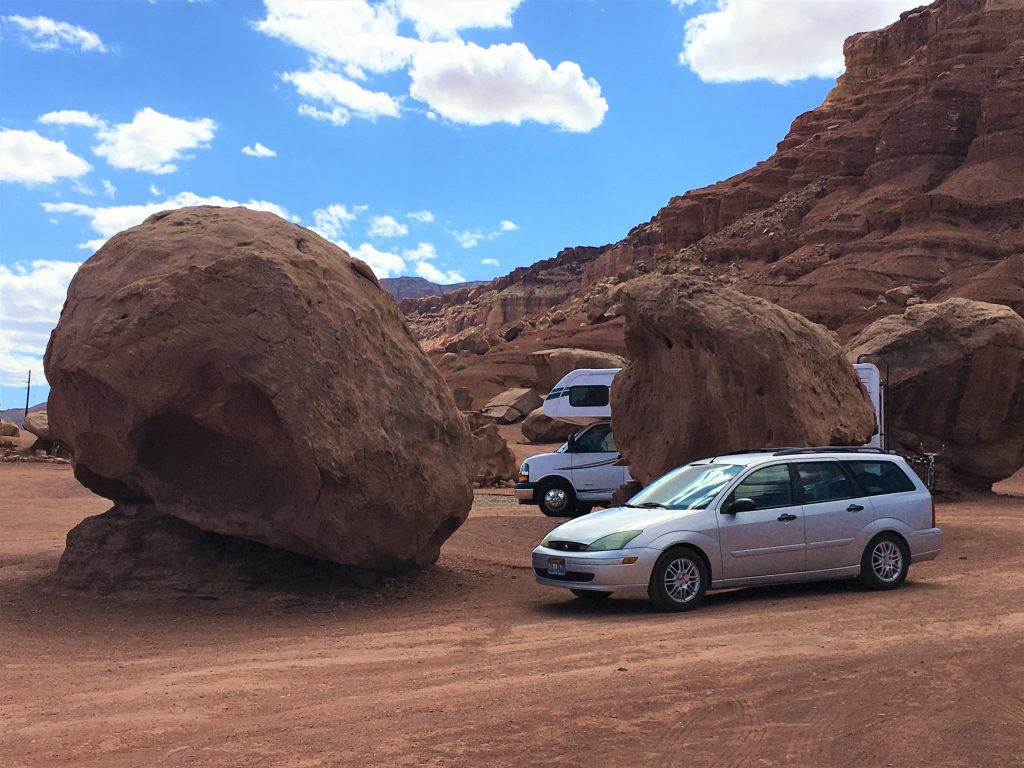
Cliff Dwellers is the name of a town, but it’s what you can find alongside the road that’s really interesting. Unfortunately, I couldn’t uncover any information online about this place, and the board that was present was so sun-faded, there was nothing to read. In other words, we don’t know if this was once a real place, or some artist’s conception, or a once-upon-a-time tourist hoax. Regardless, we had a good time exploring.
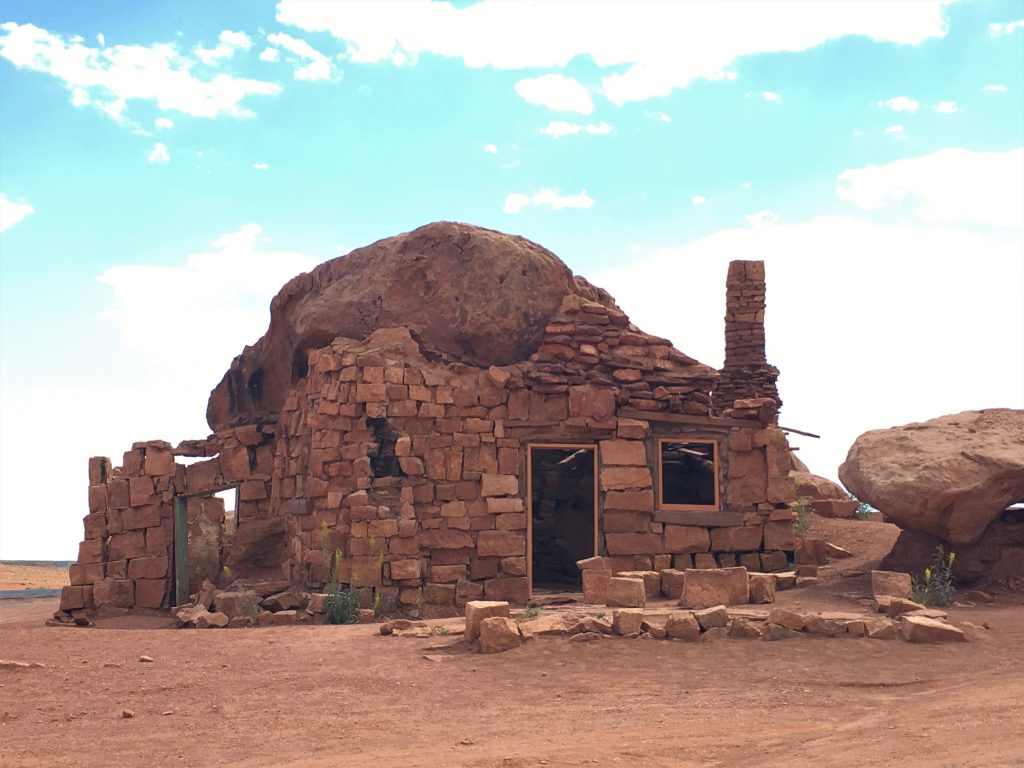
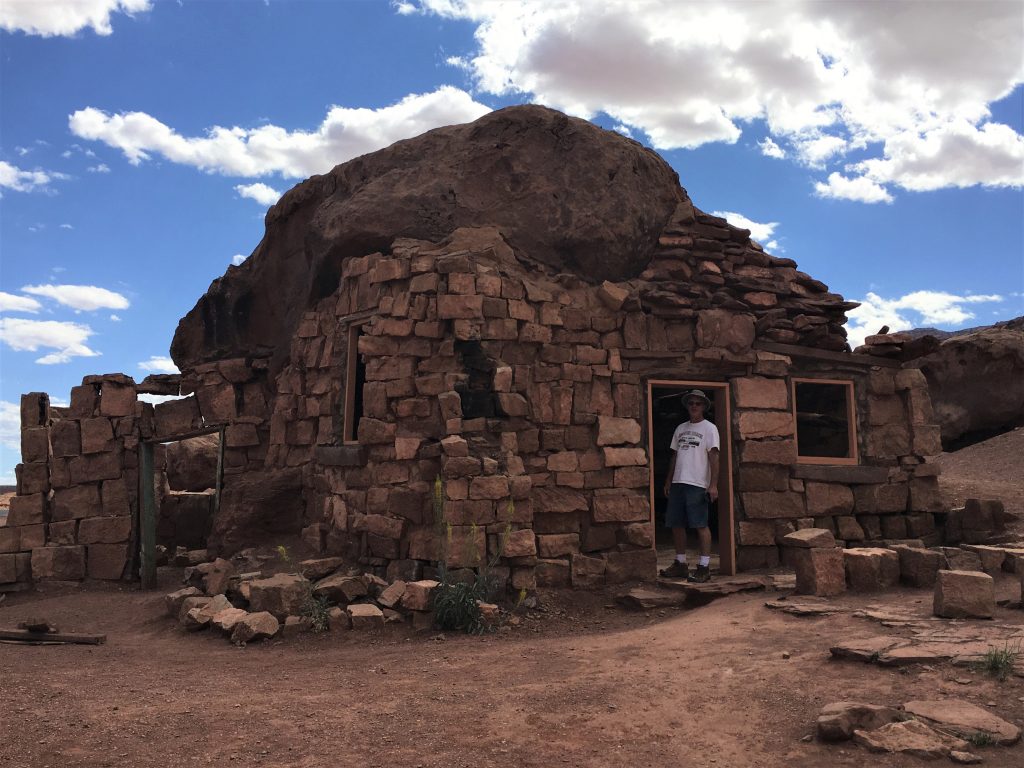
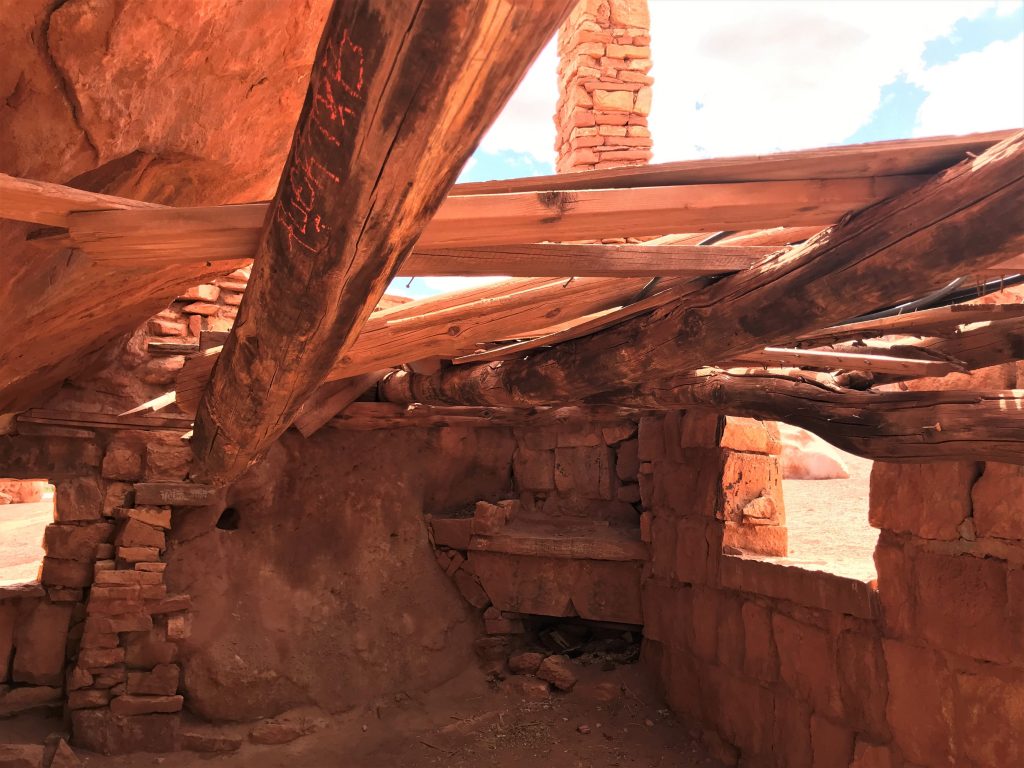
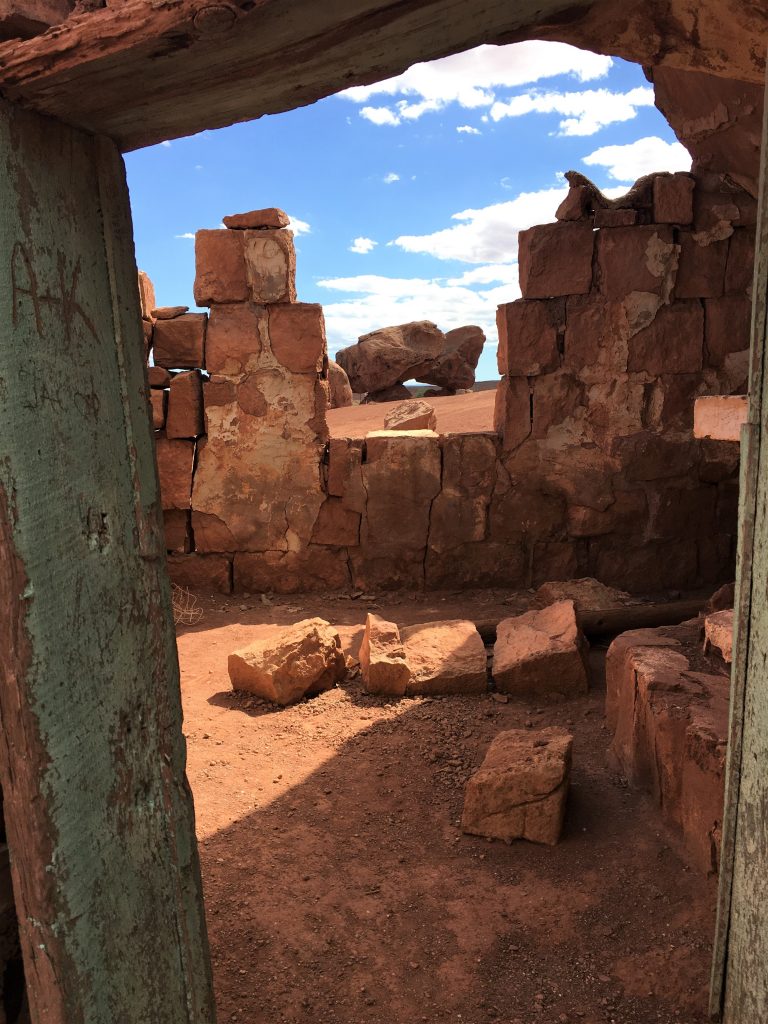
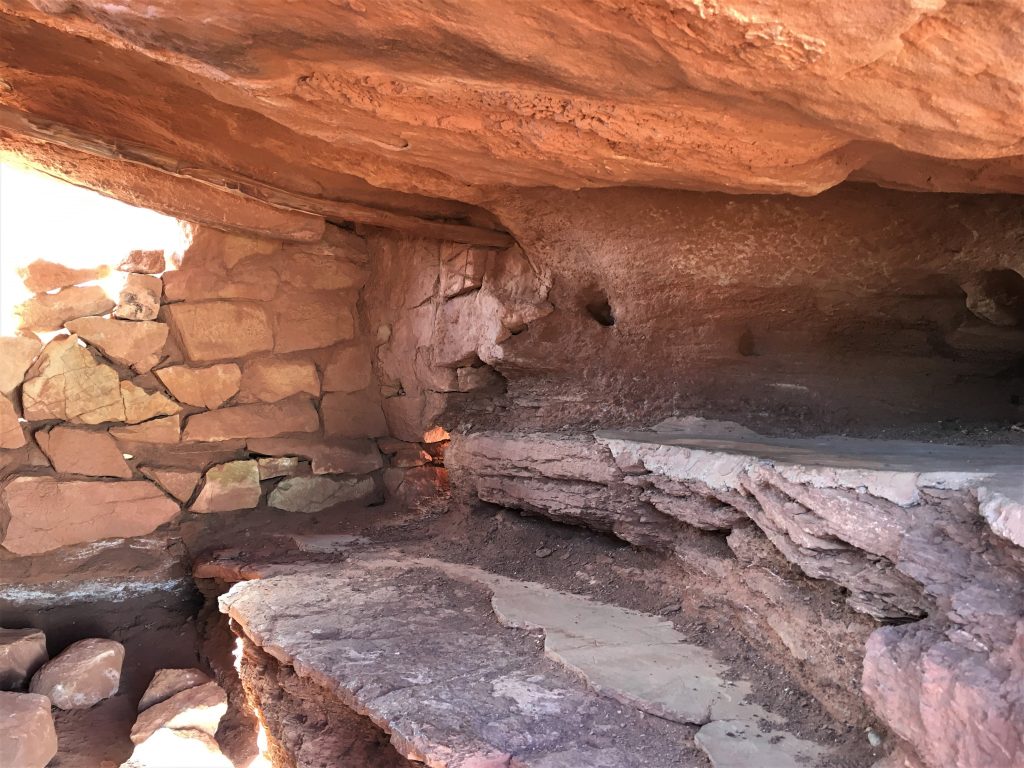
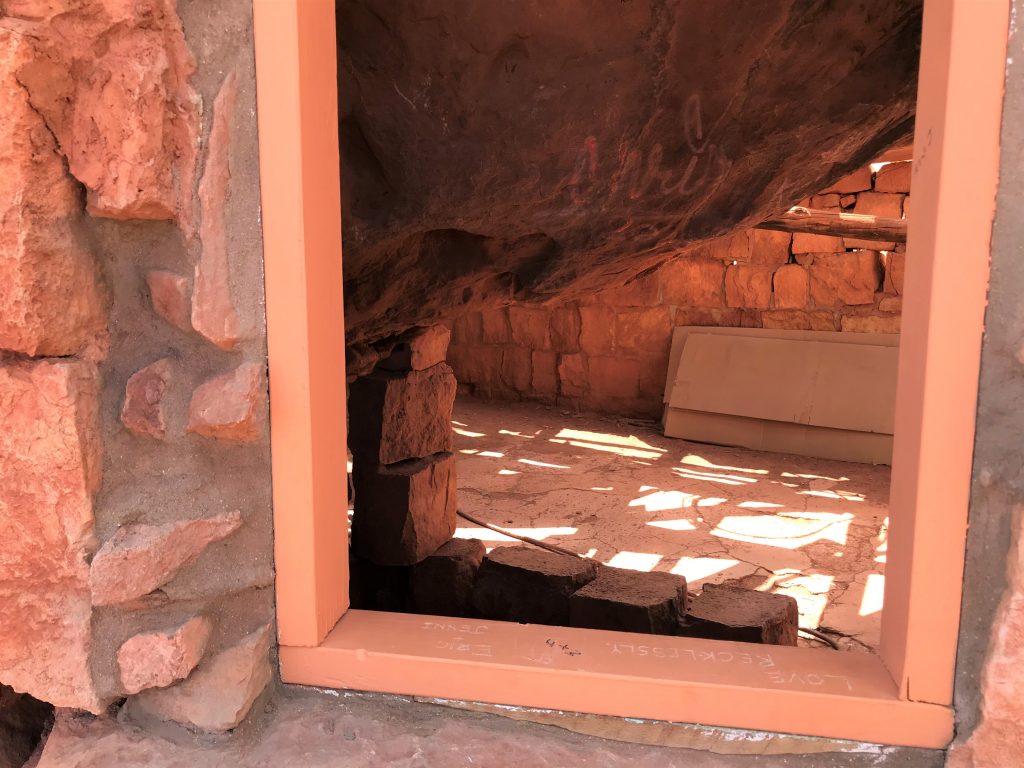
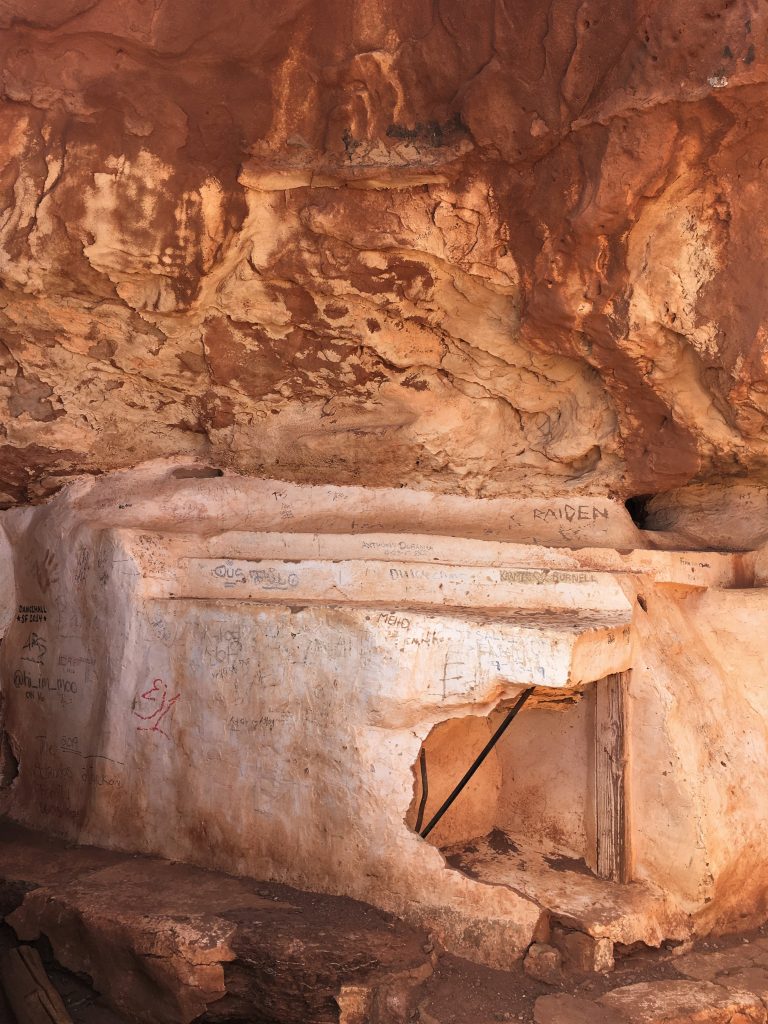
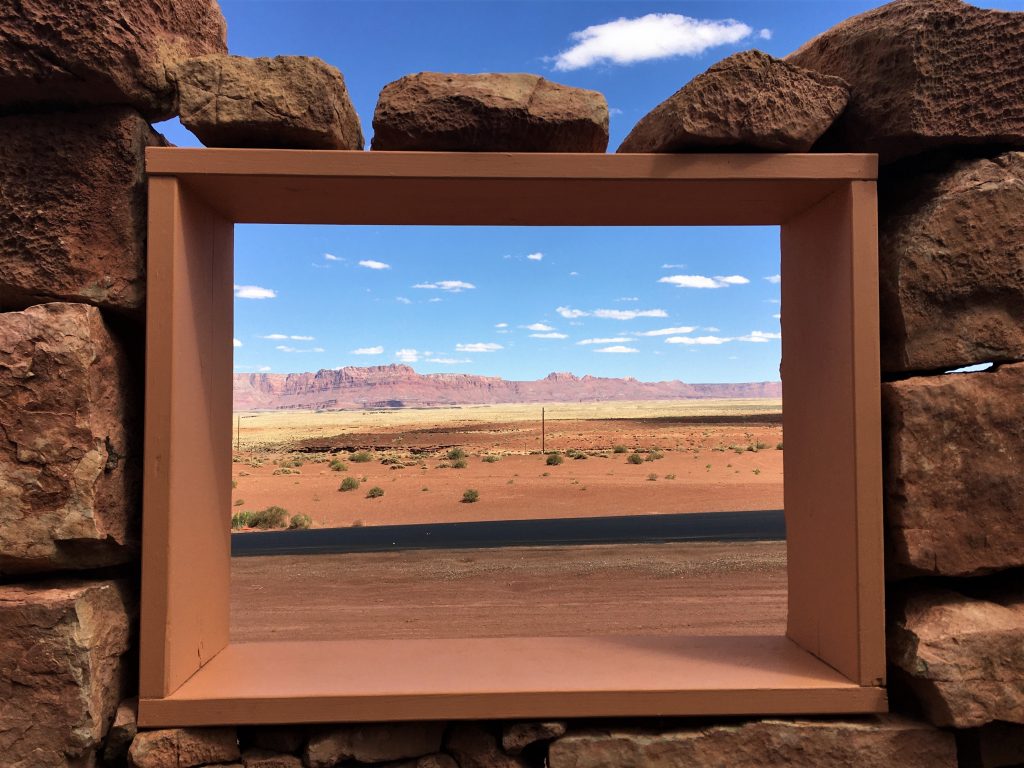
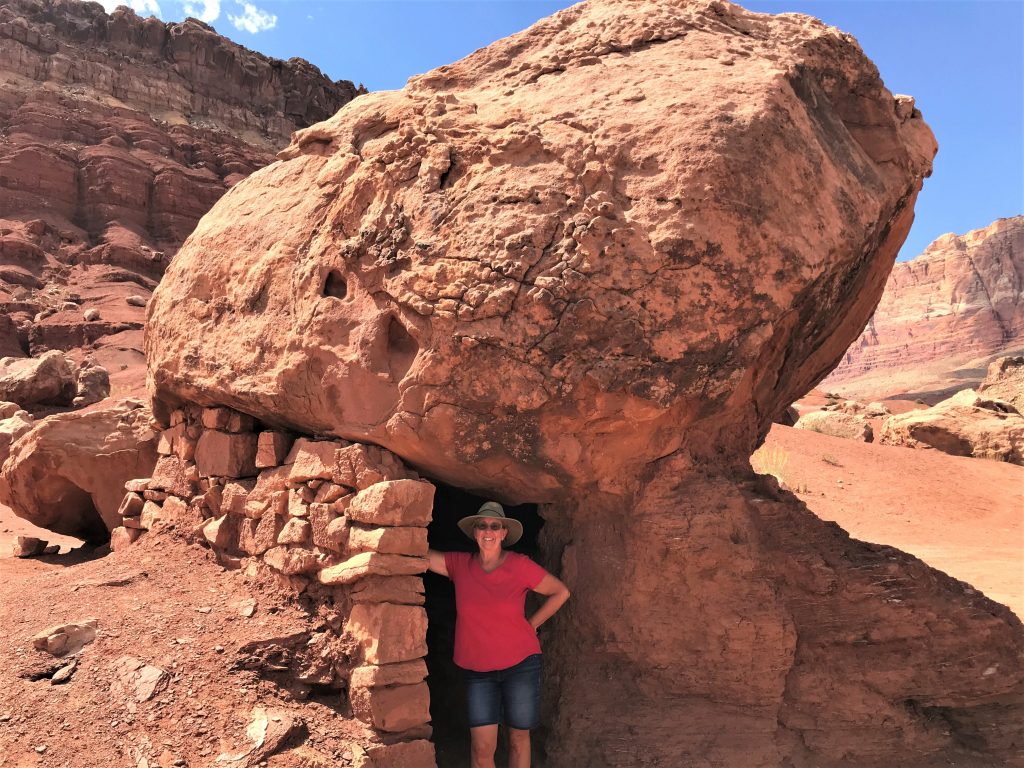
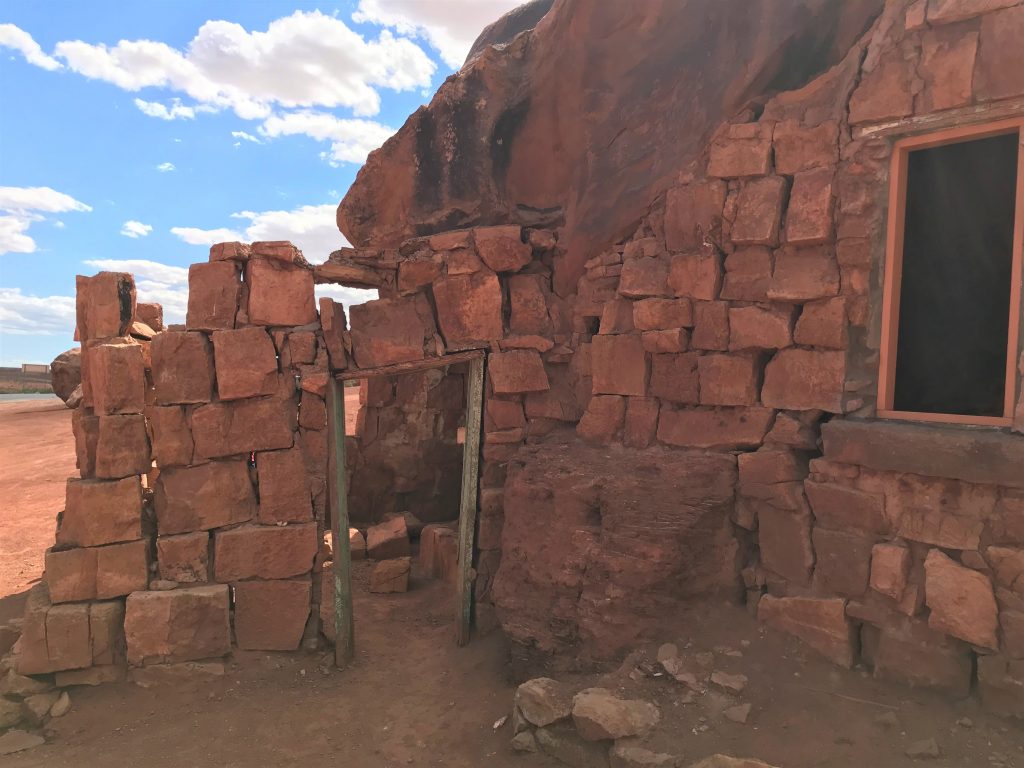
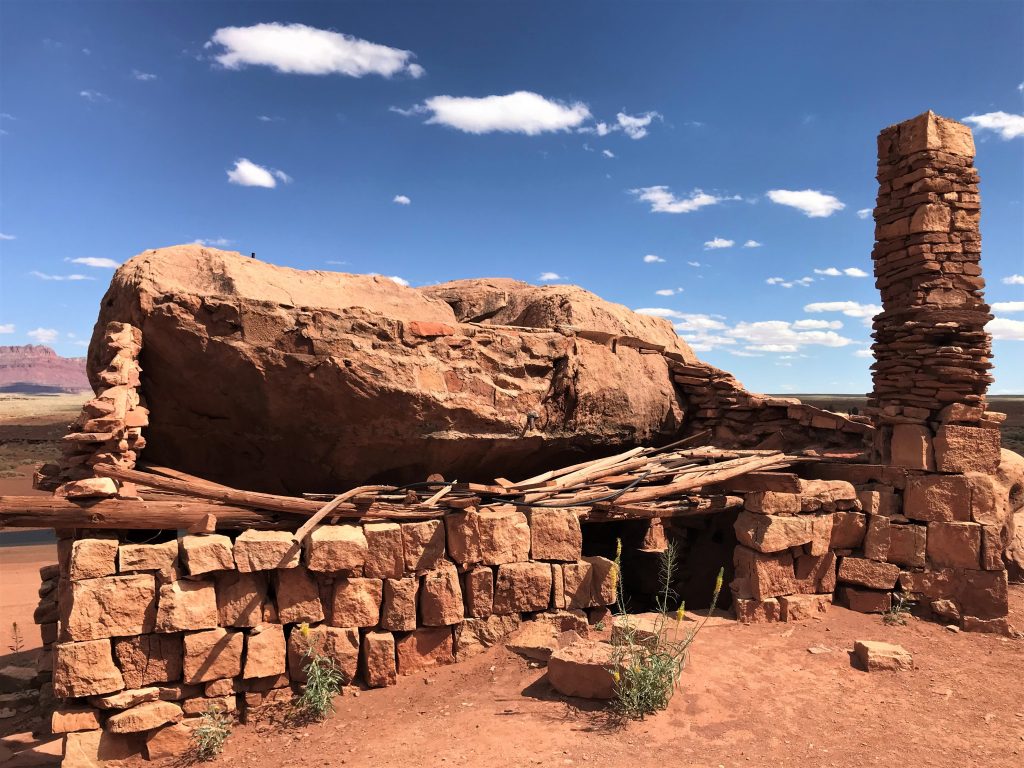
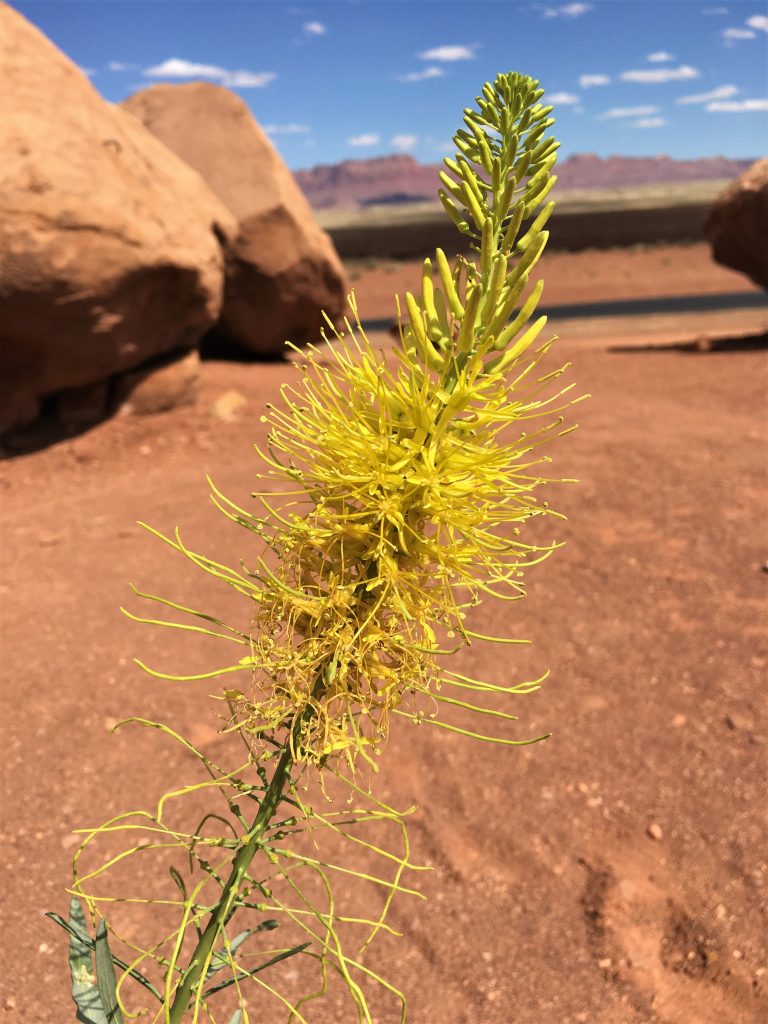
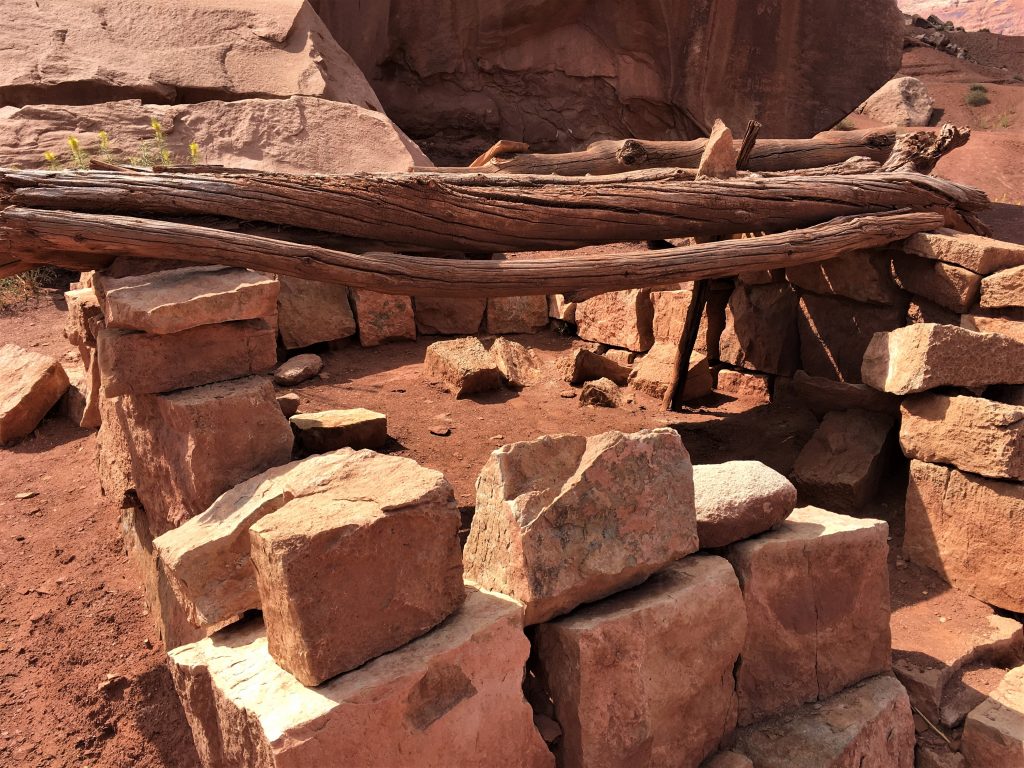
(I hesitate to call them buildings. lol)
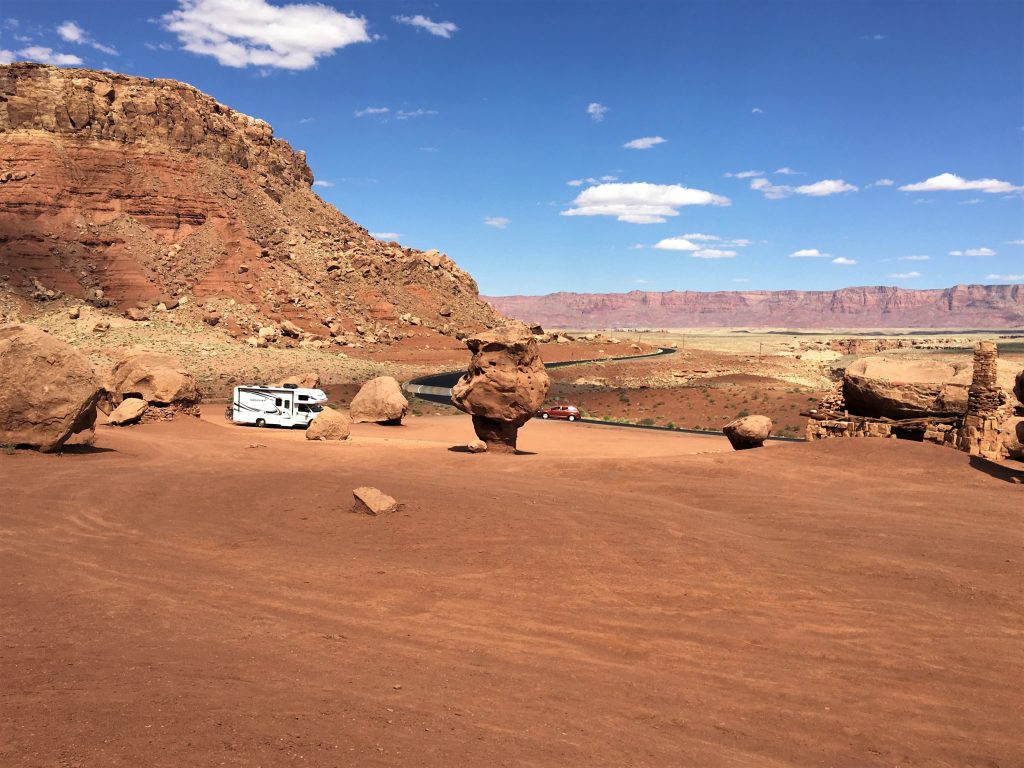
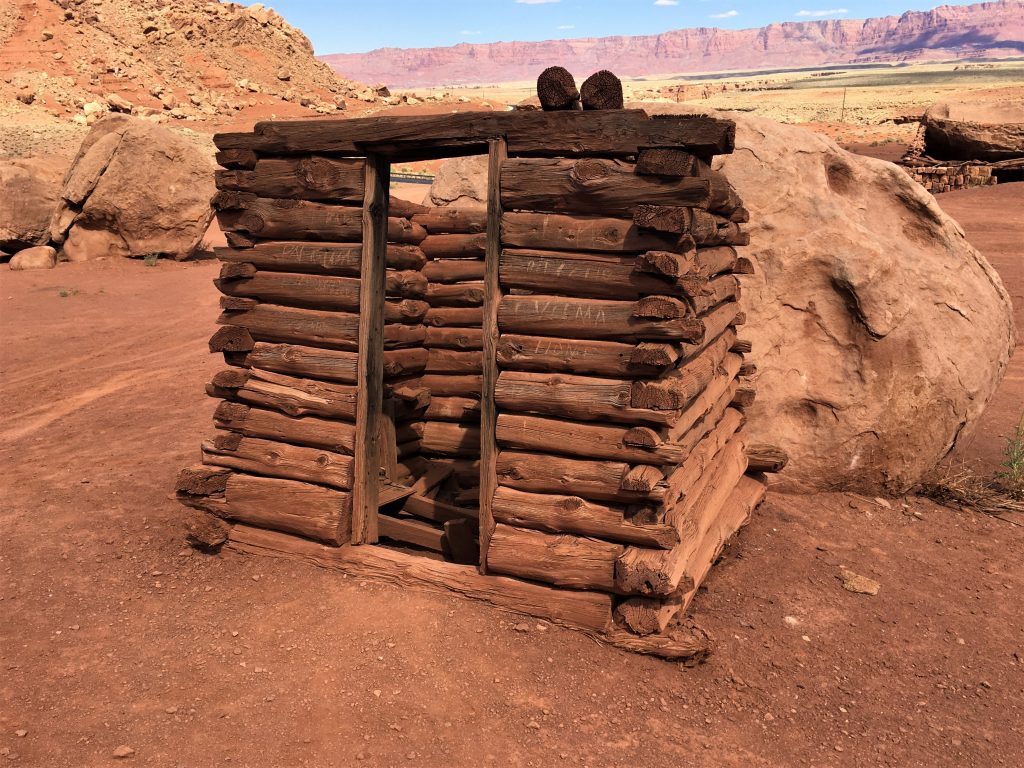
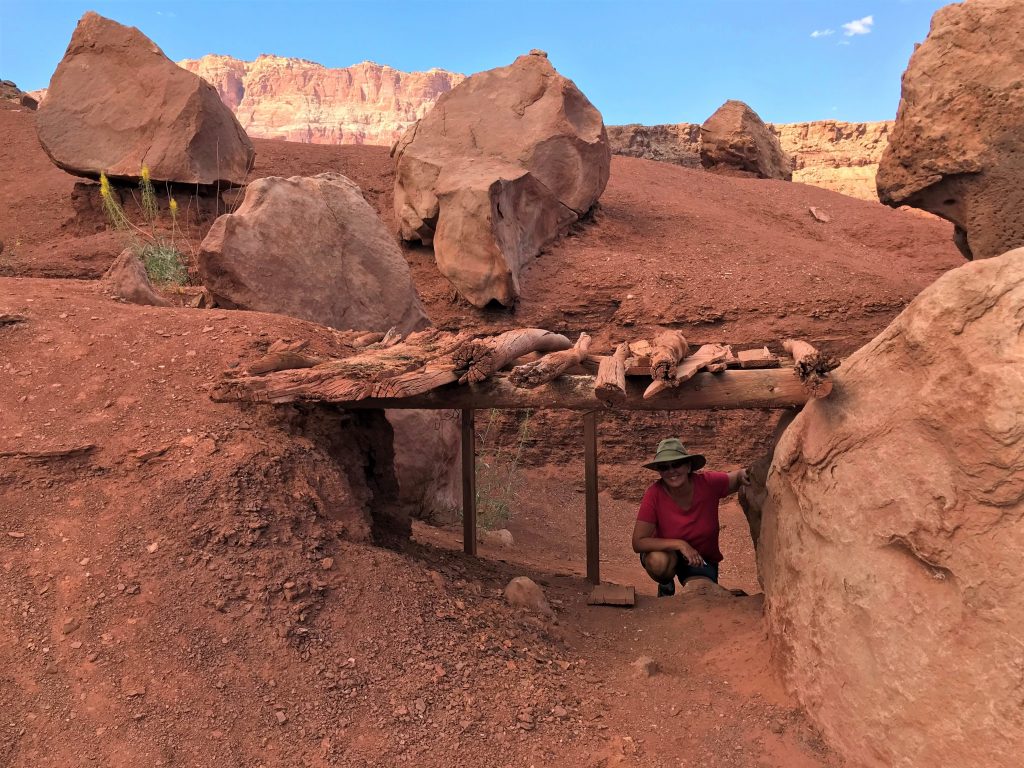
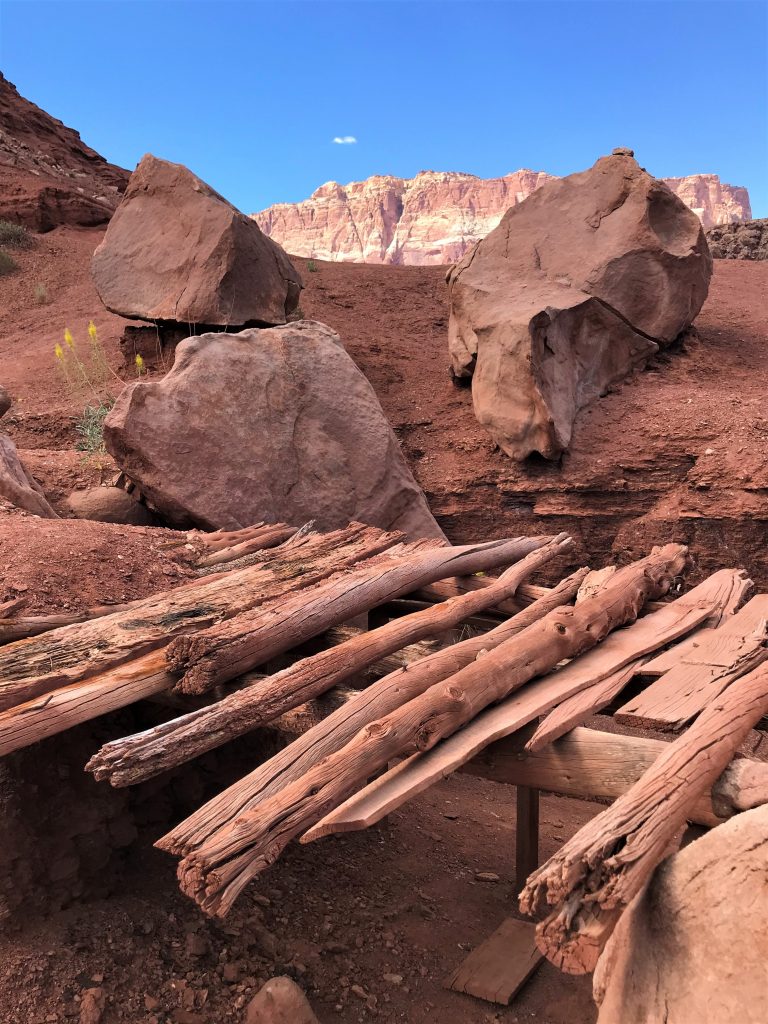


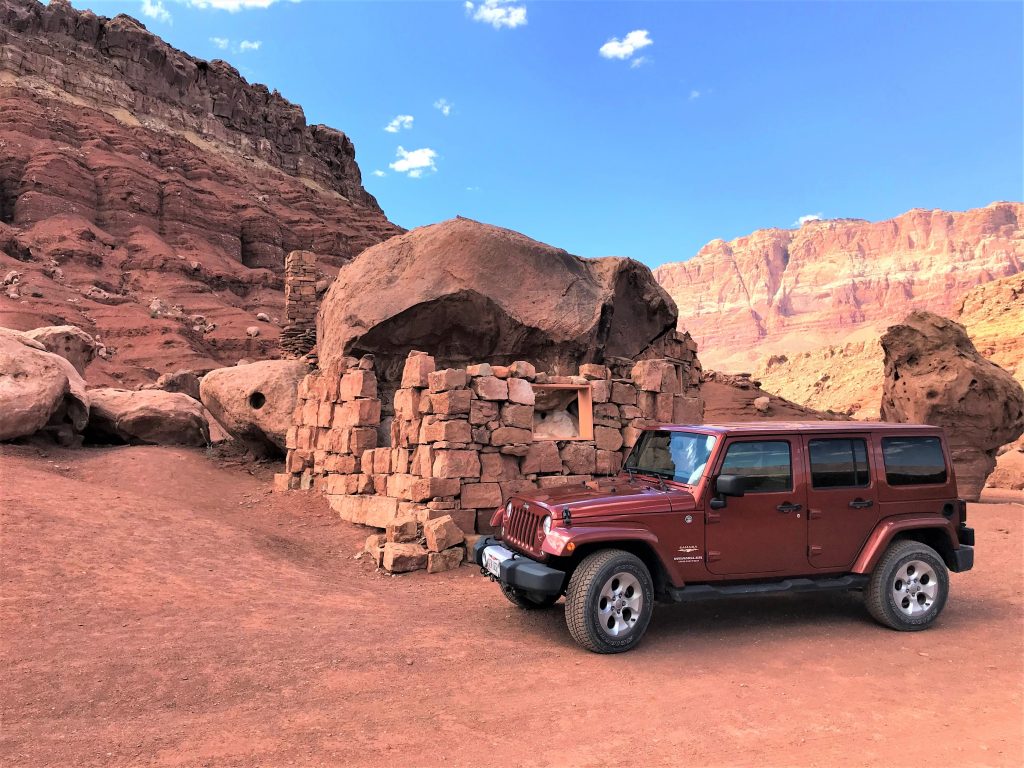
Before we left for home, there was still one more stop to make – The Navajo Bridge. I’ll let you read the information on the pictures I took. When I get behind on my blogging, I sometimes have a tendency to get lazy.

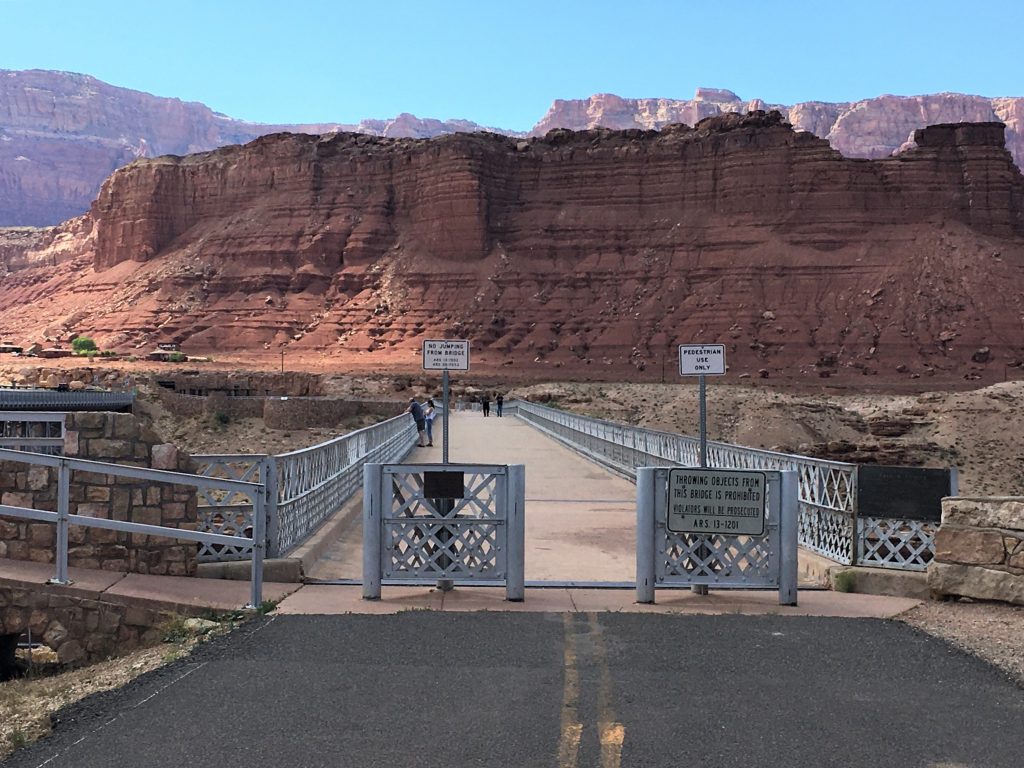
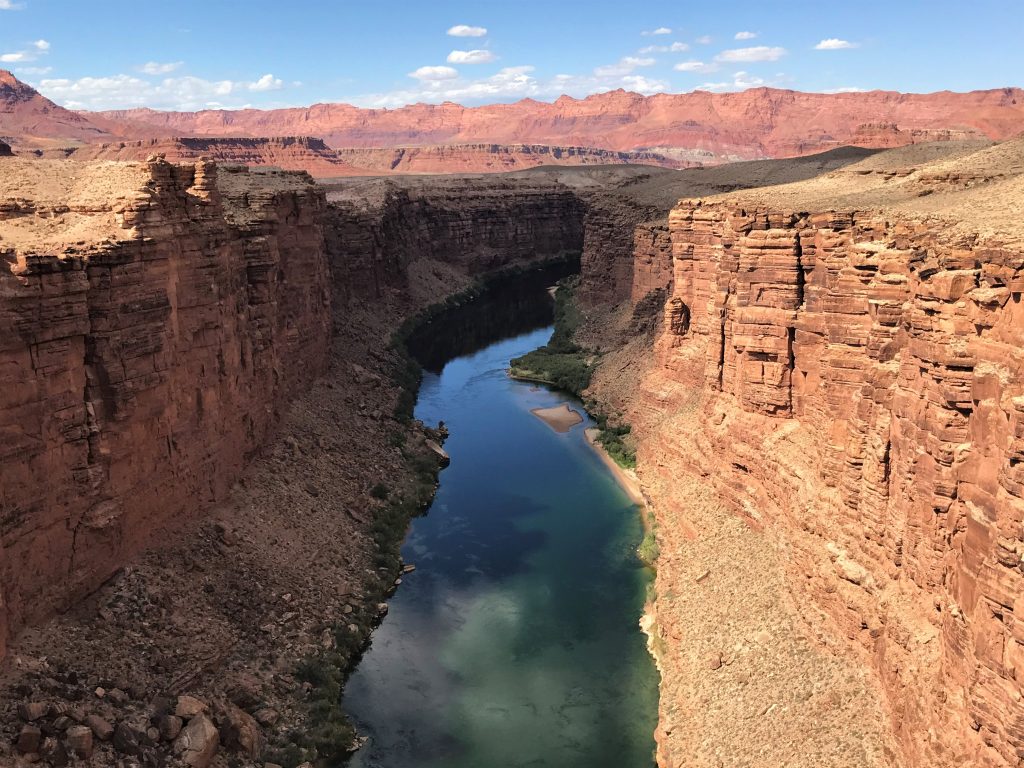
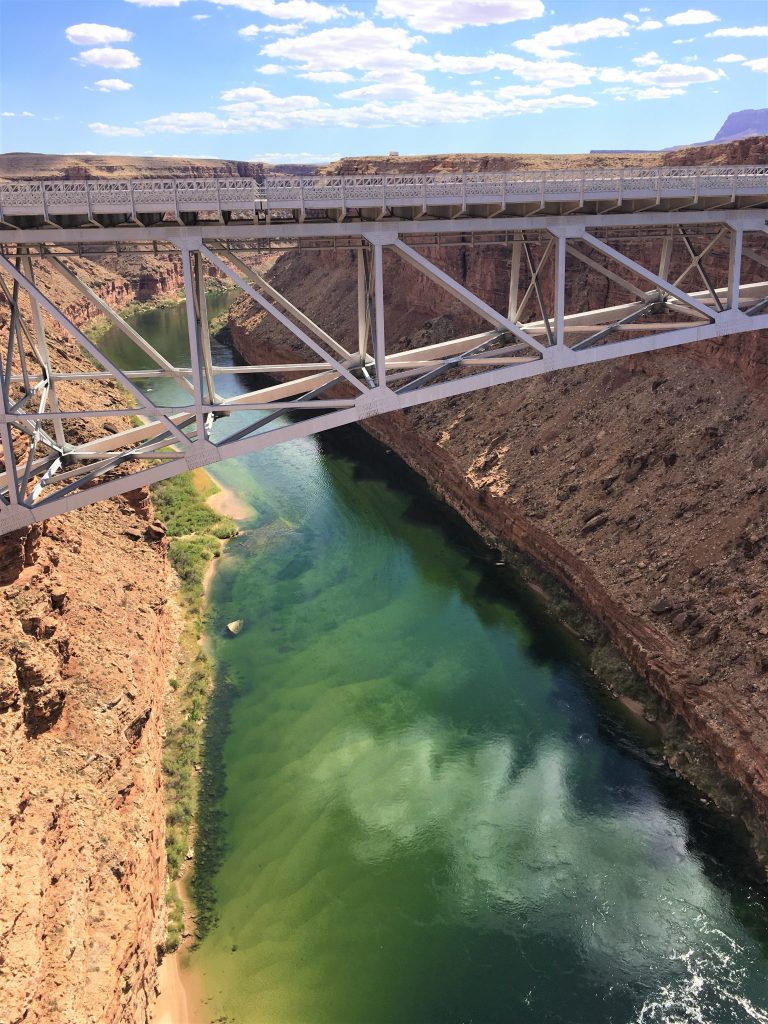
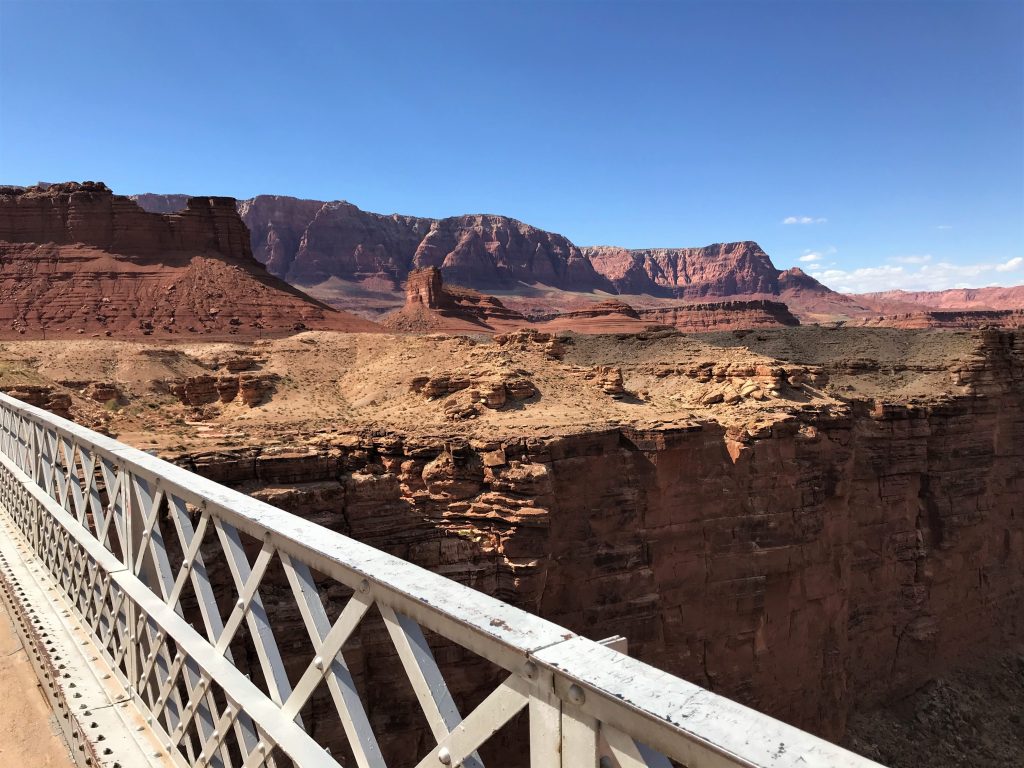
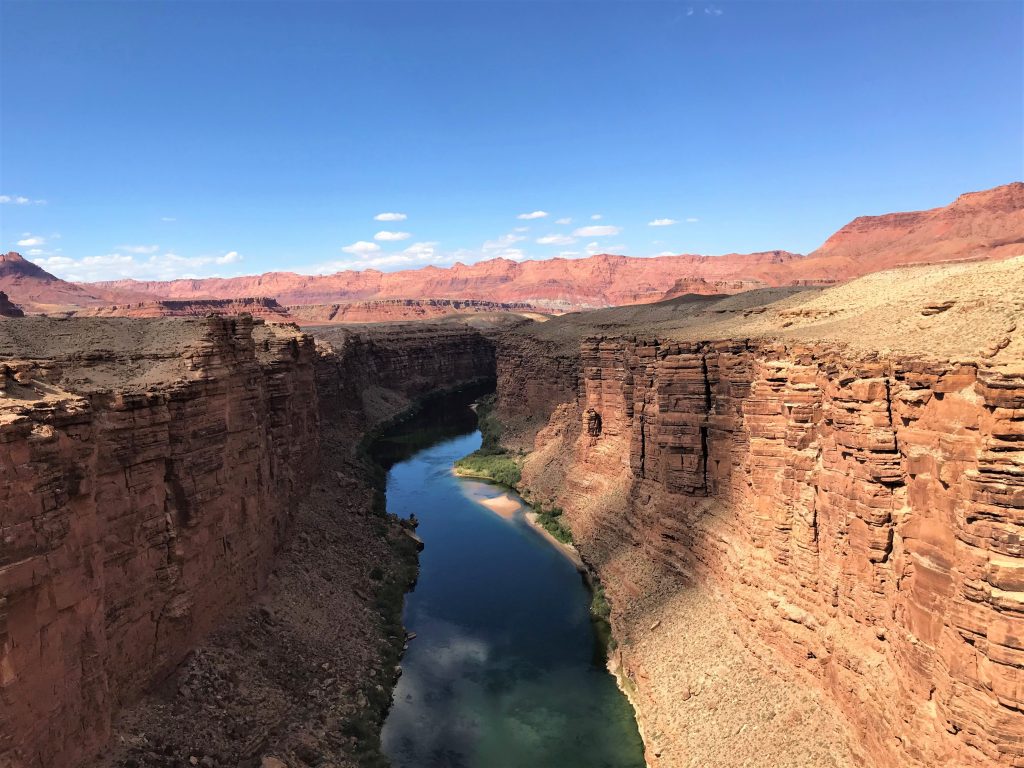
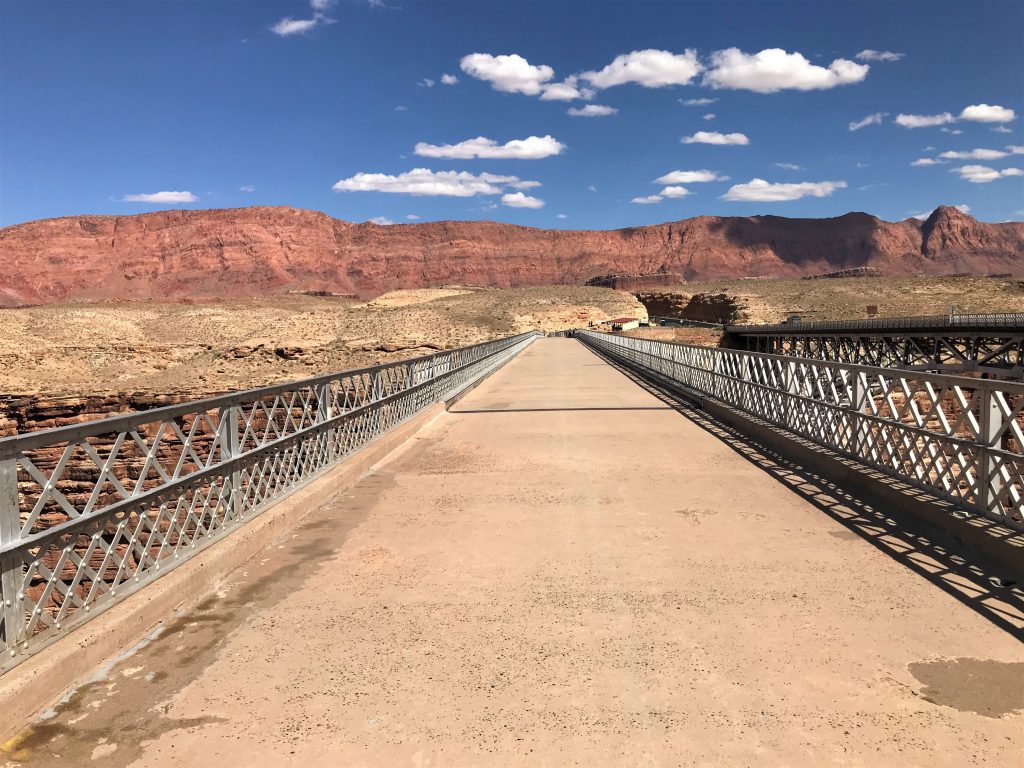
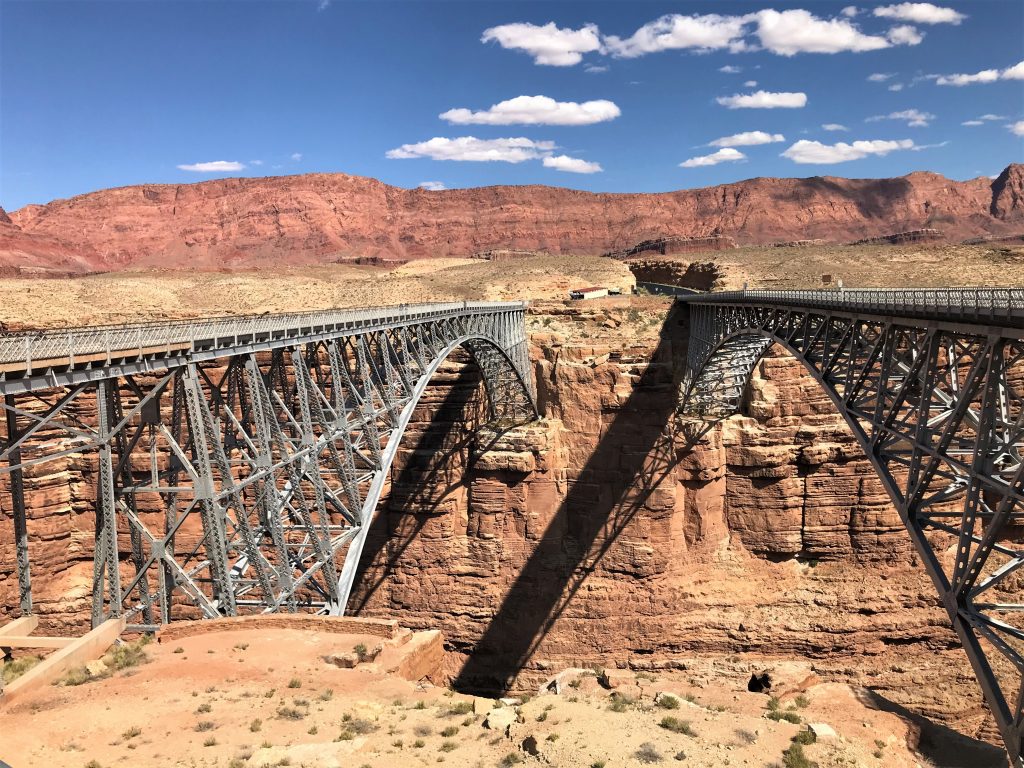
And it looks almost identical to the one you’ll find on the National Park site!
Good job, Blaine!
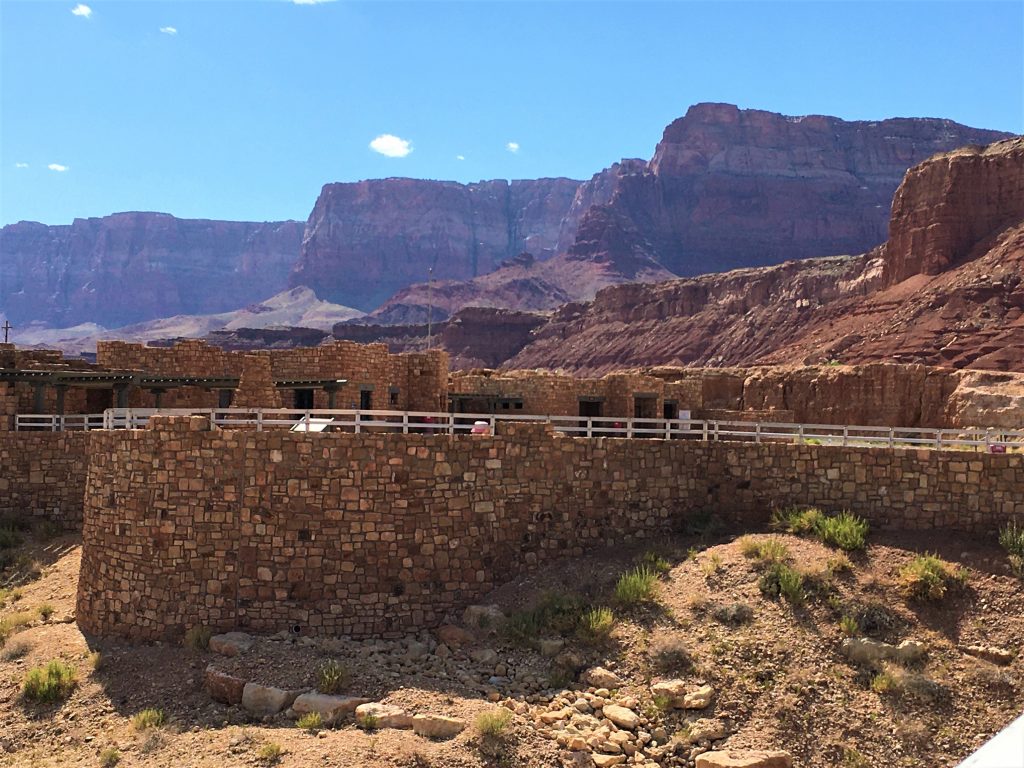
Closed, of course.
At least there was information outside, but some of it was really sun-faded.
It was almost impossible to read the boards that listed the stats for the bridges, but as I was looking for a construction date for the new one, I discovered the following: : )
| Navajo Bridge | Historic Bridge | Modern Bridge |
| Total Length | 834 feet (254 m) | 909 feet (277 m) |
| Steel Arch Length | 616 feet (188 m) | 726 feet (221 m) |
| Arch Rise | 90 feet (27.4 m) | 90 feet (27.4 m) |
| Height Above River | 467 feet (142 m) | 470 feet (143 m) |
| Width of Roadway | 18 feet (5.5 m) | 44 feet (13.4 m) |
| Amount of Steel | 2.4 million pounds (1.1 million kg) | 3.9 million pounds (1.8 million kg) |
| Amount of Concrete | 500 cubic yards (385 cubic m) | 1790 cubic yards (1370 cubic m) |
| Steel Reinforcement | 82,000 pounds (37,000 kg) | 434,000 pounds (197,000 kg) |
| Construction Cost | $390,000 | $14,700,000 |
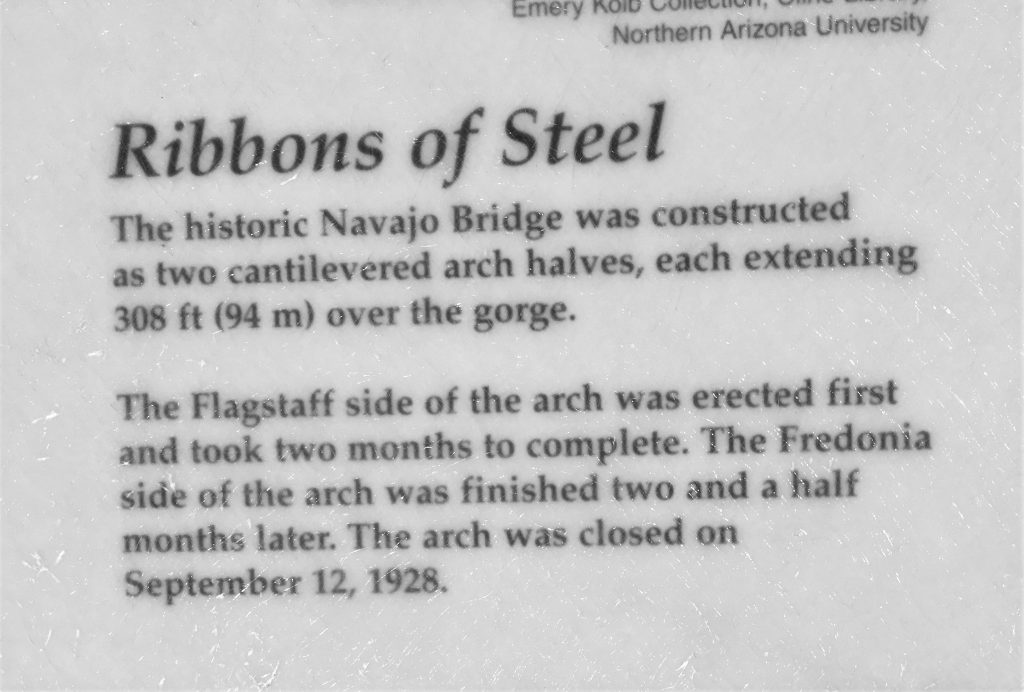
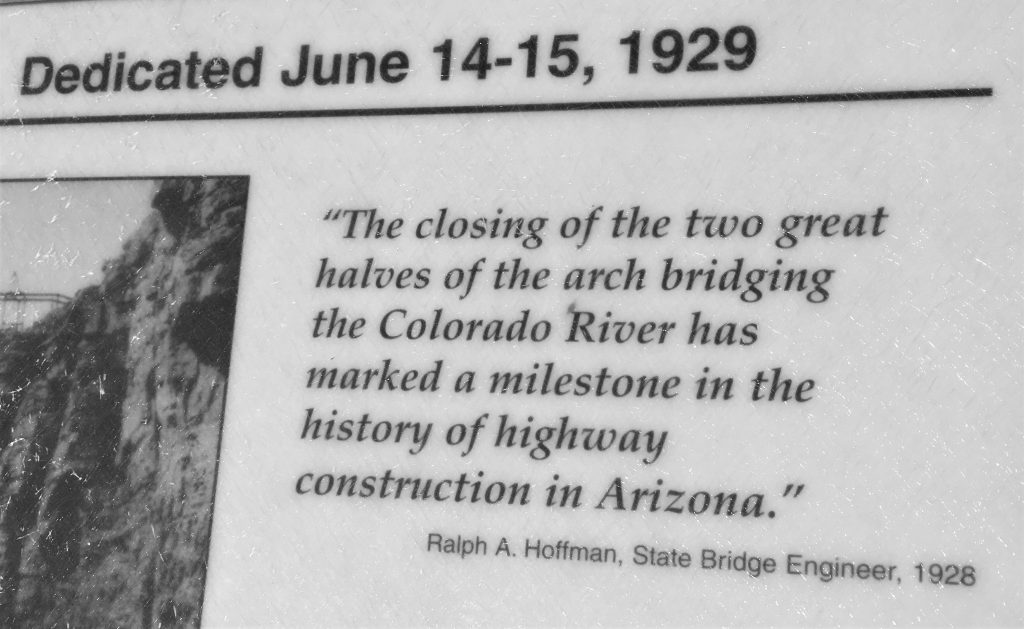
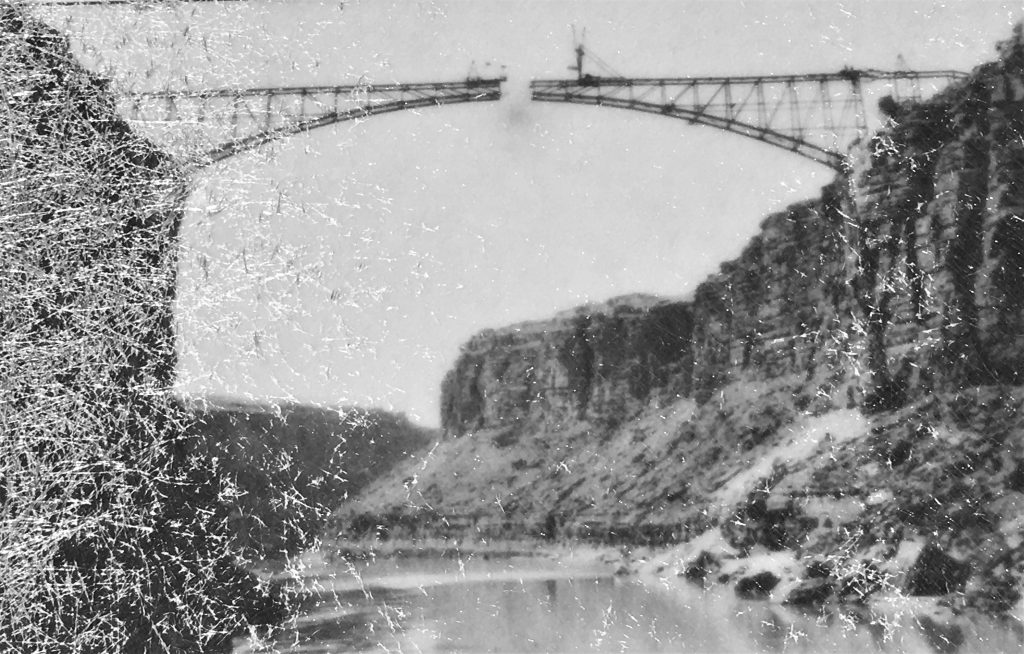
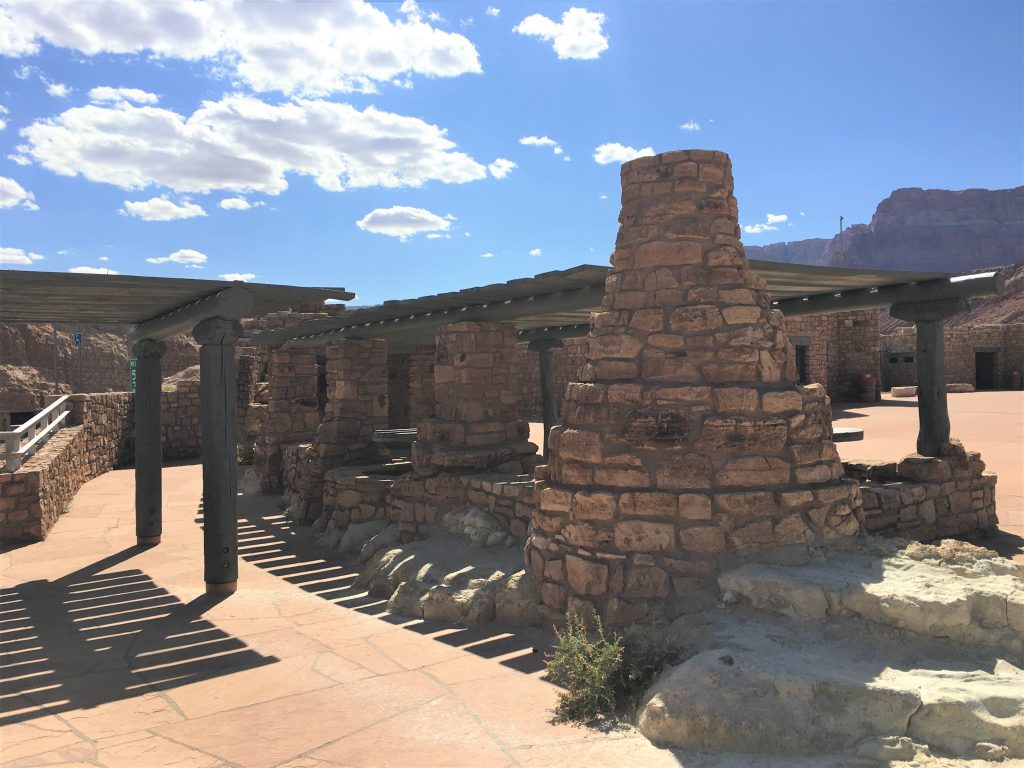
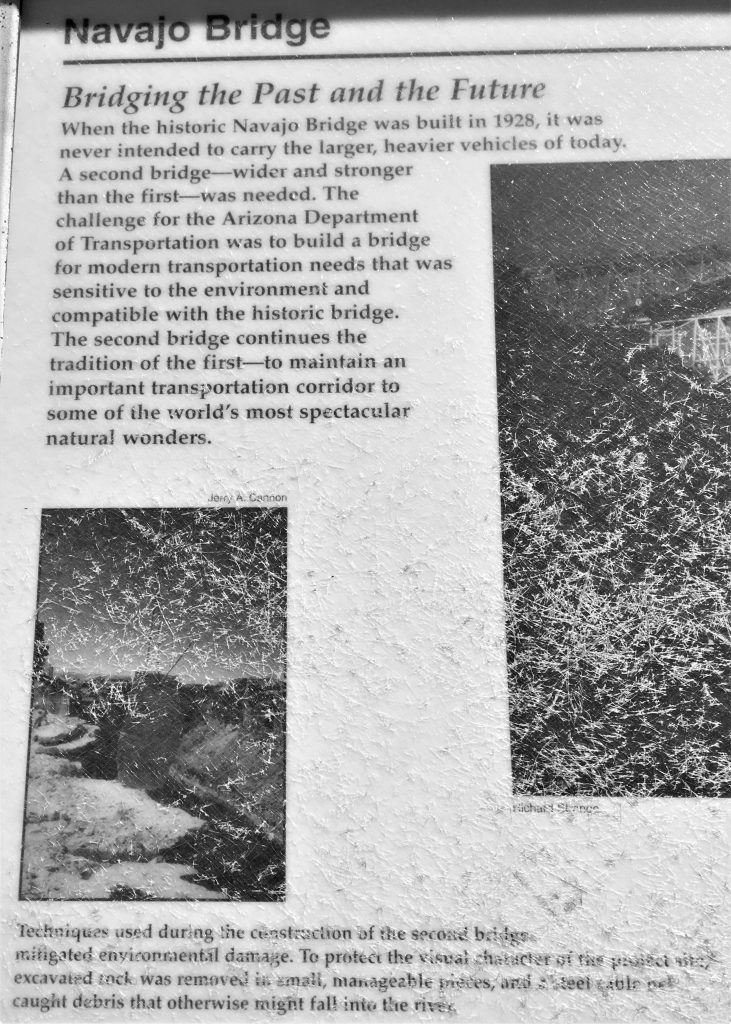
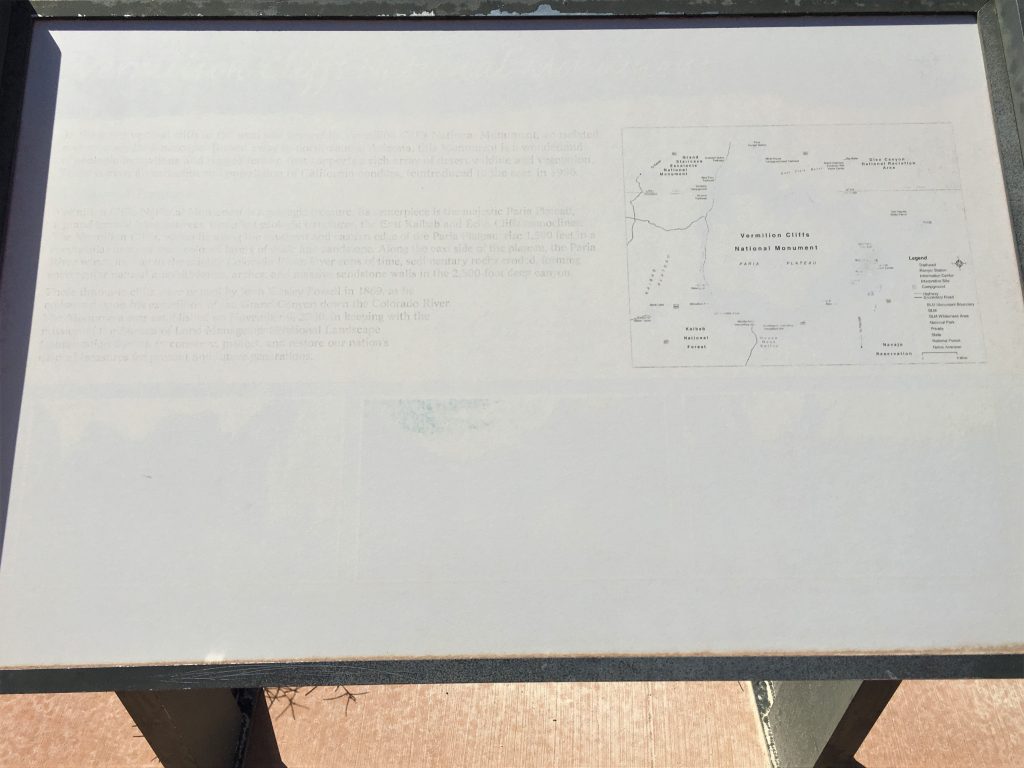
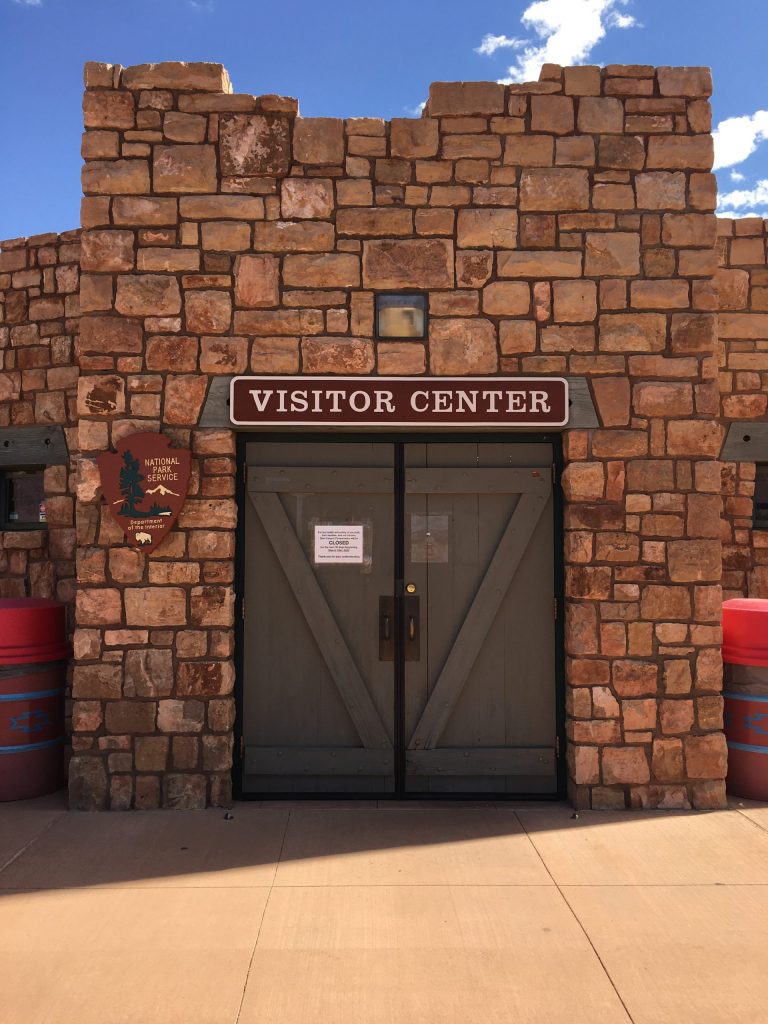
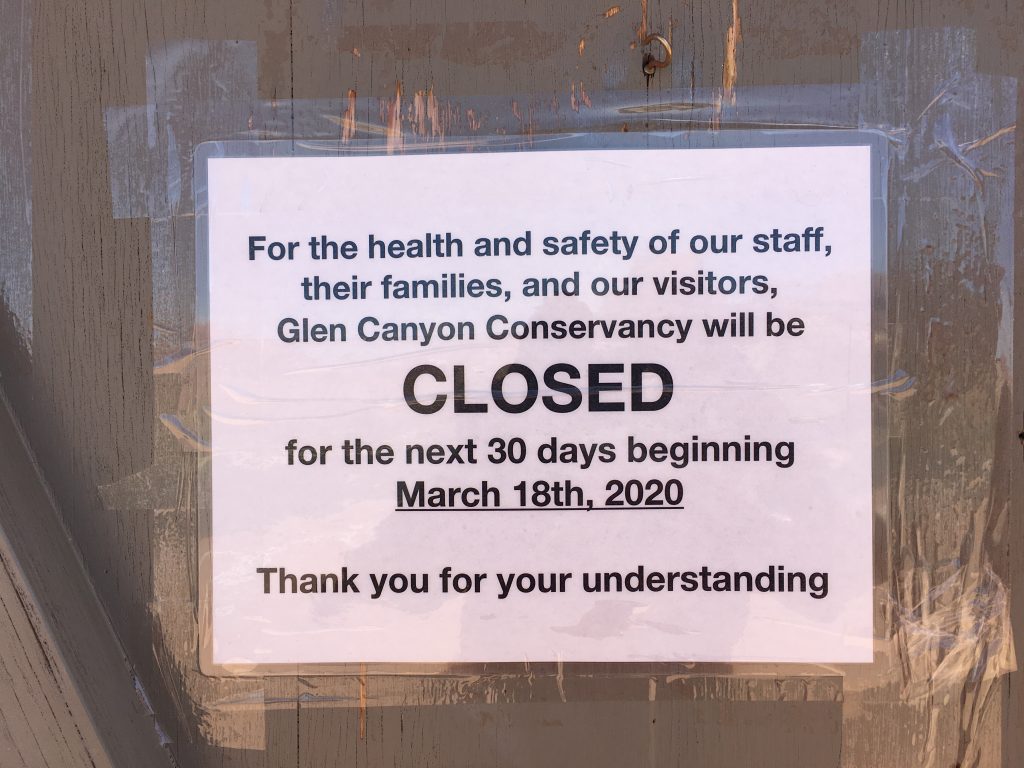
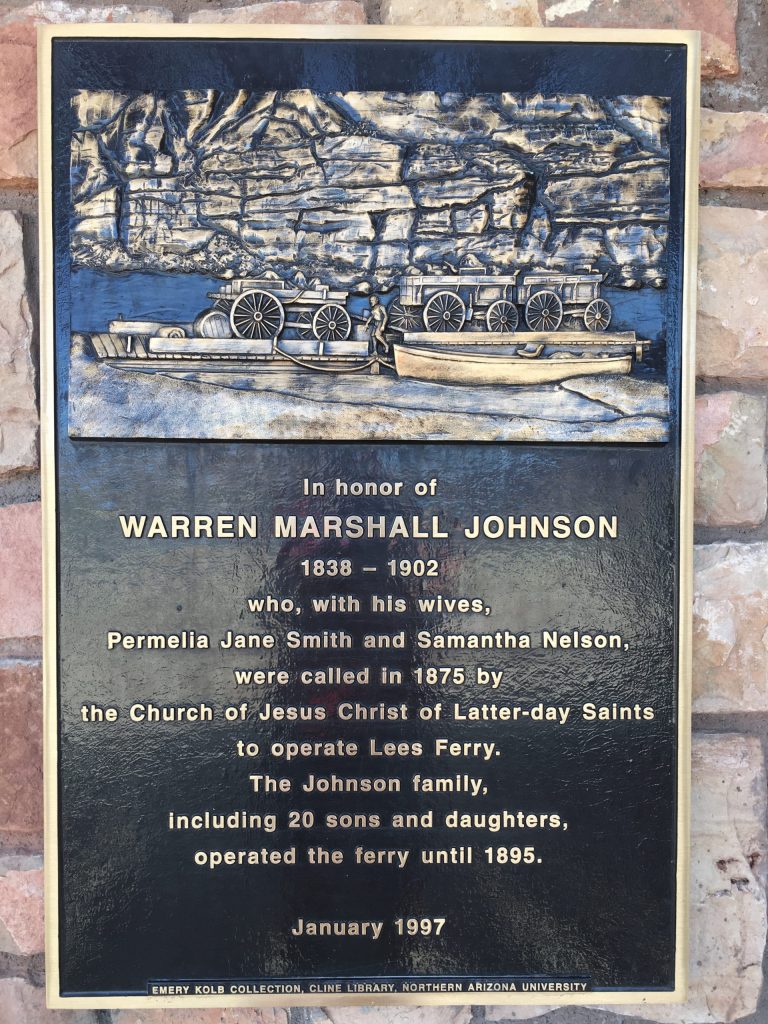
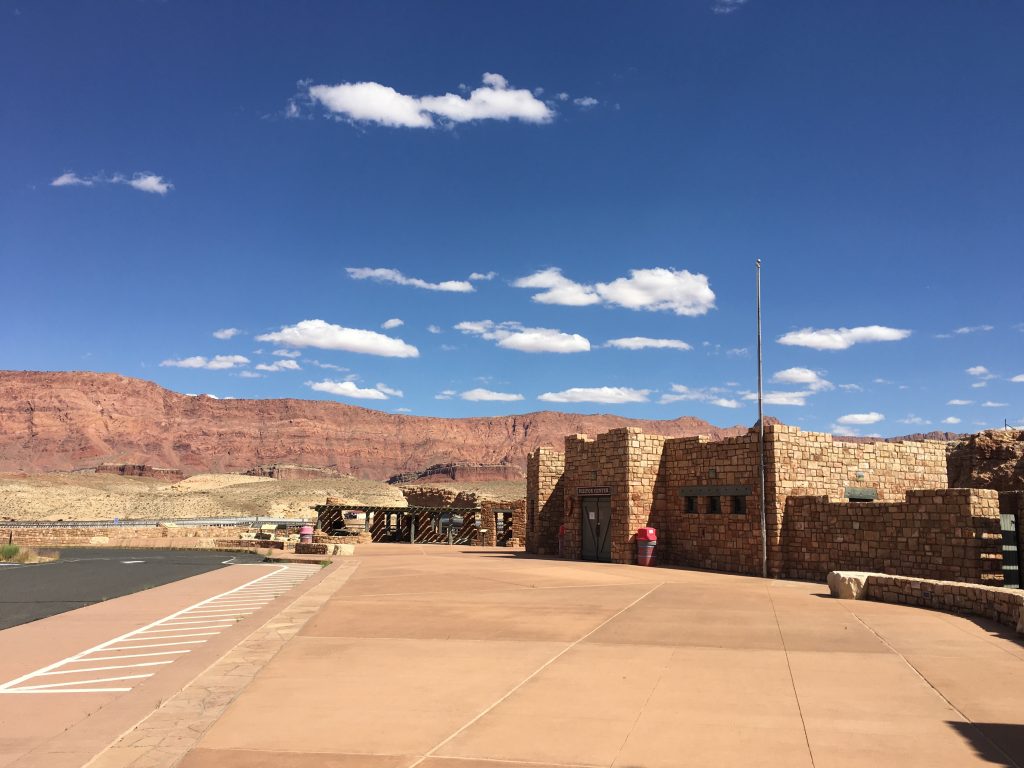
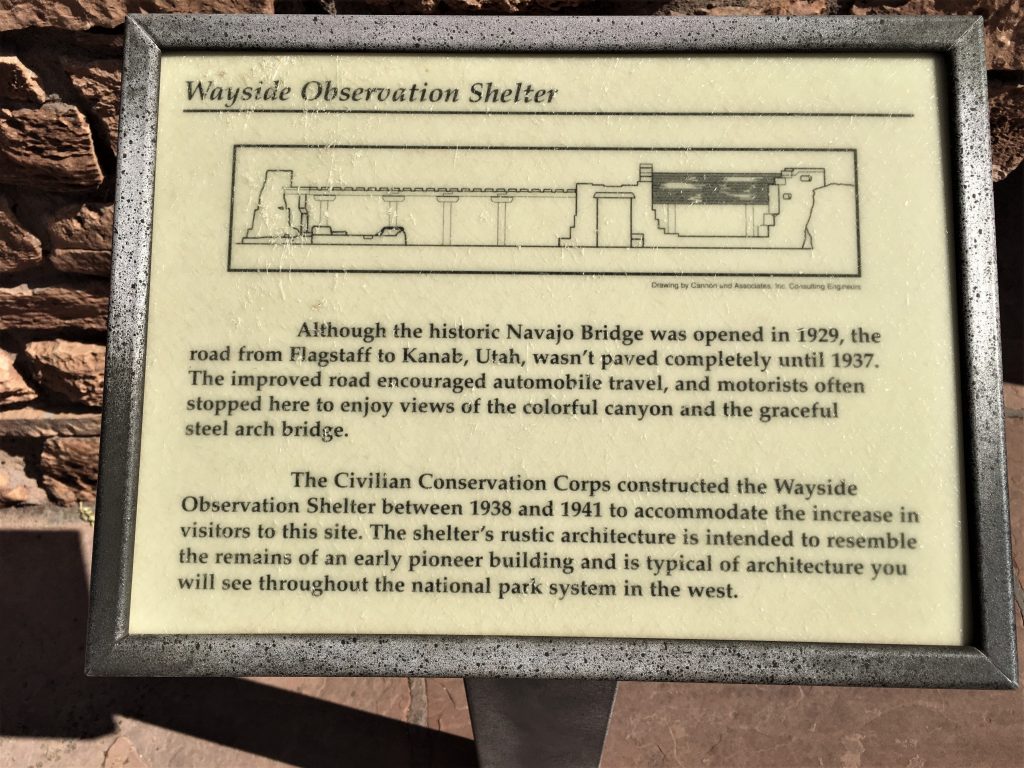
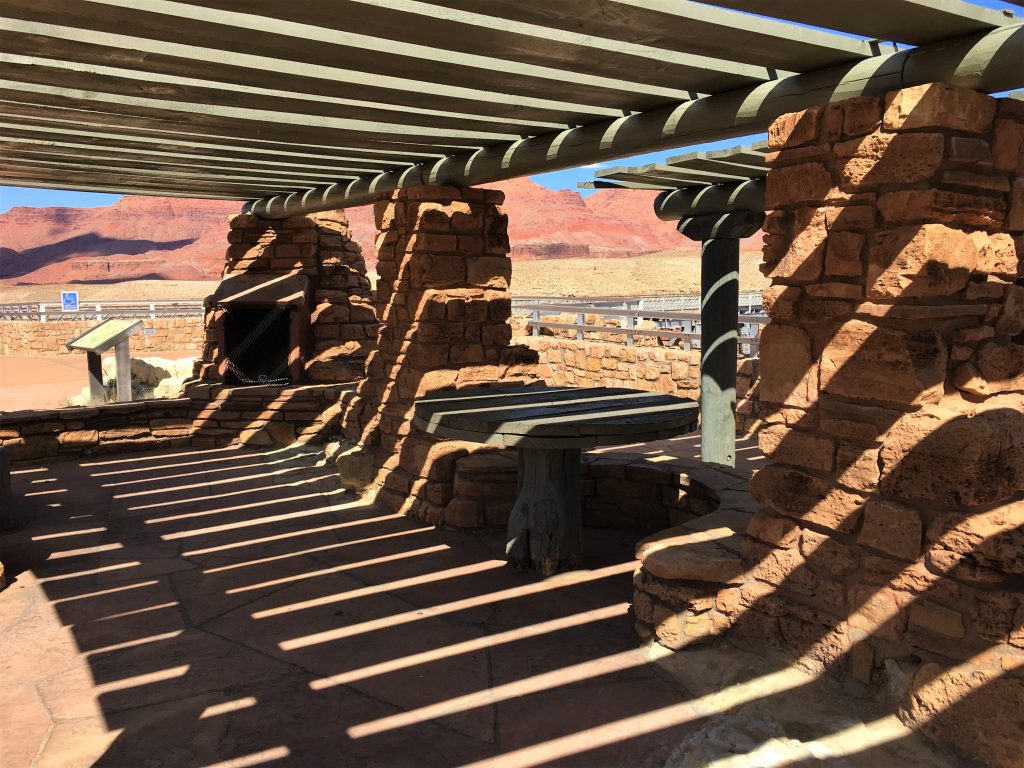

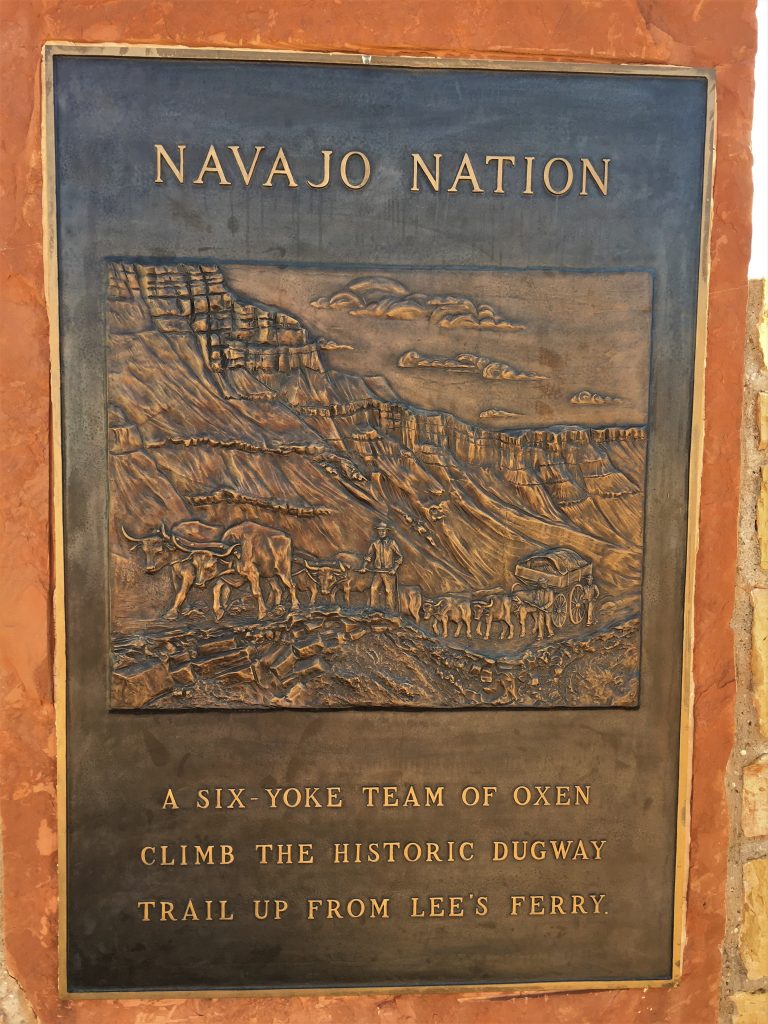

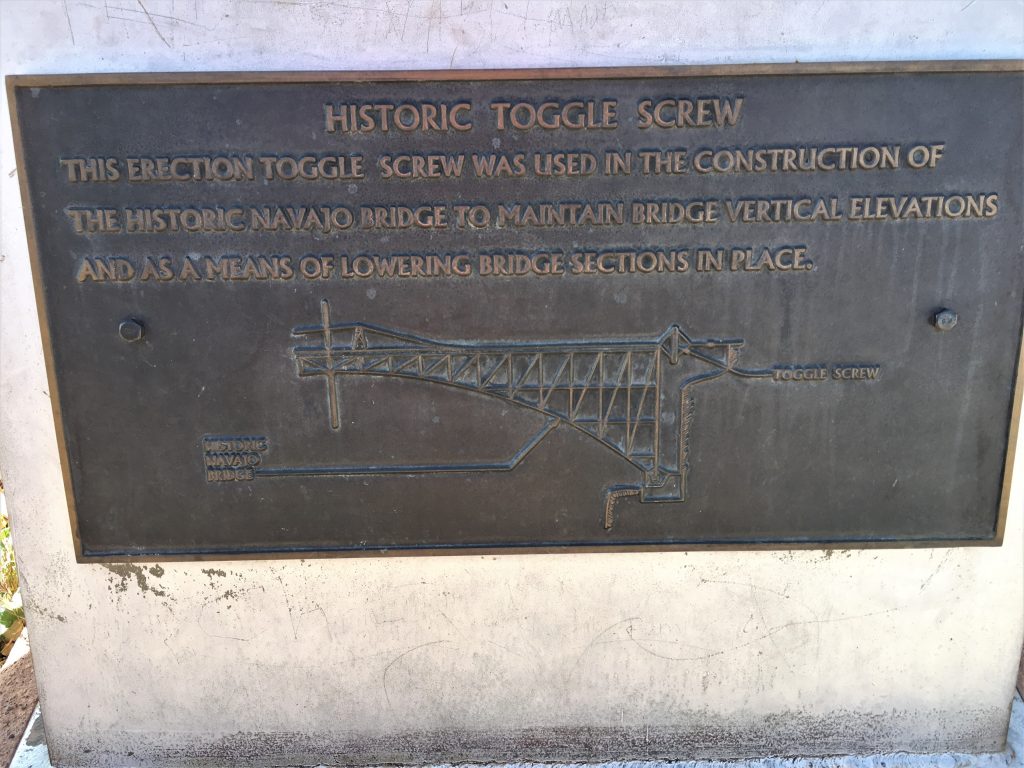
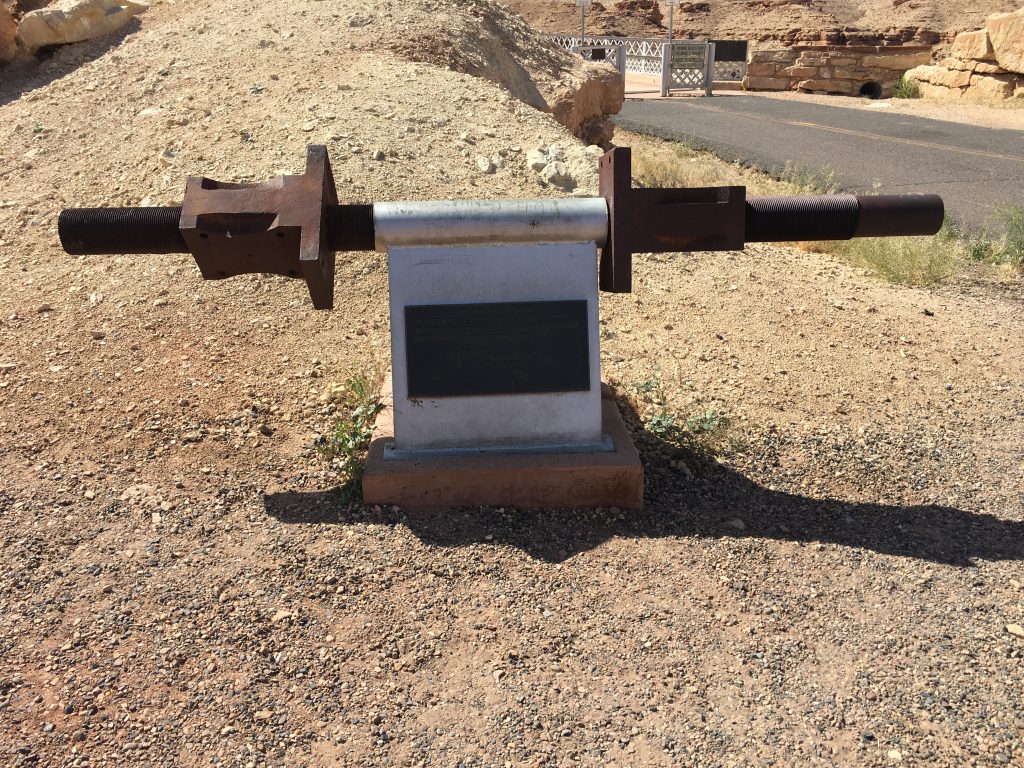
It’s been a long day. Time to head home.

Driving home, we came upon a fire! Fortunately, it was put out quickly before it spread too far!

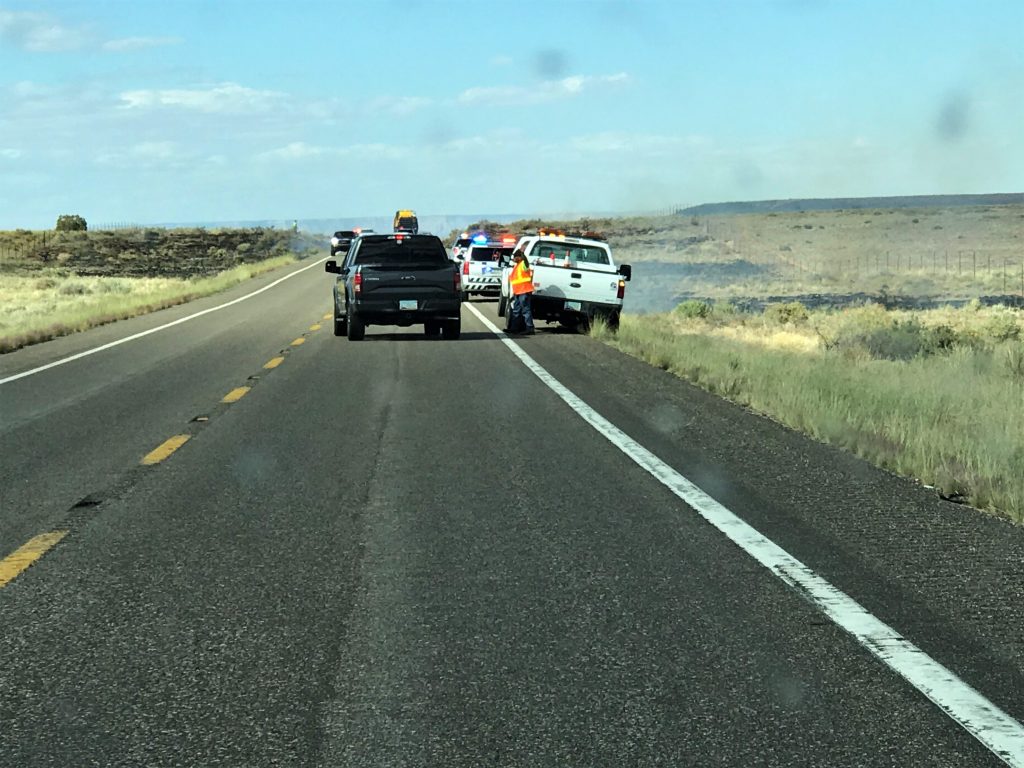
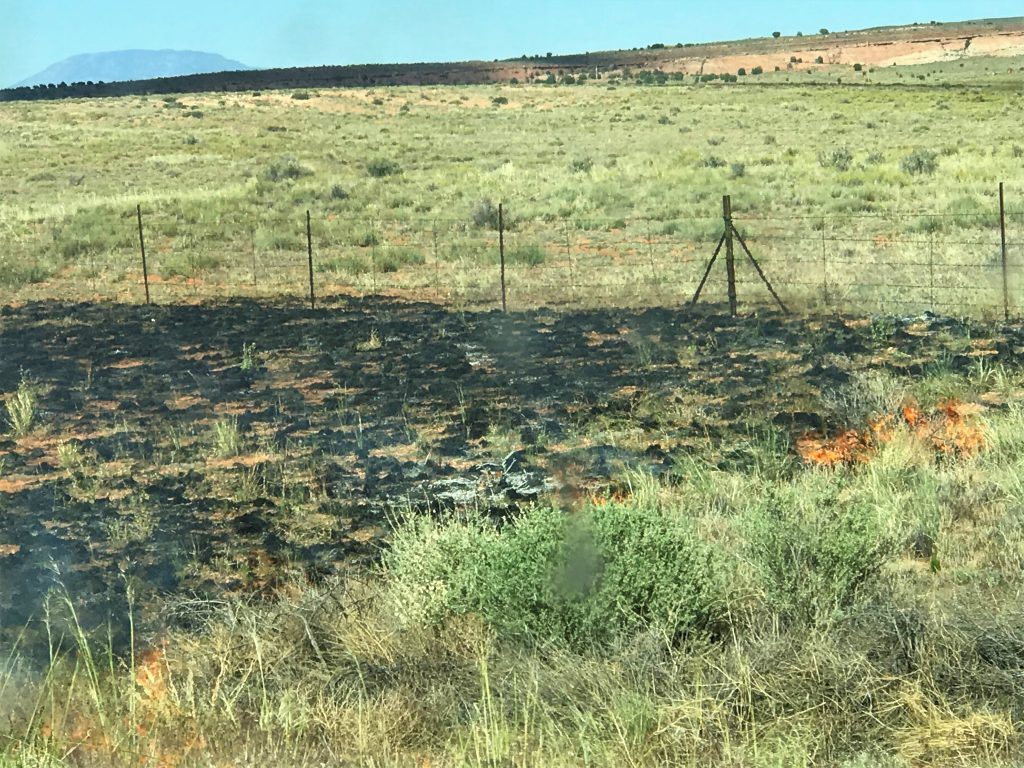
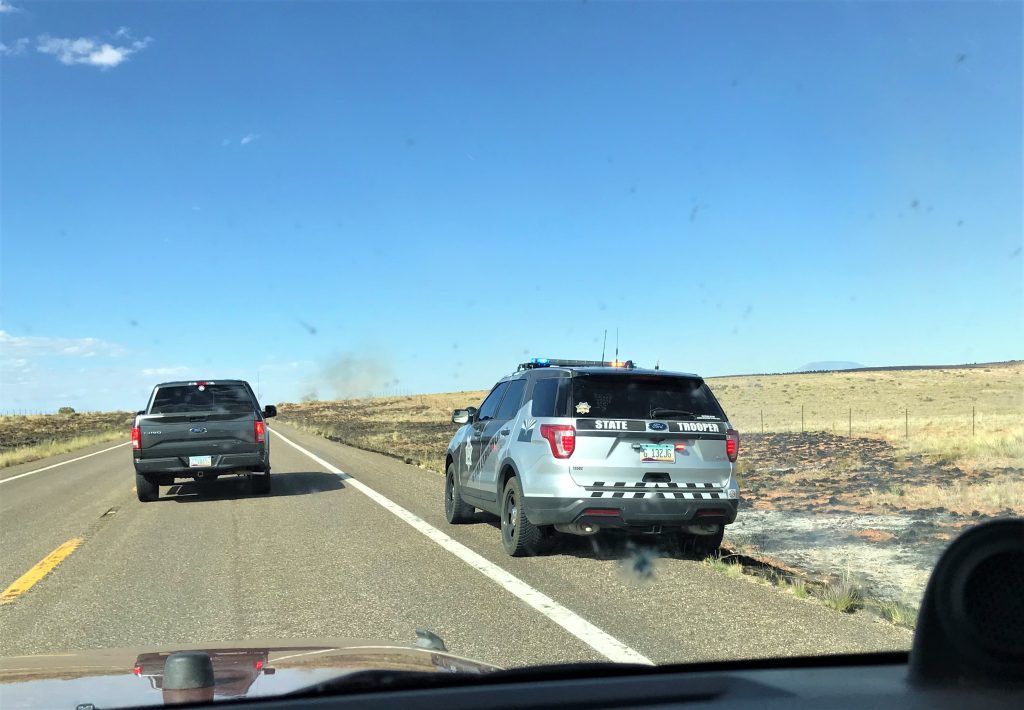
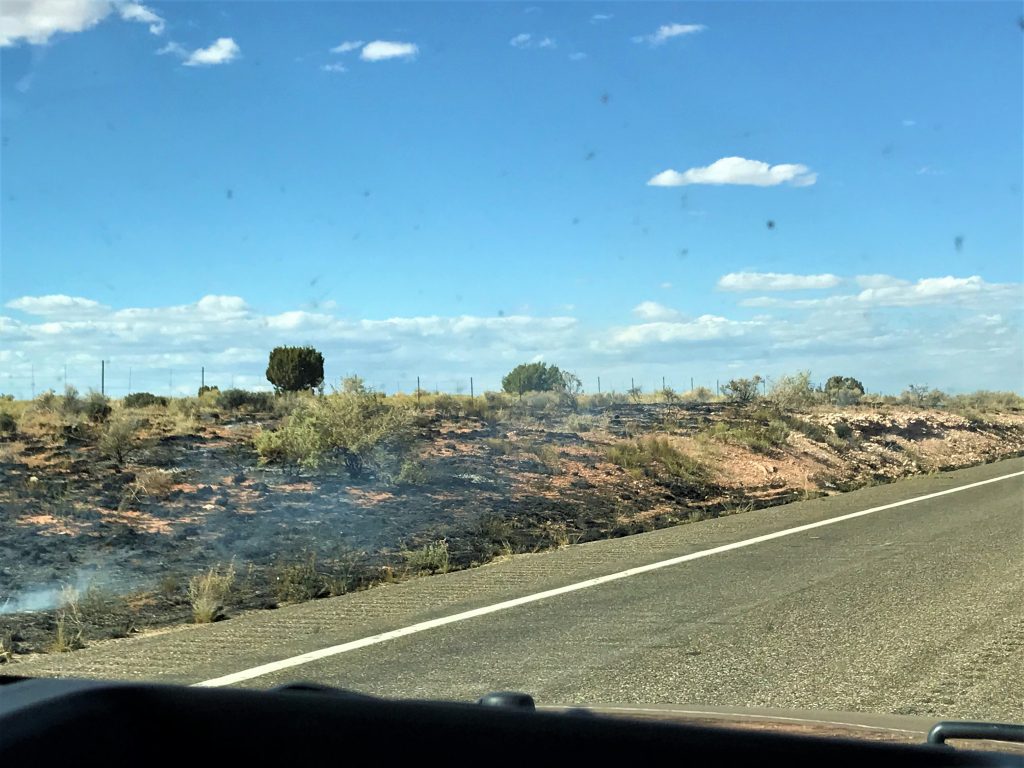
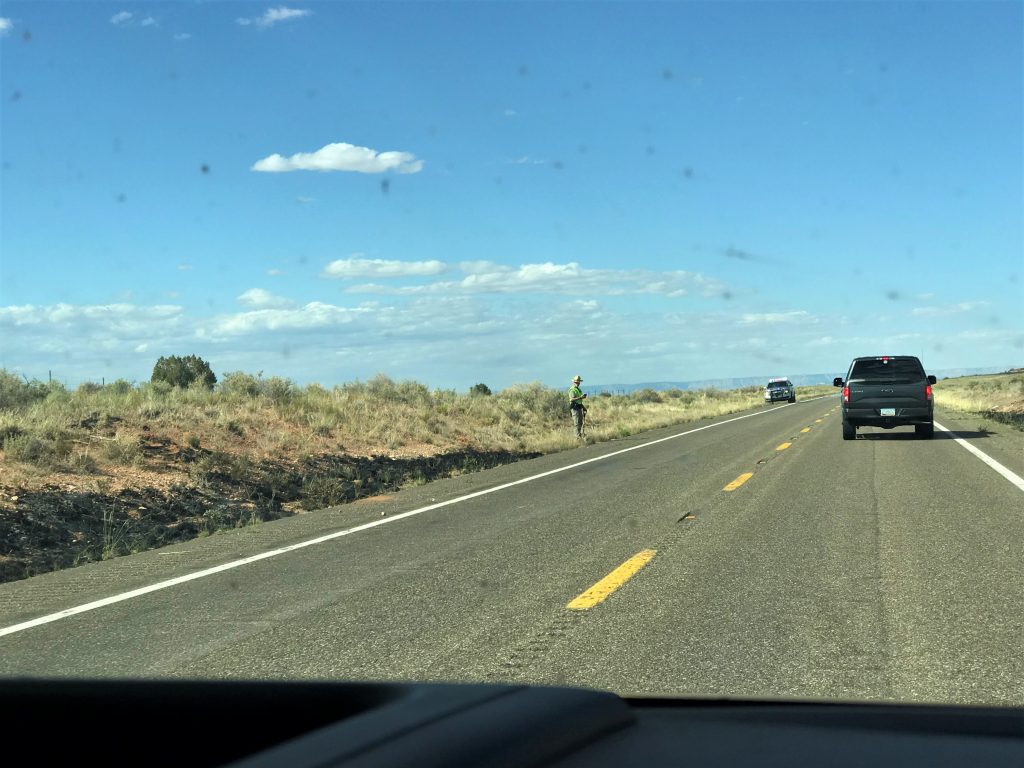
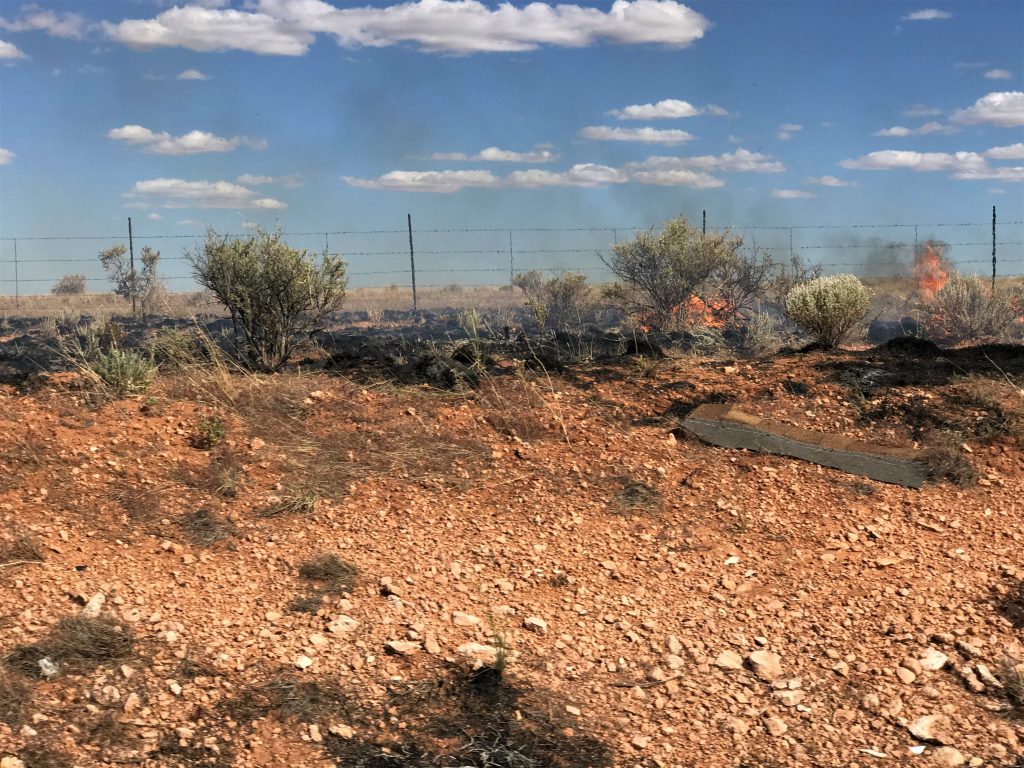
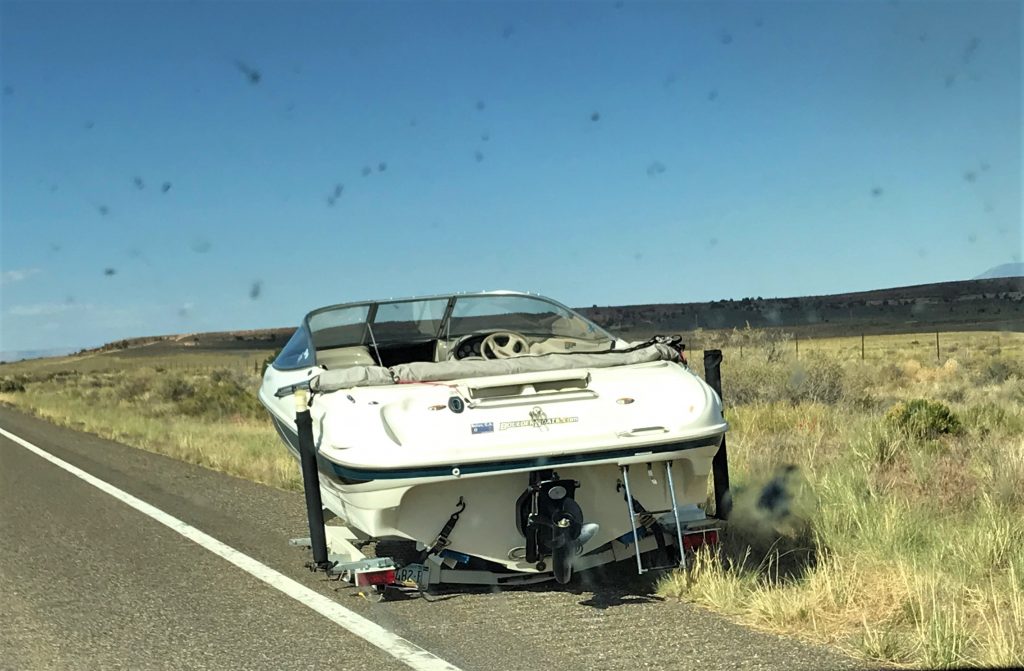

As I was working on this post (looking for statistics for our trail), I discovered more history! Pretty significant history at that! John D. Lee, the man the ferry spot was named after (Lee’s Ferry), was actually exiled here and forced to work the ferry as the only operator of the only crossing service in the Arizona Strip -that’s the part of the State that’s north of the Colorado River. It turns out that his exile distance was about 175 miles from where he was living. Read on if you’re curious. 😊
The following is straight from Smithsonianmag.com. Read and be amazed. I know I was! Especially since the only hint at this was the one plaque that mentions John D. Lee dying and someone else taking over the ferry service from his wife.
The Mountain Meadows Massacre almost brought the United States to war against the Church of Jesus Christ of Latter-day Saints, but only one man was brought to trial.
Relatives took him in from his alcoholic father and put him to work on their farm at a young age. At 20, Lee began courting Agatha Ann Woolsey in Vandalia, Illinois, and in the summer of 1833, she became Lee’s wife—the first of 19 for John D. Lee, who would soon commit himself to the nascent Latter-day Saints movement. He professed his commitment till the day he was executed for his part in the Mountain Meadows Massacre.
The massacre, in 1857, was one of the most explosive episodes in the history of the American West—not only were 120 men, women and children killed, but the United States and the Church of Jesus Christ of Latter-day Saints almost went to war. The denouncement of the so-called Utah War set Utah on the path to statehood and the Mormons on a long and fitful accommodation to secular authority, but the Mountain Meadows Massacre remained a focus of suspicion and resentment for decades. The church issued a statement on the role its members played in the killings in 2007, and opened its archives to three scholars—Richard E. Turley Jr., a Latter-day Saint historian, and Brigham Young University professors Ronald W. Walker and Glen M. Leonard—for their book, Massacre at Mountain Meadows, published in 2008. But in the aftermath of the massacre, only one participant was brought to trial, and that was John D. Lee.
Lee and his wife joined the Mormon settlement in Far West, Missouri, in 1837. That was only seven years after Joseph Smith founded the Church of Jesus Christ of Latter-Day Saints, but already the Mormons had been pushed out of Smith’s home state of New York and Ohio. Conflicts arose on grounds both religious and secular—Smith preached that other Christian churches had strayed; Mormons tended to vote as a bloc and to outwork others, concentrating both political and economic power—and the antagonism intensified to the point that the Mormons would be evicted from Missouri and Illinois, where Smith was lynched in 1844. To break a cycle of mutual suspicion, recrimination and violence, Brigham Young, who would succeed Smith, made plans to lead the remaining LDS members on an exodus to Utah, which was then part of Mexico—beyond the reach of U.S. law.
As a recent convert John D. Lee joined a secret church order called the Danites, which was charged with protecting and defending Mormons. When some Missourians opposed to Mormons’ voting started a riot at a Daviess County polling center in 1838, Lee and his fellow Danites stormed into the crowd with clubs flying. “I felt the power of God nerve my arm for the fray,” he later said. Buildings were burned, and Lee later admitted that he had participated in looting.
Lee was in Kentucky when Smith was killed in 1844, but when he returned to Illinois he learned of Young’s plan to head for Utah. Lee joined the migration through hostile and foreboding territory (which led to Young’s nickname of “the Mormon Moses”), and Young appointed him a Captain of Fifty—a ranking based on the number of people under one’s command. Lee served as a clerk and purchasing agent.

In July of 1847, a contingent of Mormons arrived in the Great Salt Lake valley and began a settlement that would grow to thousands in the coming years. Just six months later, Mexico ceded that land, and so much more of the West, to the United States. The old conflicts between religious and secular power arose again. President Millard Fillmore appointed Brigham Young governor of the Utah Territory and superintendent of Indian affairs, but the Mormons kept their distance from outsiders—including officials sent from Washington, D.C.
Non-Mormon locals immediately resented the appointment of Mormon surveyors and Indian agents, one of whom was John D. Lee. The agents’ relationship with the Native Americans, to whom they supplied tools, seed and proselytizing, aroused suspicion, especially among federal soldiers in the area. Mormon men, meanwhile, took offense when soldiers tried to socialize with Mormon women. Once the Army departed, “as many as one hundred Mormon women went with them,” according to Turley, Walker and Leonard. “Everybody has got one except the Colonel and Major,” one soldier said. “The Doctor has got three—mother and two daughters. The mother cooks for him and the daughters sleep with him.” The familiar cycle of suspicion and resentment built toward violence into the mid-1850s. Rumors that the LDS church was sanctioning polygamy—which turned out to be true—only made matters worse.
In April 1857, a Mormon apostle named Parley P. Pratt was murdered in Arkansas by the legal husband of one of Pratt’s plural wives. Mormons in Utah took the news as another example of religious persecution and considered Pratt a martyr. They began stockpiling grain, anticipating a violent and apocalyptic encounter with the people they called “Americans.” The Army, they believed, was about to invade the Utah Territory, (an invasion that did not come until the following year in the Utah War) and Young tried to enlist Paiute Indians from nearby Mountain Meadows in the fight. He also warned “mobocrats” to steer clear of Mormon territory or they’d be met by the Danites, who would form a line of defense in villages near Mountain Meadows. Then he declared martial law, making it illegal to travel through the territory without a permit.
At the same time, several groups of emigrants from northwest Arkansas, mostly families that in total numbered between 100-200 people, were making their way to California by wagon trains. Joining up in Salt Lake City, the Baker-Fancher party restocked their supplies, but for the rest of their trip, Mormons were prohibited from selling any goods to wagon trains. Lee and another Mormon man, apostle George A. Smith, met with the Paiutes, a tribe of Native Americans in the region, and warned them that the encroaching Americans threatened both them and the Mormons; rumors circulated that members of the Baker-Fancher train might poison water and cattle along their way.
The Baker-Fincher party was most likely unaware of the new requirement for a permit to cross Utah. They grazed their cattle on Mormons’ land as they passed through, stoking anger. Lee later said that members of the train “swore and boasted openly…that Buchanan’s whole army was coming right behind them, and would kill every… Mormon in Utah.” Others reported that the men of the Baker-Fancher party were respectful.
Throughout the summer of 1857, the Mormons’ sense of impending invasion only deepened. Parades through Cedar City included young men bearing banners reading, “A terror to evil doers,” according to Turley, Walker, and Leonard. Along the southern settlements, Mormons were urged to “shore up alliances with local Indians.” When Lee came into the vicinity of the Baker-Fancher train, he said, he saw a large group of Paiutes “in their war paint, and fully equipped for battle.” Lee claimed that he had orders from Isaac C. Haight, a leader of several Mormon congregations that formed the Iron County Militia, “to send other Indians on the war-path to help them kill the emigrants.” Haight and Lee gave weapons to the Paiutes.
The Baker-Fancher party was camped at Mountain Meadows on September 7 when Paiutes (and some Mormons dressed as Paiutes to conceal their Mormon affiliation) attacked. The emigrants circled the wagons, dug trenches and fought back—but as the siege continued for five days, they began to run out of ammunition, water and provisions. The Mormon attackers concluded that the emigrants had figured out their ruse—and feared that word of their participation would hasten an assault by the Army. It was then that militia commander William H. Dame ordered his men to leave no witnesses. The emigrants were to be “decoyed out and destroyed with the exception of the small children,” who were “too young to tell tales,” according to another militia commander, Major John H. Higbee, who relayed the orders to Lee.
On September 11, John D. Lee and a group of militiamen approached the camp under a white flag and offered a truce, with assurances that Lee and his men would escort the emigrants to safety in Cedar City. All they’d have to do is leave their livestock and possessions to the Paiutes. Having no good options, the emigrants, about 120 men, women and children, laid down their weapons and followed Lee and the militia away from the camp in three groups—the last comprising adult males. It was over quickly. The Arkansas men were shot at point-blank range; the women and children ahead were slaughtered by bullets and arrows in an ambush party. No one over the age of seven survived. The victims were hastily buried. Locals auctioned off or distributed their possessions and took in the surviving 17 young children.
The Army did arrive in Utah, in 1858, but no war ensued—Young and the Buchanan administration negotiated an agreement in which Young would give way to a new governor. The following year, troops led by Major James H. Carleton went to Mountain Meadows to investigate the killings and found the bones of “very small children.” The soldiers gathered skulls and bones and erected a cairn with the words, “Here 120 men, women, and children were massacred in cold blood early in September, 1857. They were from Arkansas.” They marked the site with a cross inscribed, “Vengeance is mine. I will repay, saith the Lord.”
Lee and the other leaders swore that they would never reveal their parts in the massacre, and Lee himself told Brigham Young that the Paiutes had been responsible for it—an explanation that became the official position of the LDS church for generations. In a report to Congress, Major Carleton blamed Mormon militiamen and church leaders for the massacre. Young excommunicated both Lee and Haight for their roles, but only Lee faced charges. After a first trial ended in a mistrial, Lee was convicted in 1877 and sentenced to death by firing squad.
Lee claimed that he was a scapegoat, and that other Mormons were more directly involved in the planning and in the killing. And although he maintained at first that Young was unaware of the massacre until after it took place, Lee would later state, in his Life and Confessions of John D. Lee, that the massacre occurred “by the direct command of Brigham Young.” And on the morning of his execution, Lee would write that Young was “leading the people astray” and that he was being sacrificed “in a cowardly, dastardly manner.”
“I did everything in my power to save that people, but I am the one that must suffer,” Lee wrote. He closed by asking the Lord to receive his spirit, and then he was taken to the massacre site. As many as 300 onlookers had gathered. On March 28, 1877, John Doyle Lee, wearing a coat and scarf, took a seat atop the coffin where his body would lie. A photographer was nearby. Lee asked that whatever photograph was made be copied for his last three wives. The photographer agreed. Lee posed.
/https://public-media.si-cdn.com/filer/20120229122056john-d-lee-execution-mormon.jpg)
And then an hour before noon, he shook hands with the men around him, removed his coat and hat and faced the five men of the firing party.
“Let them shoot the balls through my heart!” Lee shouted. “Don’t let them mangle my body!”
On U.S. Marshal William Nelson’s command, shots rang out in the ravine where so many shots had rung out twenty years before, and Lee fell back onto his coffin, dead.
On April 20, 1961, a joint council was held with the First Presidency and the Council of Twelve Apostles of the Church of Jesus Christ of Latter-day Saints. “After considering all the facts available,” the Church authorized “reinstatement to membership and former blessings to John D. Lee.” The reinstatement puzzled many. But four decades later, the church claimed full responsibility for the incident that led to Lee’s execution. At a memorial ceremony on September 11, 2007, the sesquicentennial anniversary of the Mountain Meadows Massacre, LDS Apostle Henry B. Eyring read the church’s official statement to gatherers:
“We express profound regret for the massacre carried out in this valley 150 years ago today, and for the undue and untold suffering experienced by the victims then and by their relatives to the present time. A separate expression of regret is owed the Paiute people who have unjustly borne for too long the principal blame for what occurred during the massacre. Although the extent of their involvement is disputed, it is believed they would not have participated without the direction and stimulus provided by local church leaders and members.”
